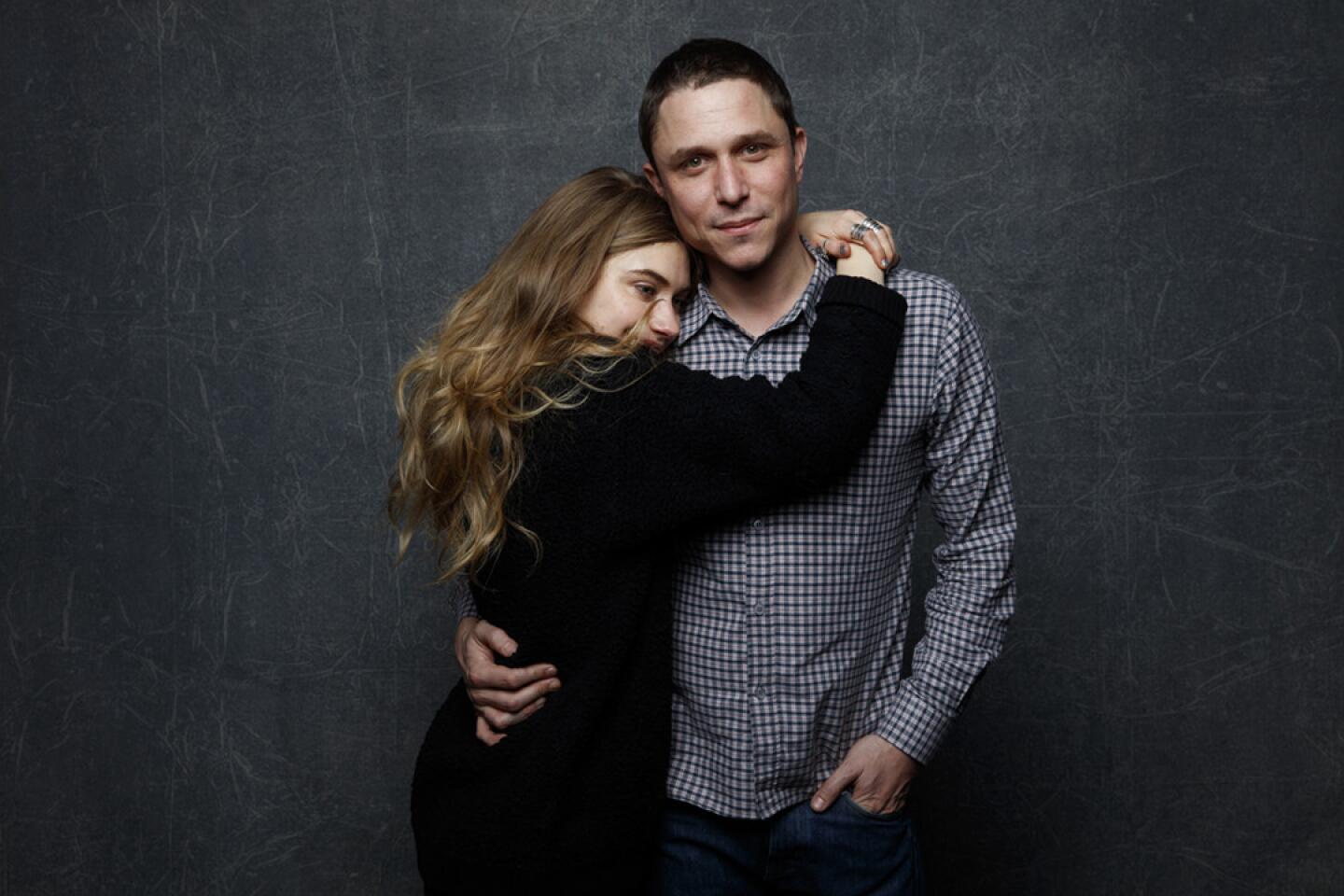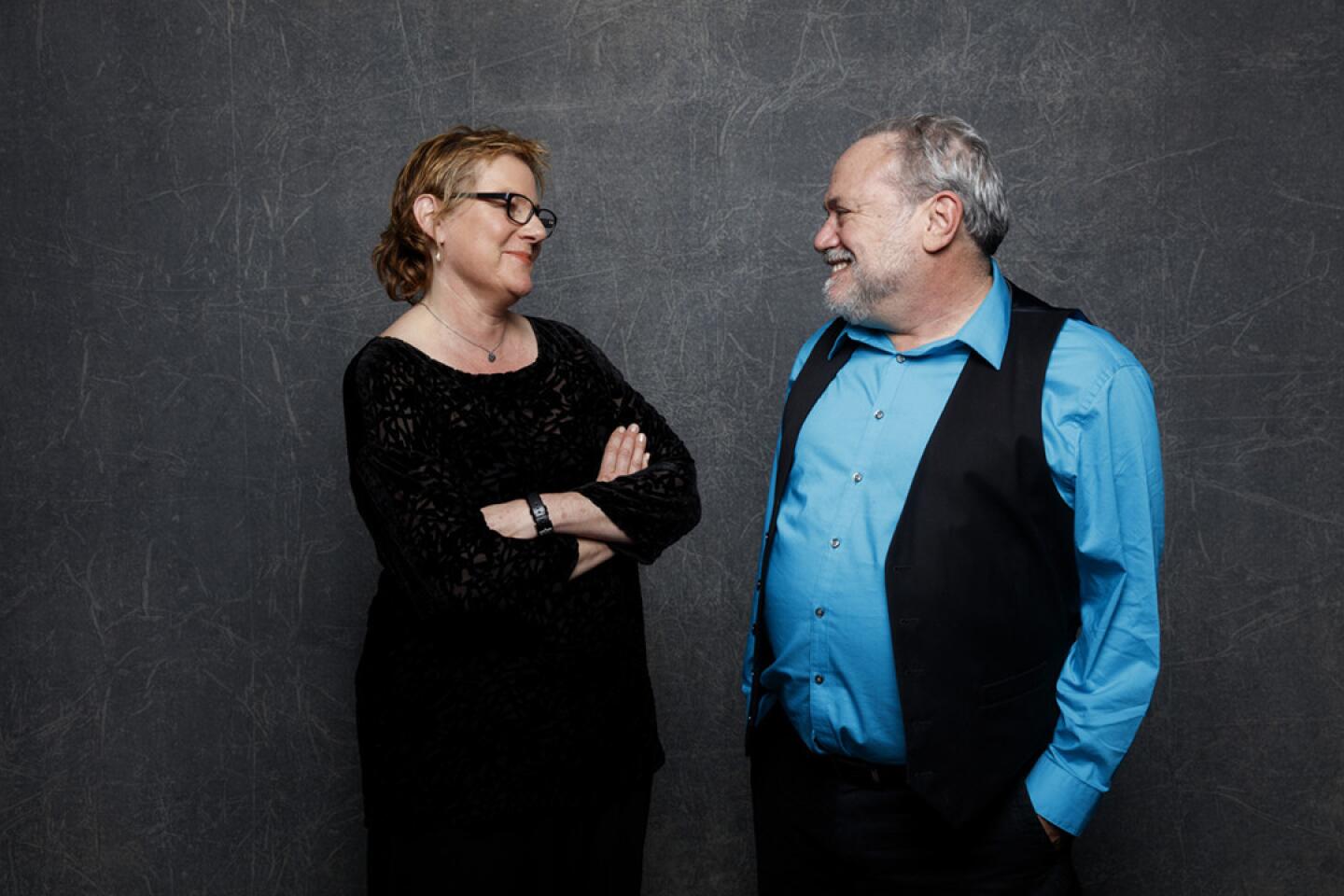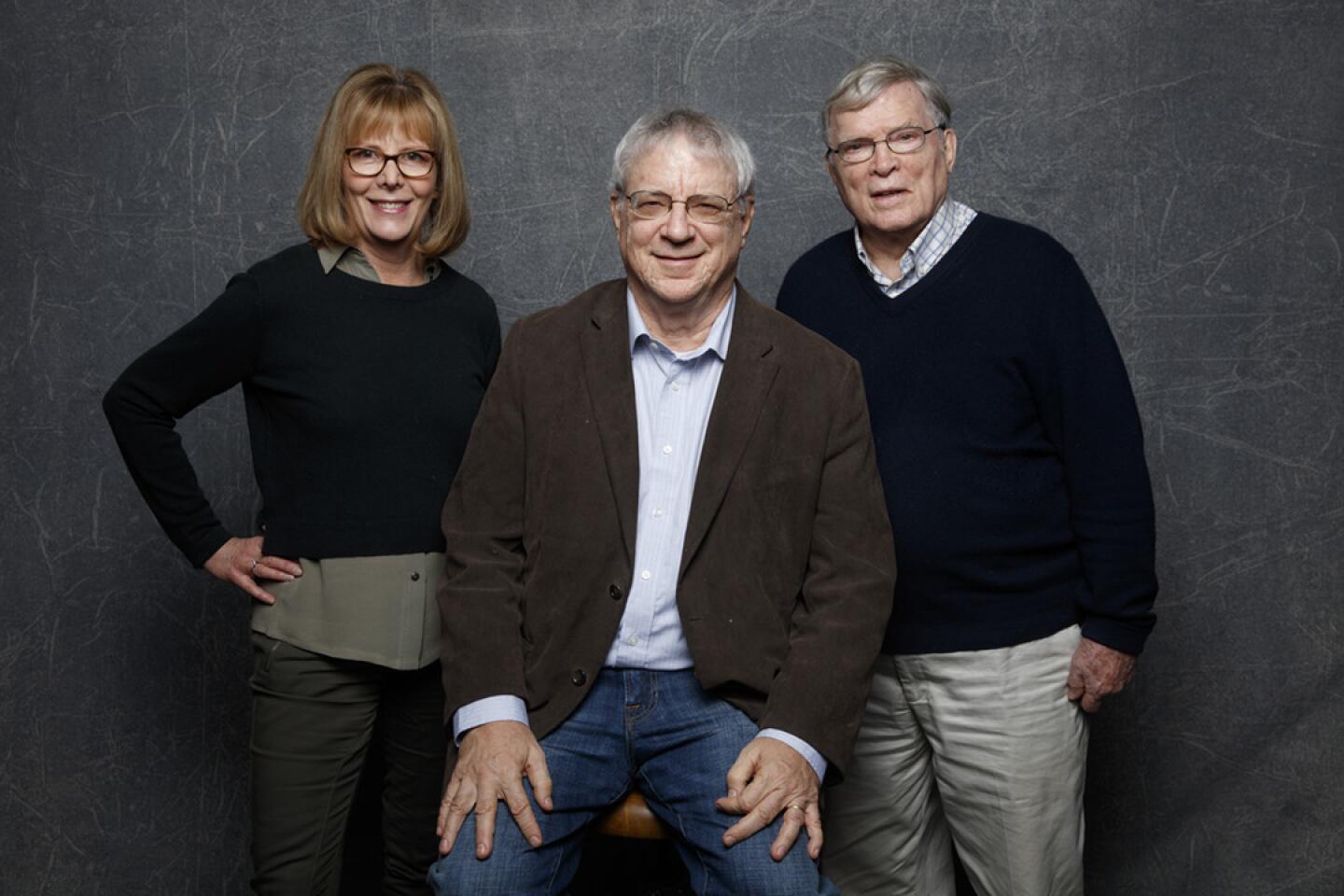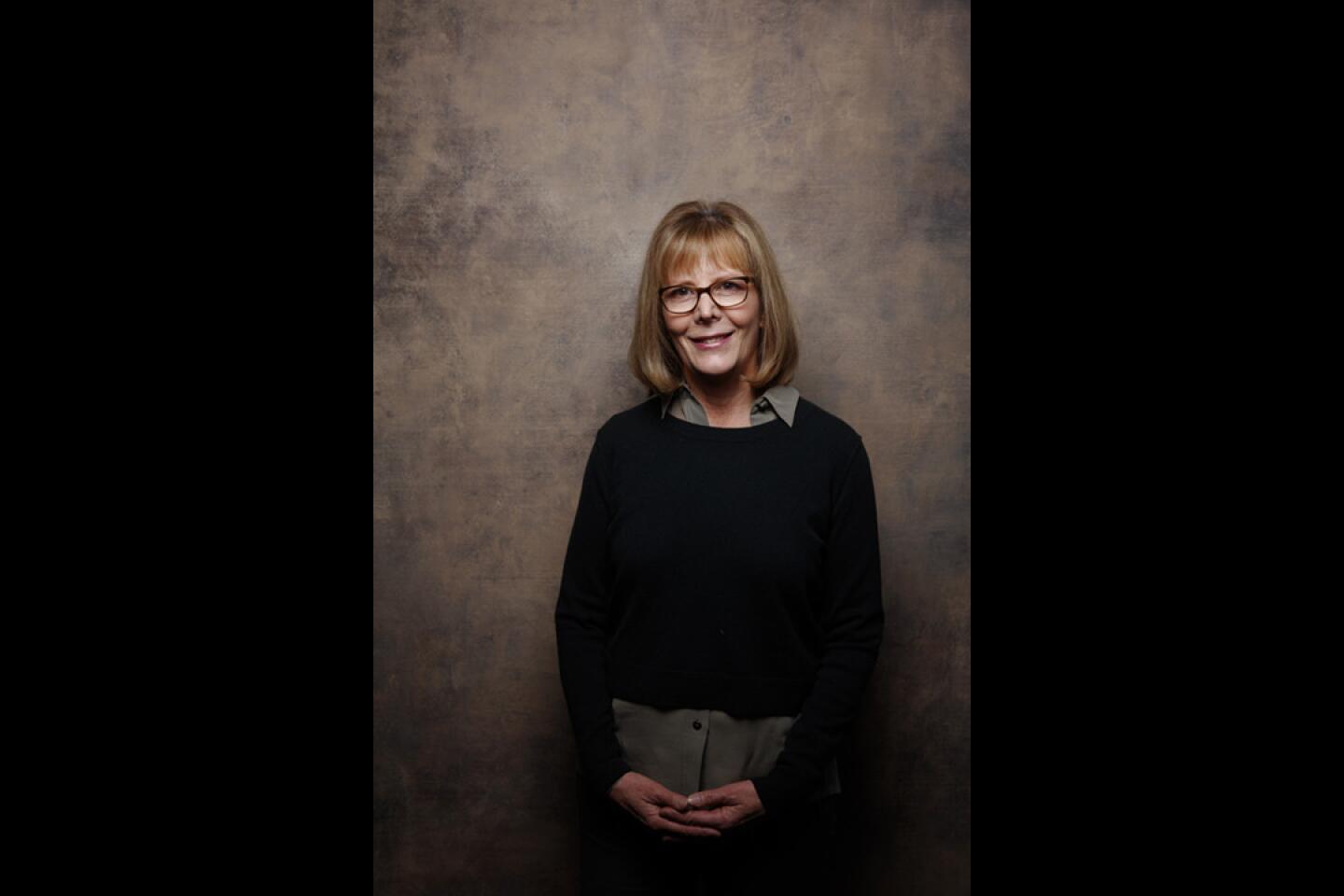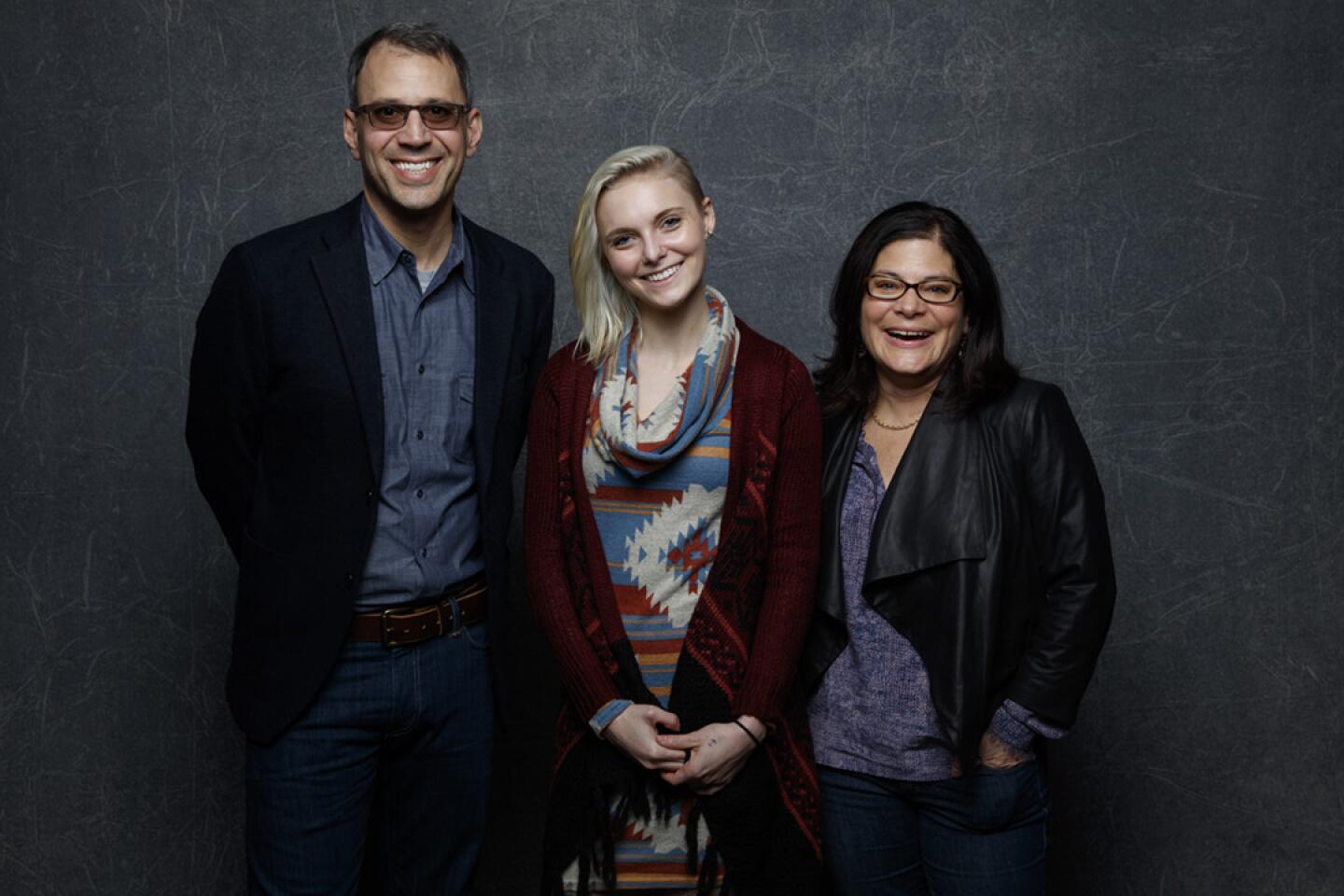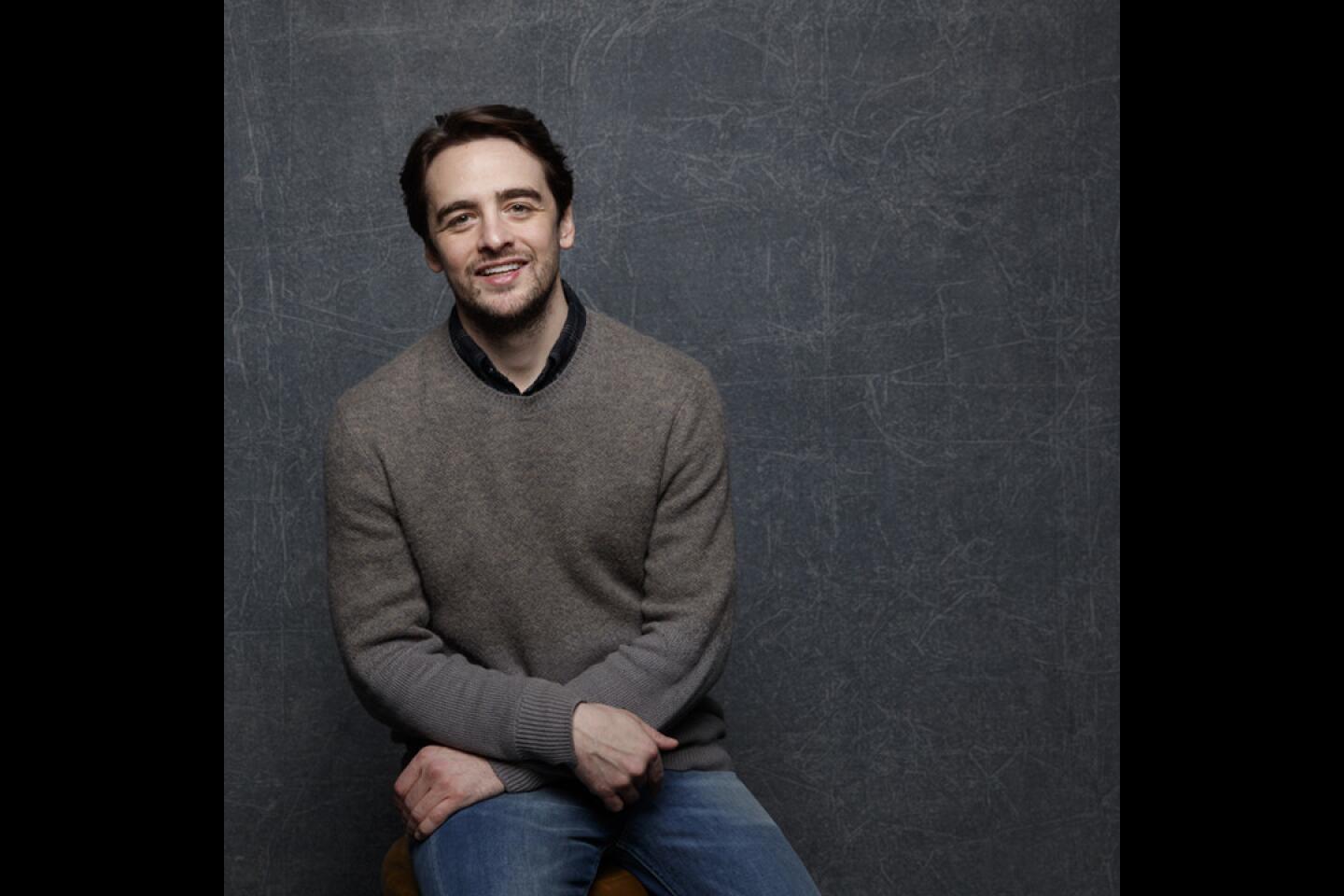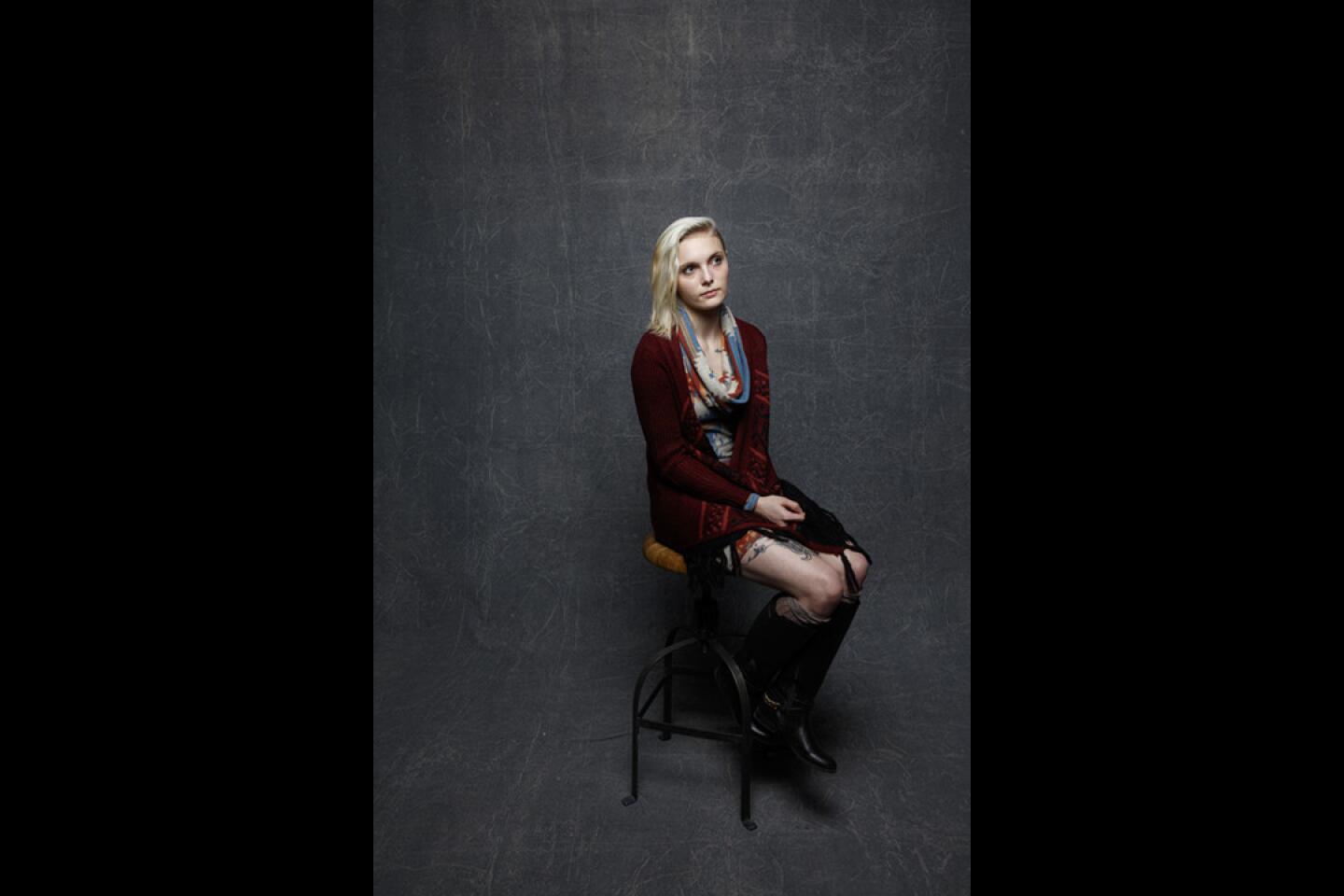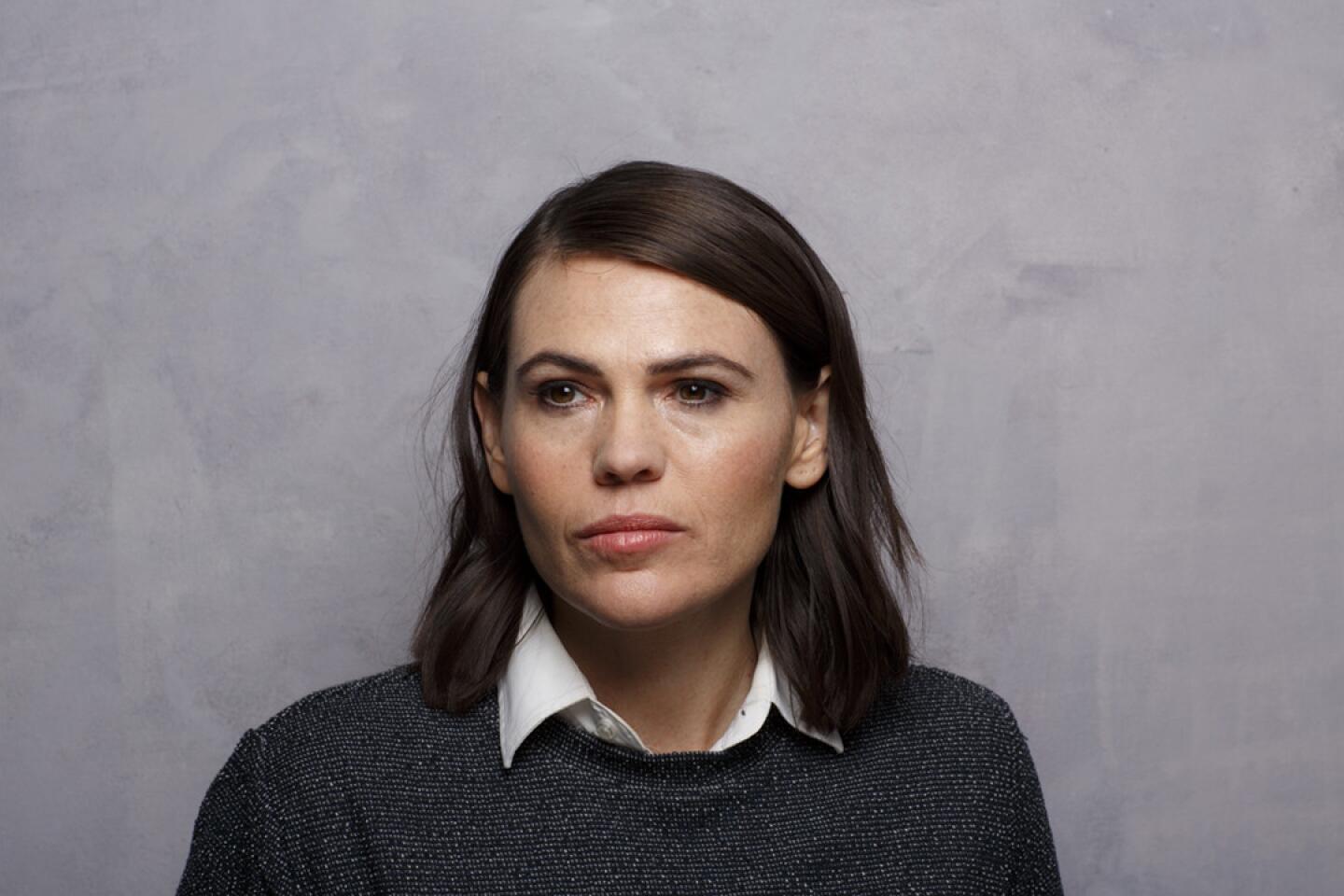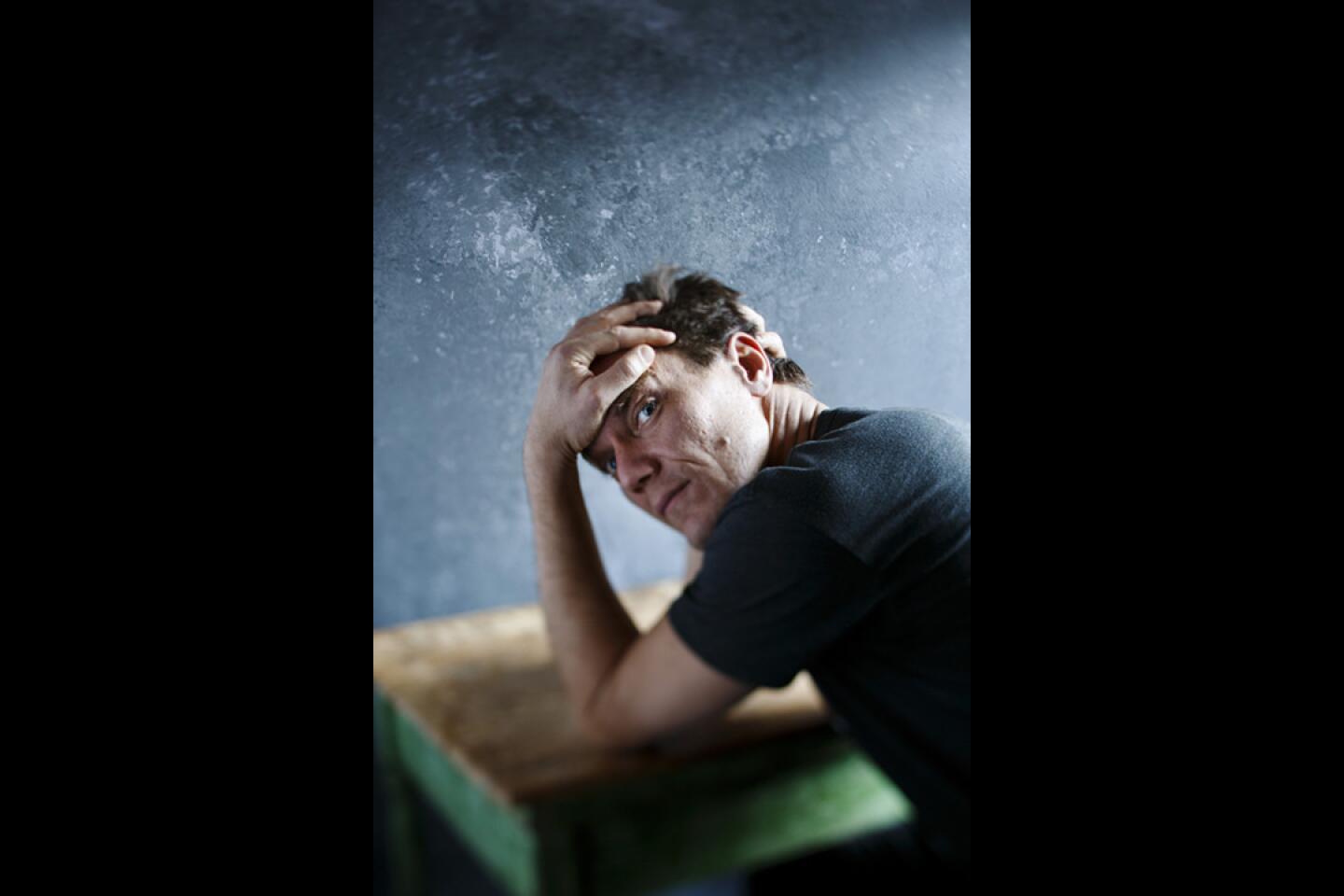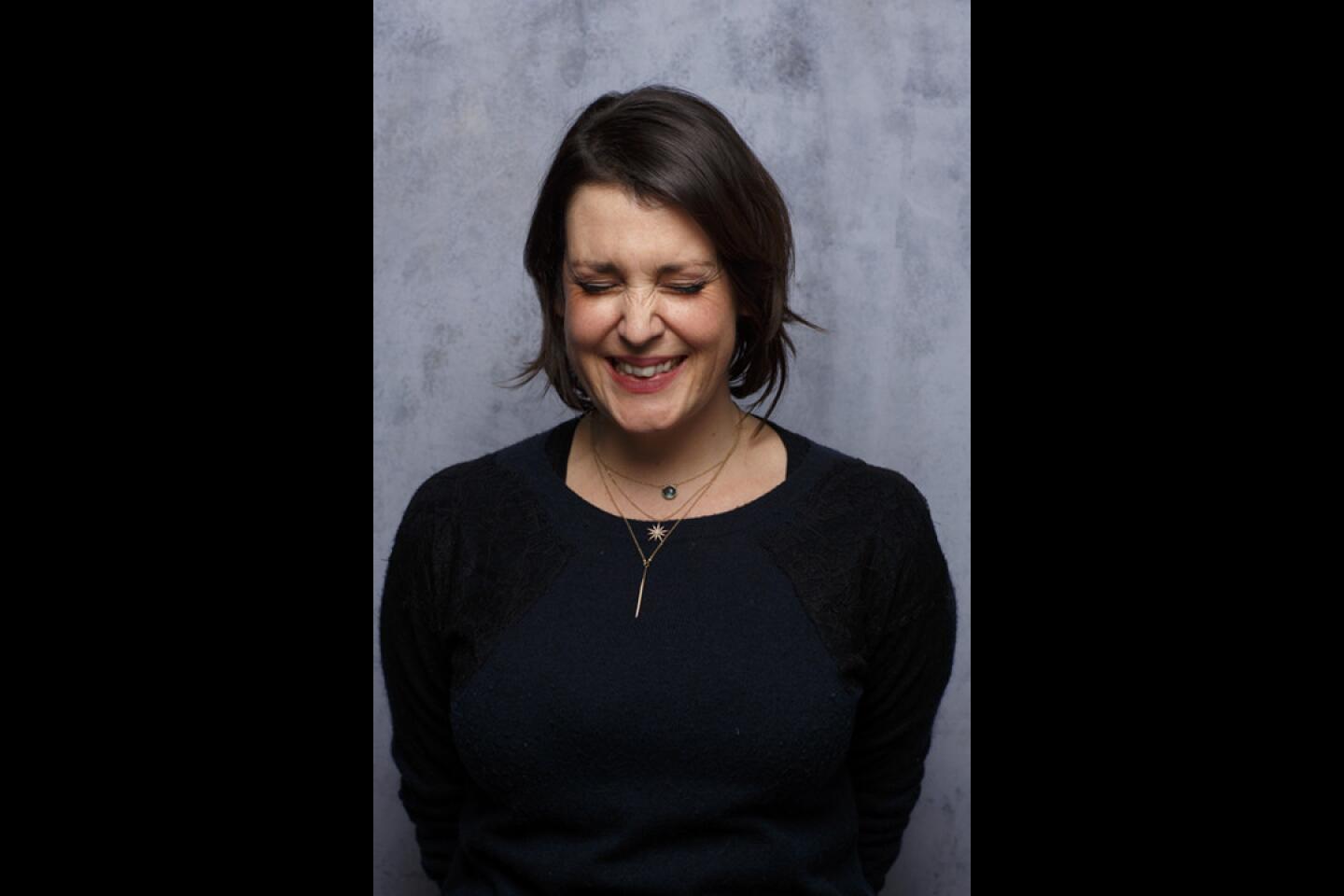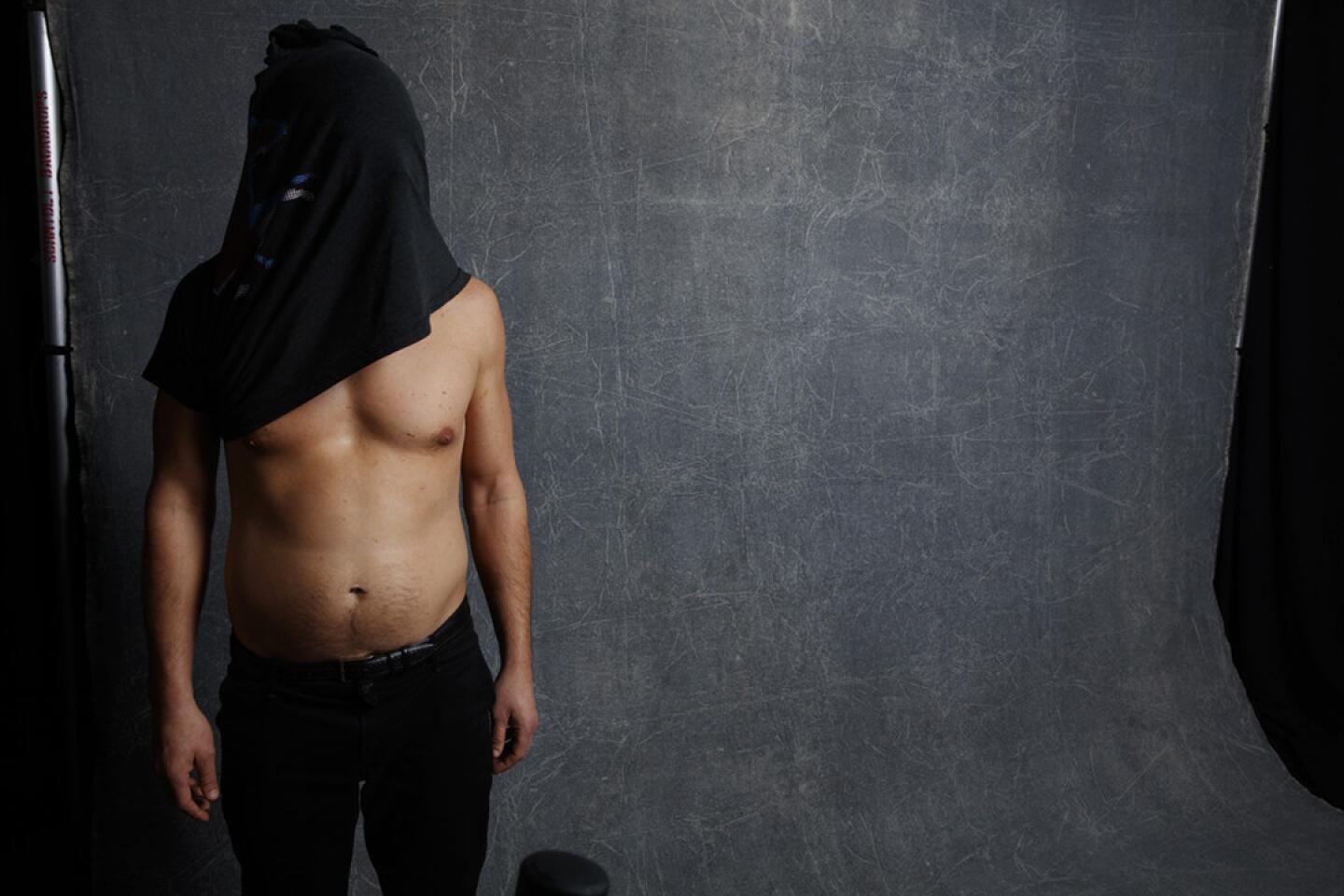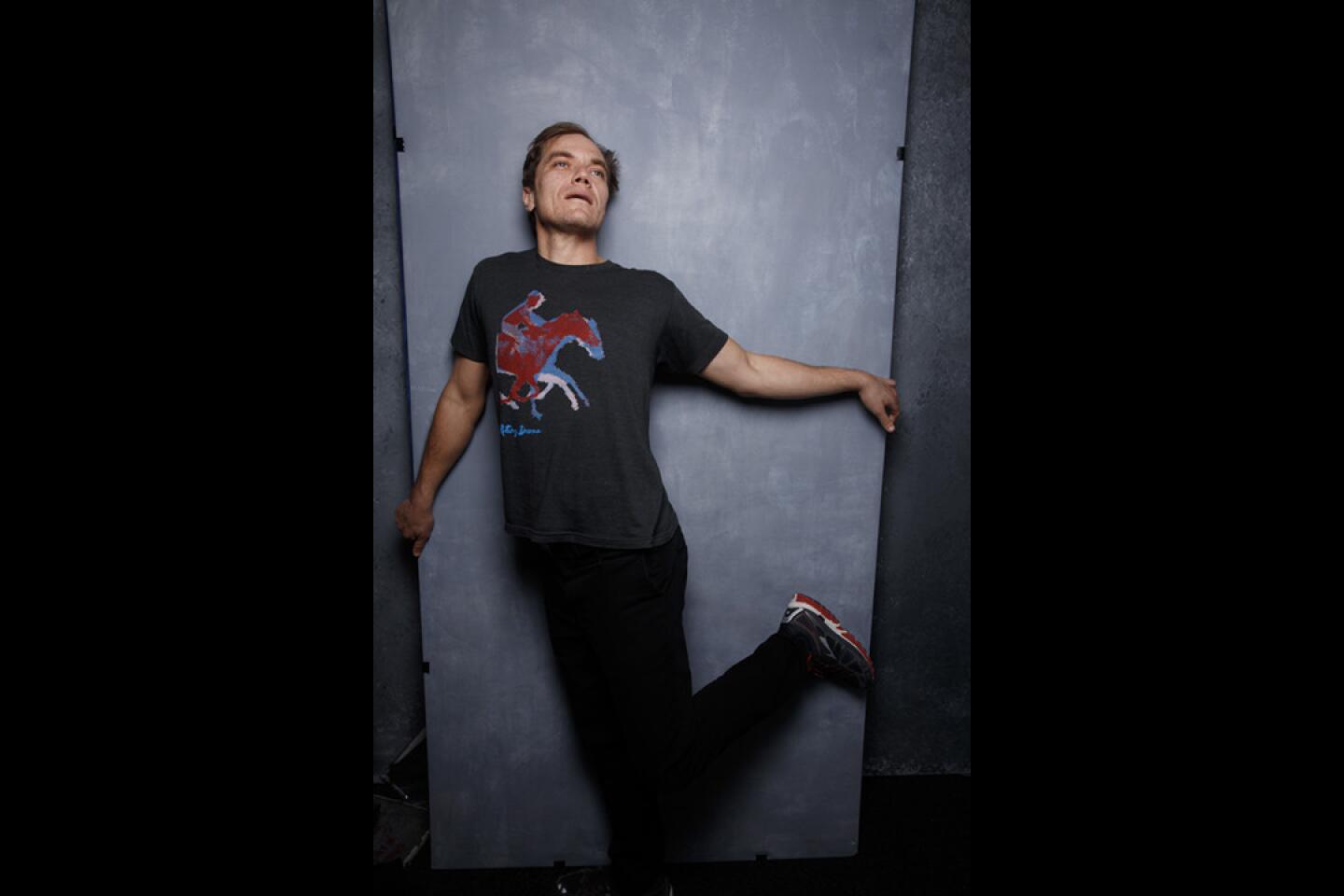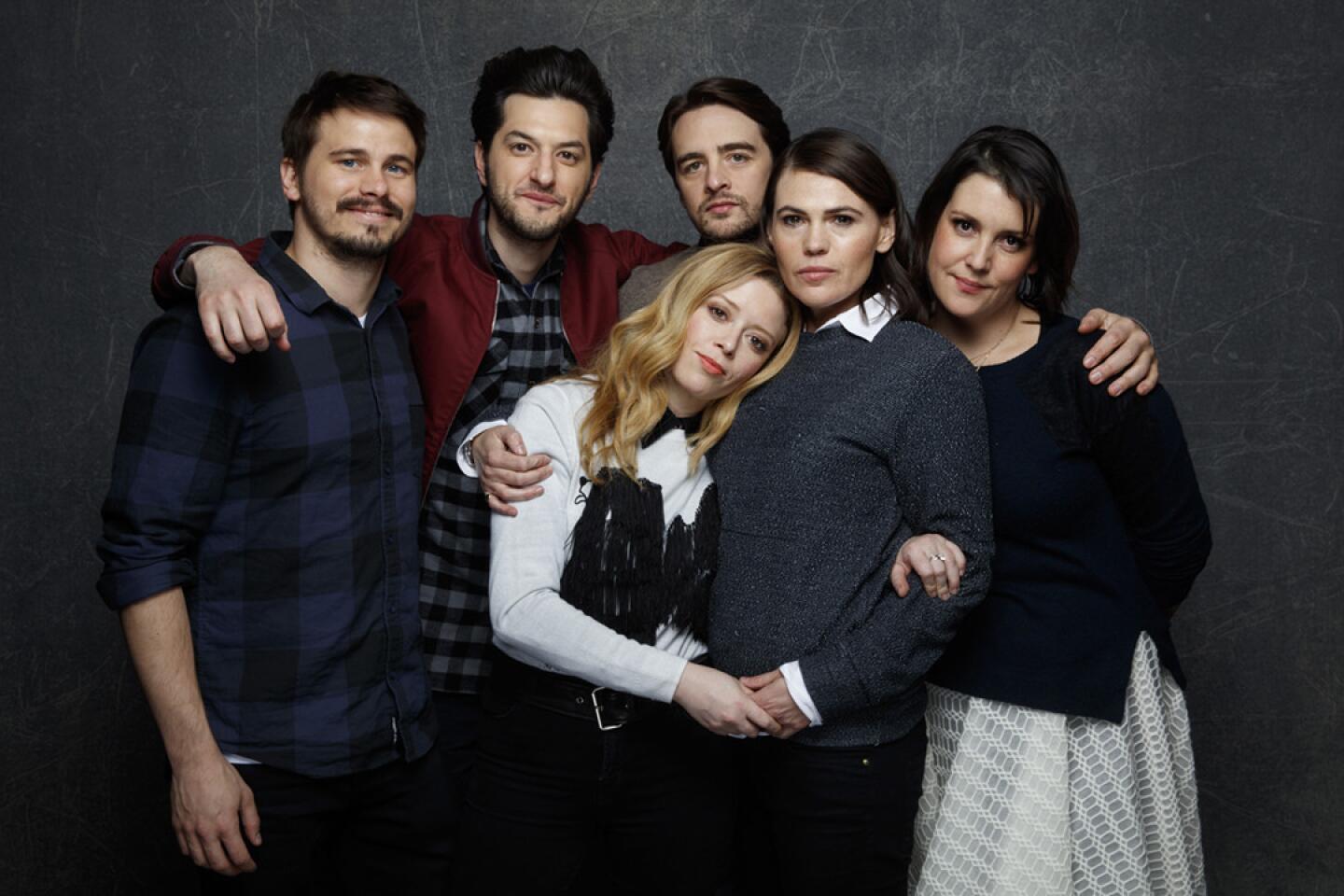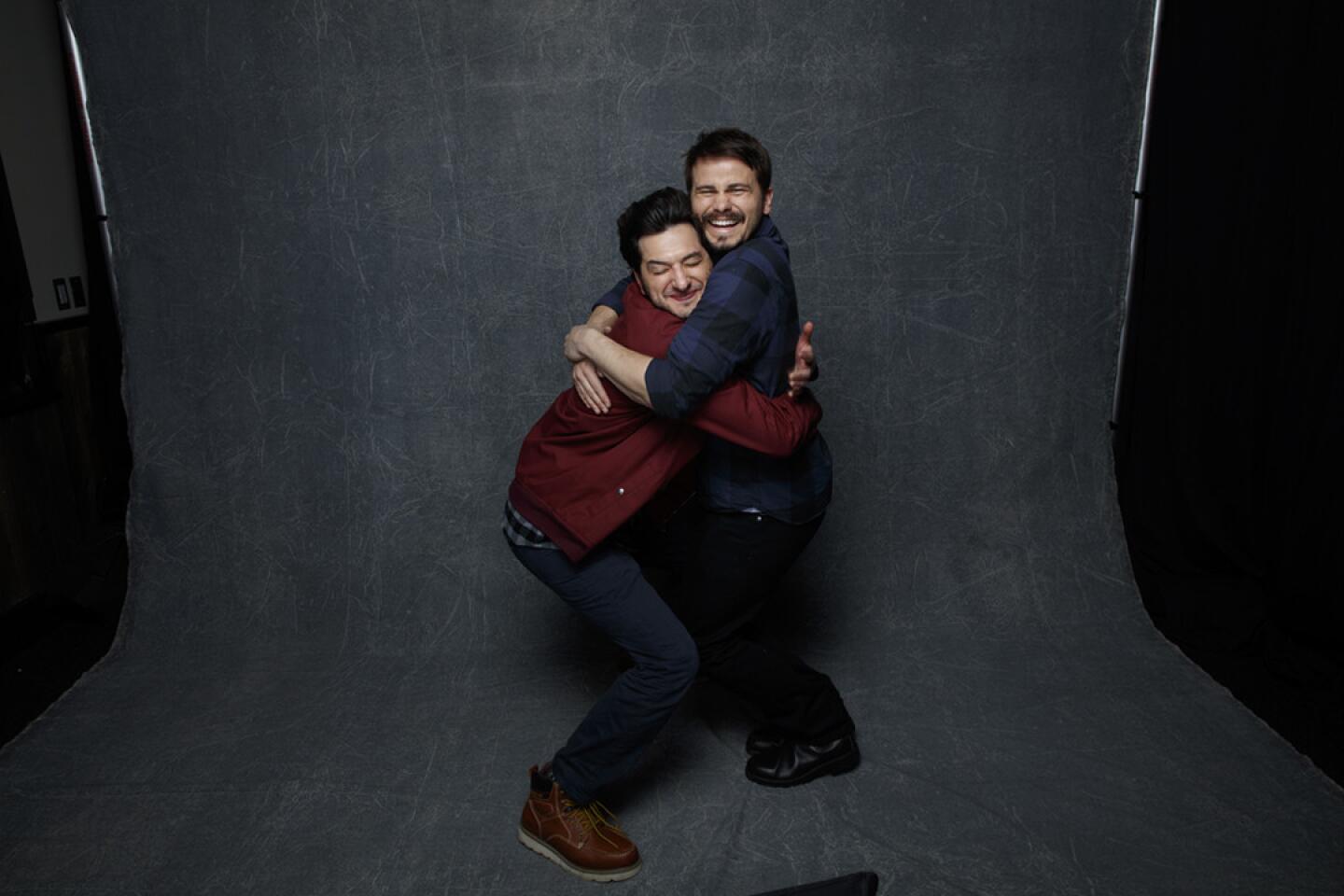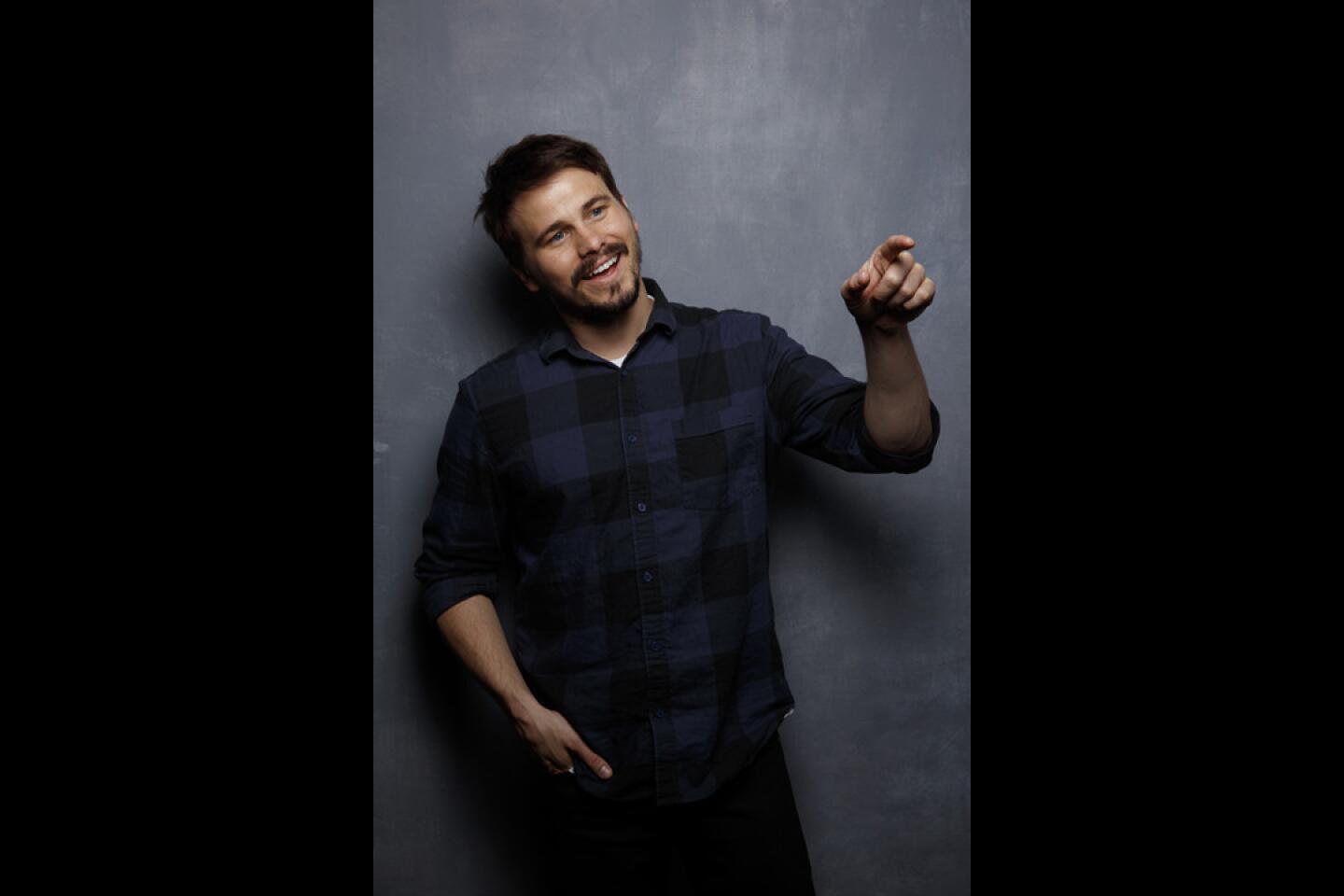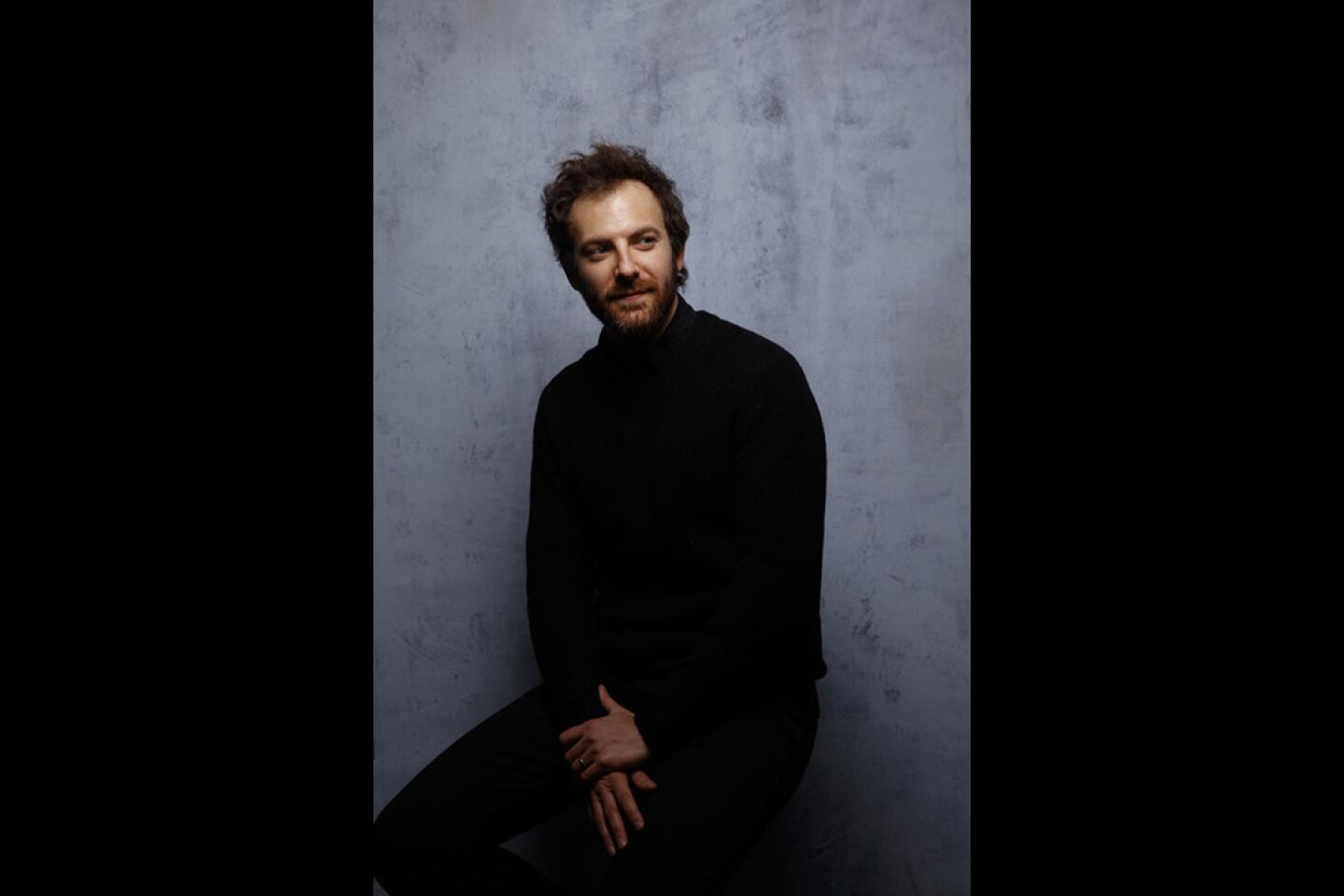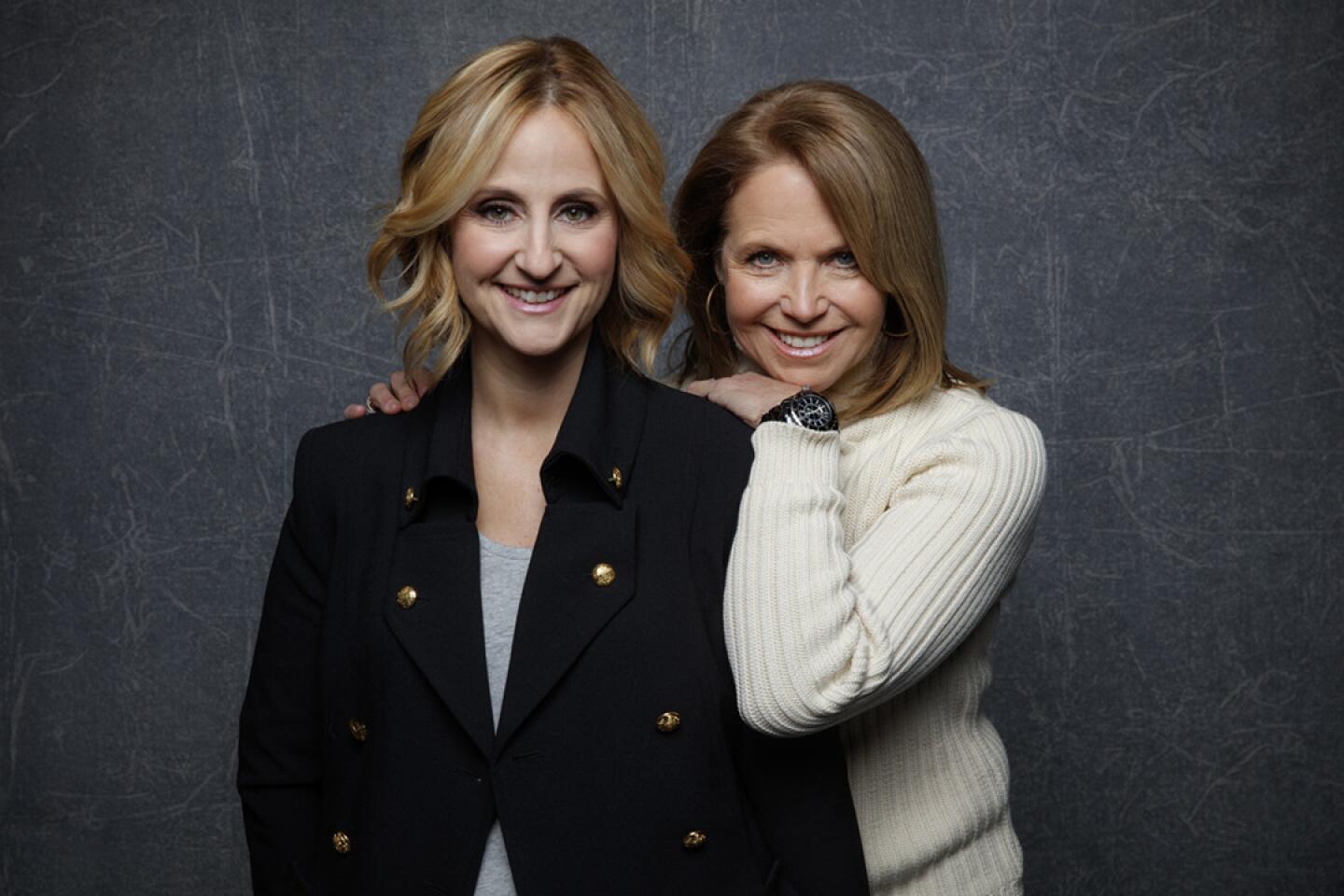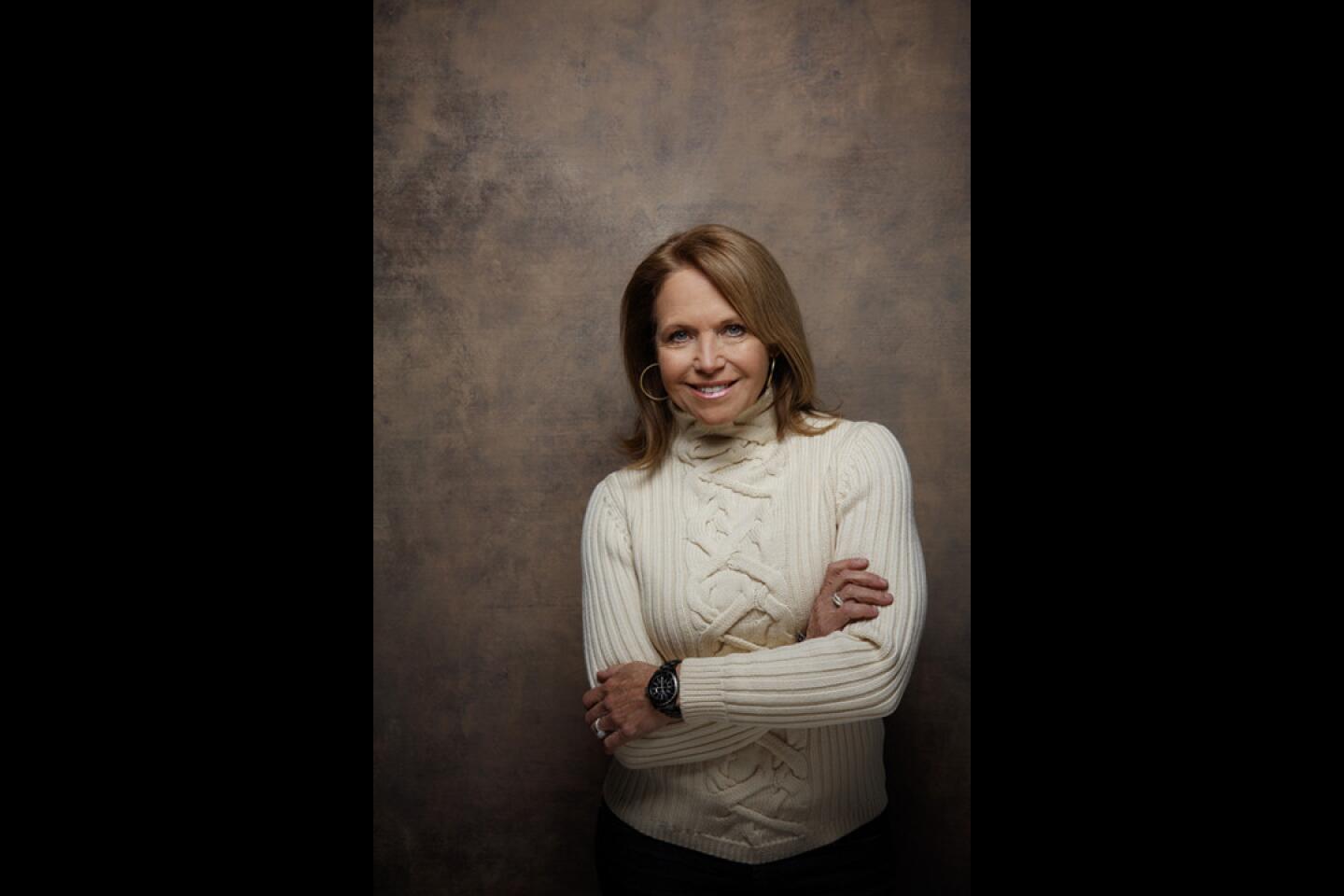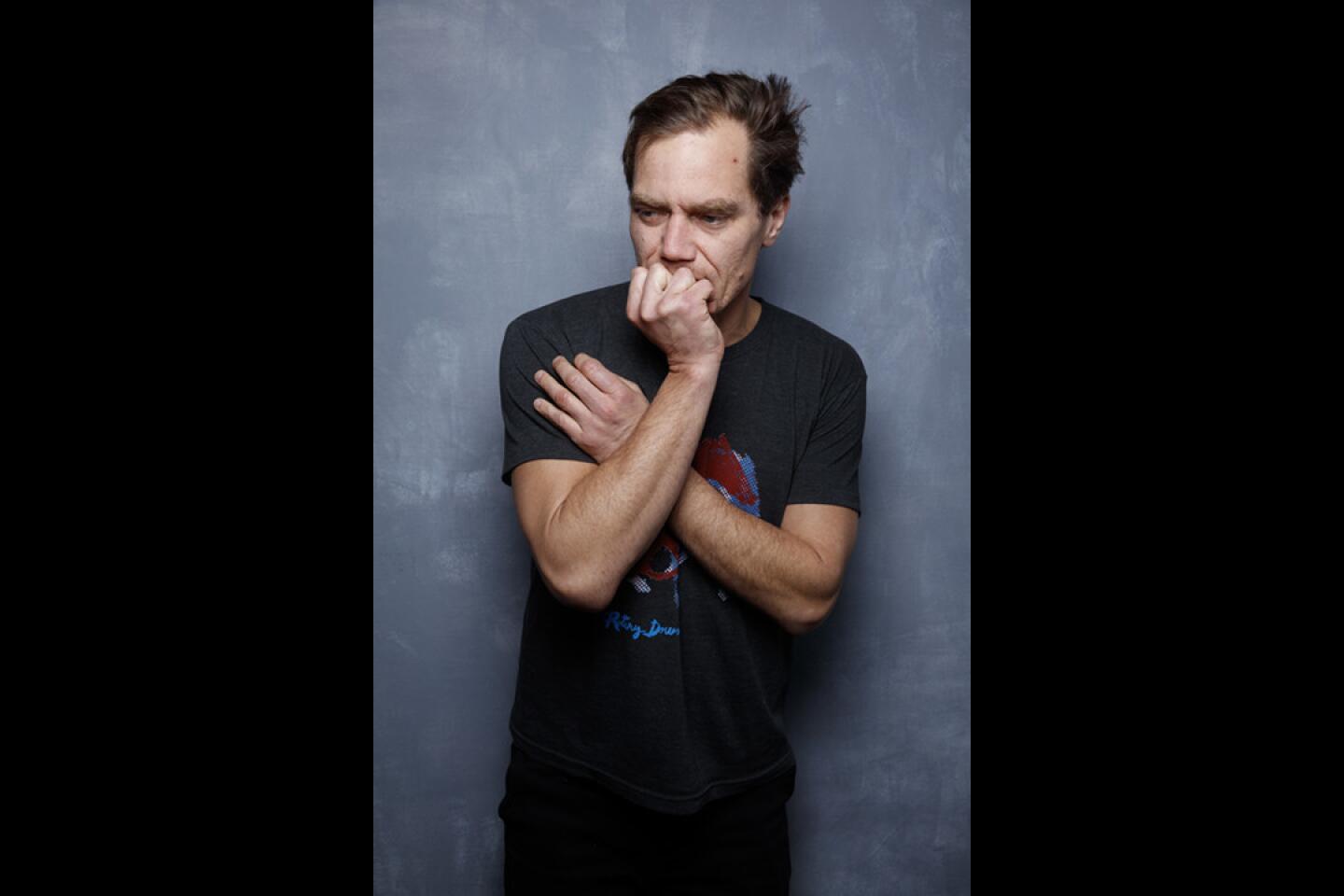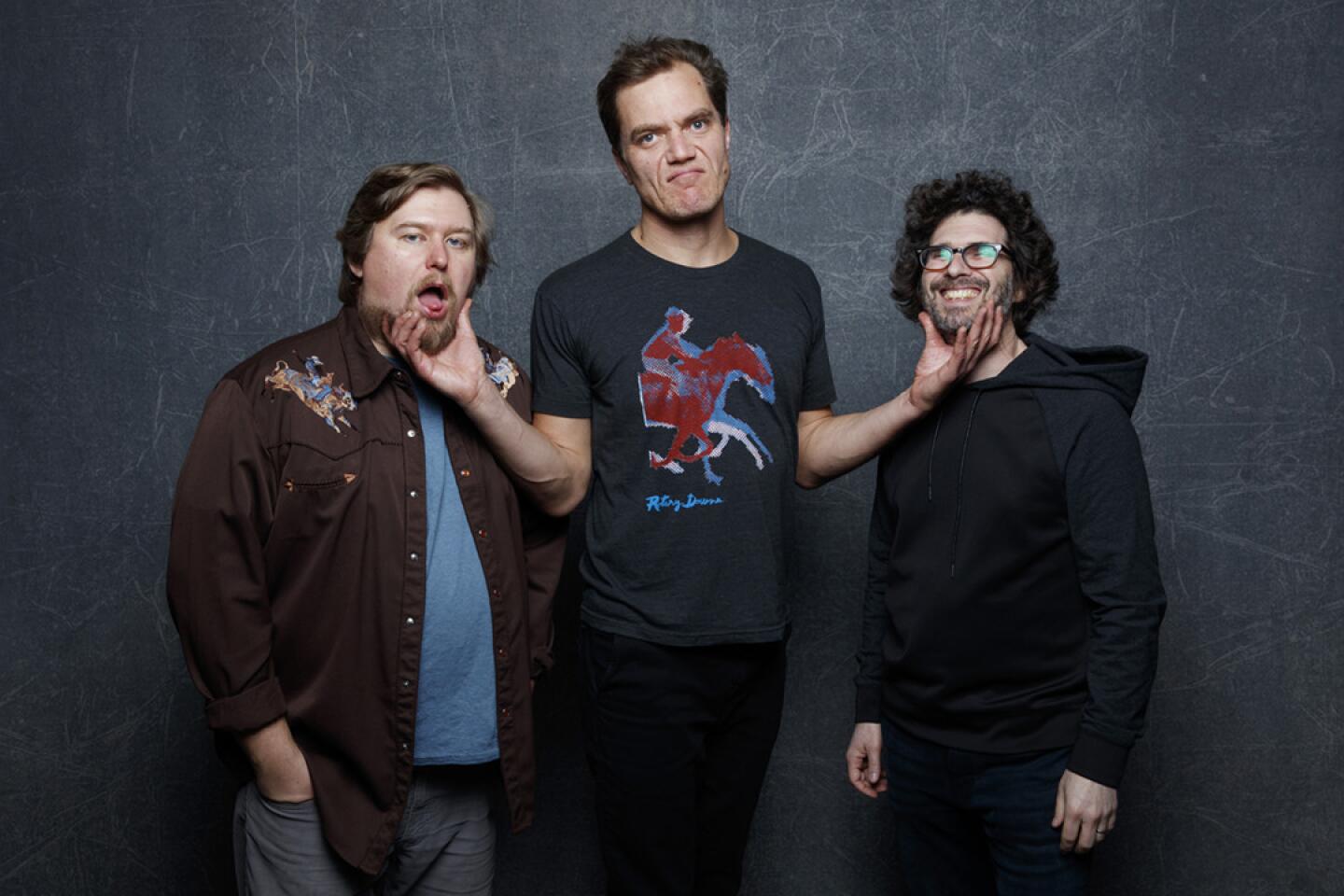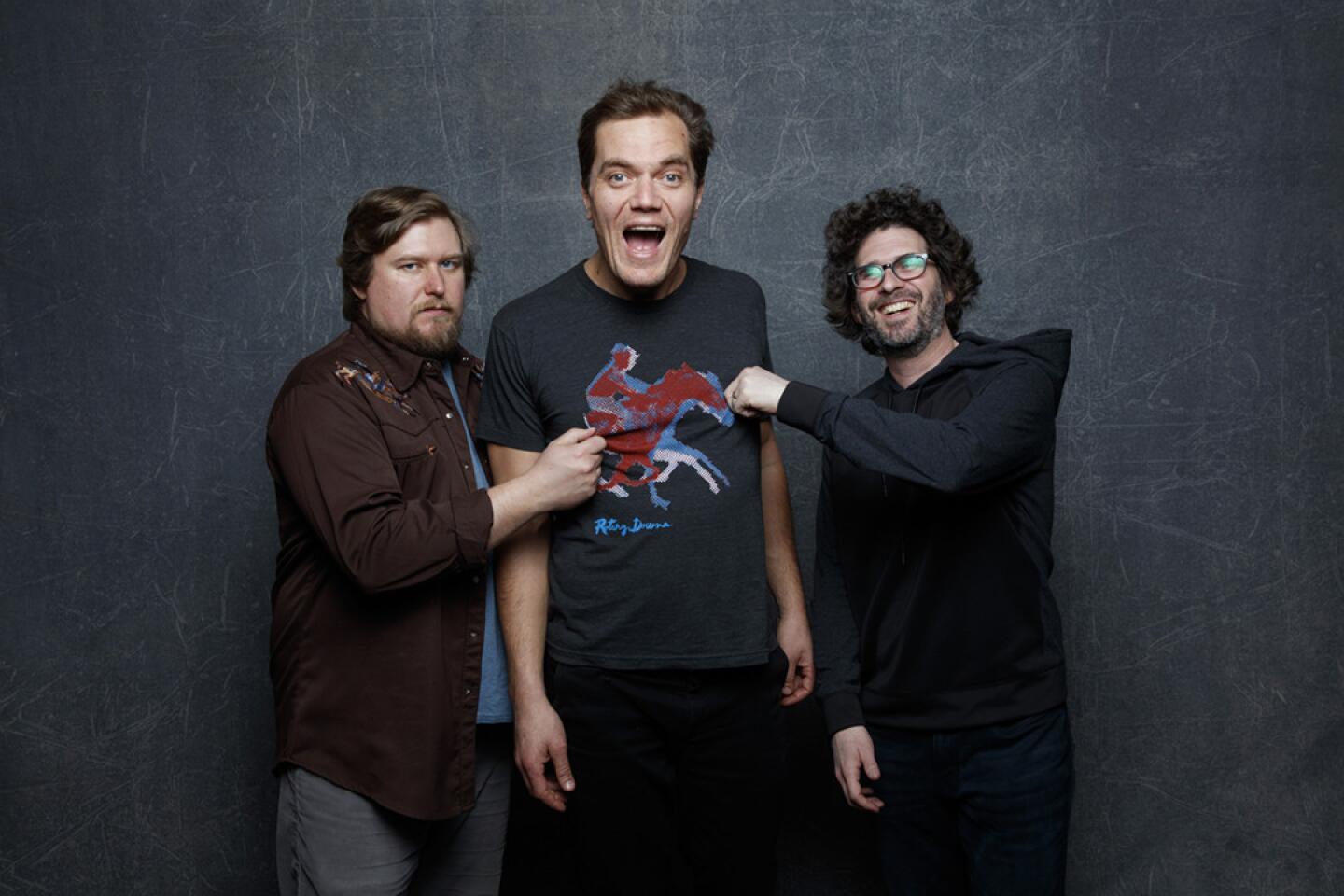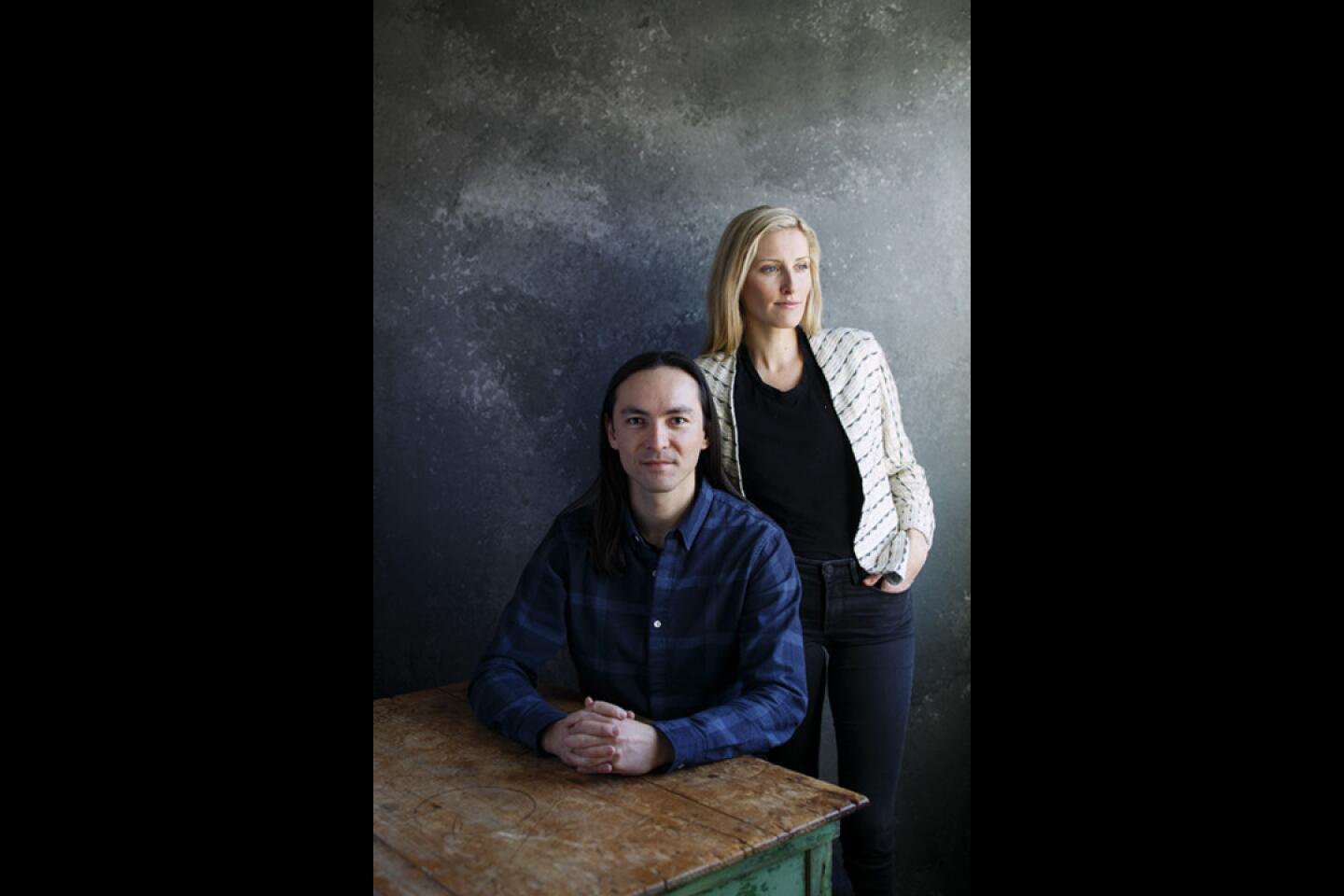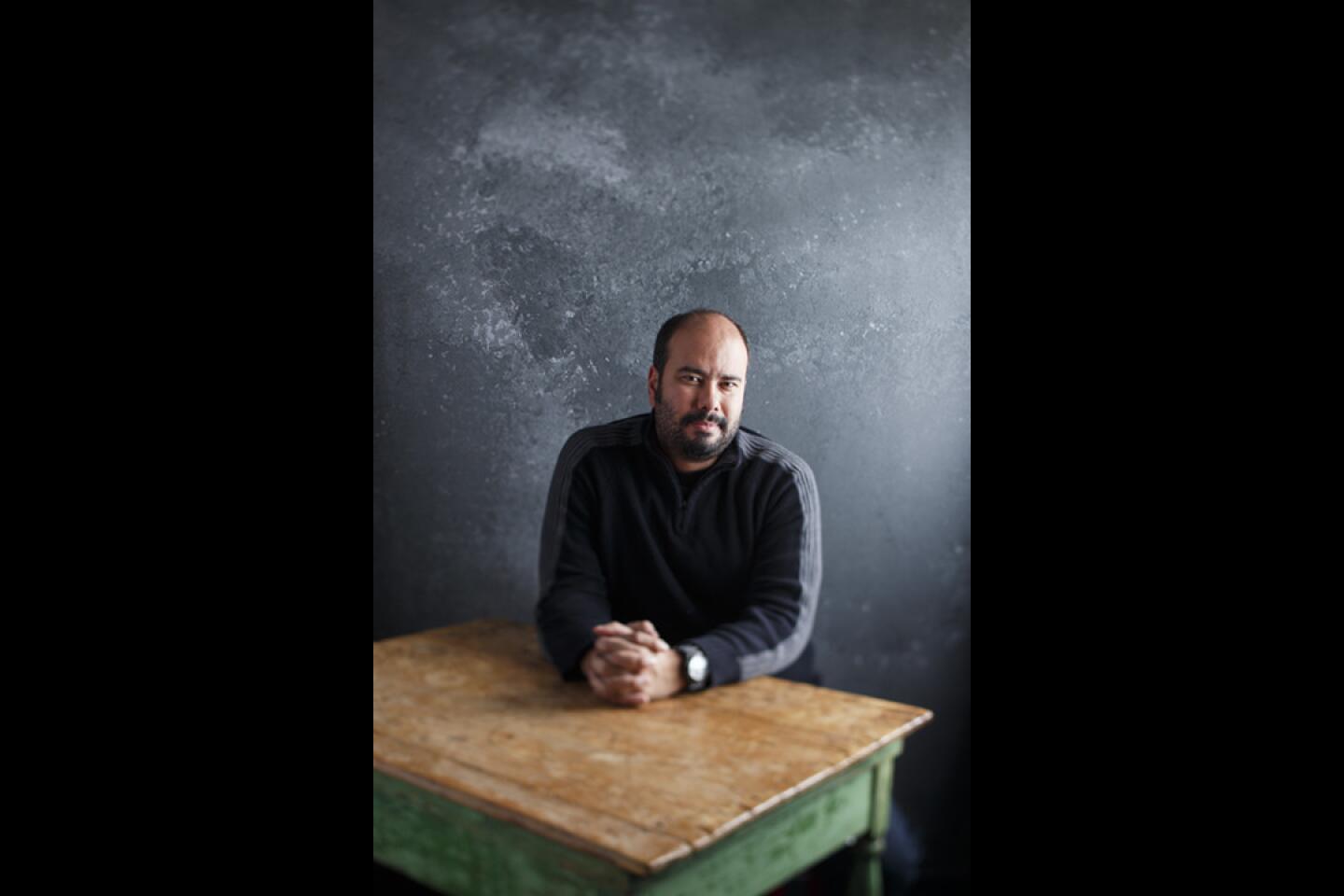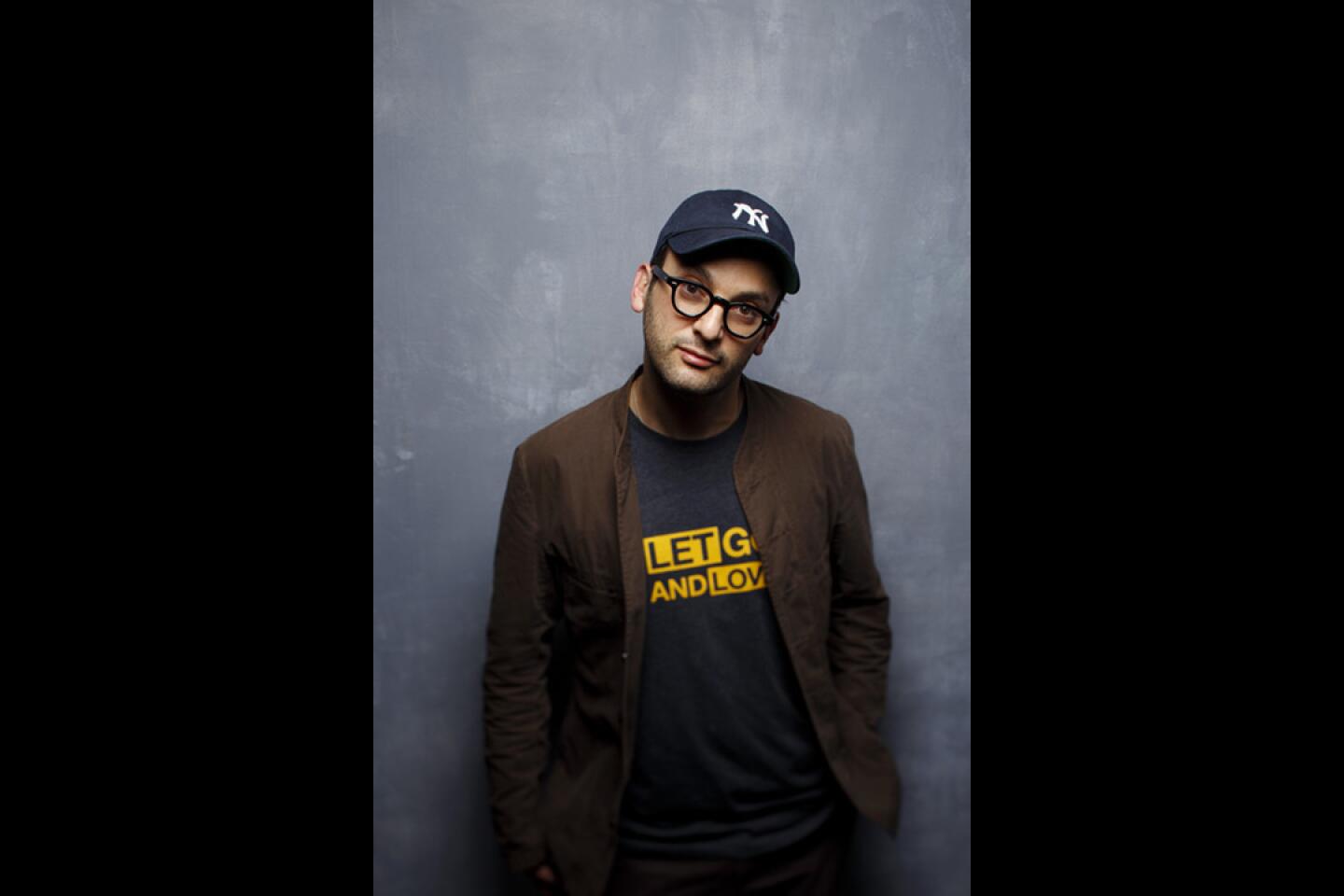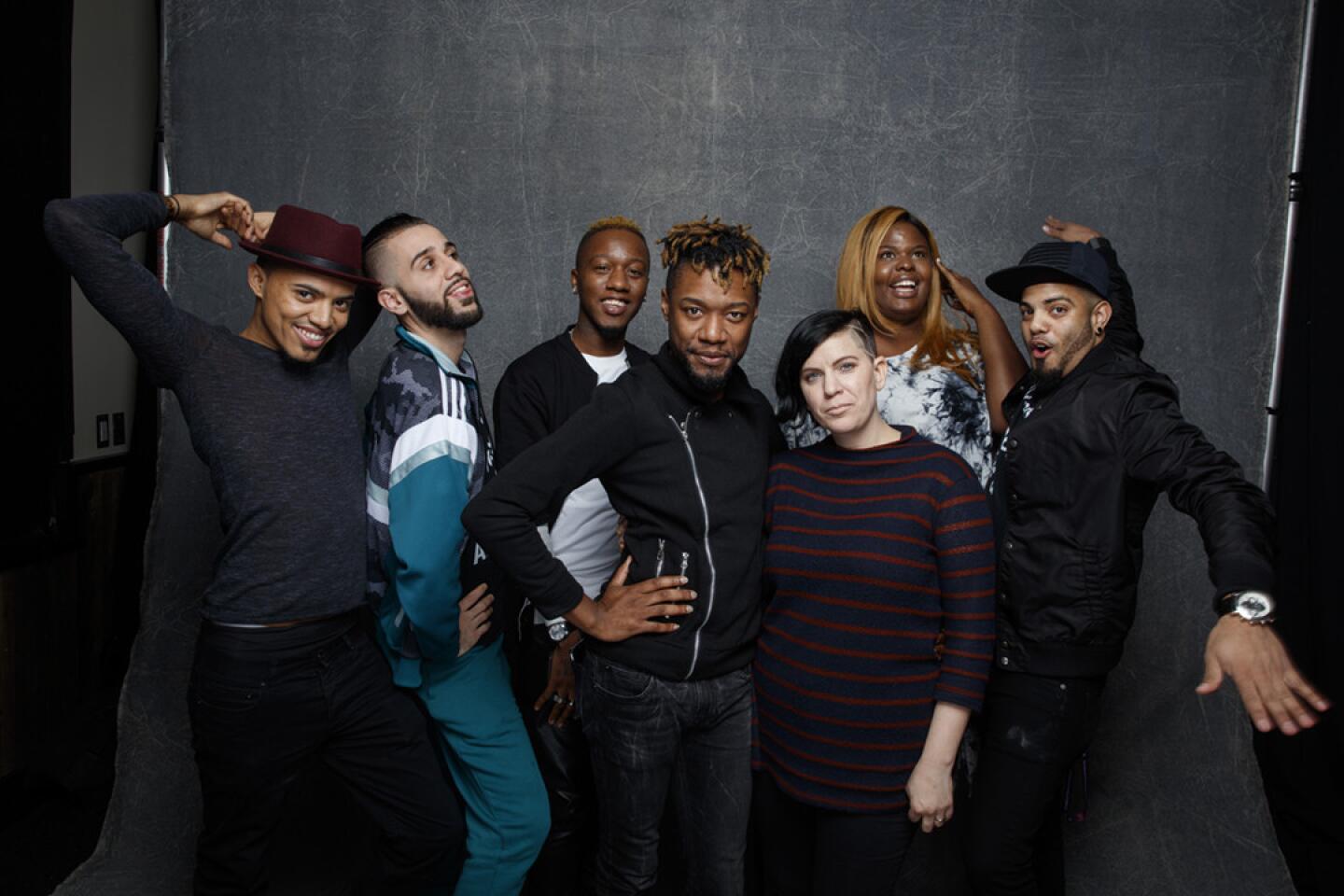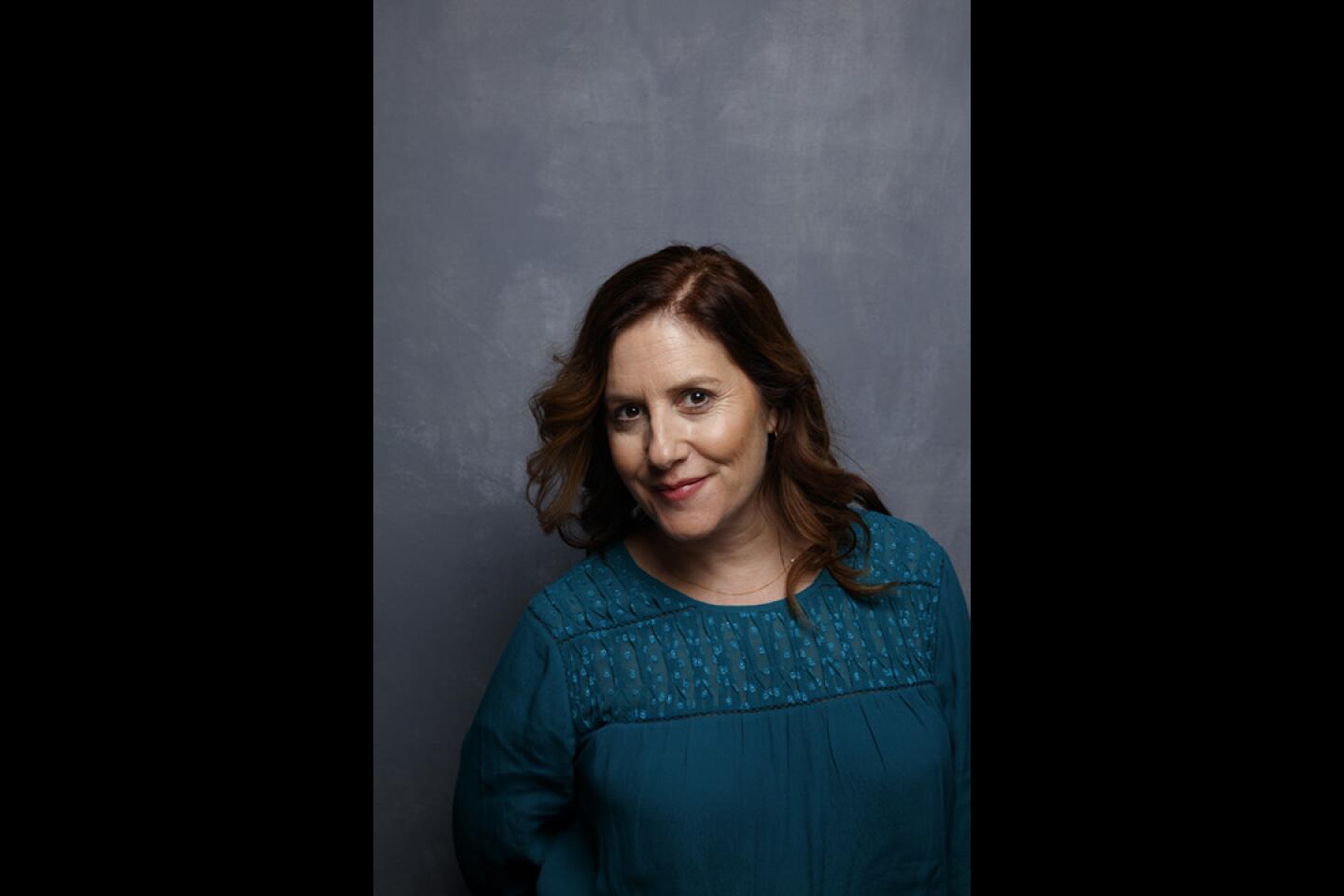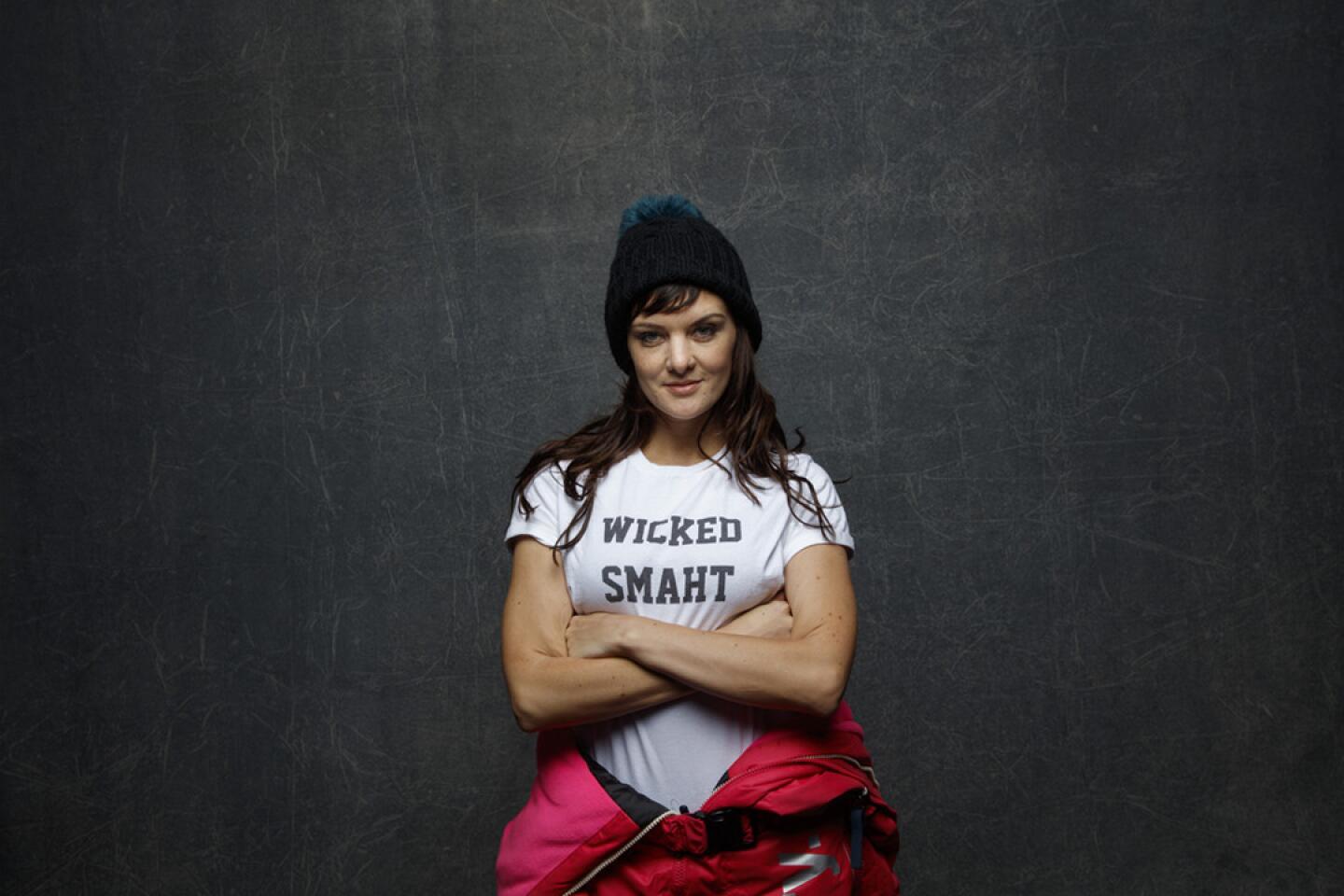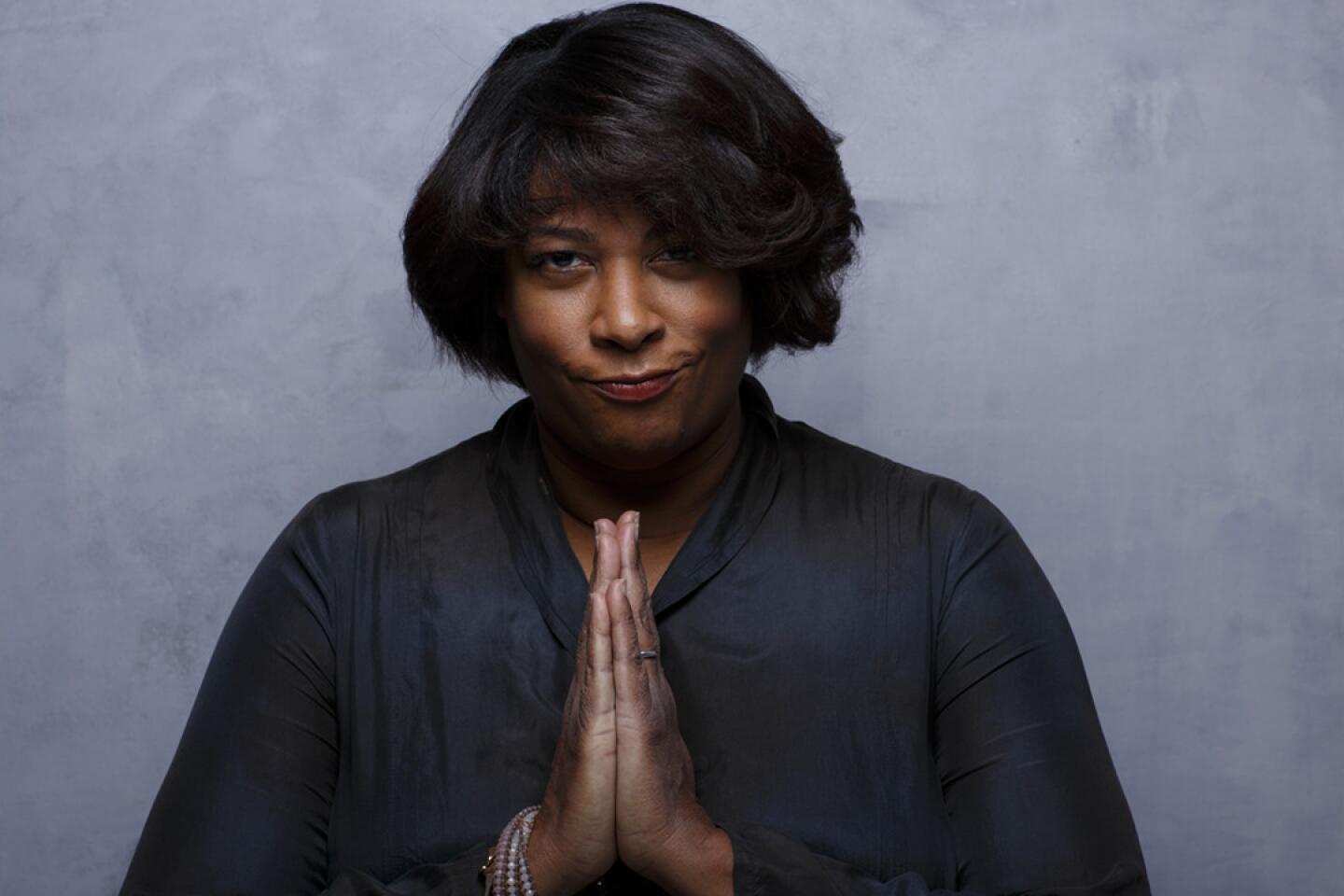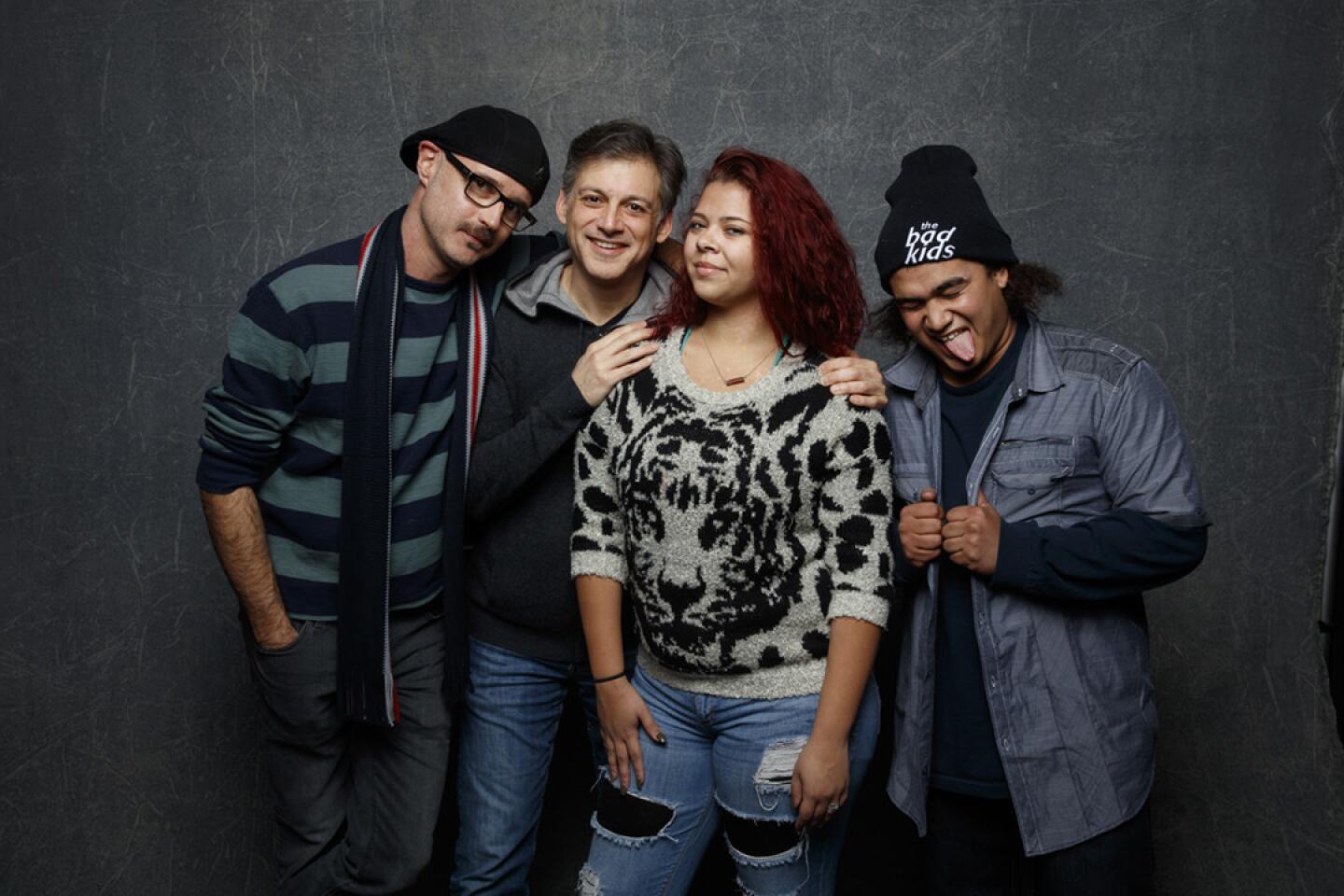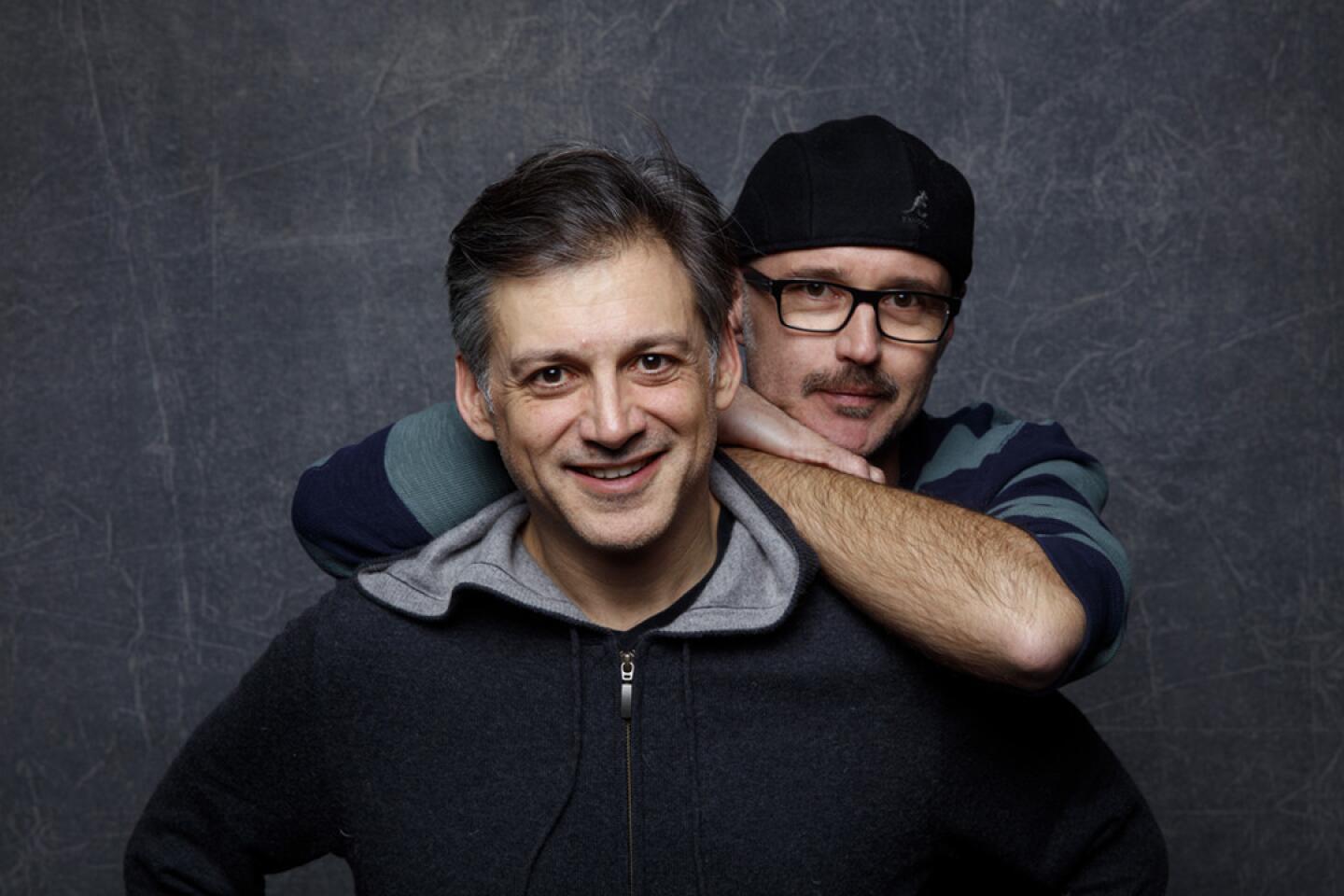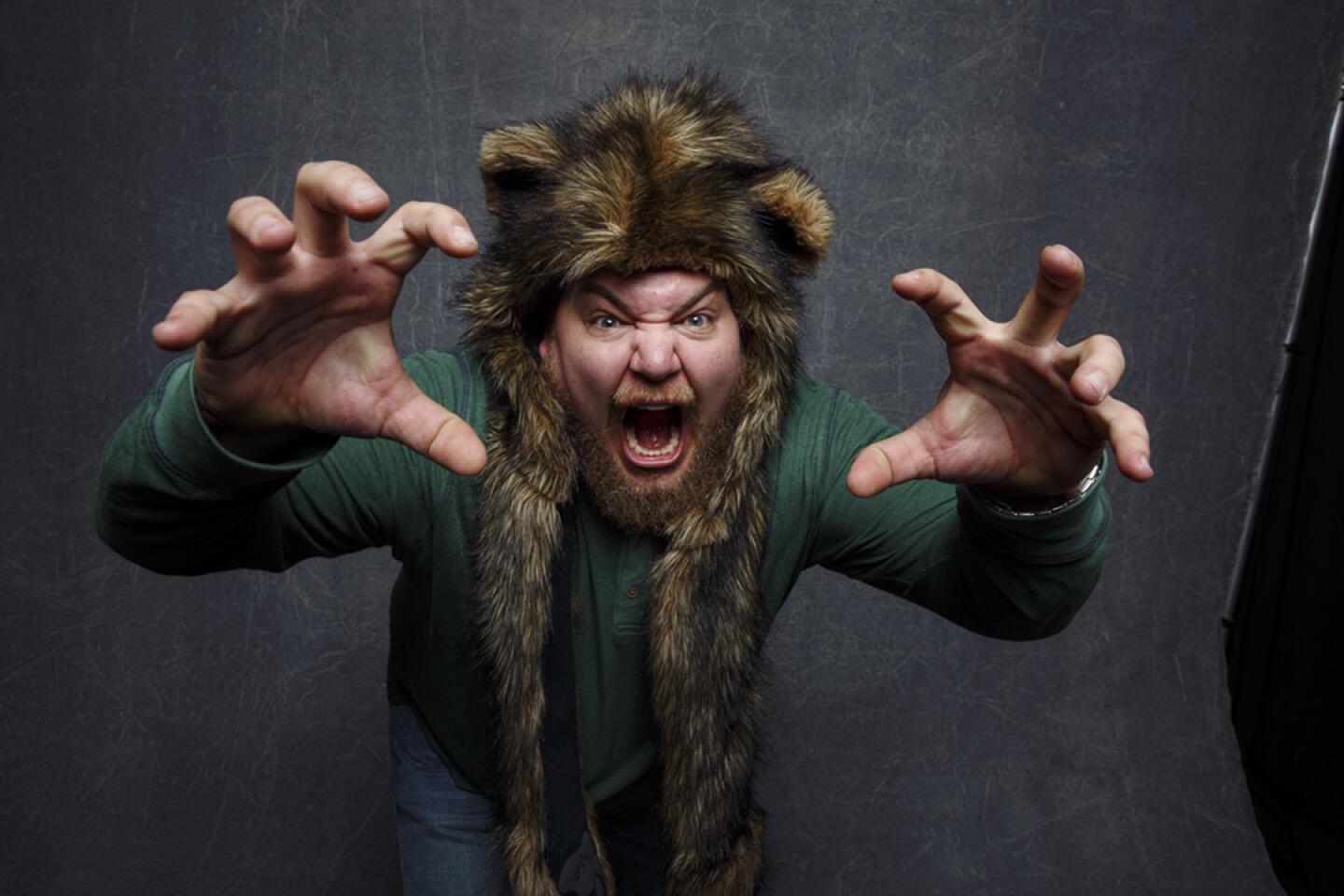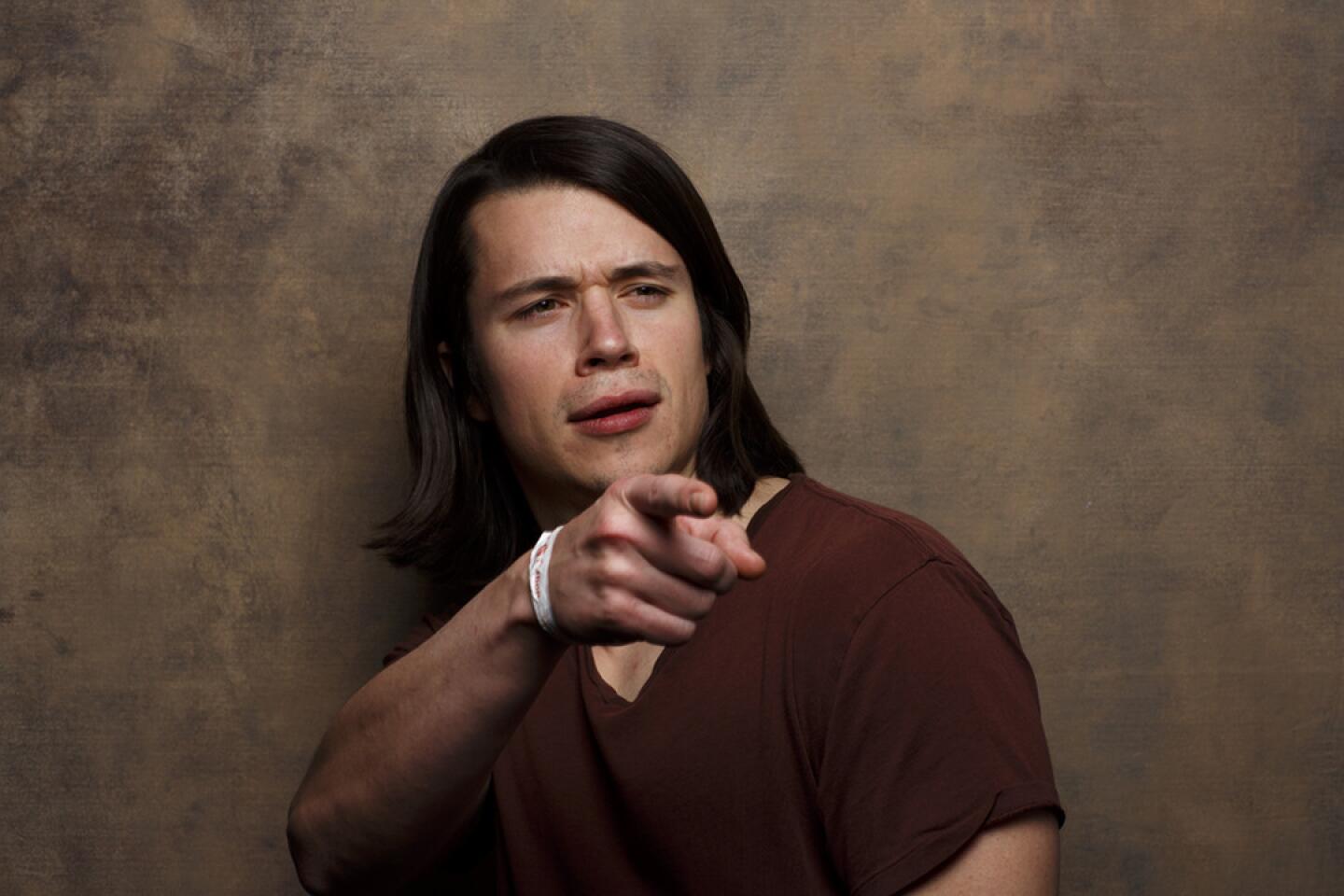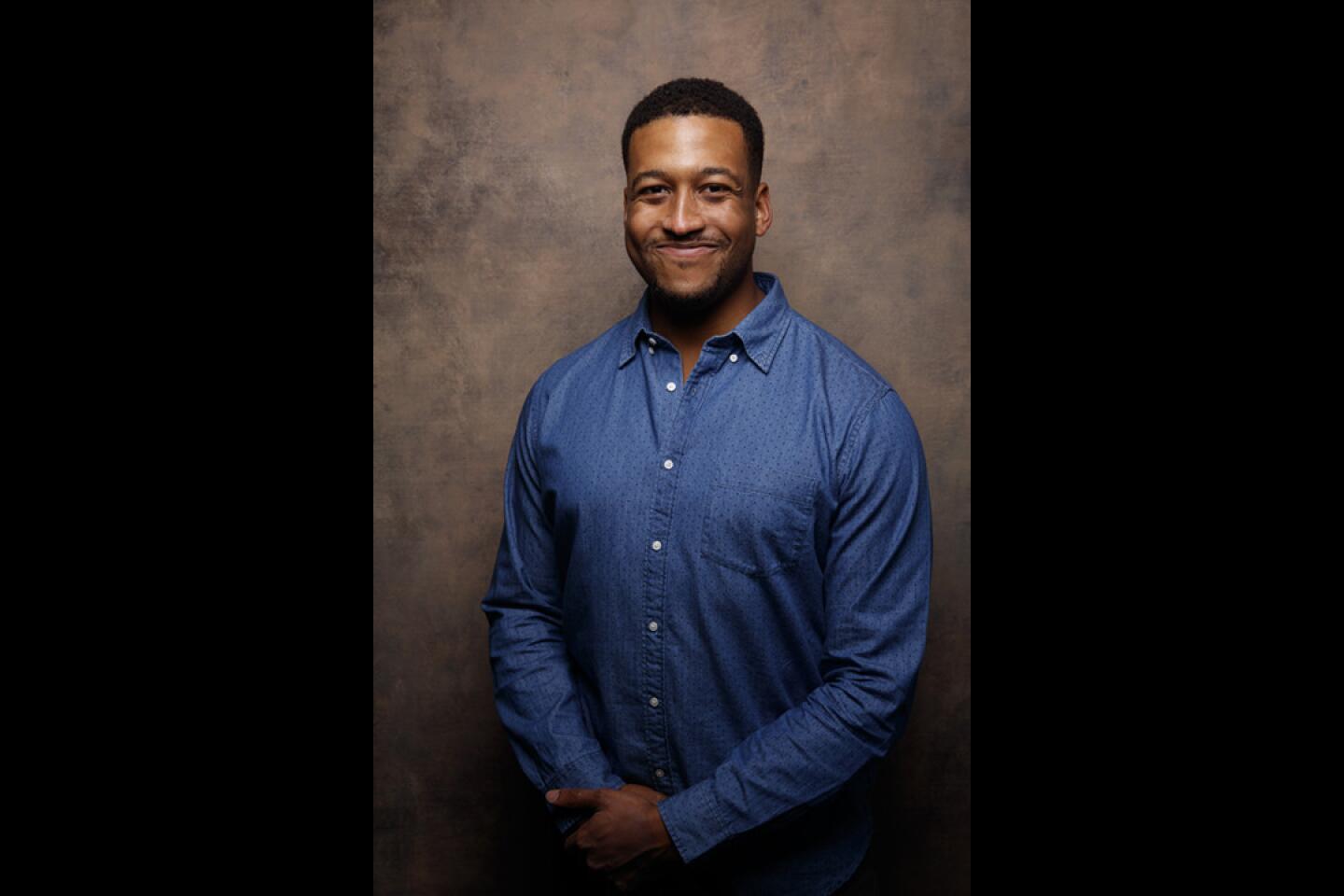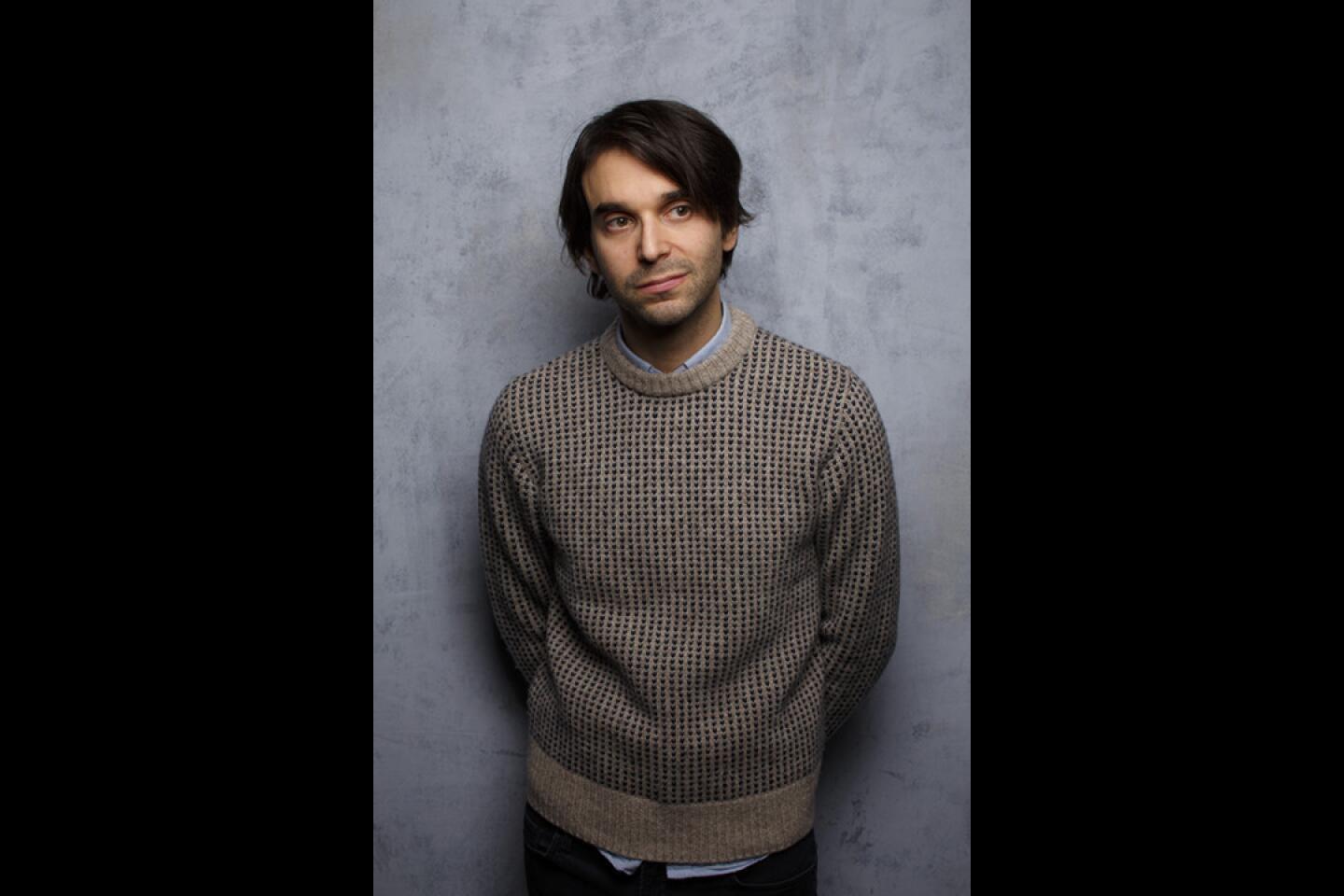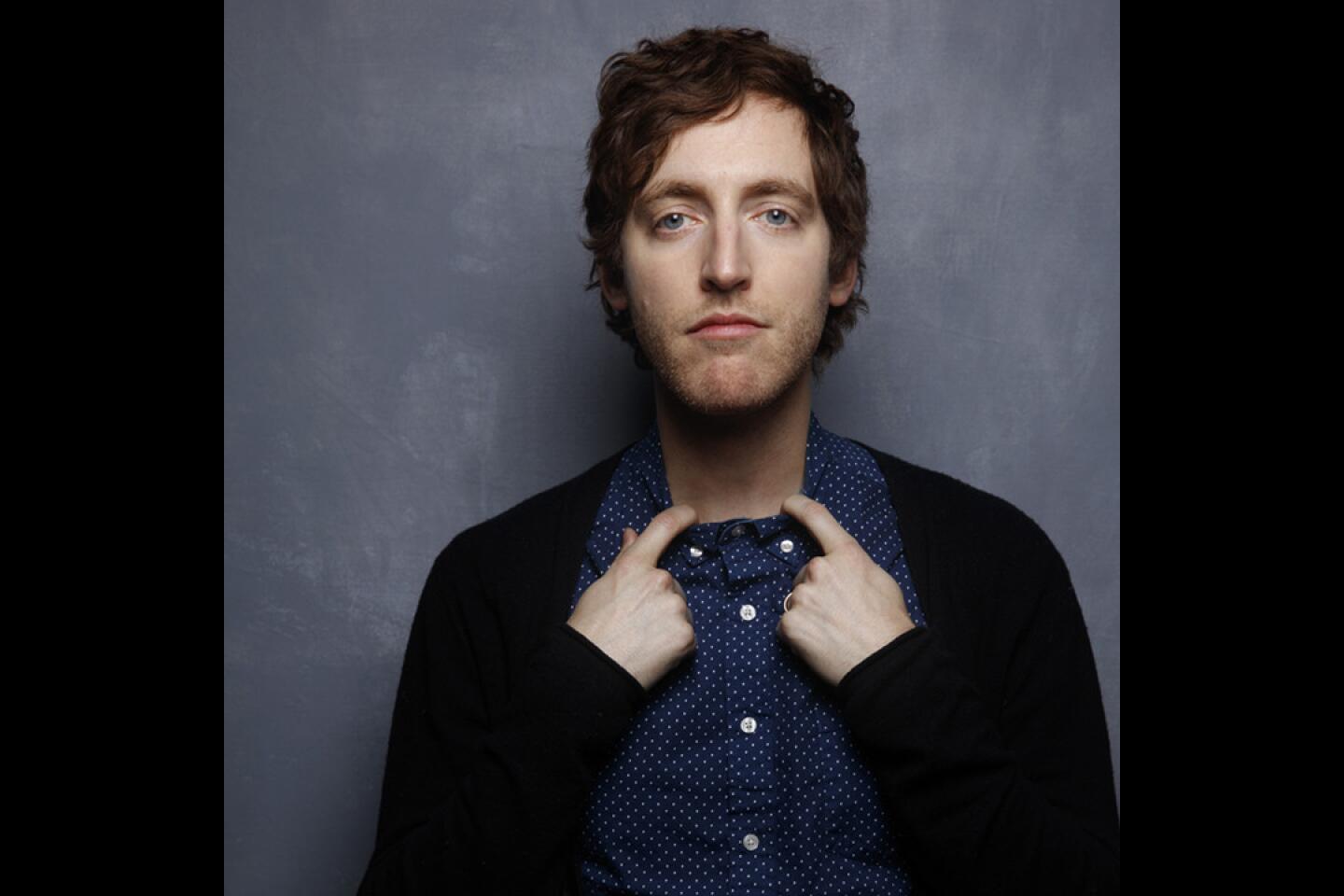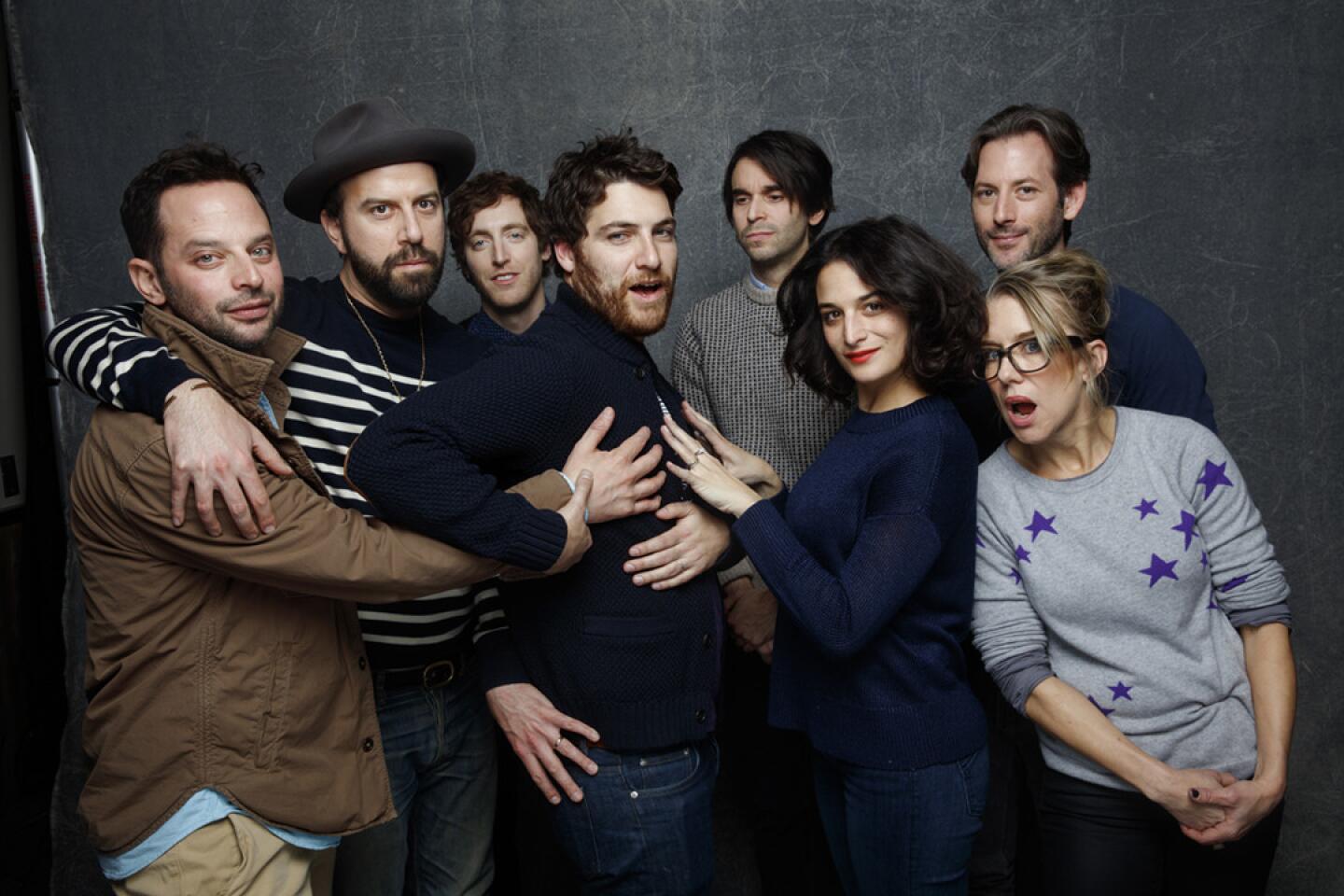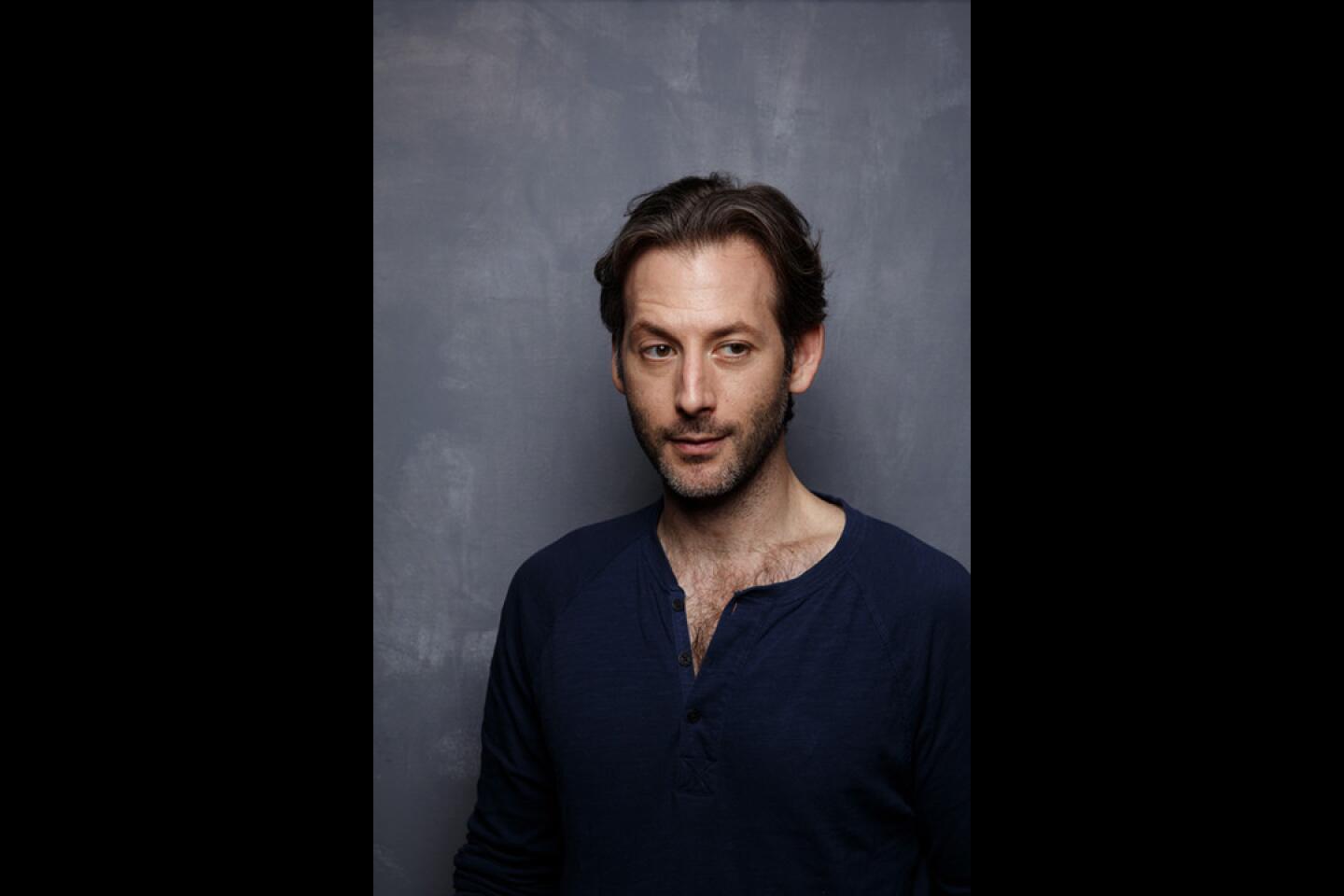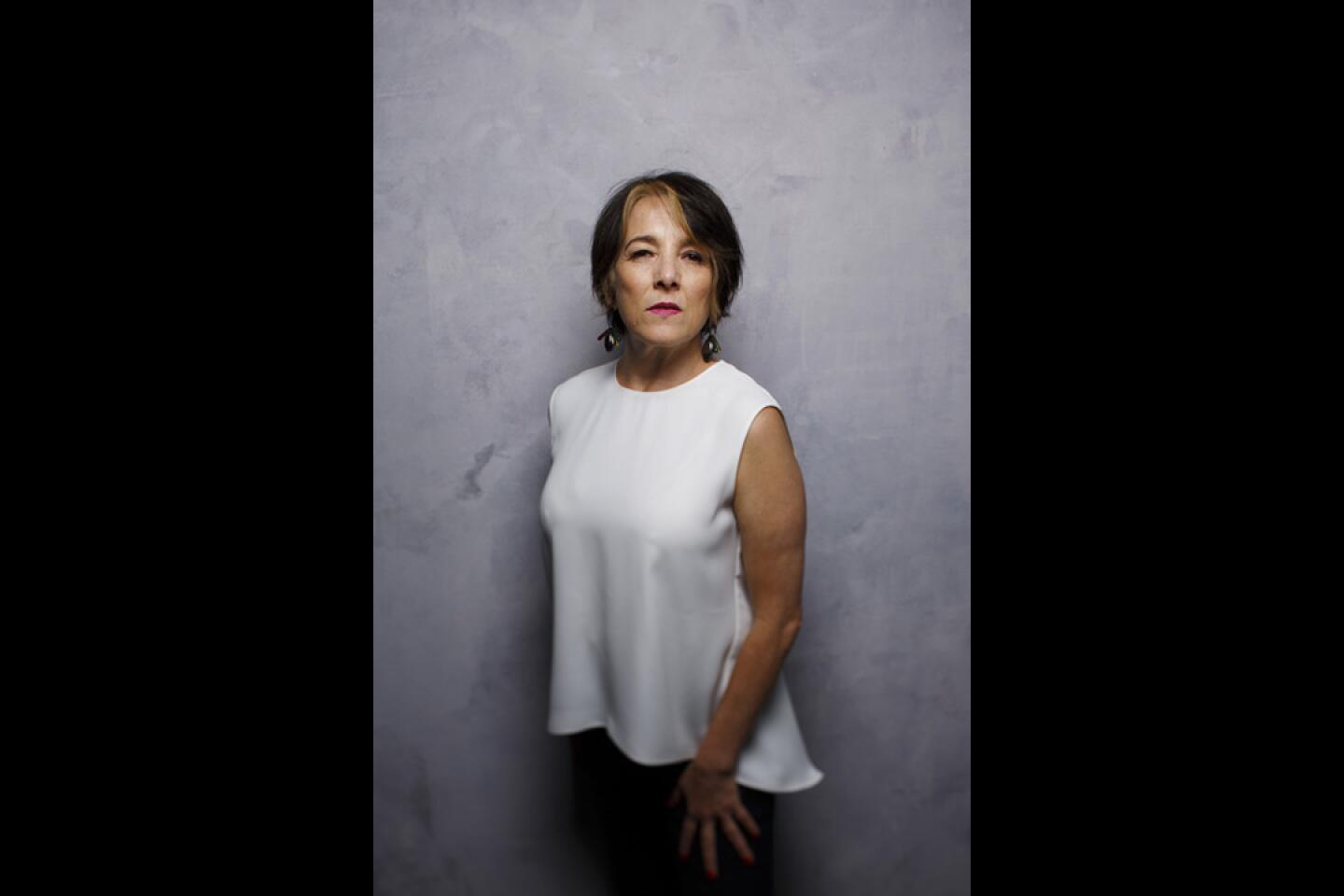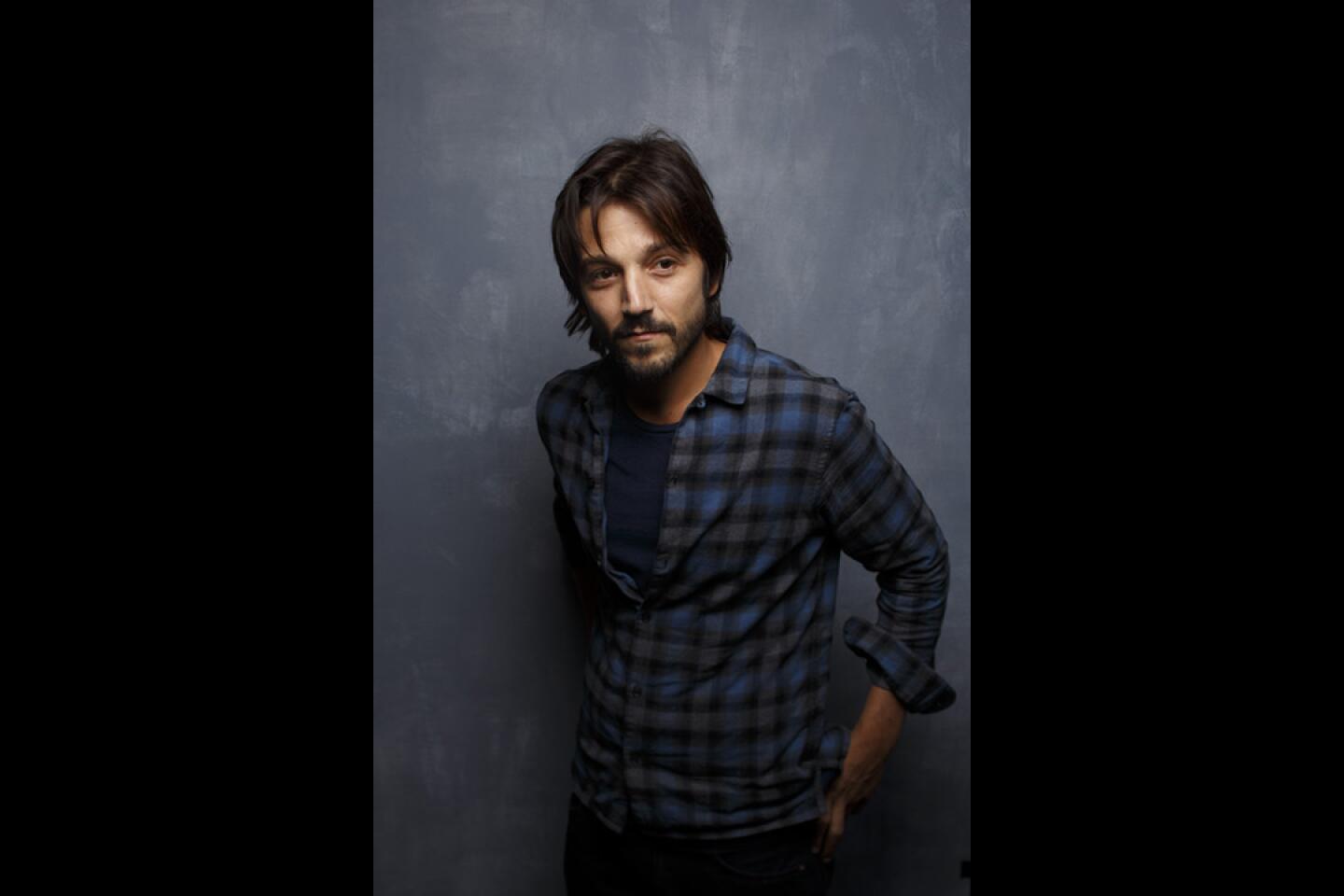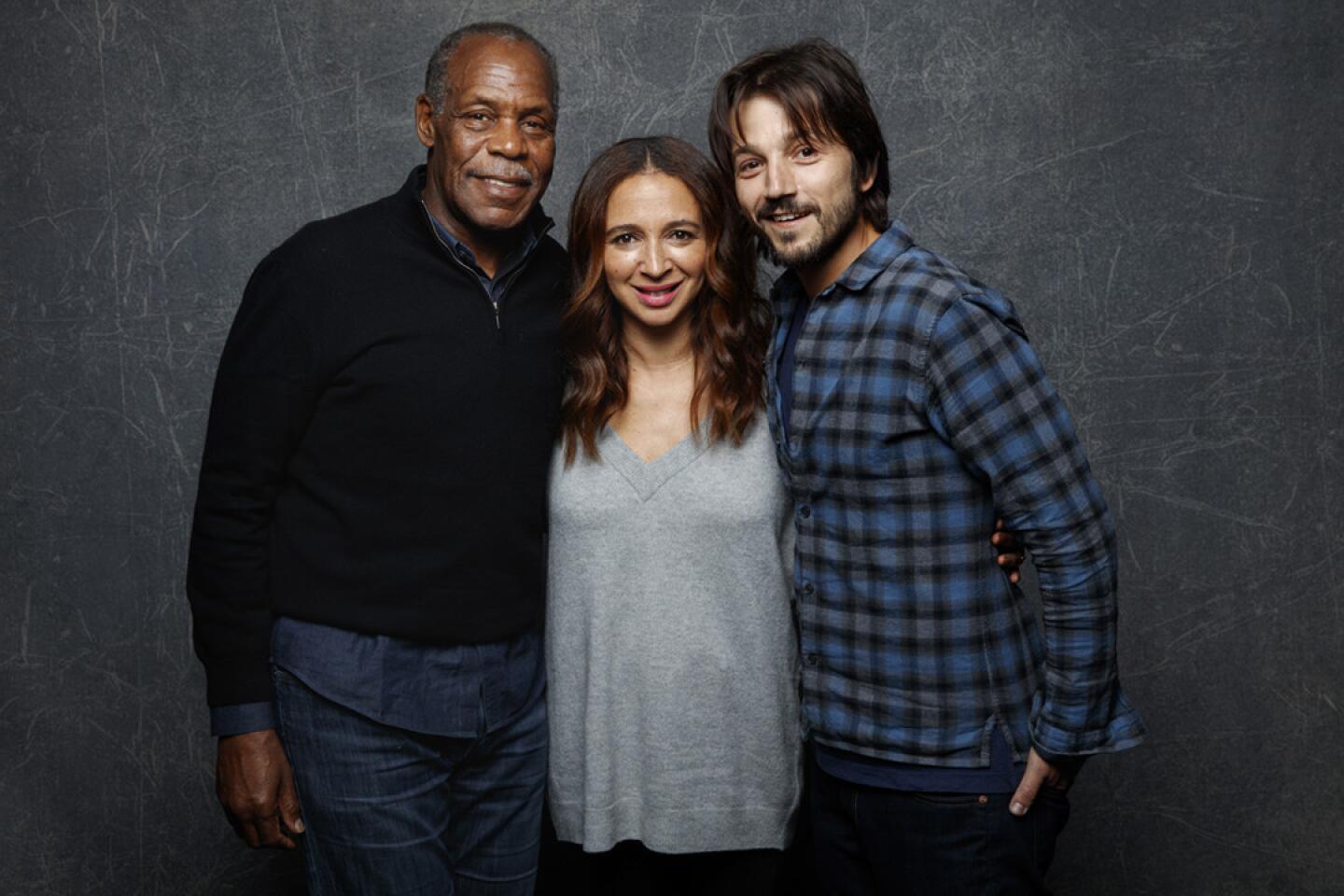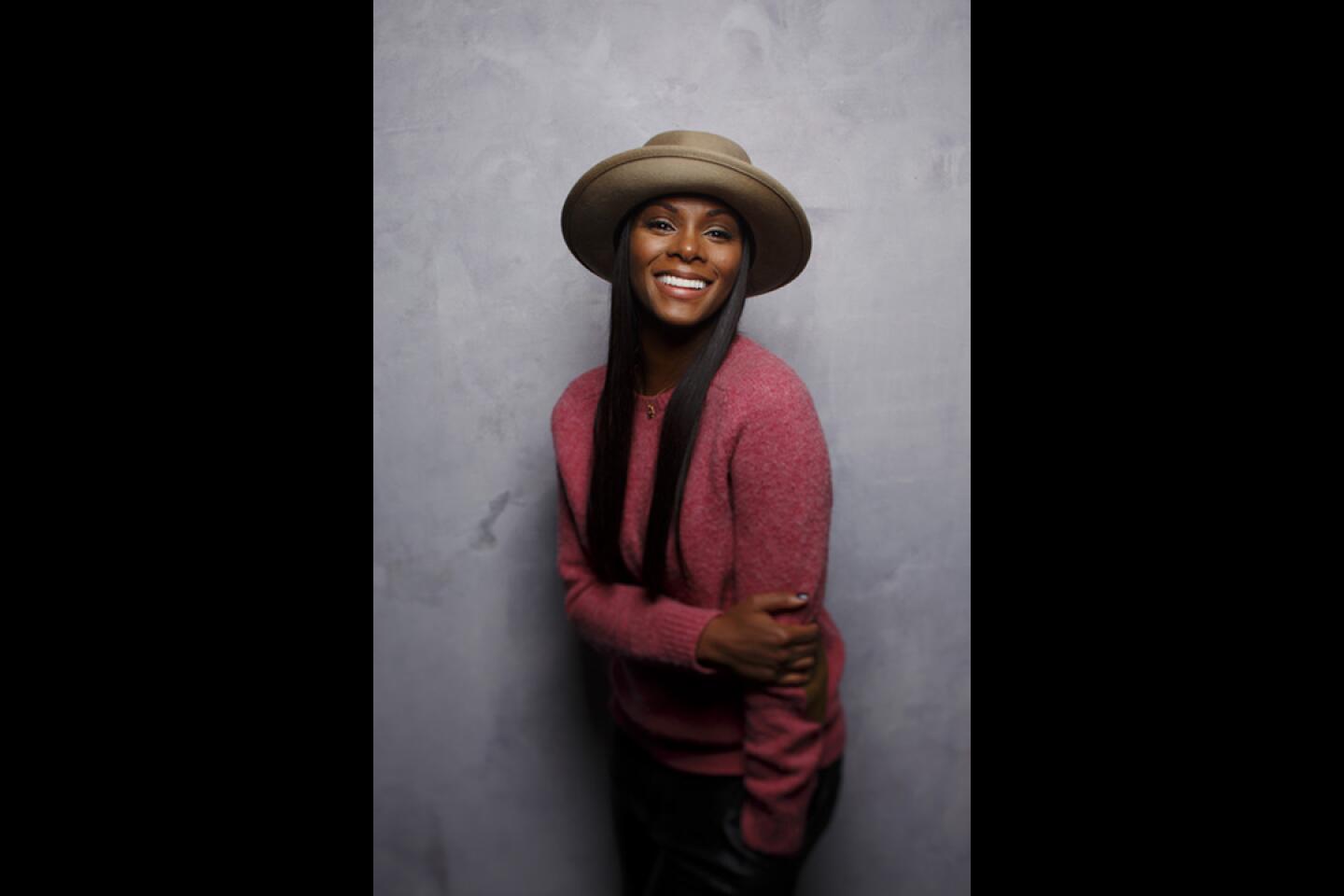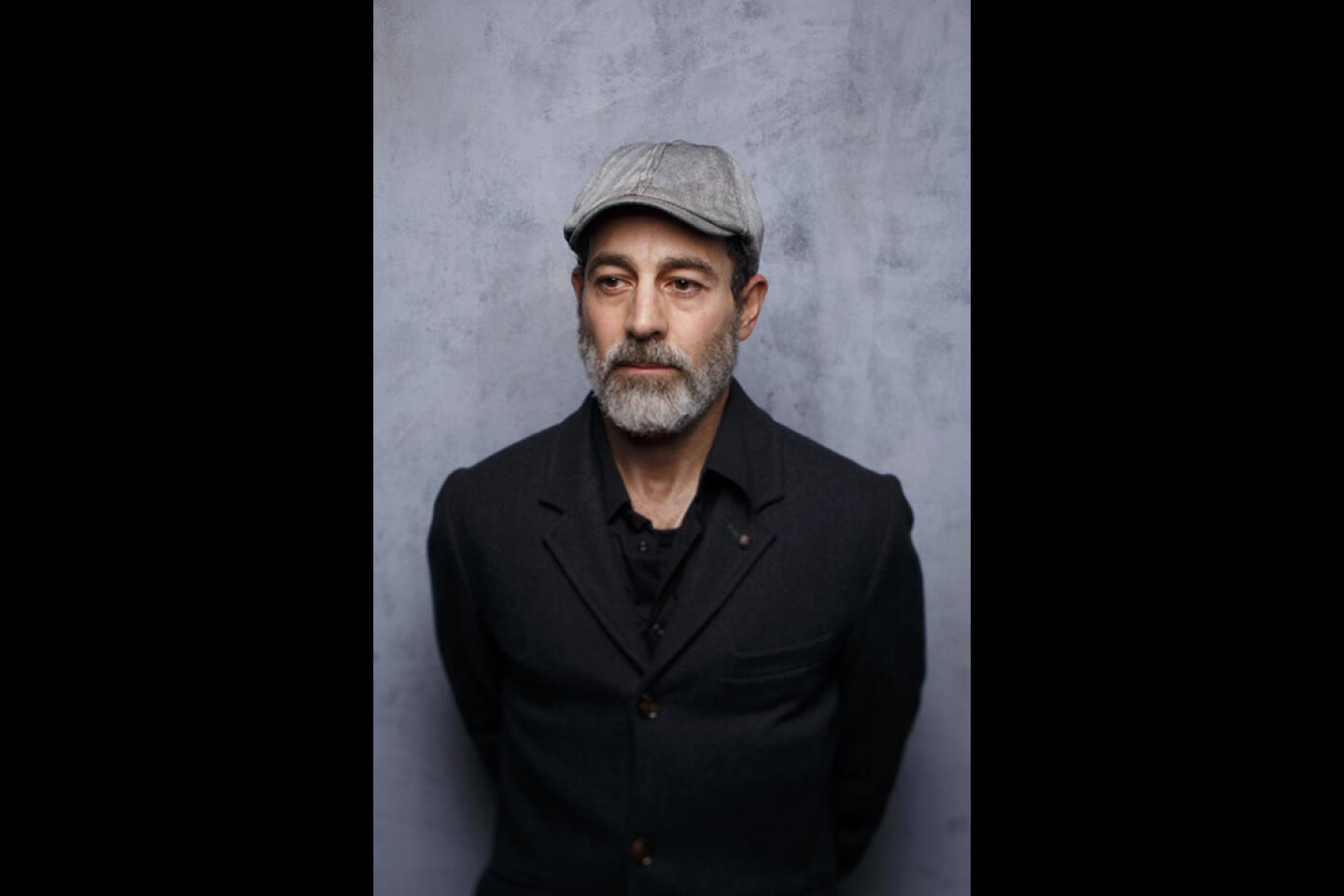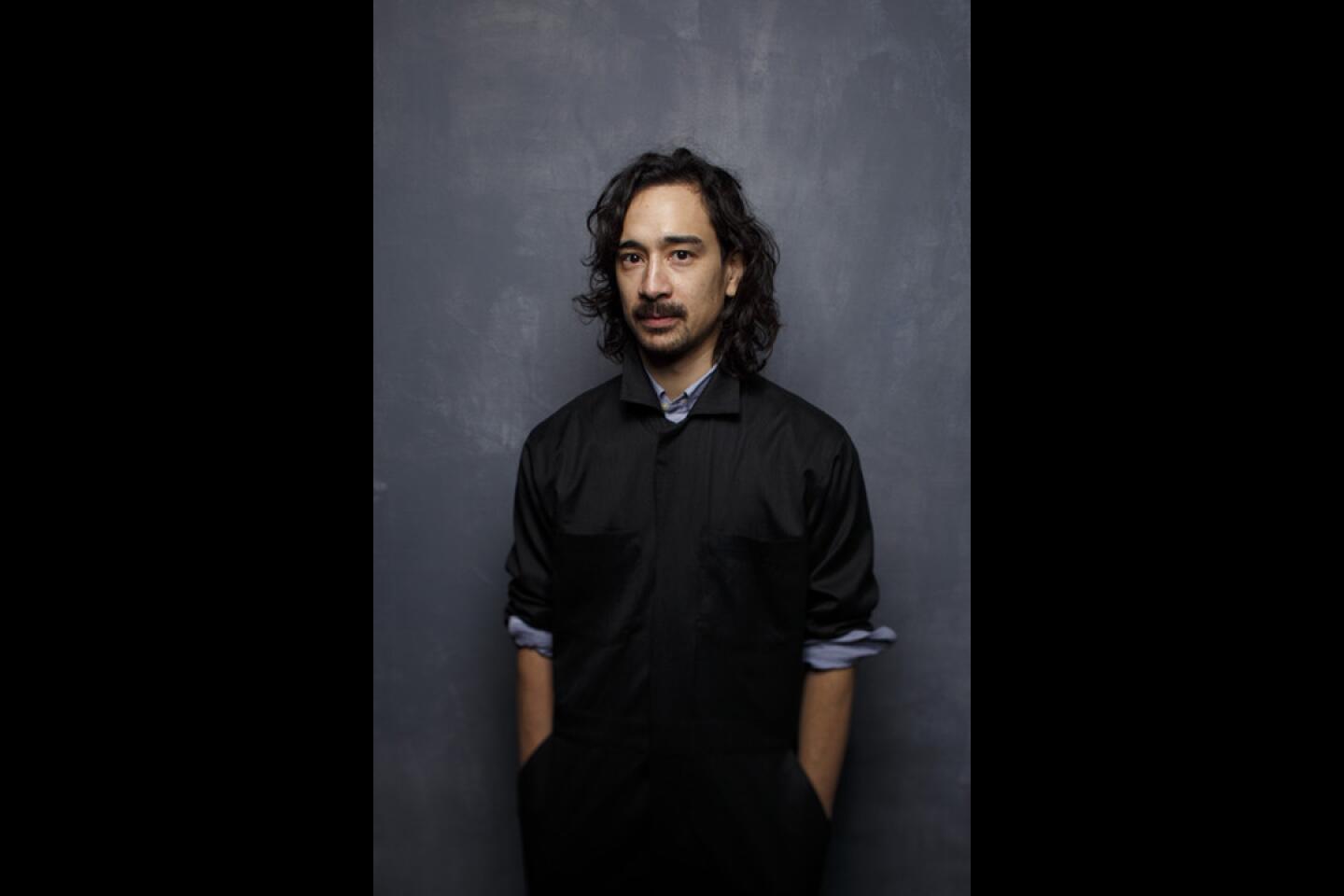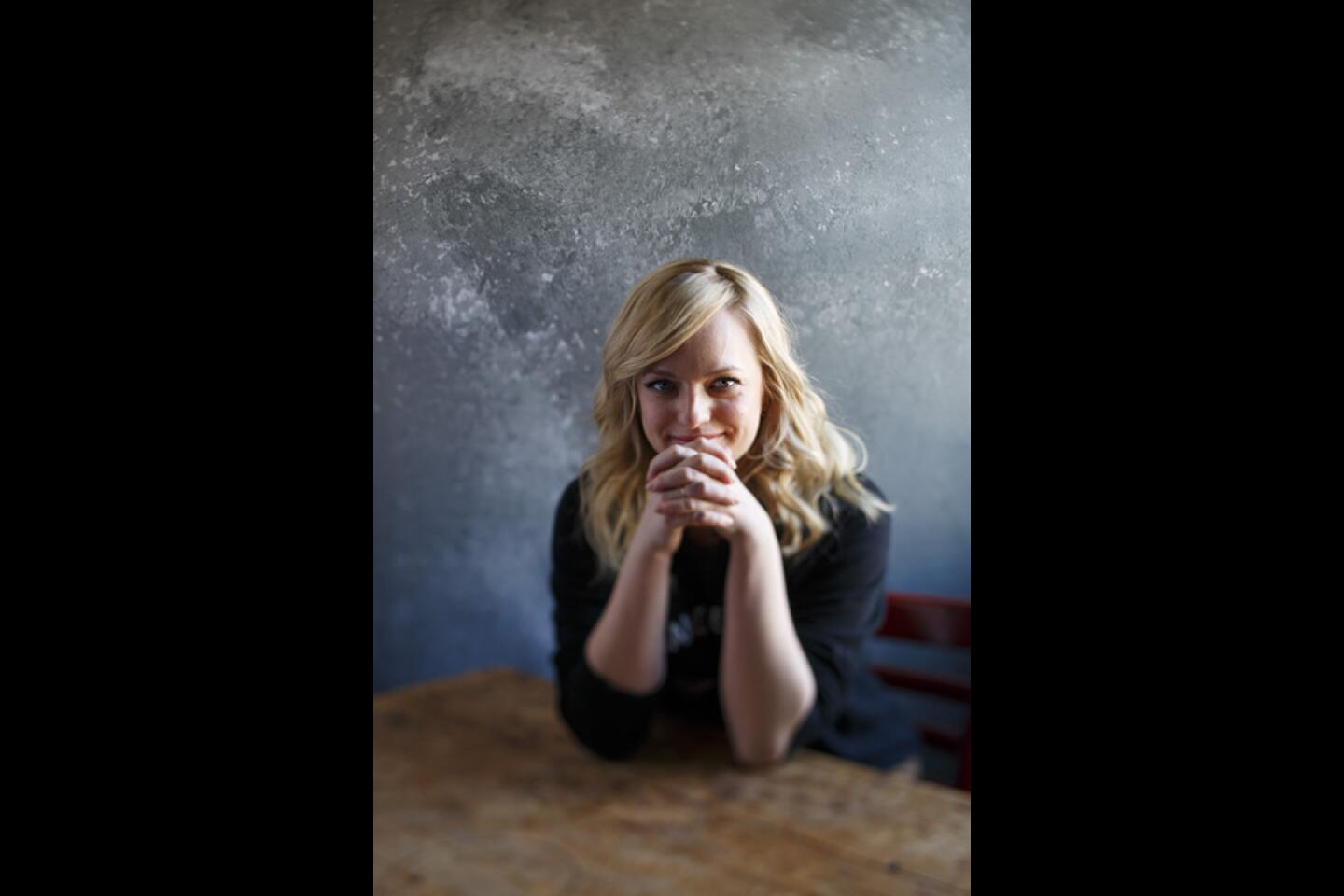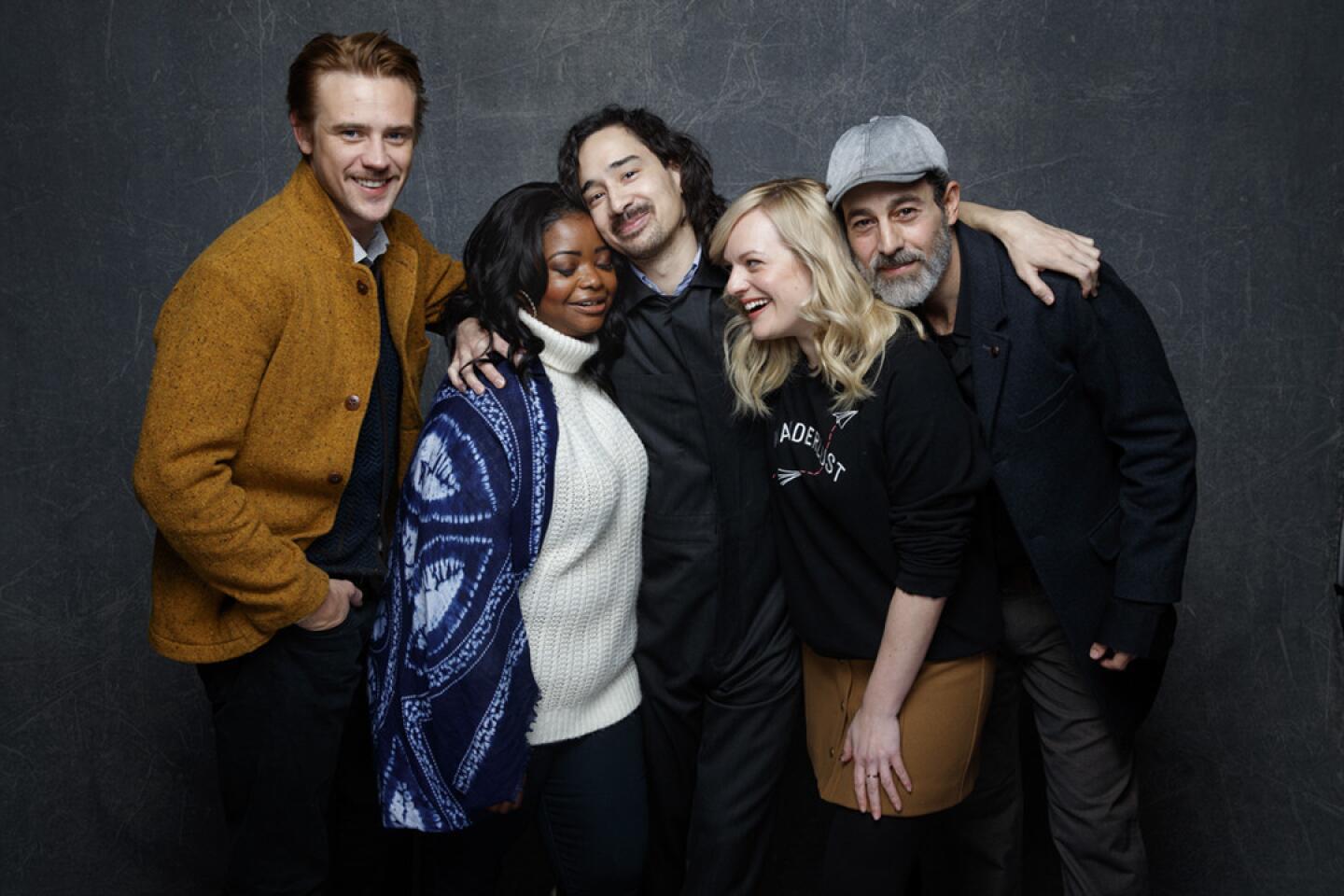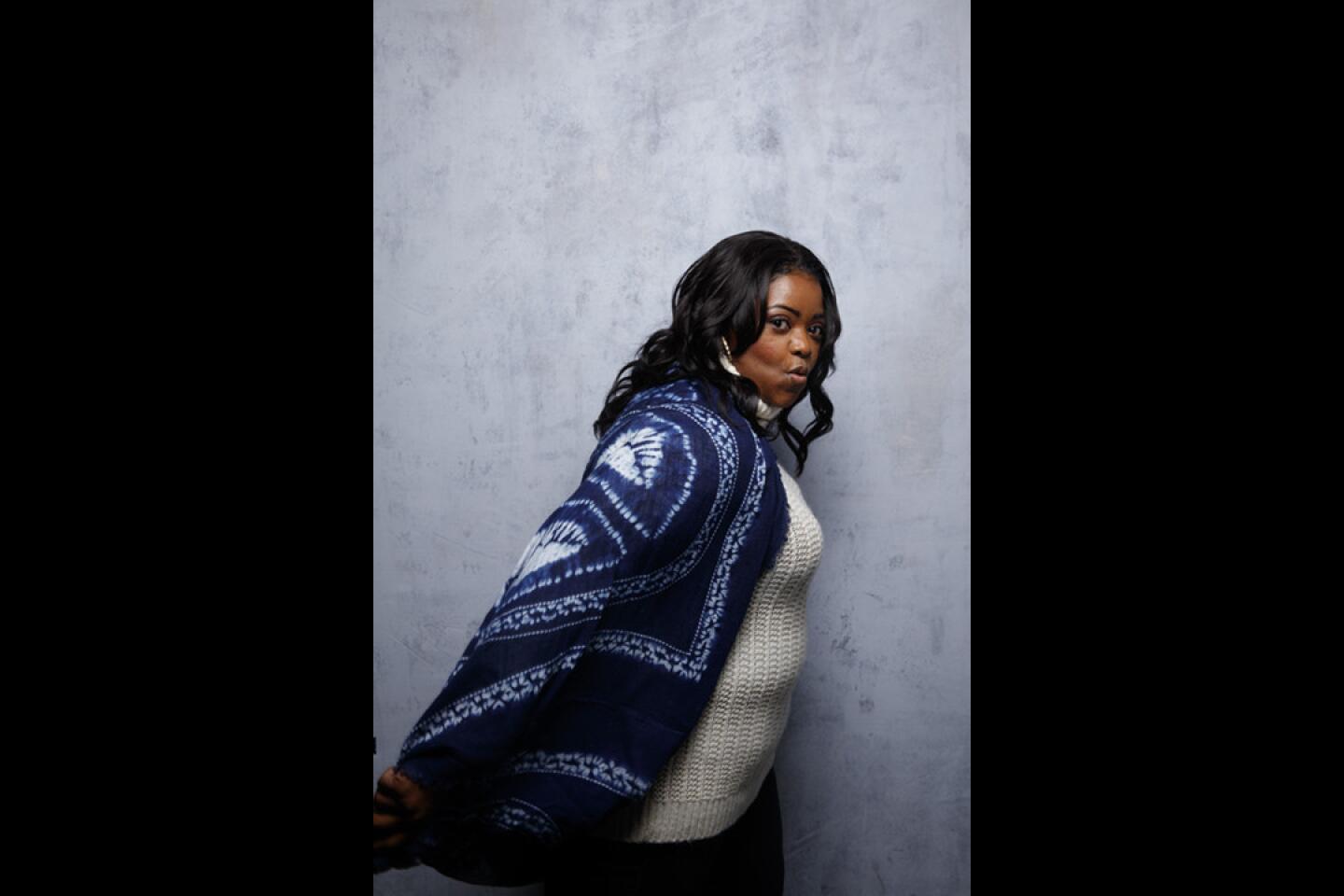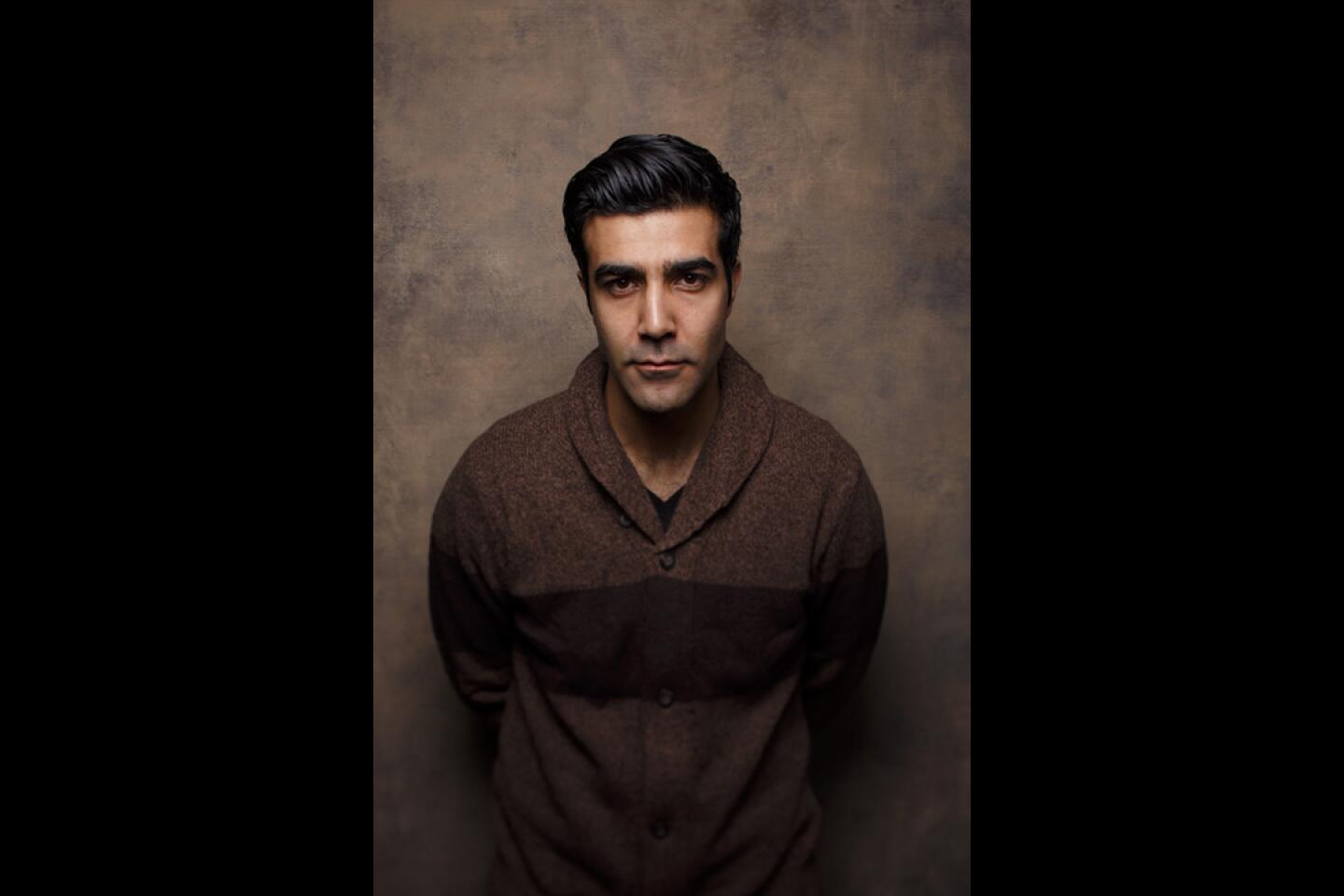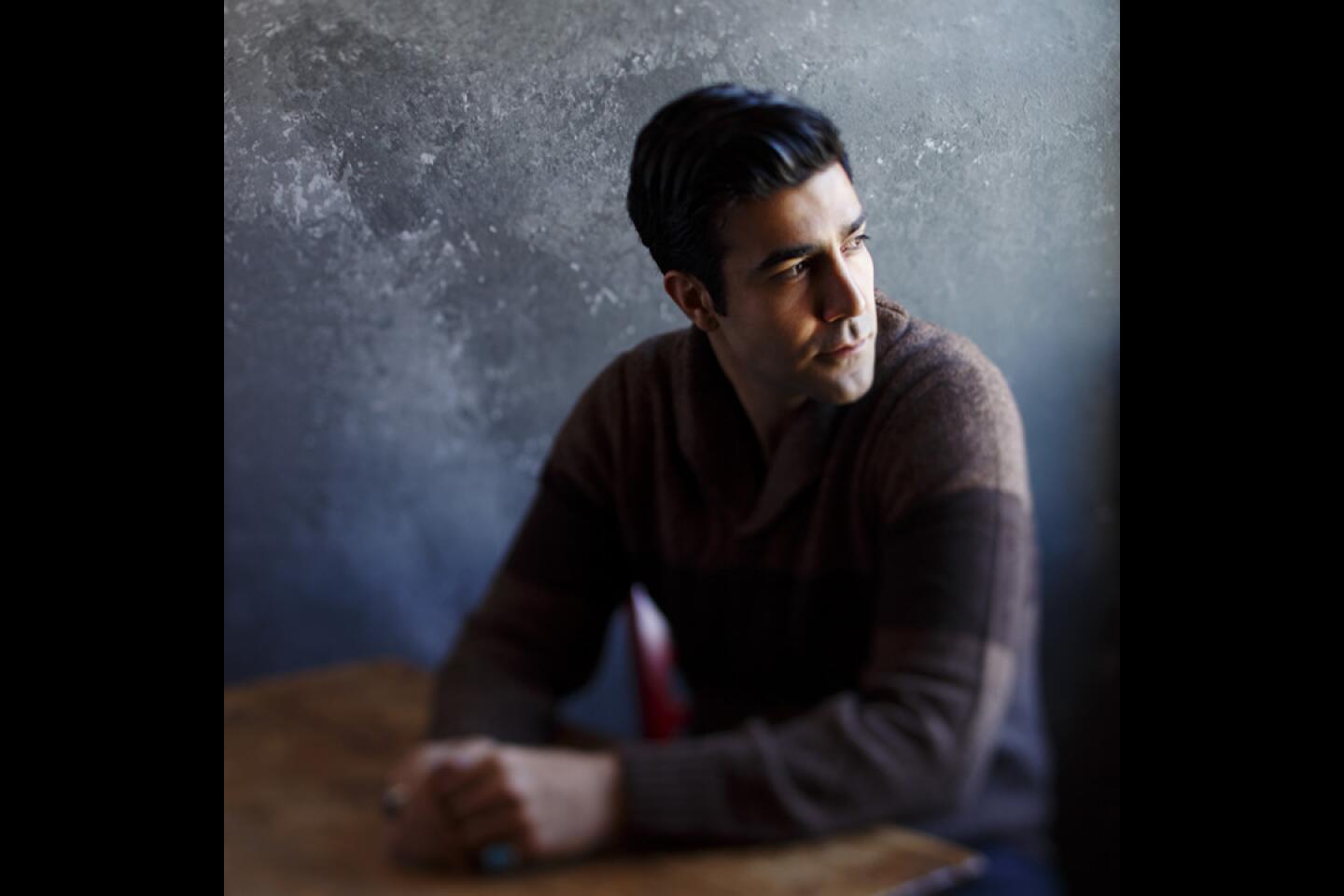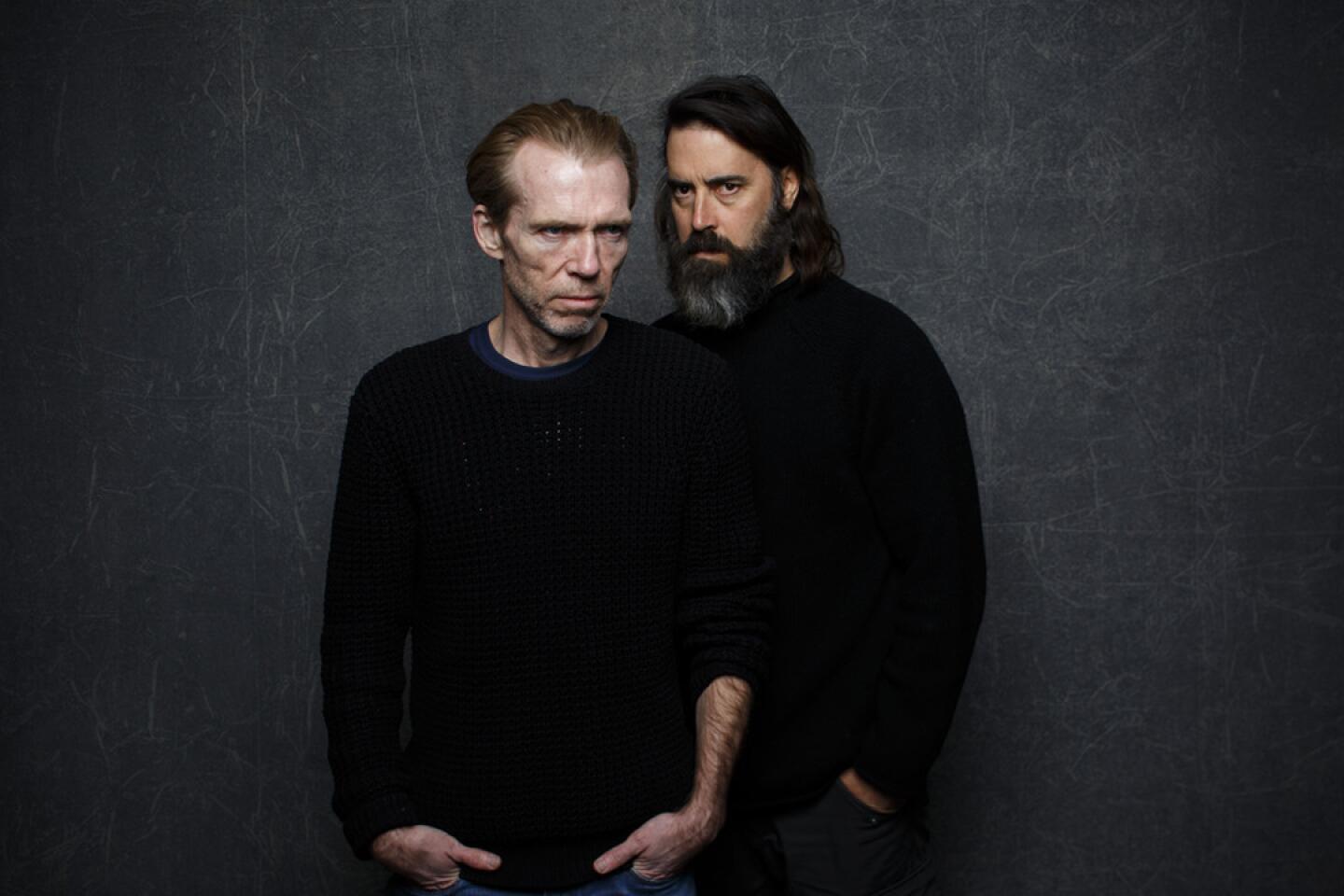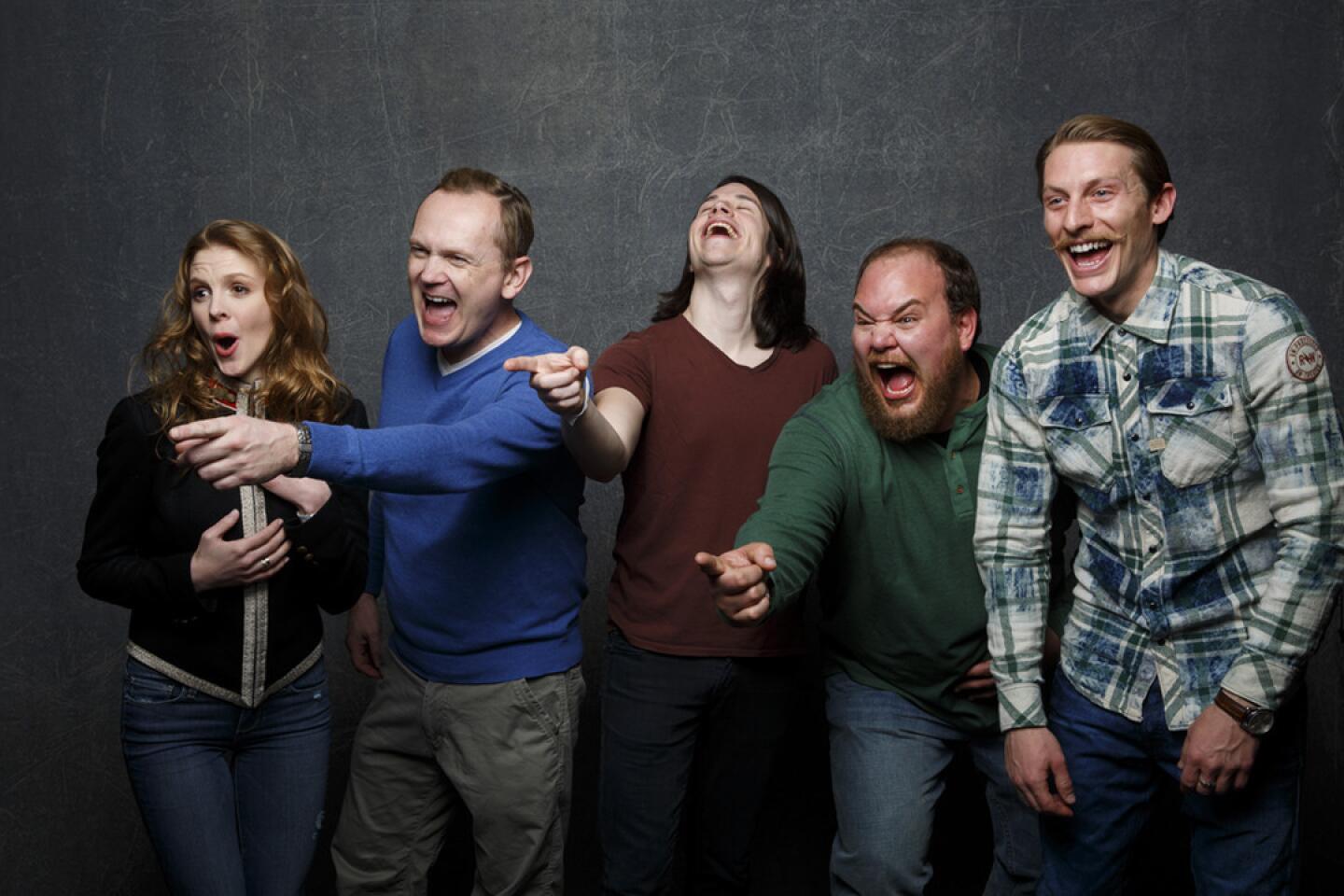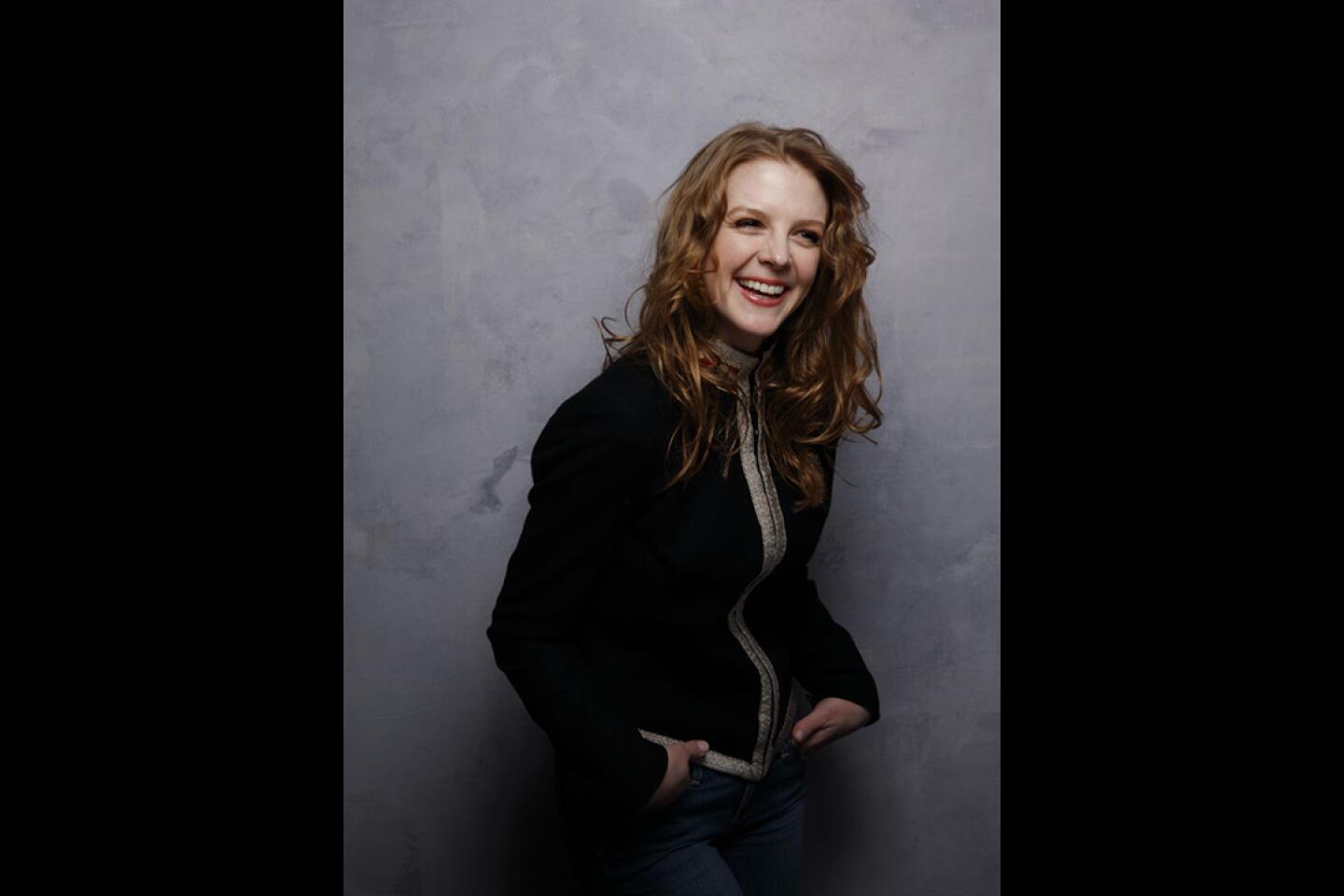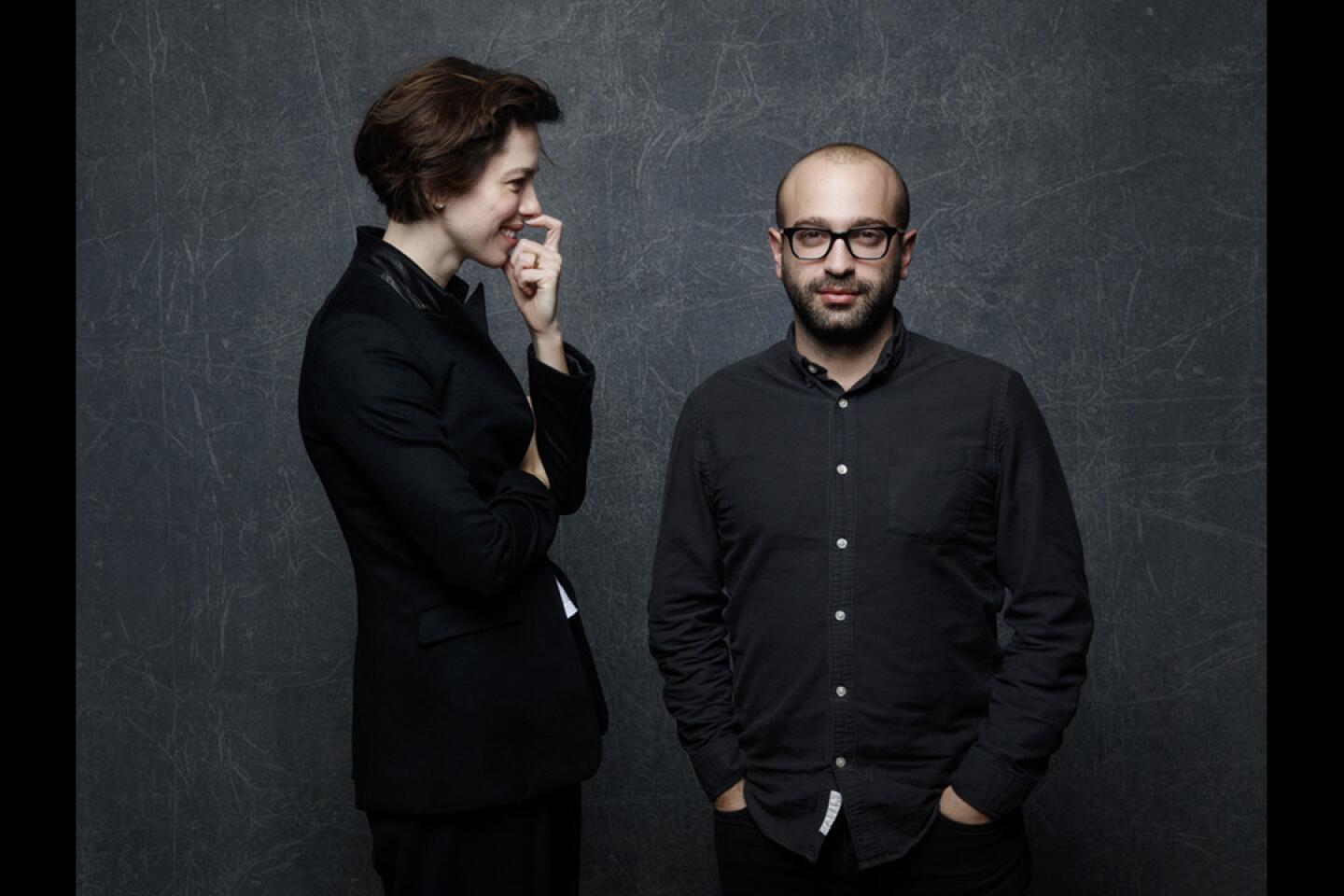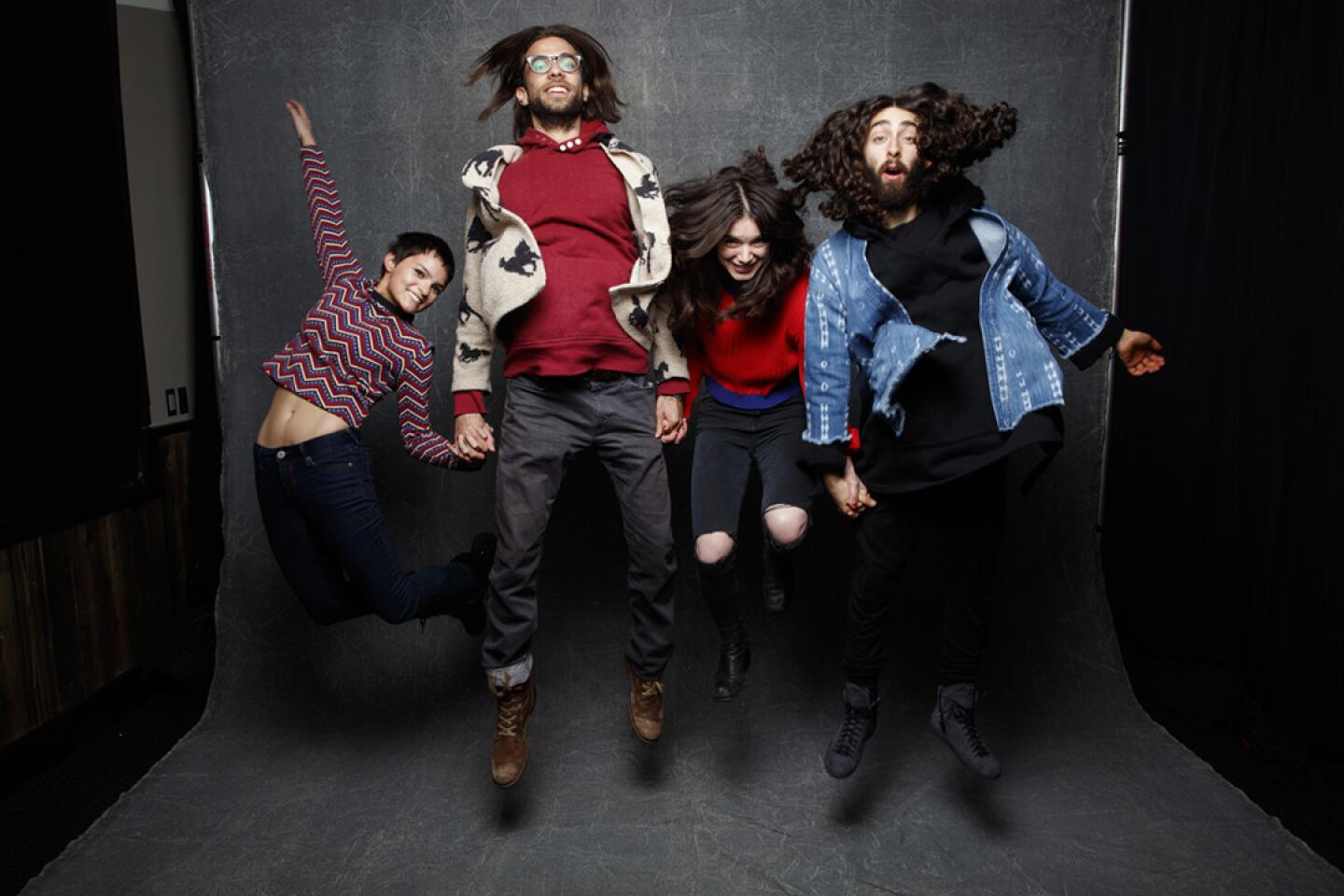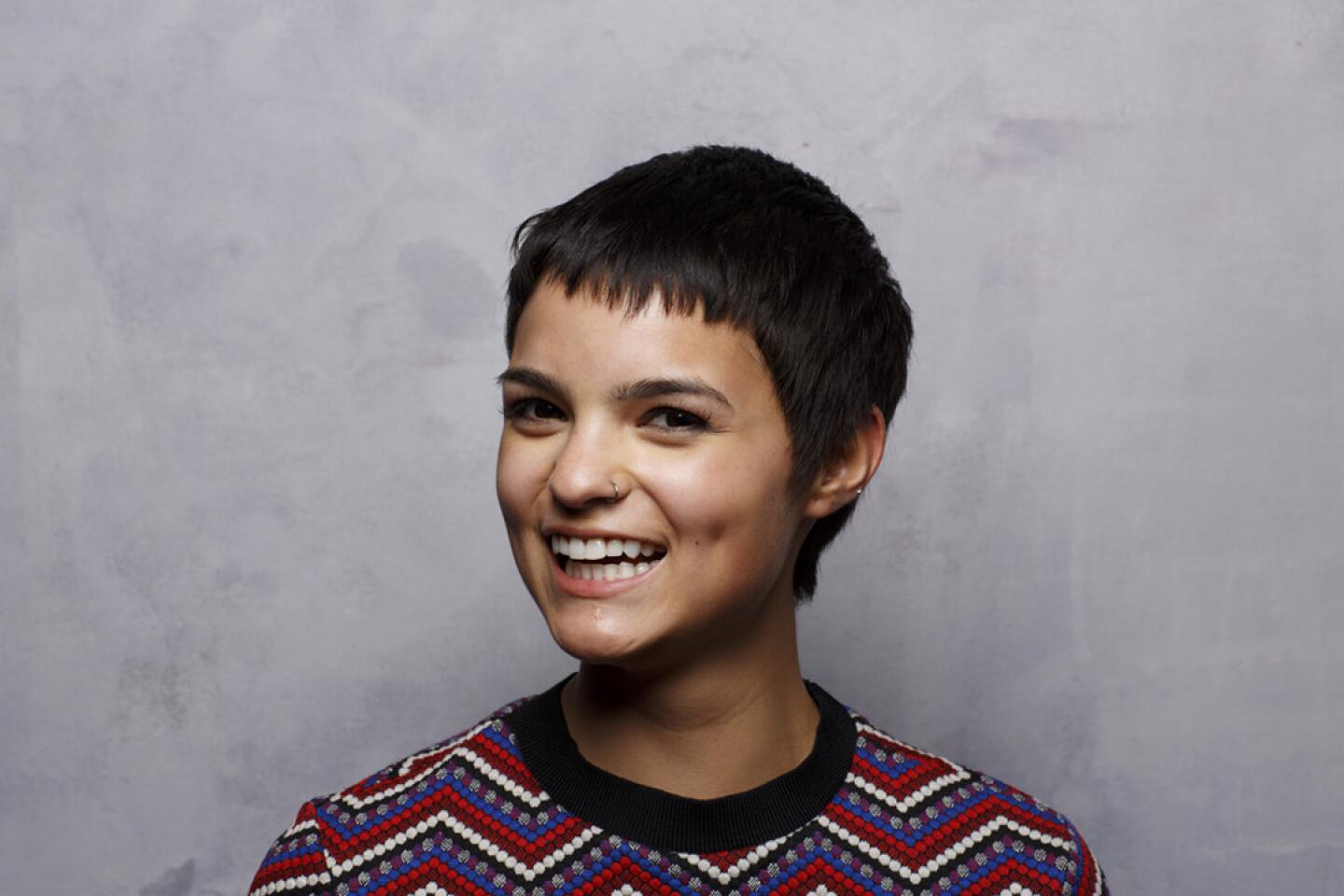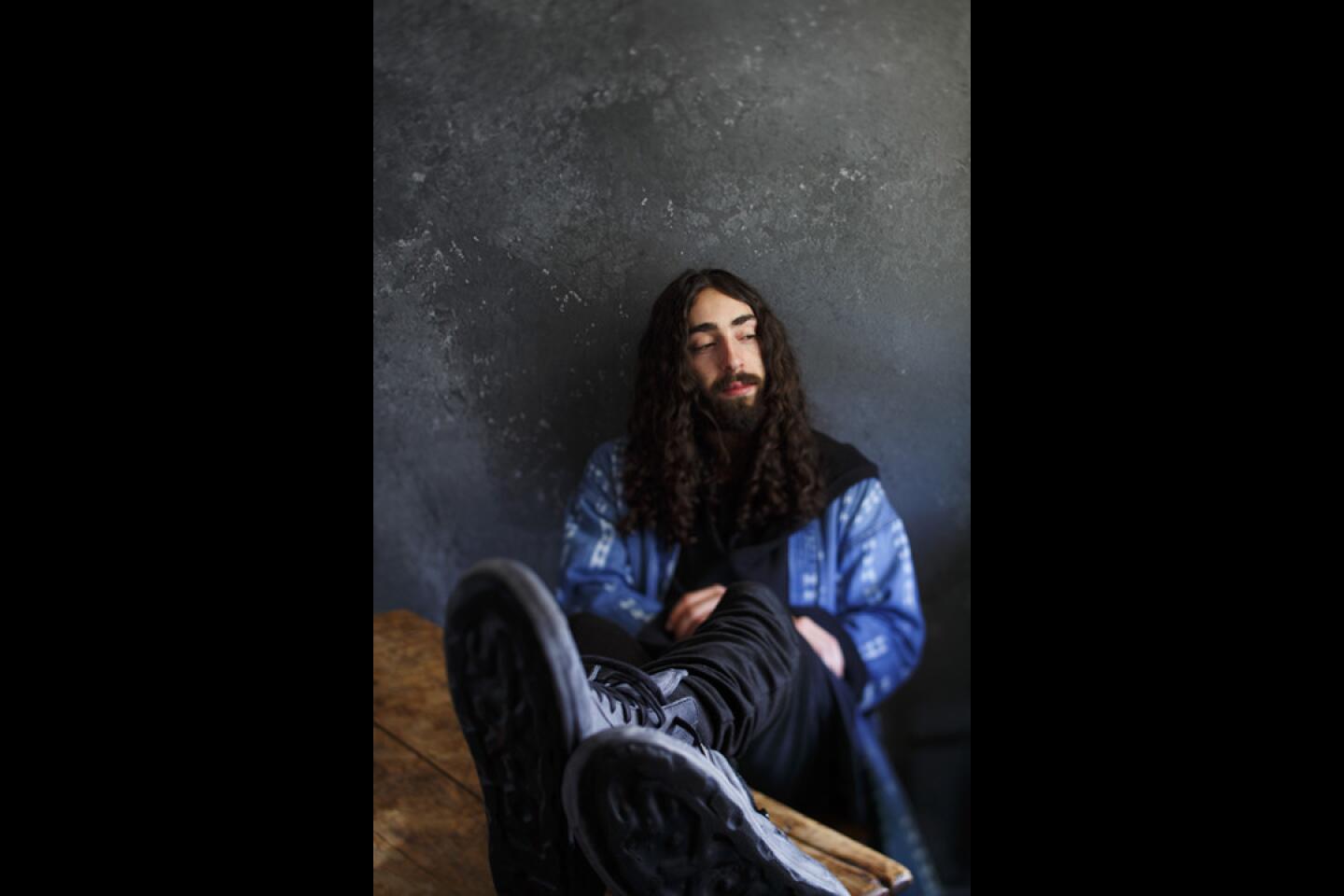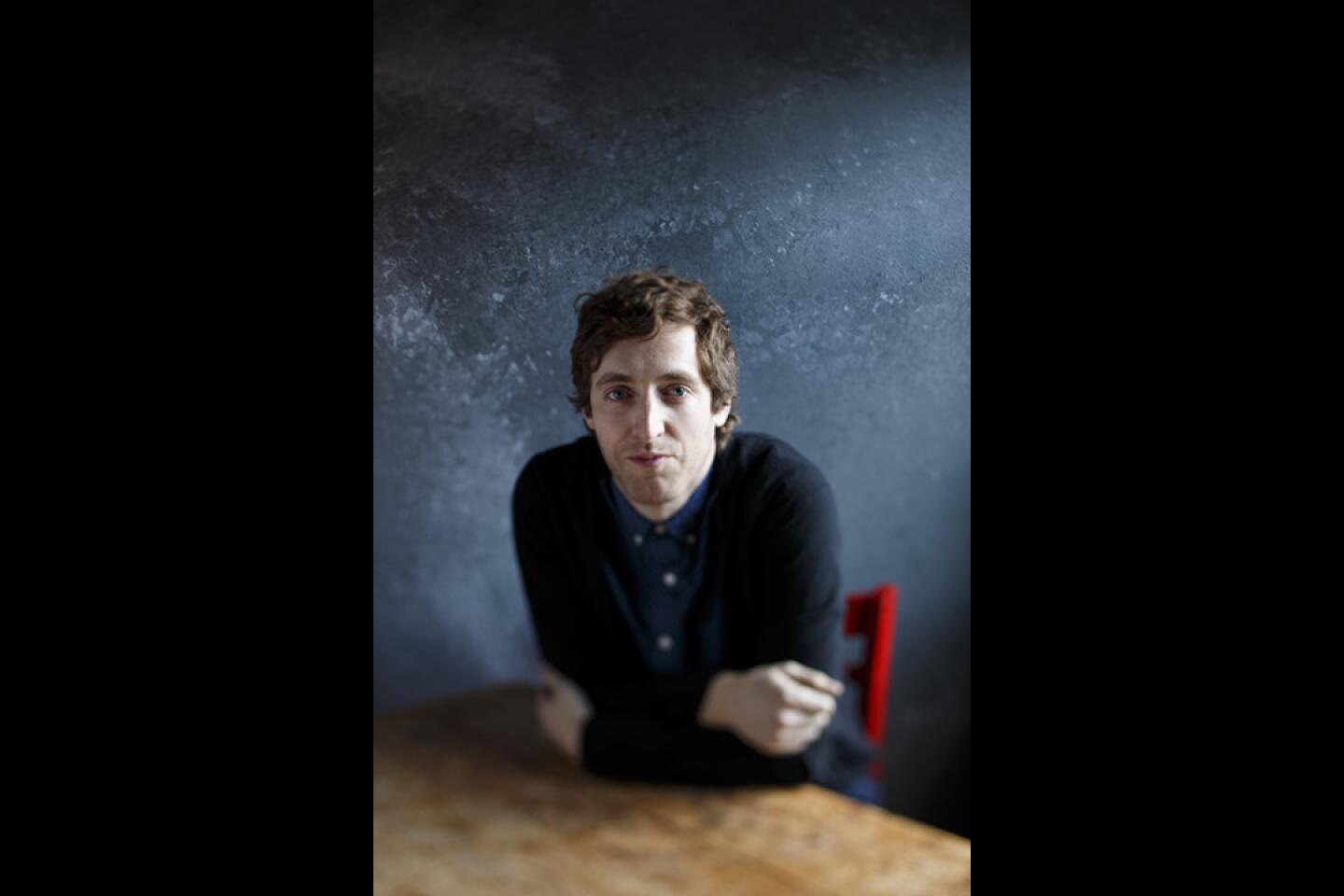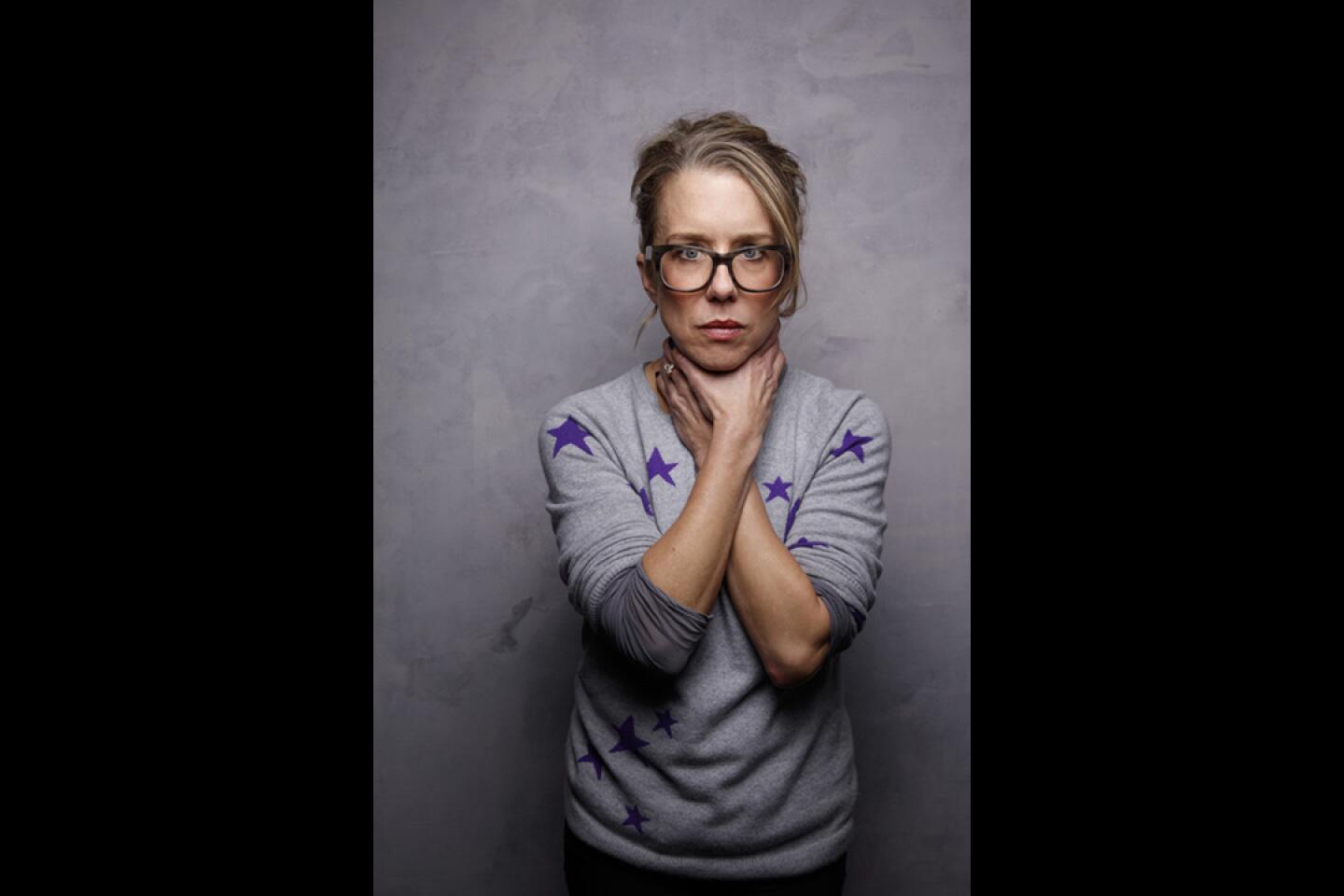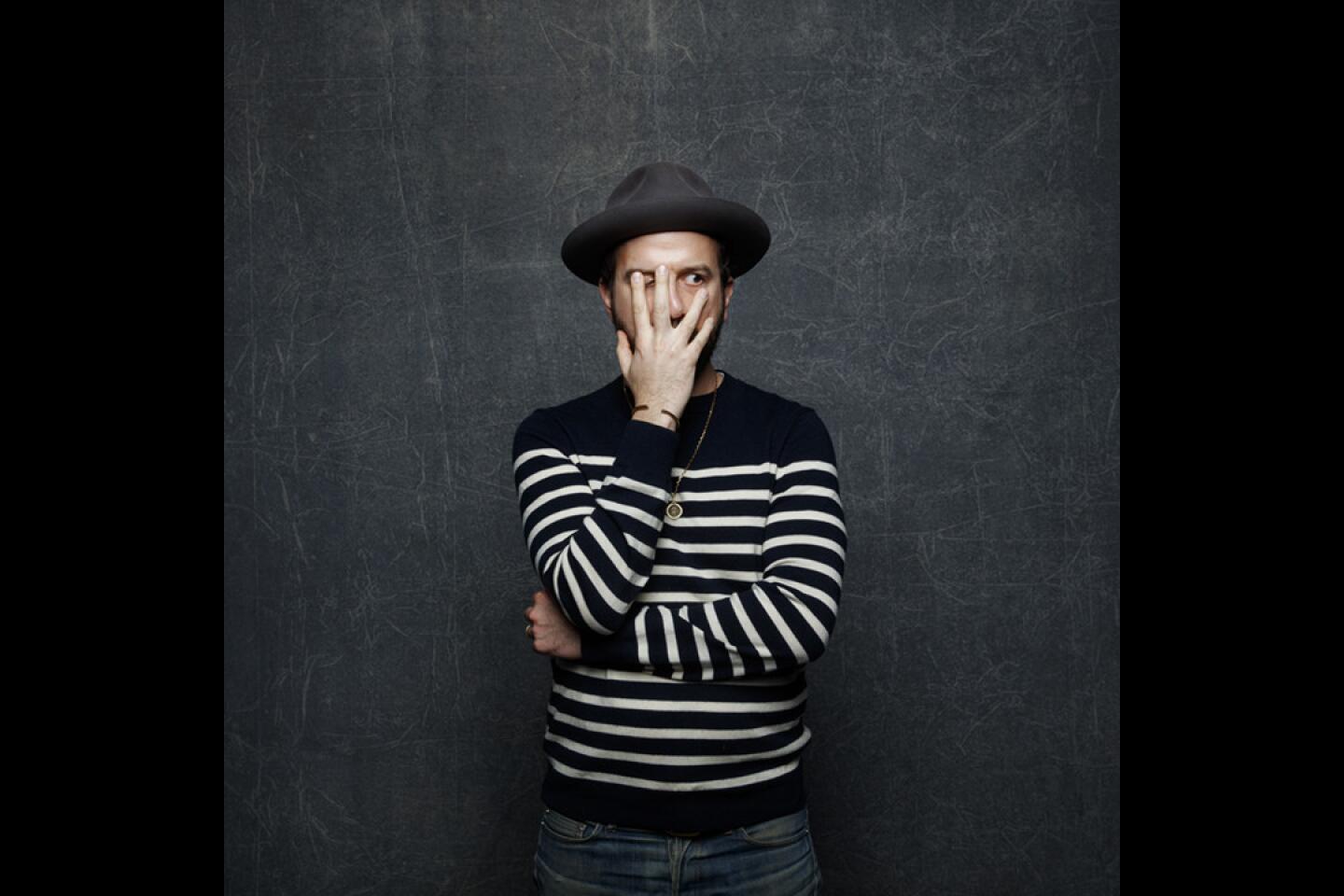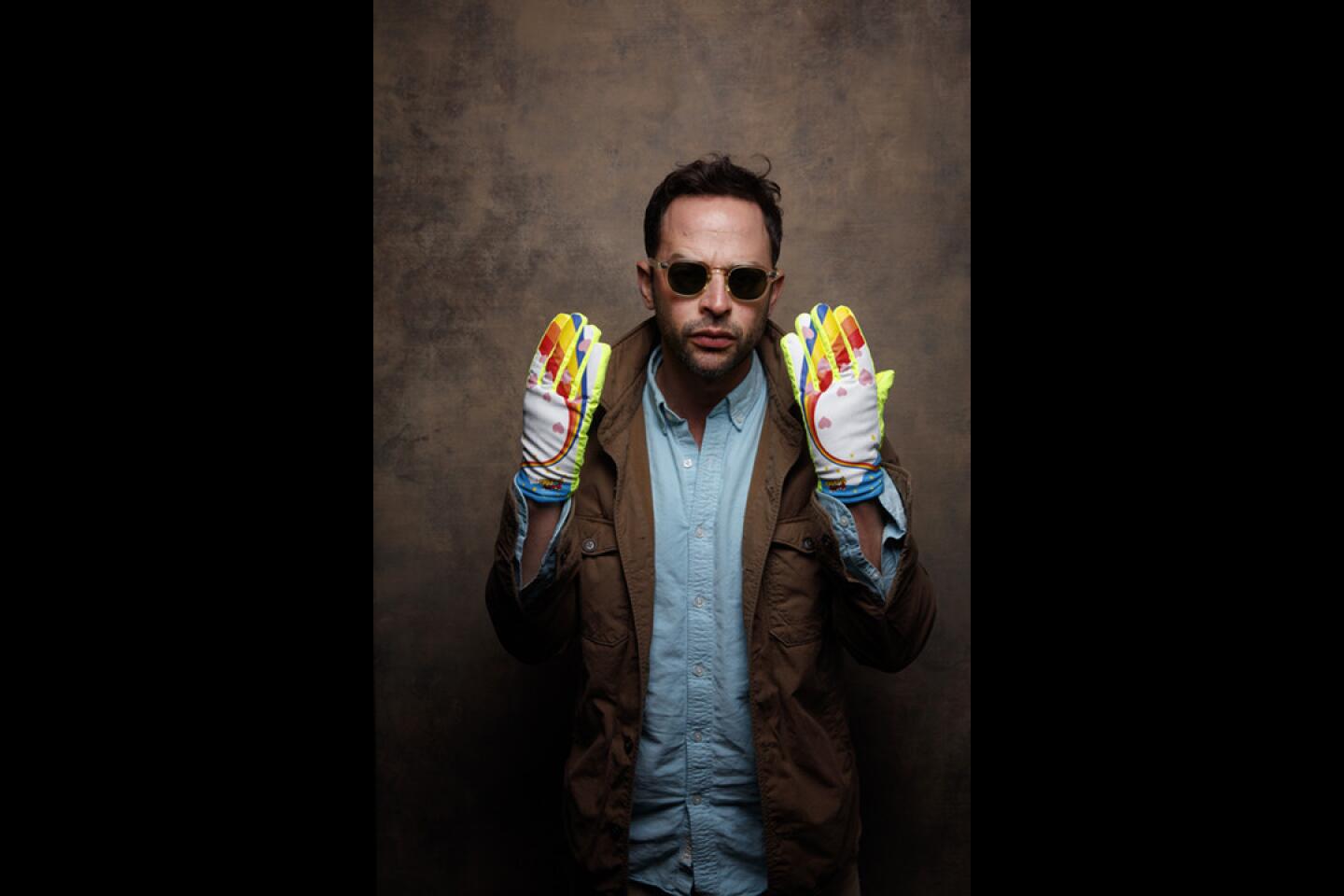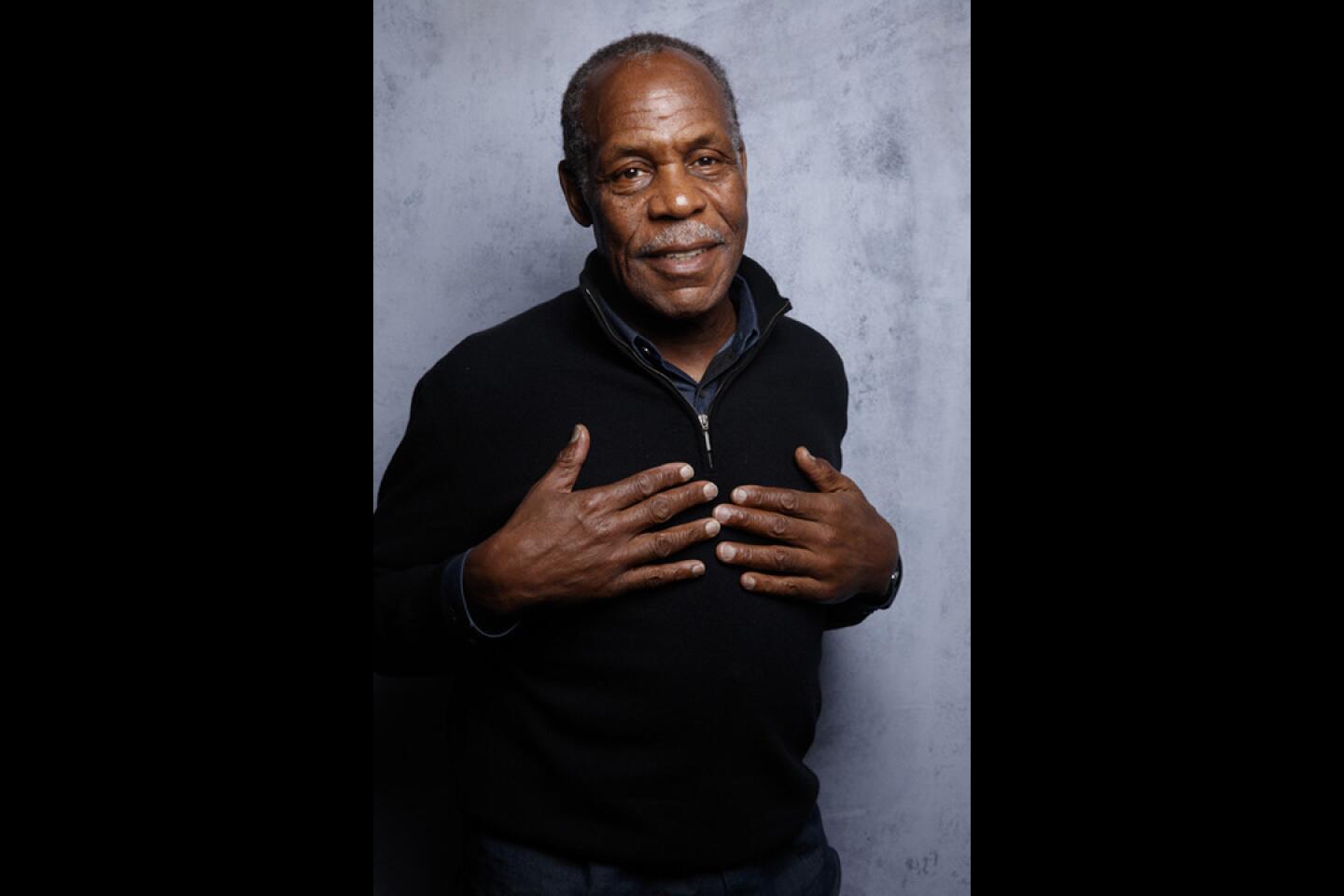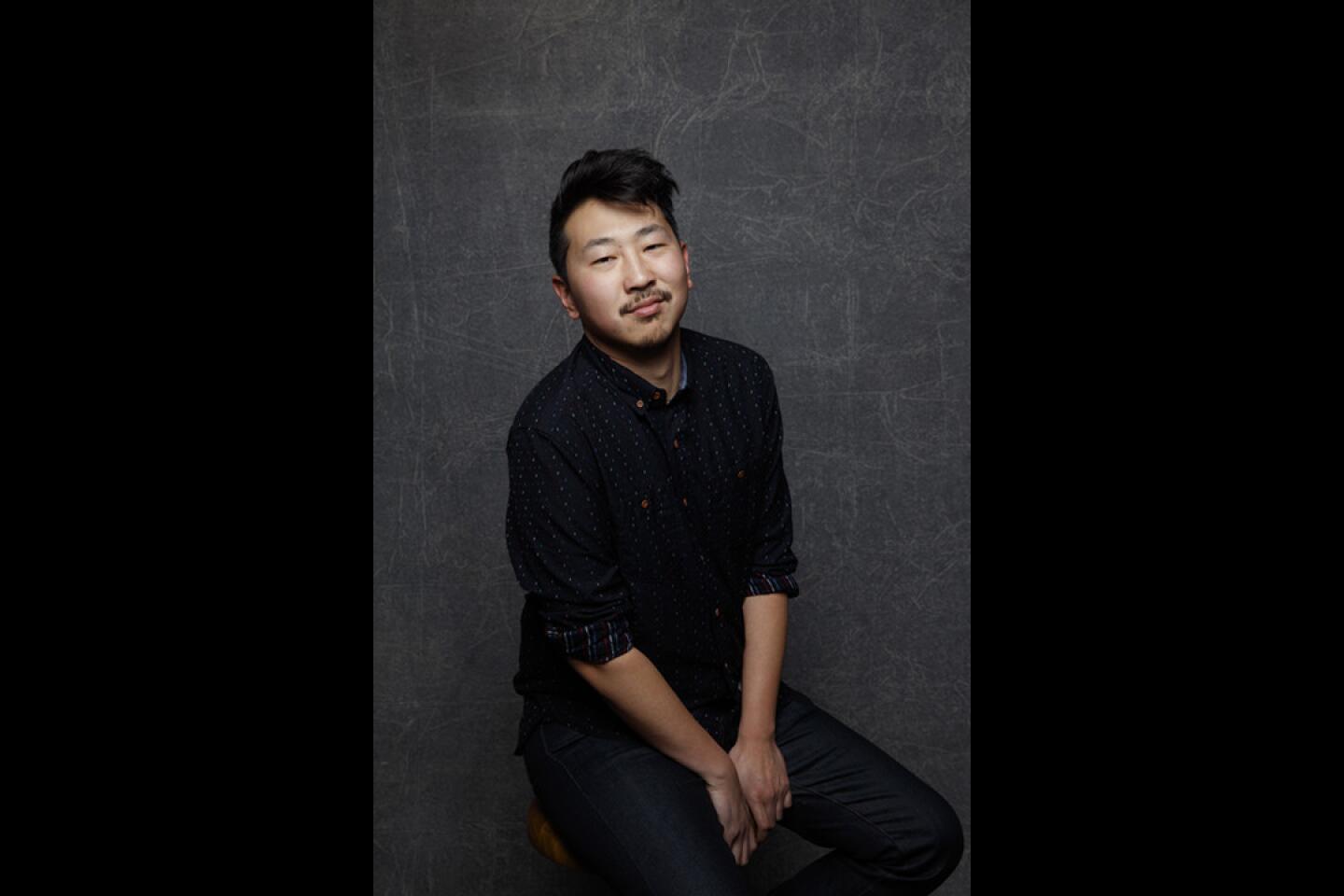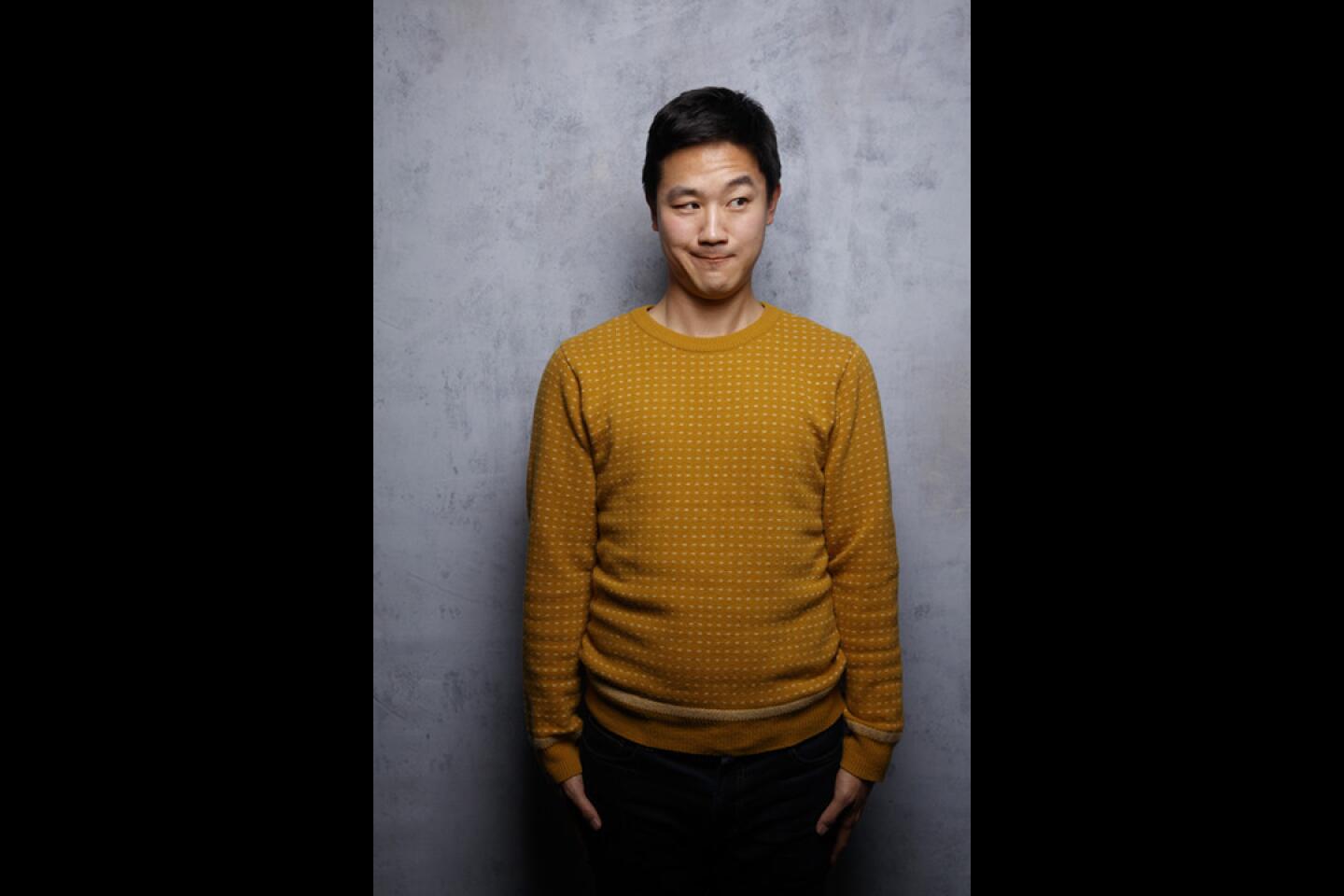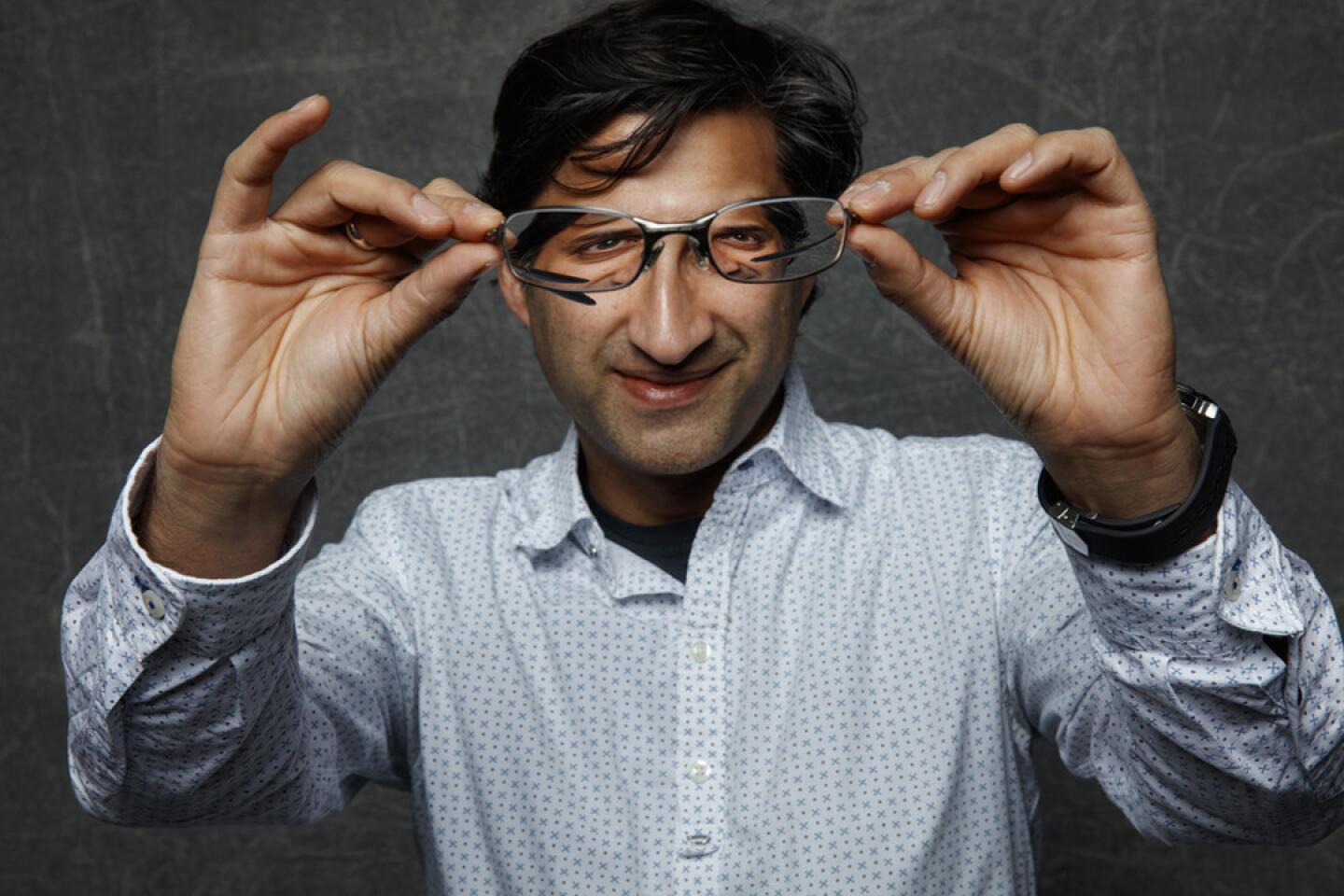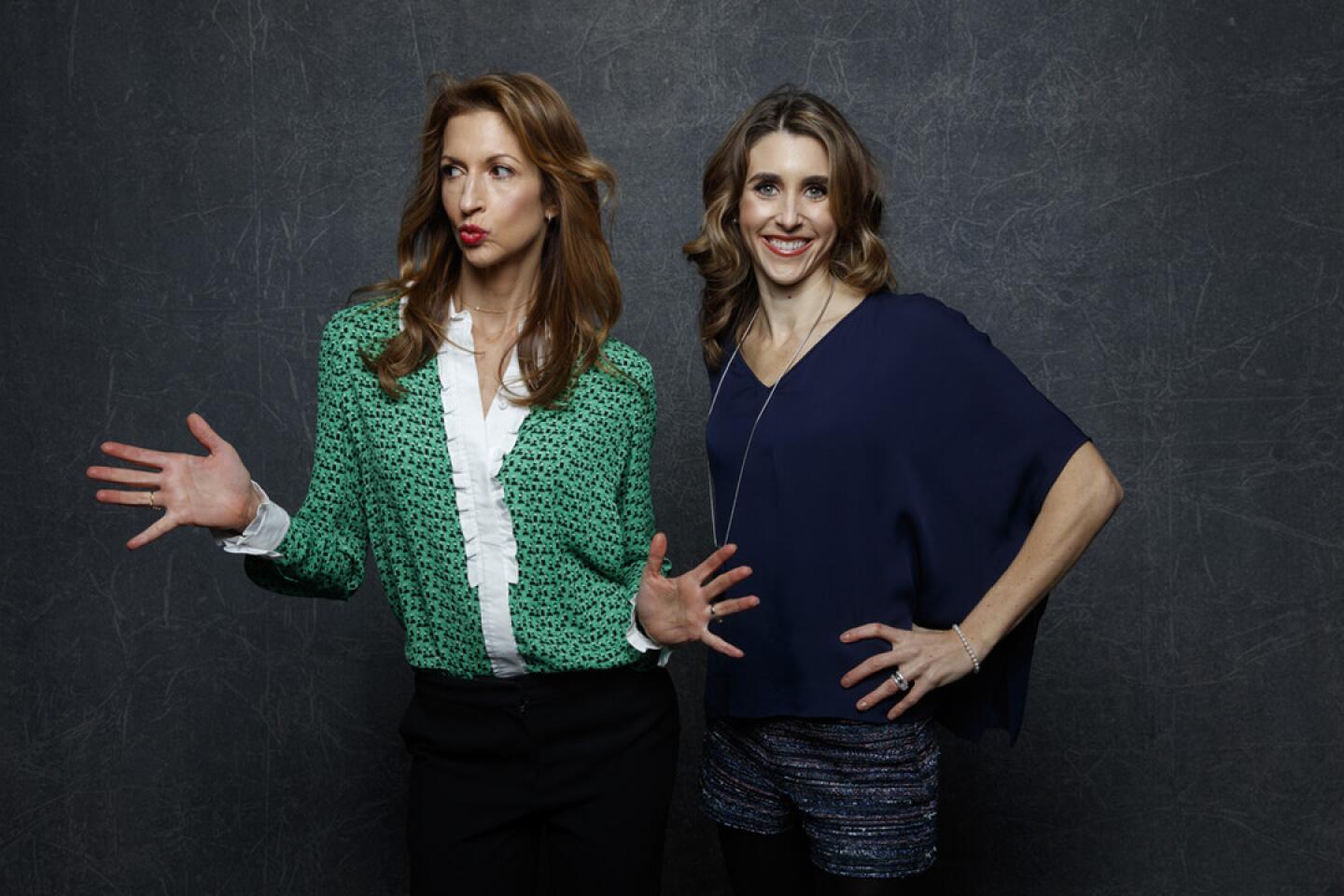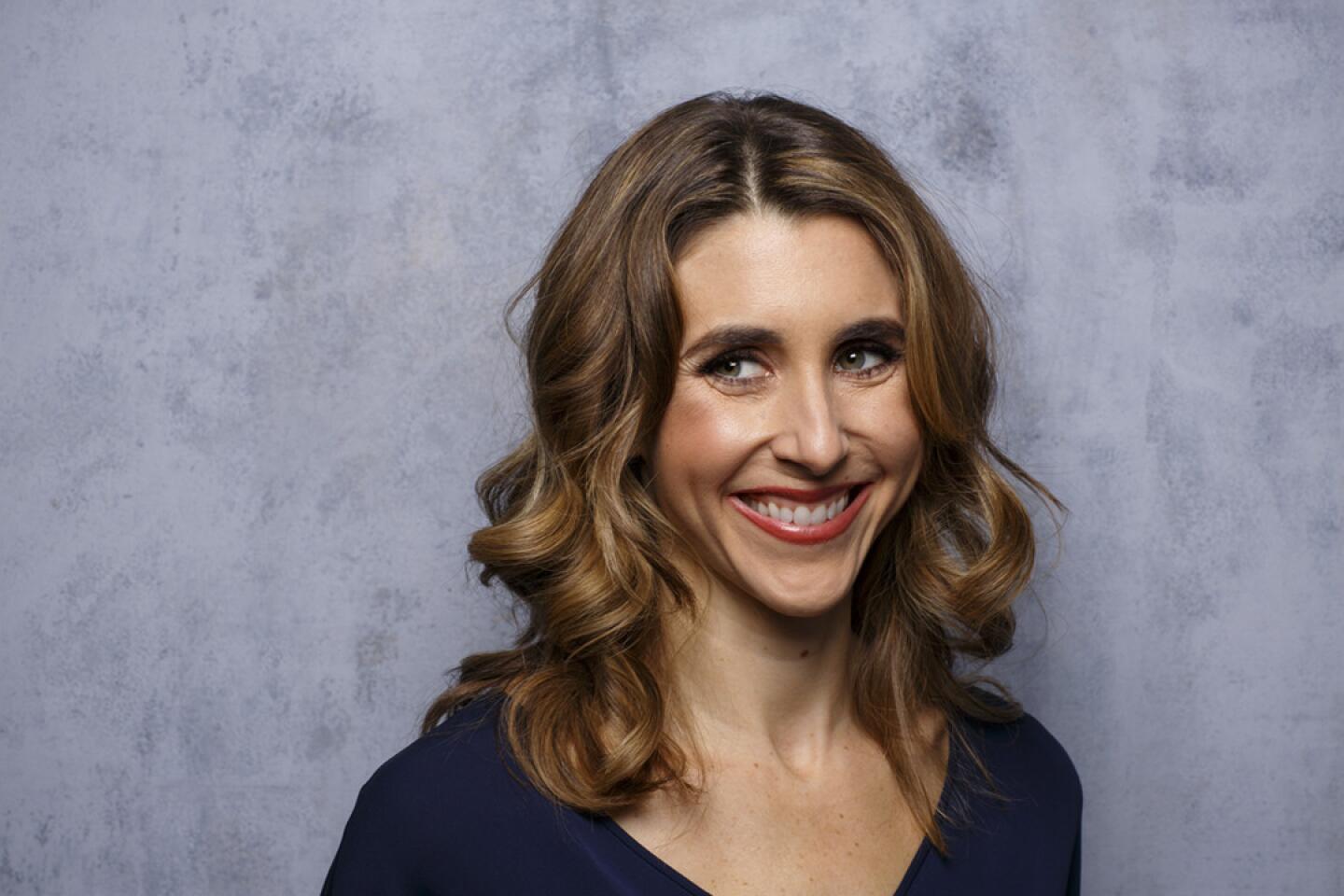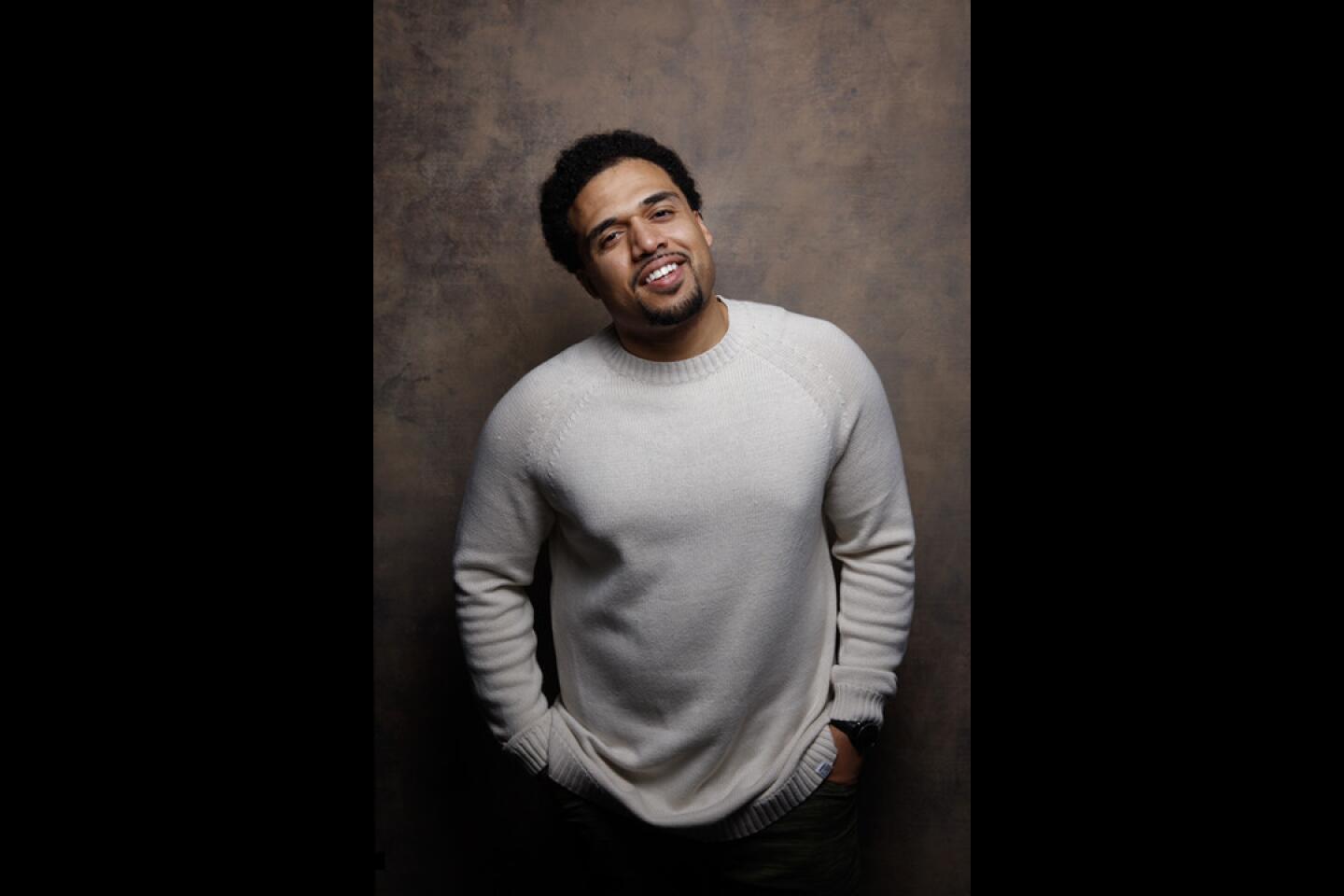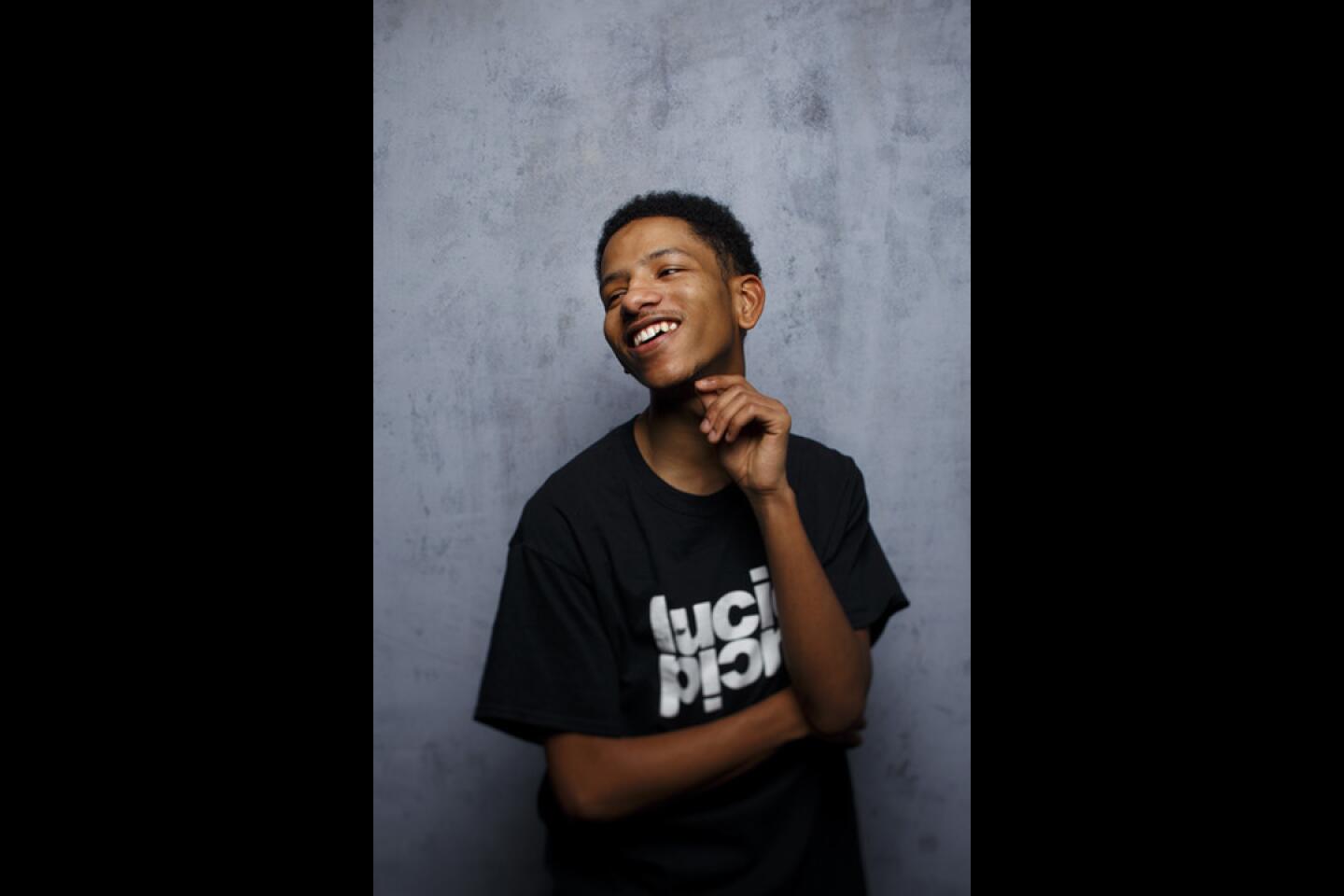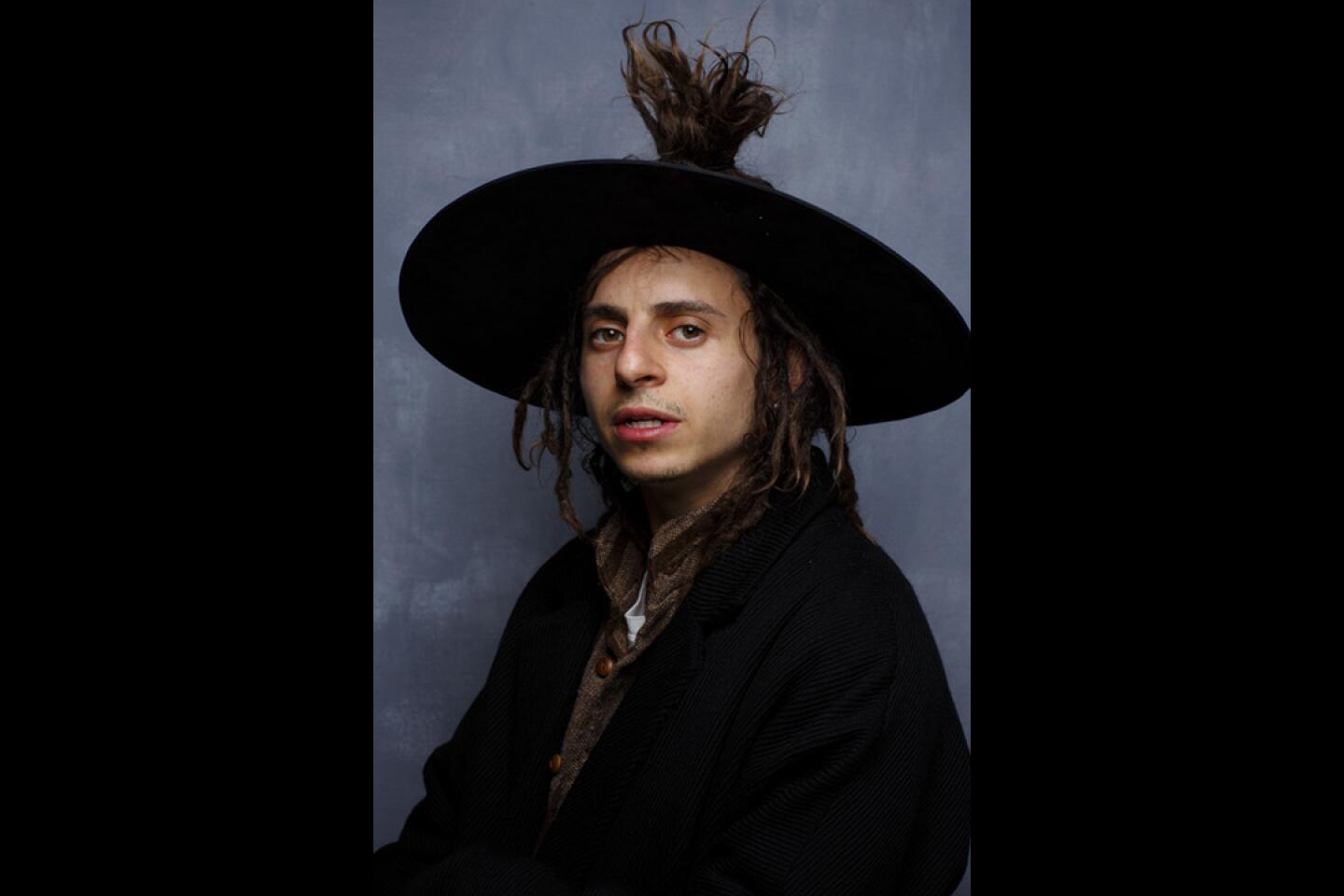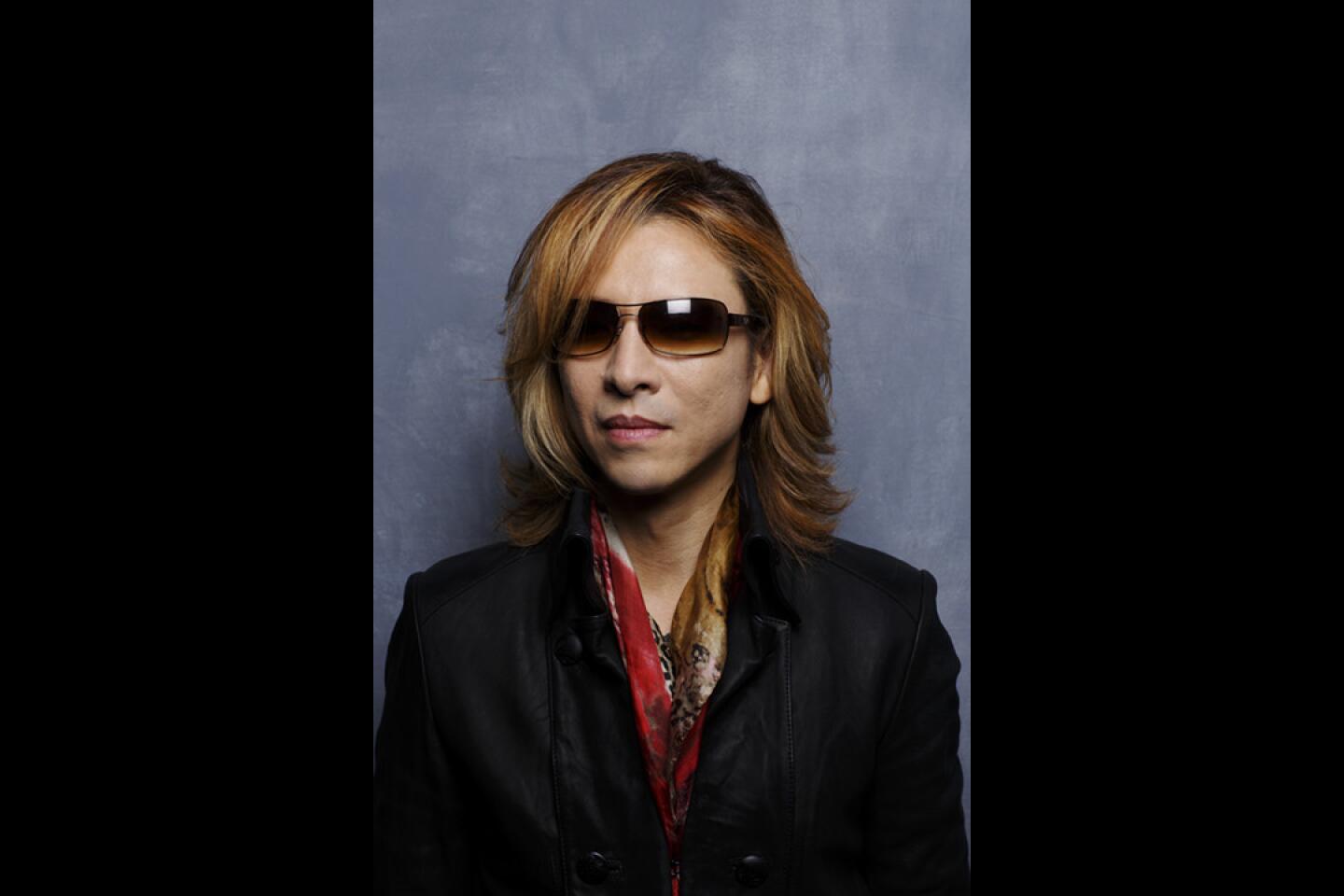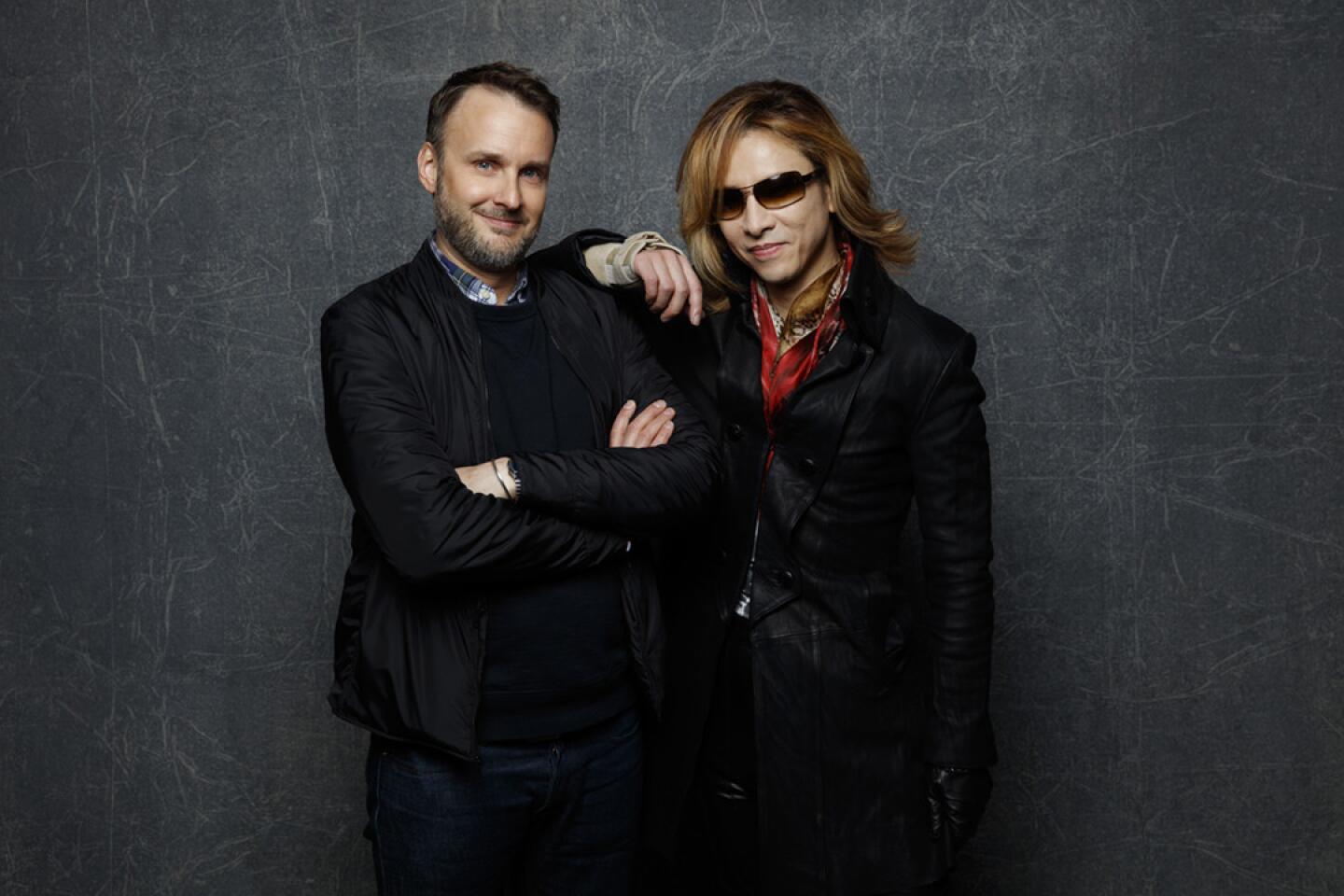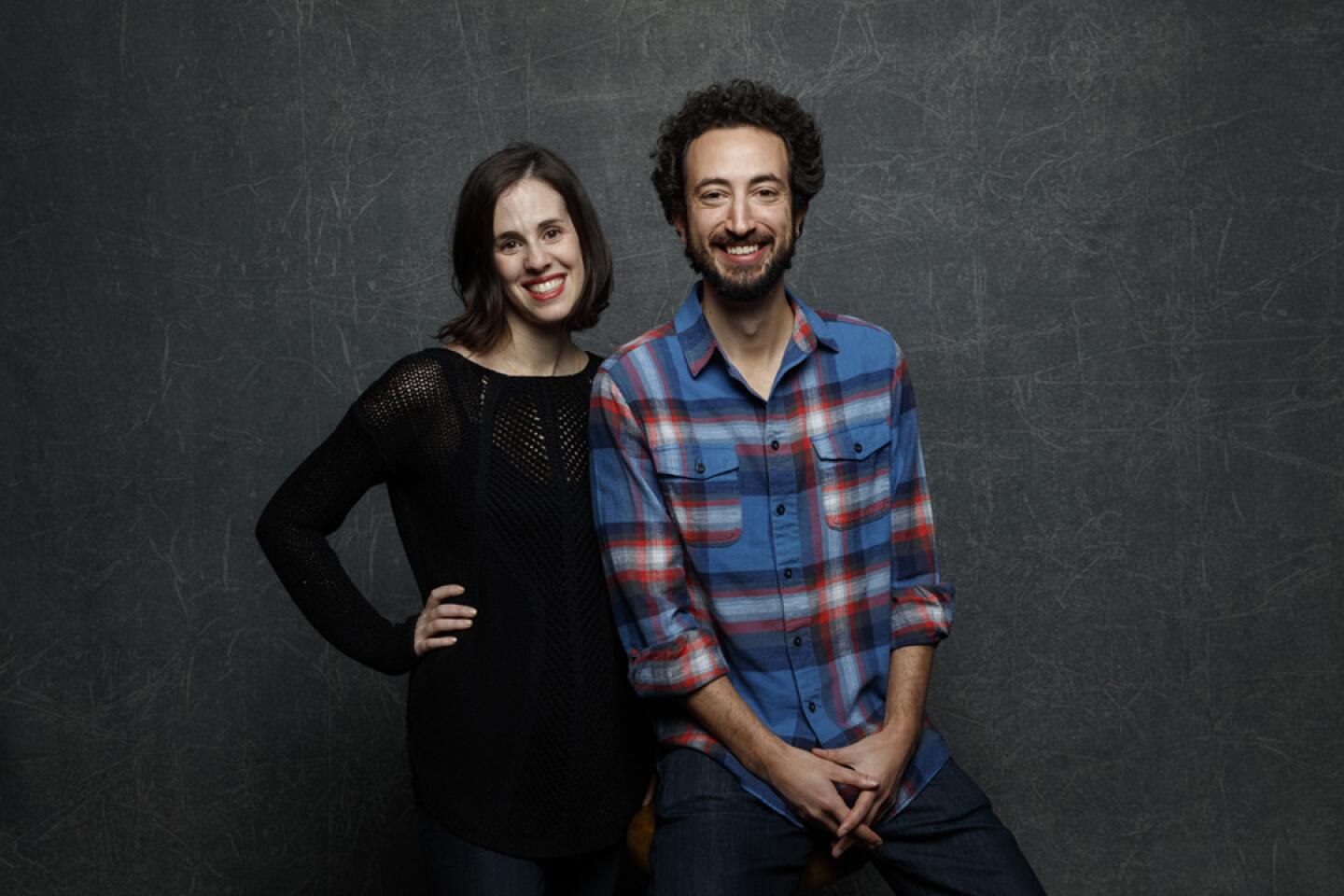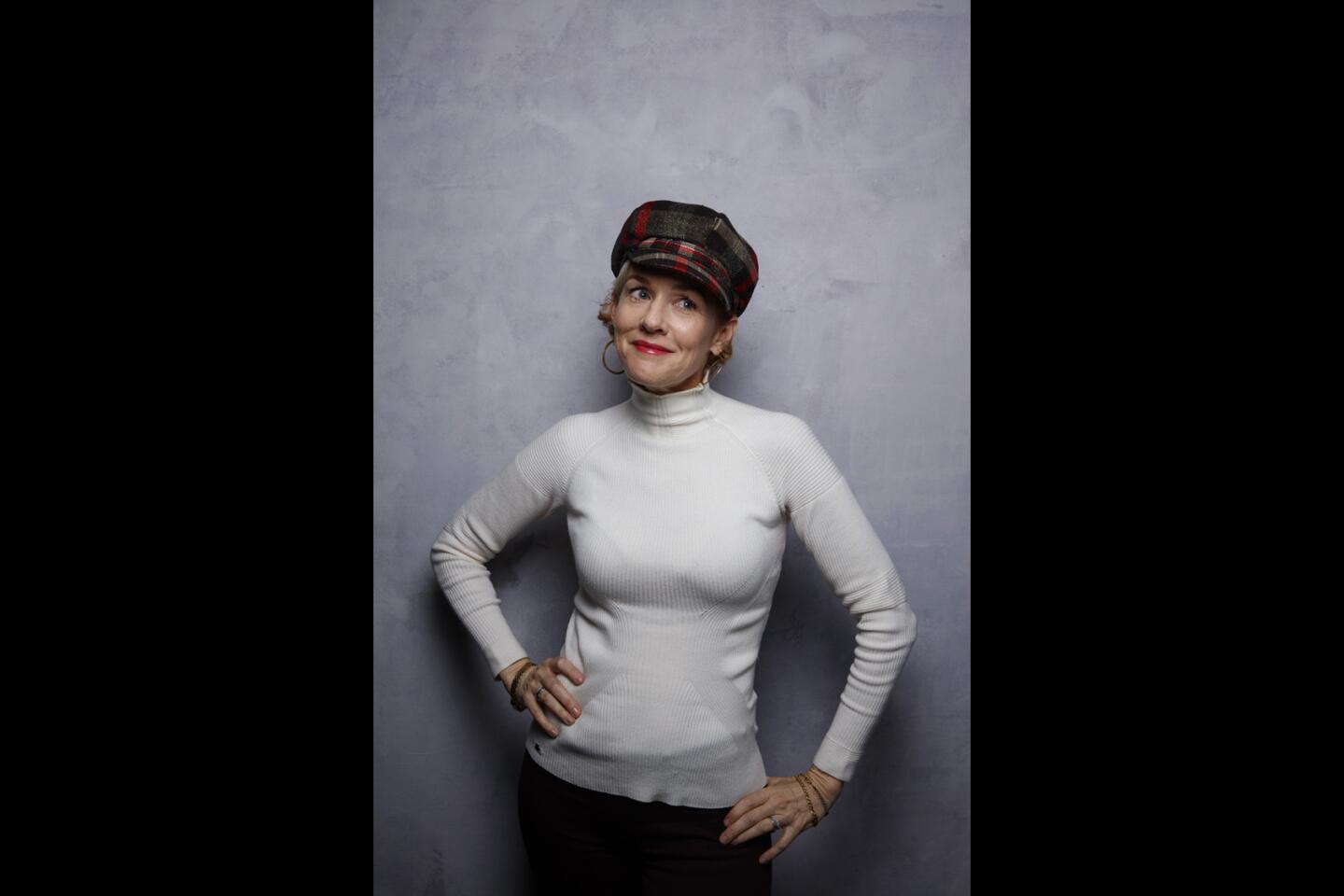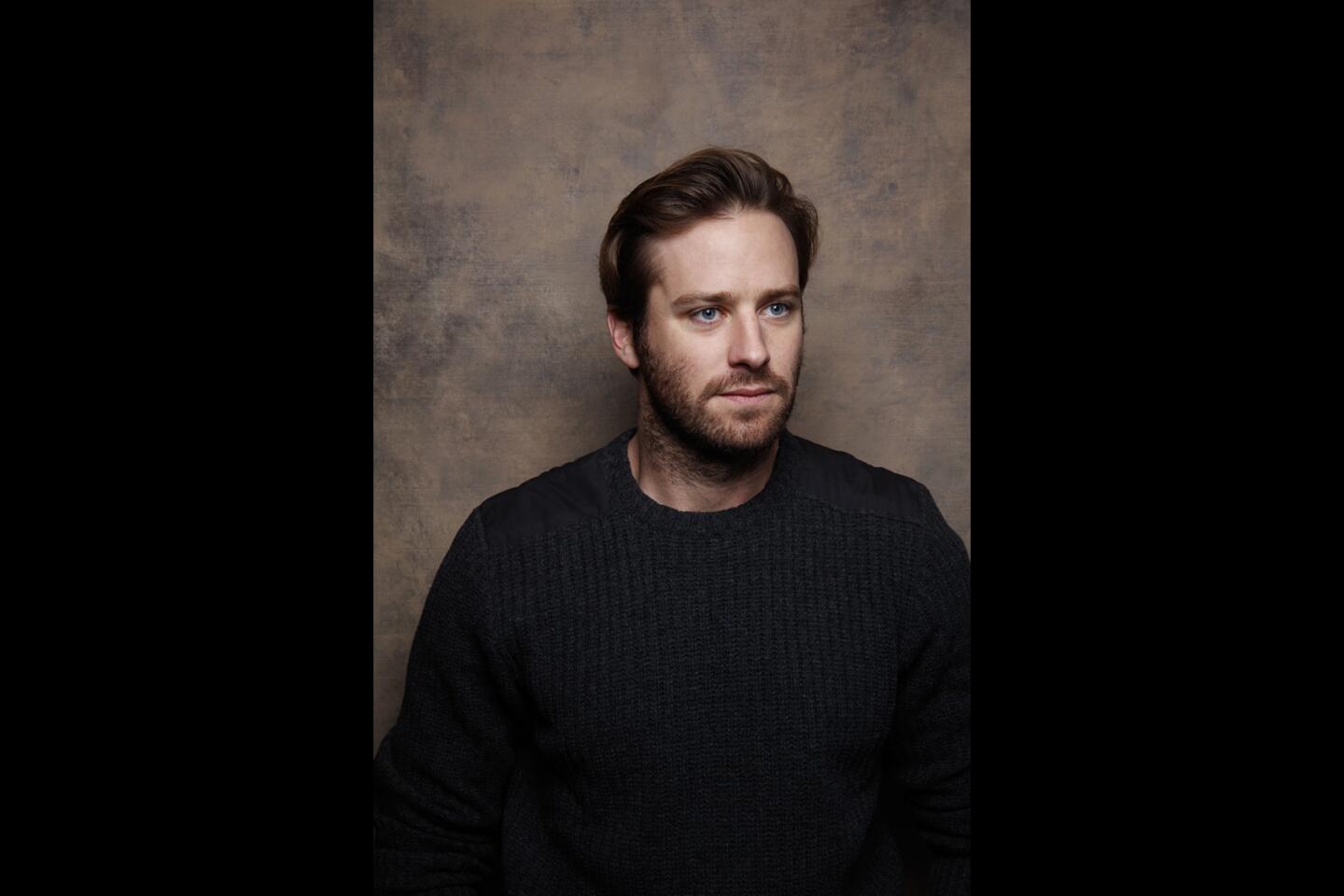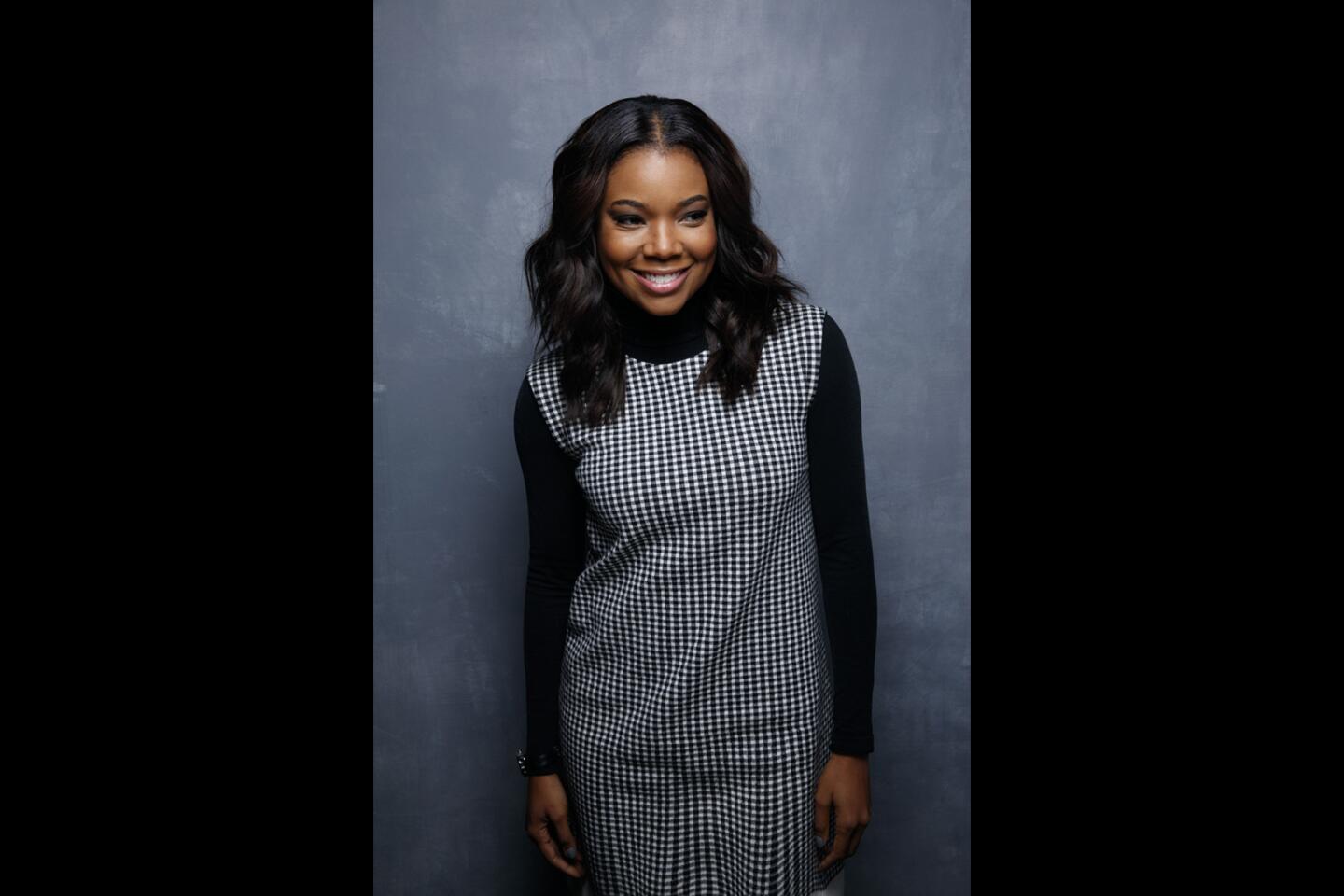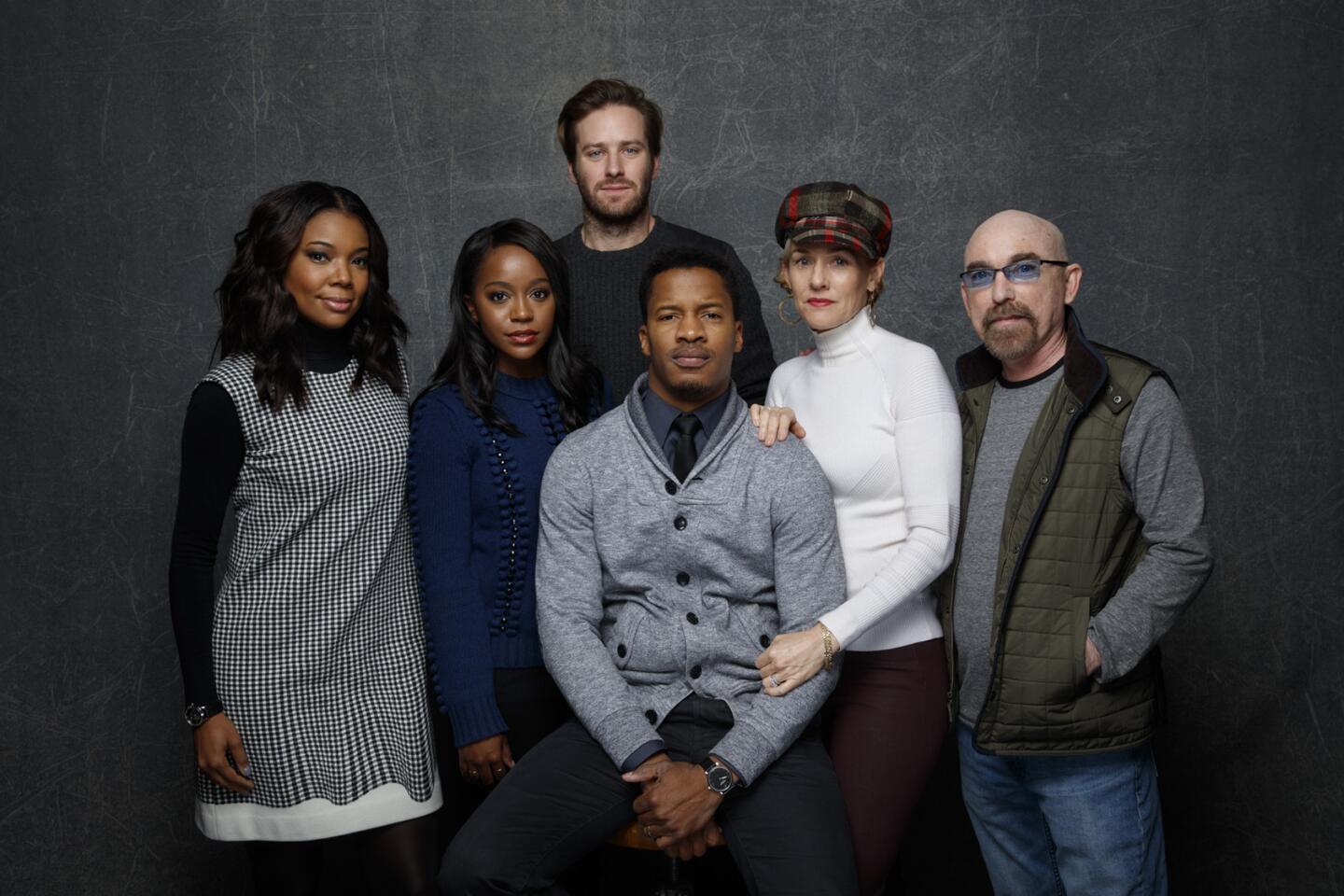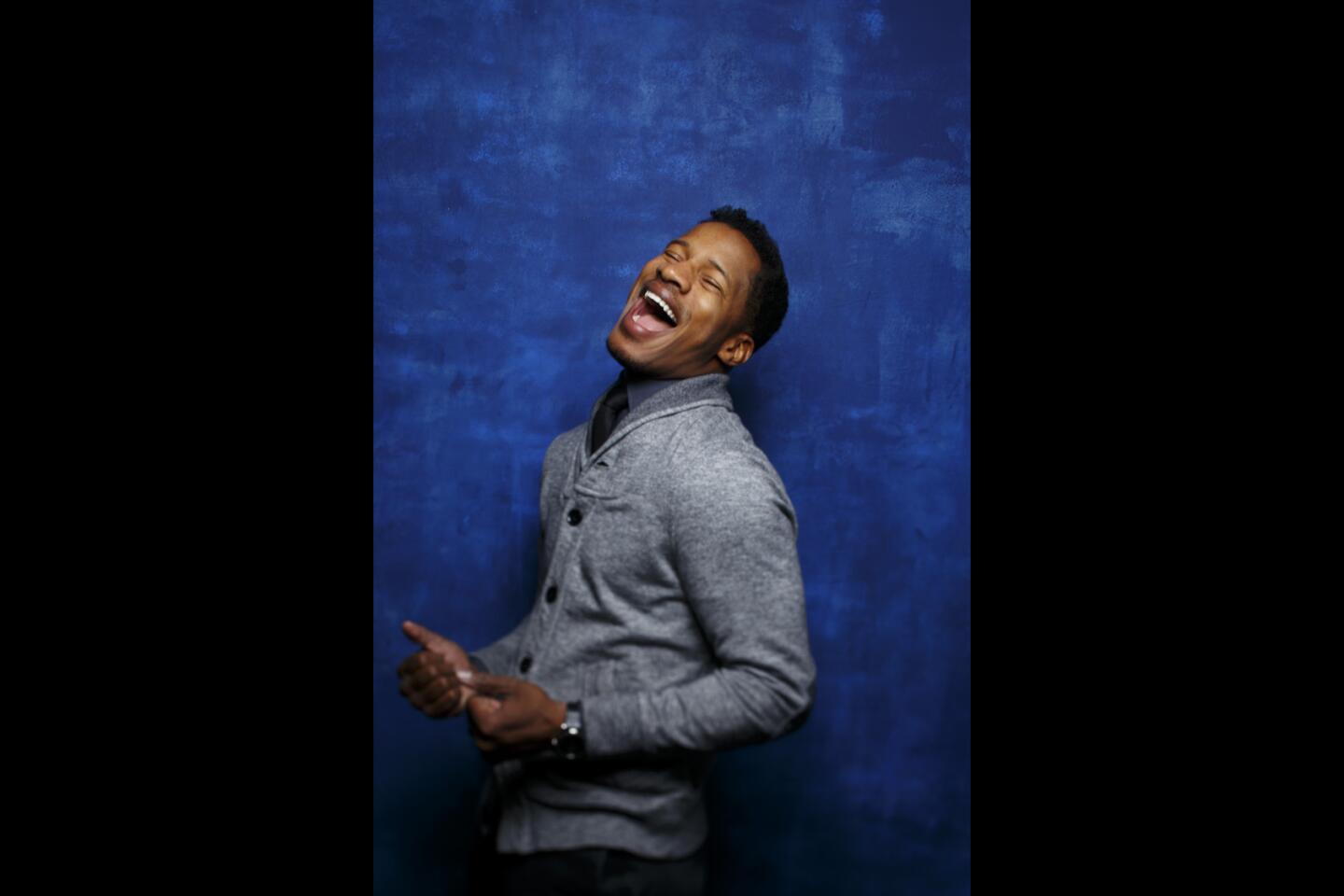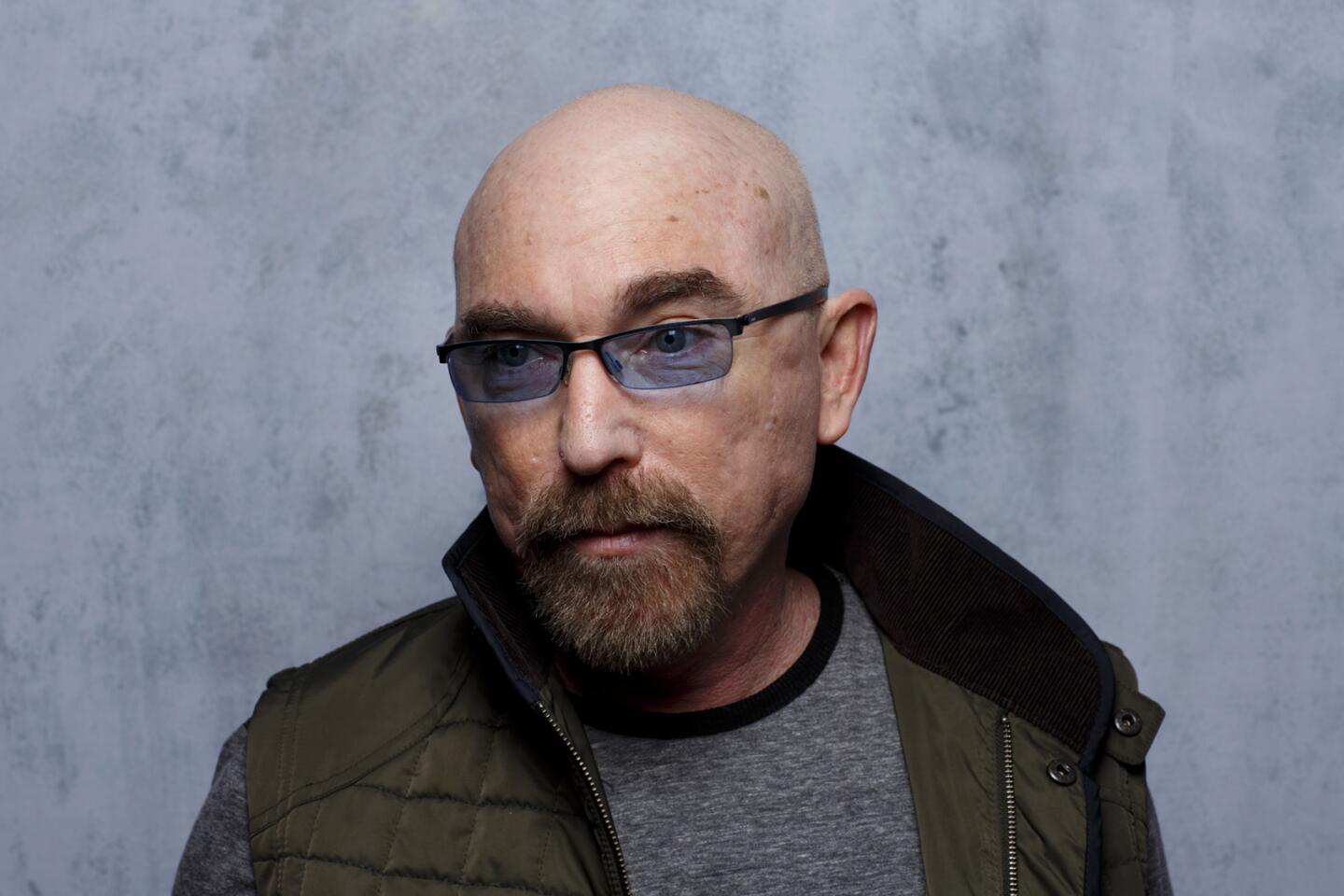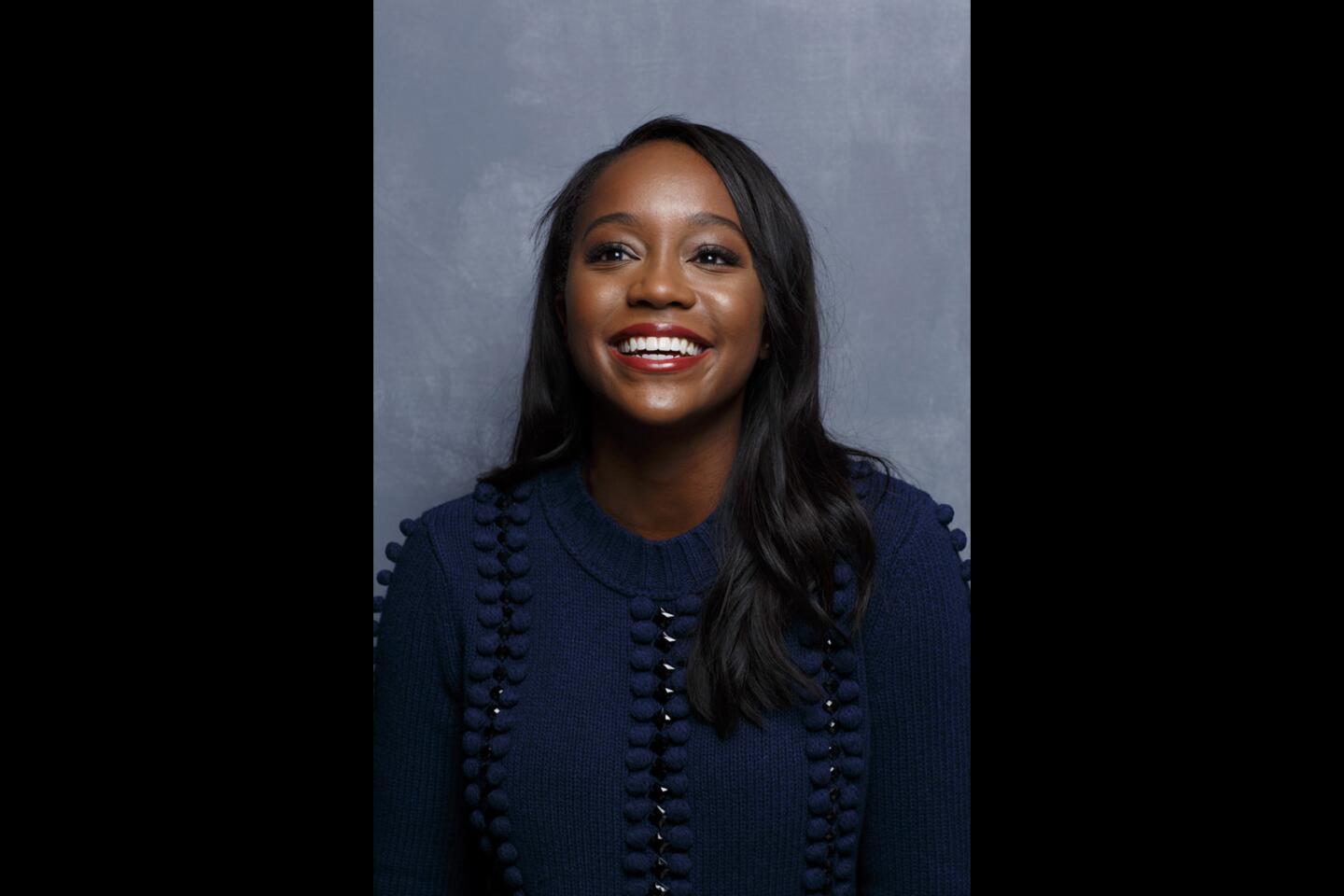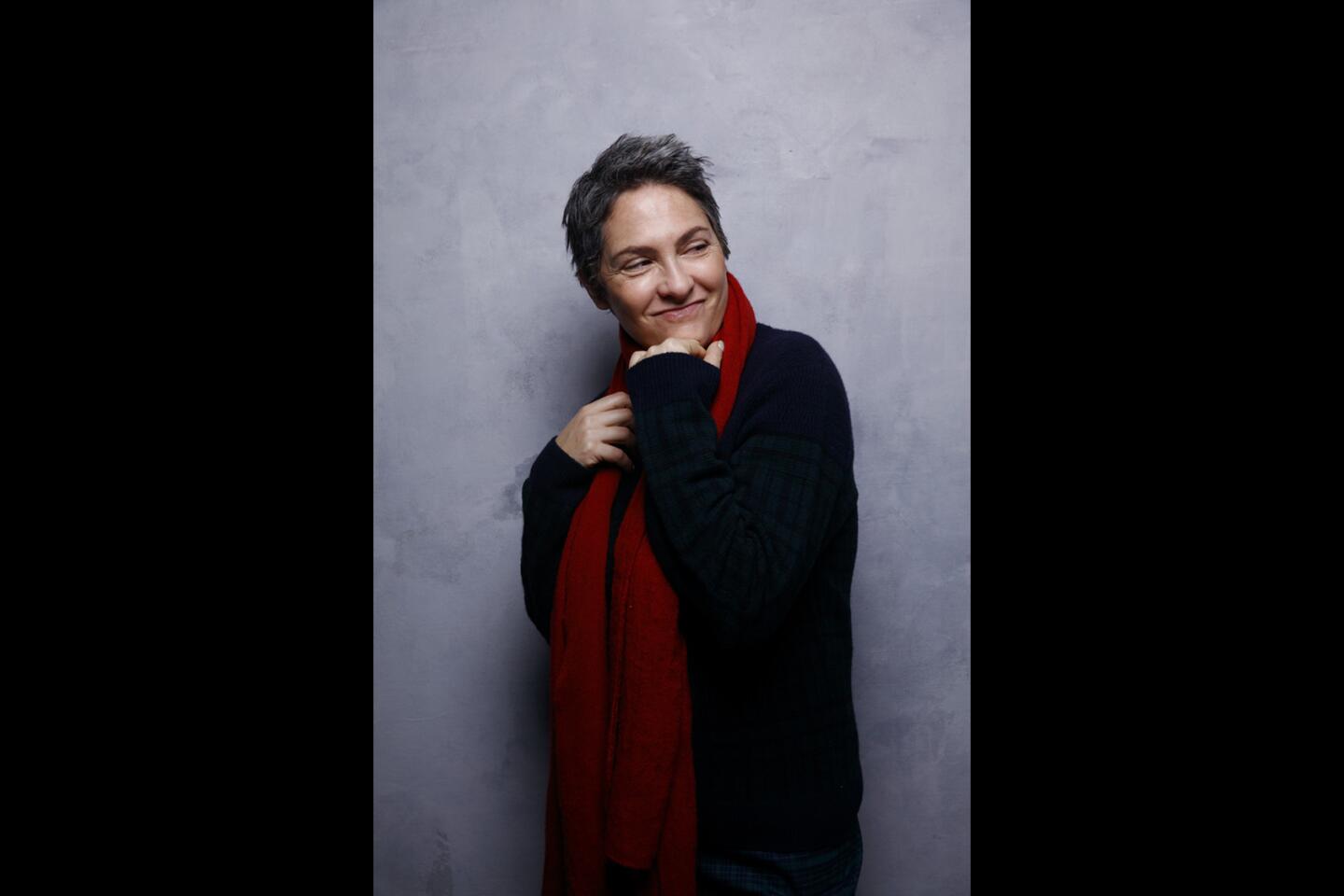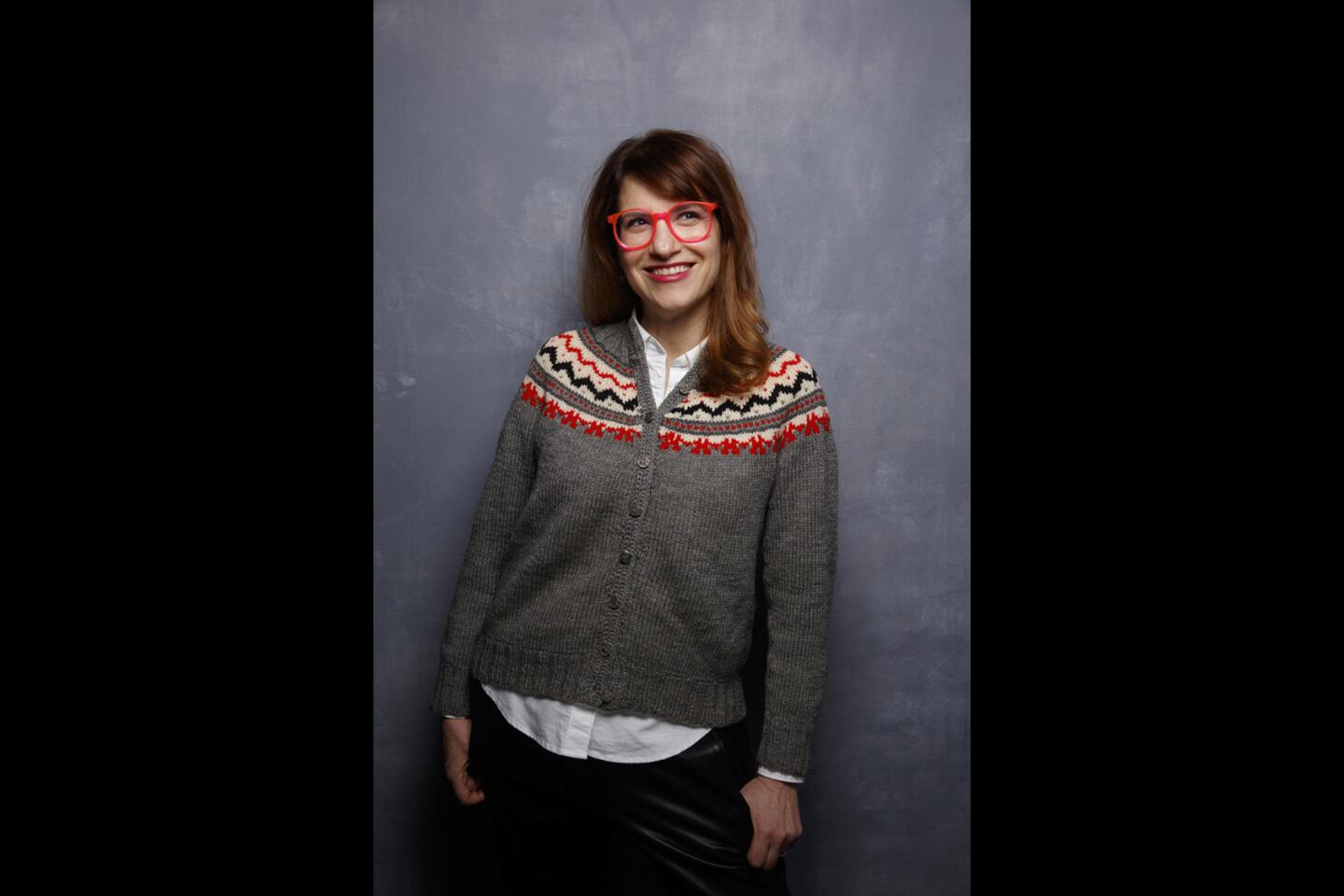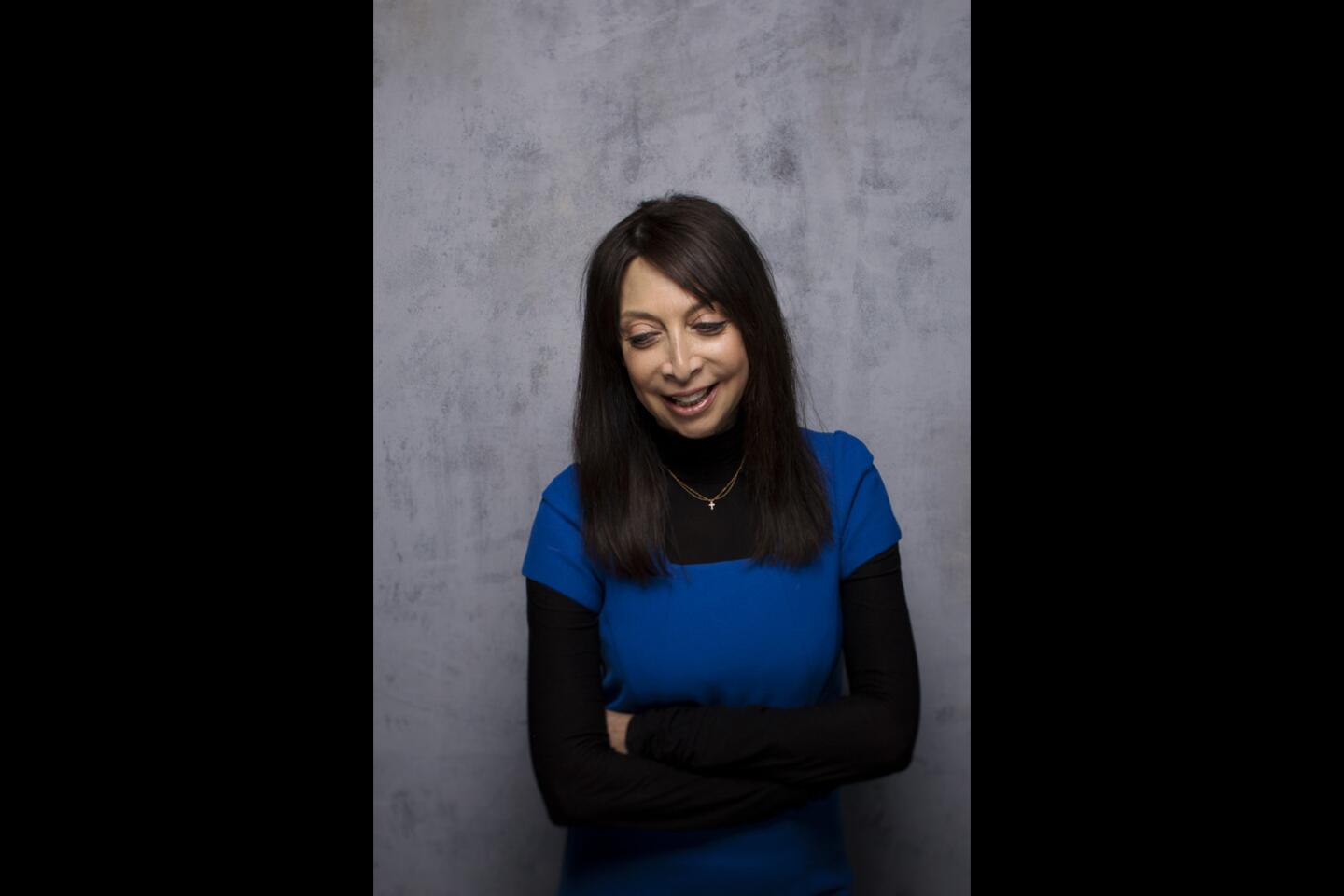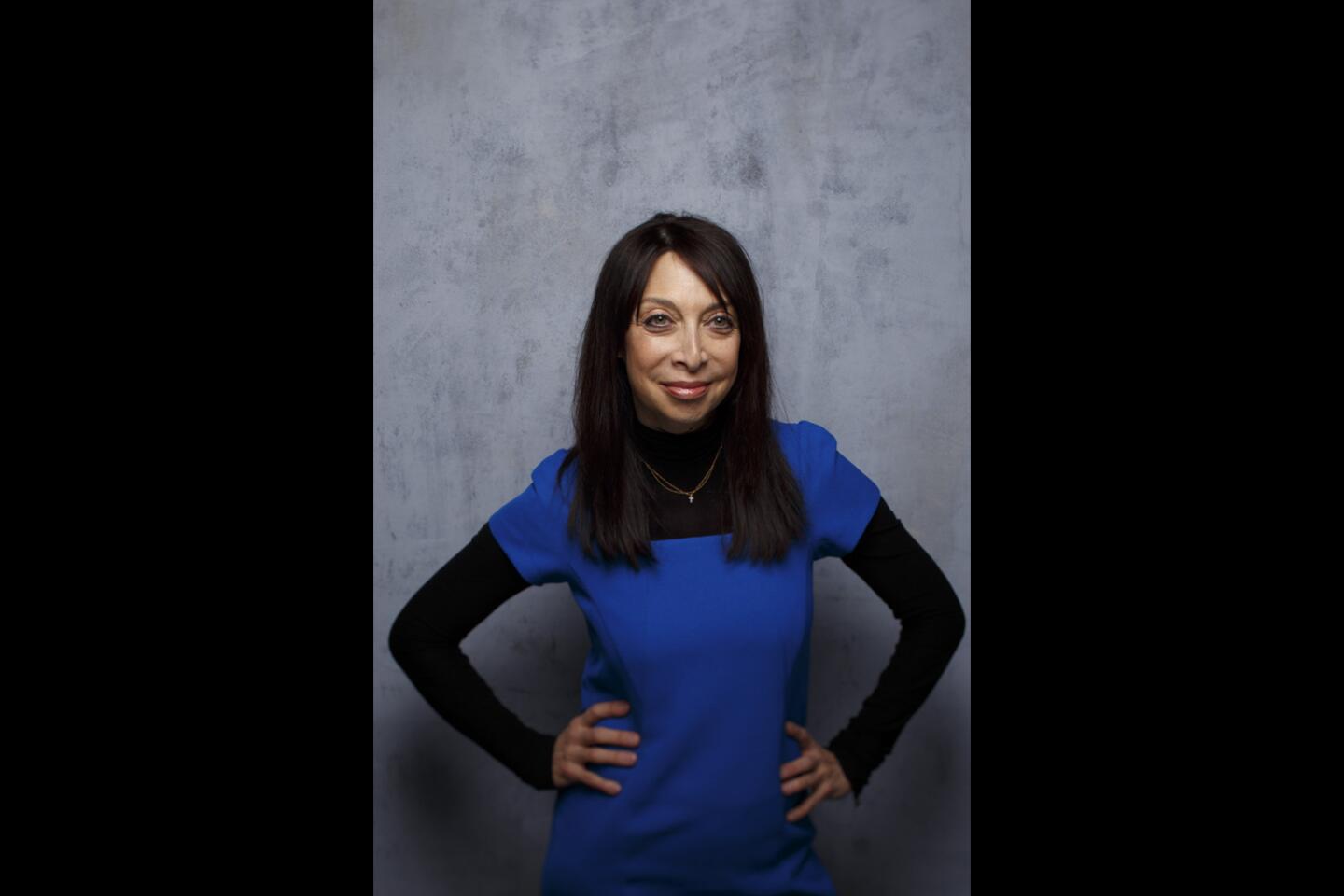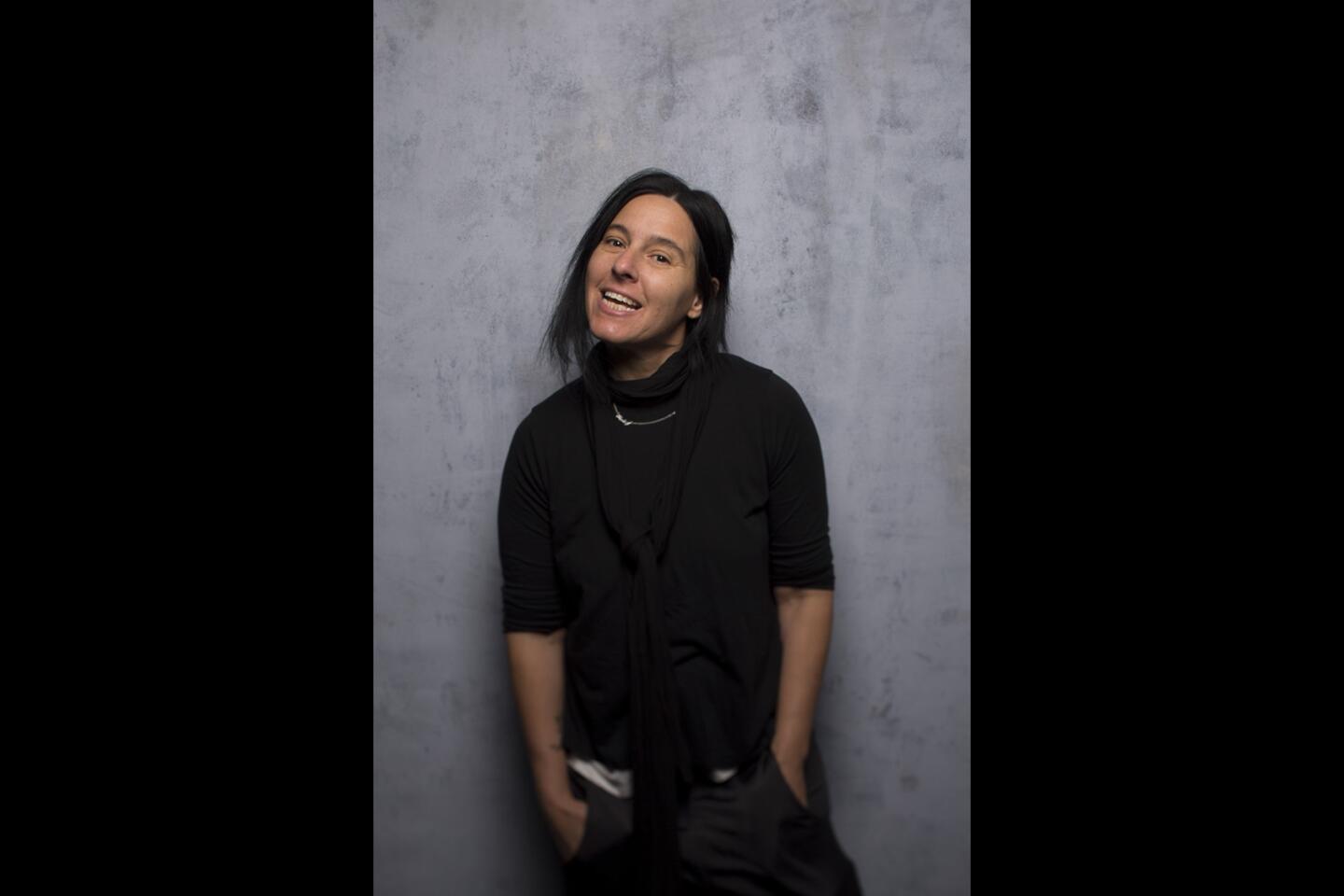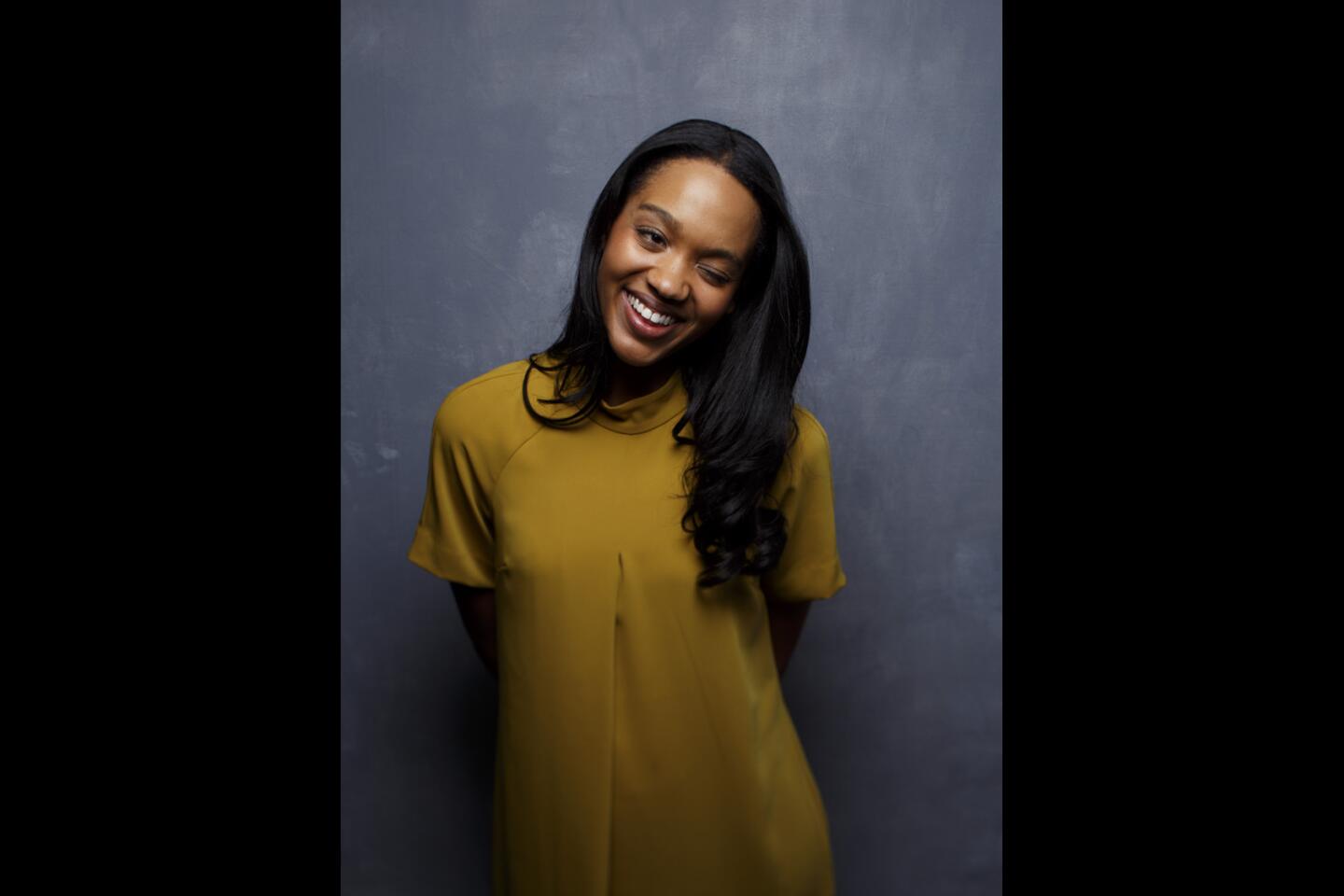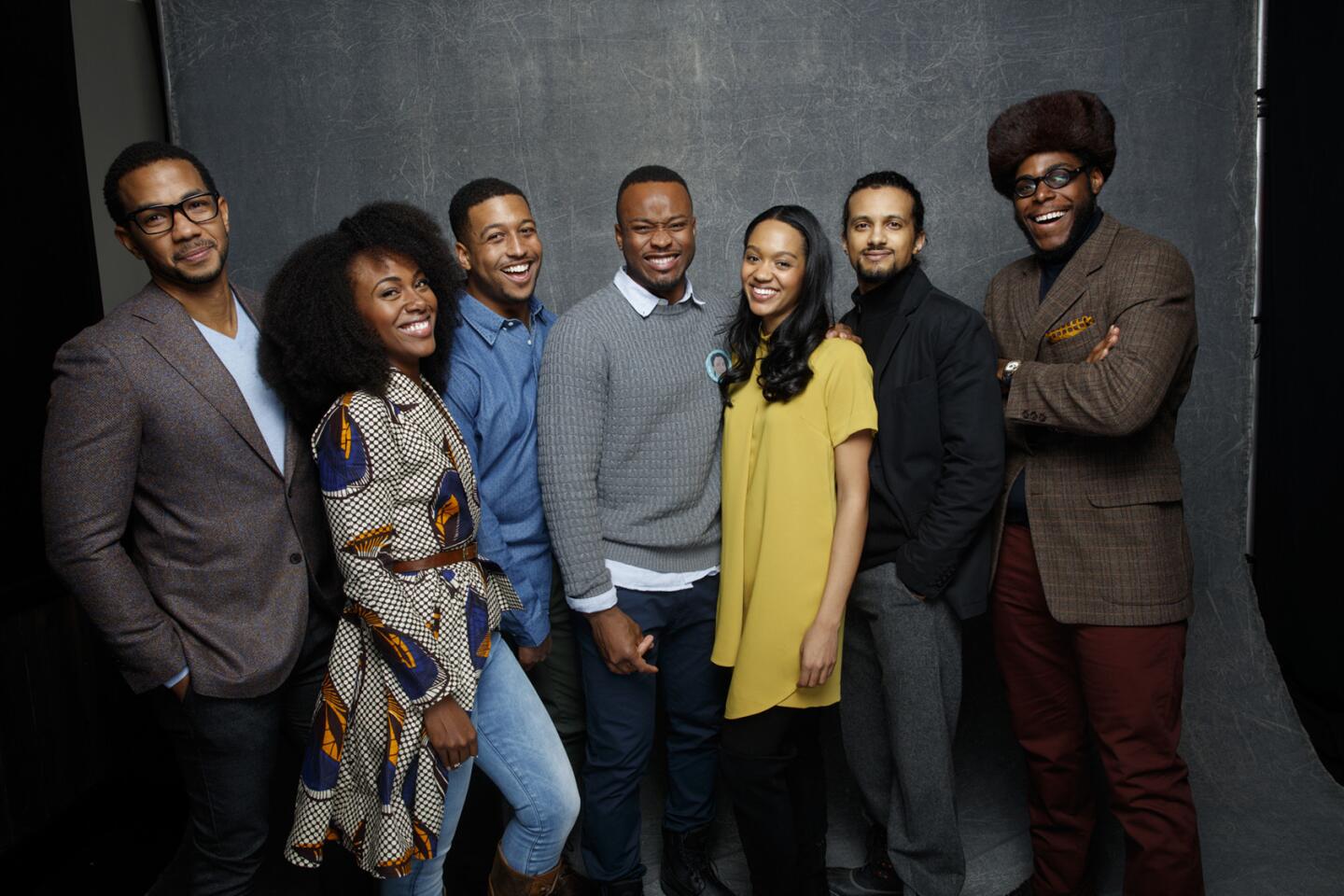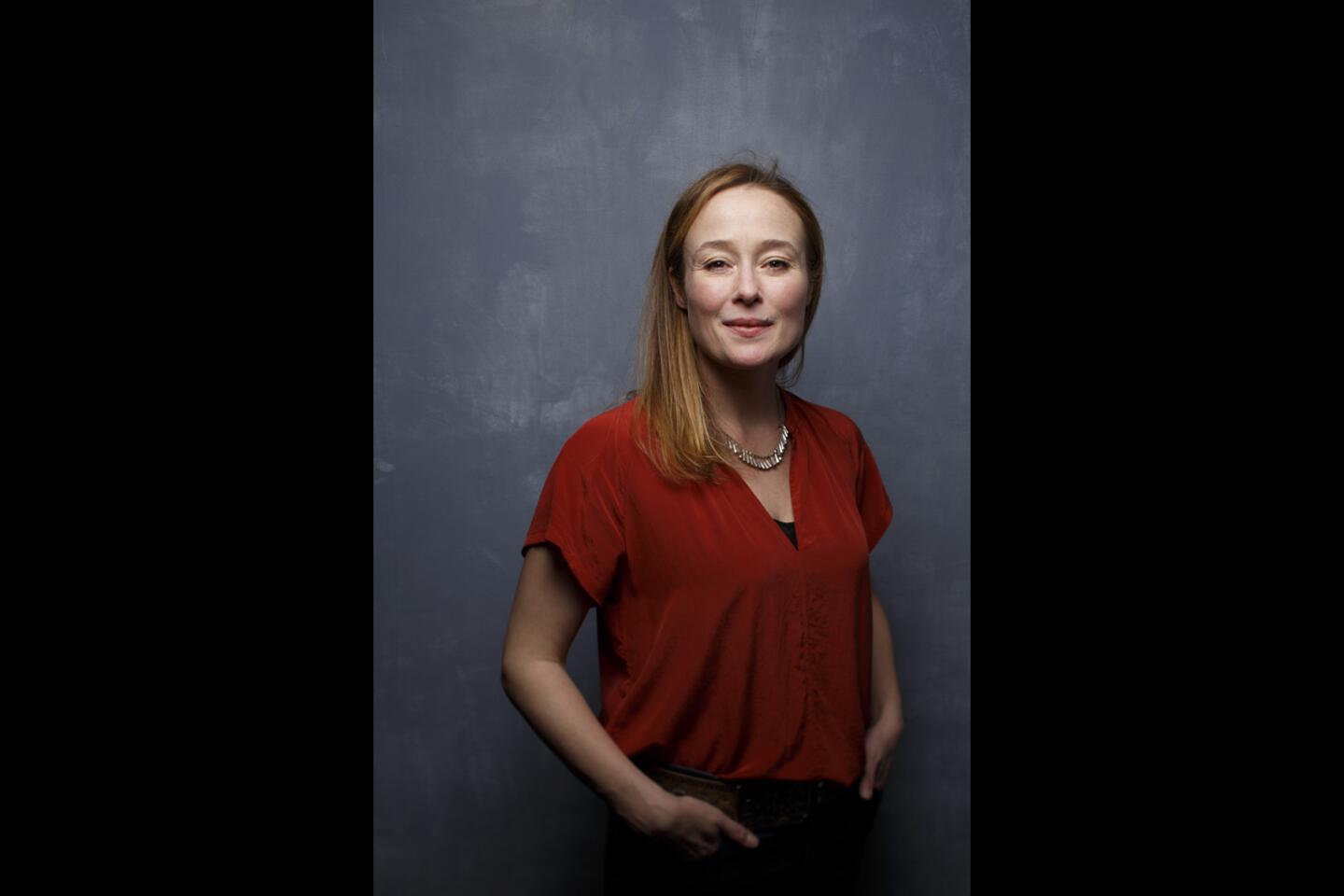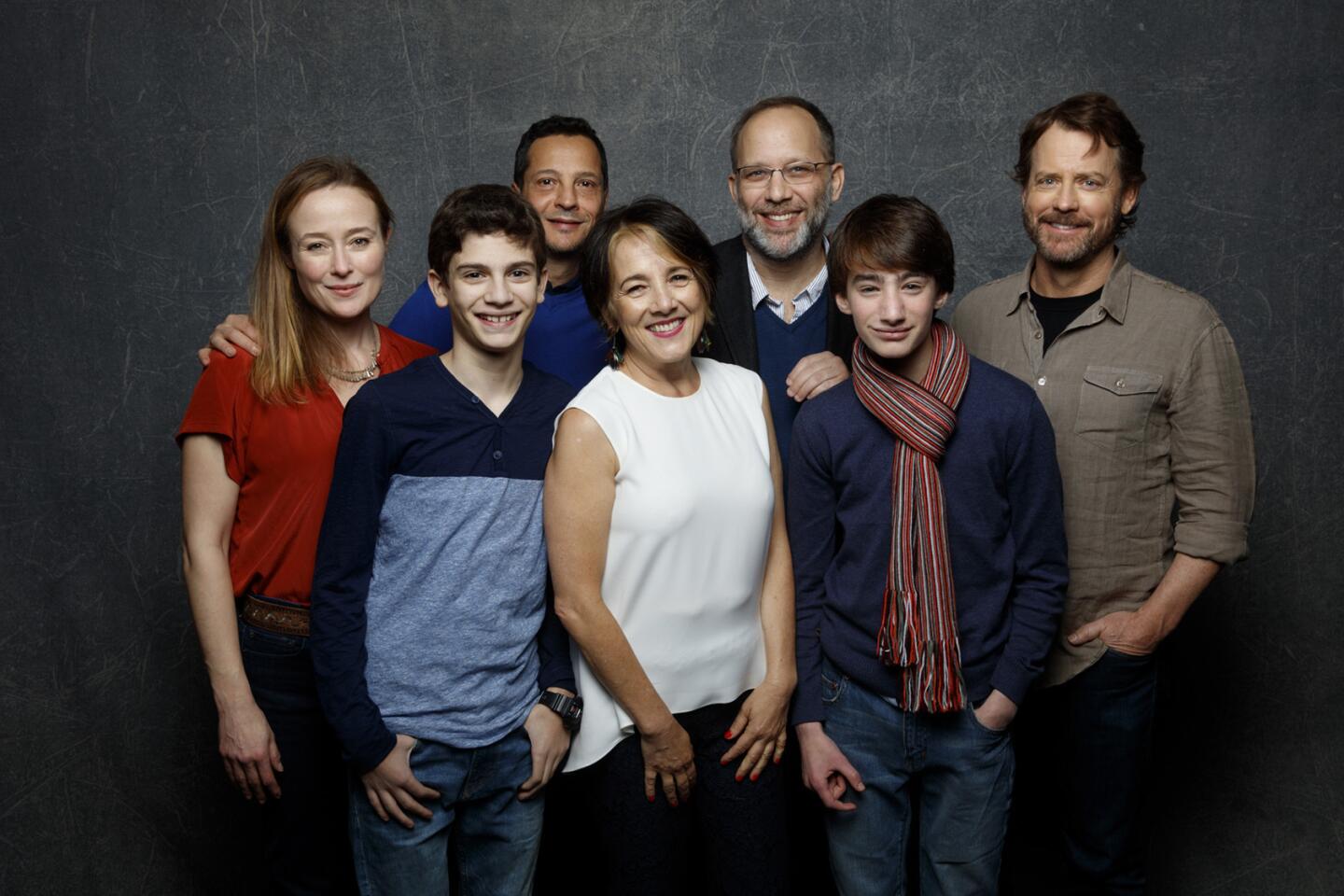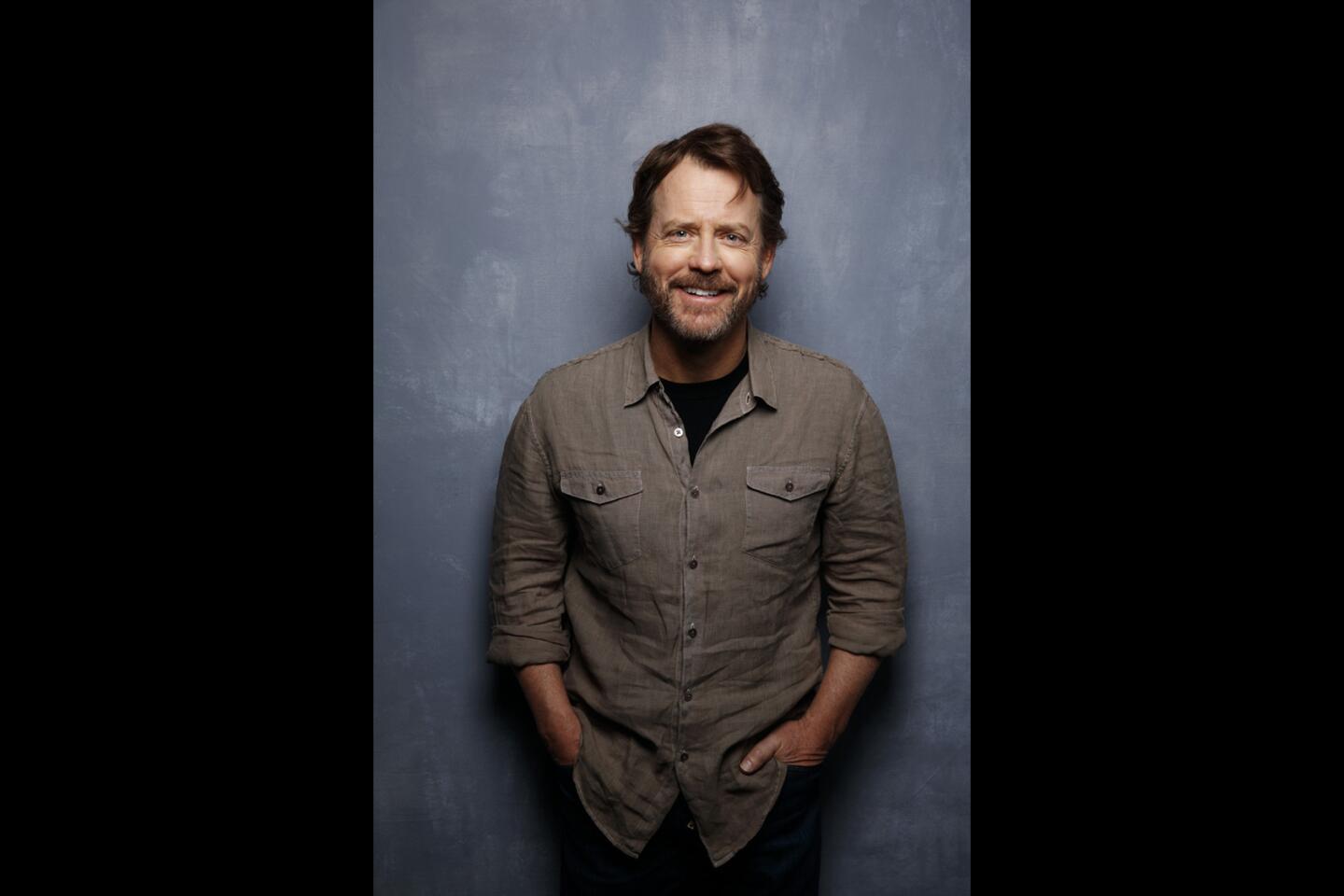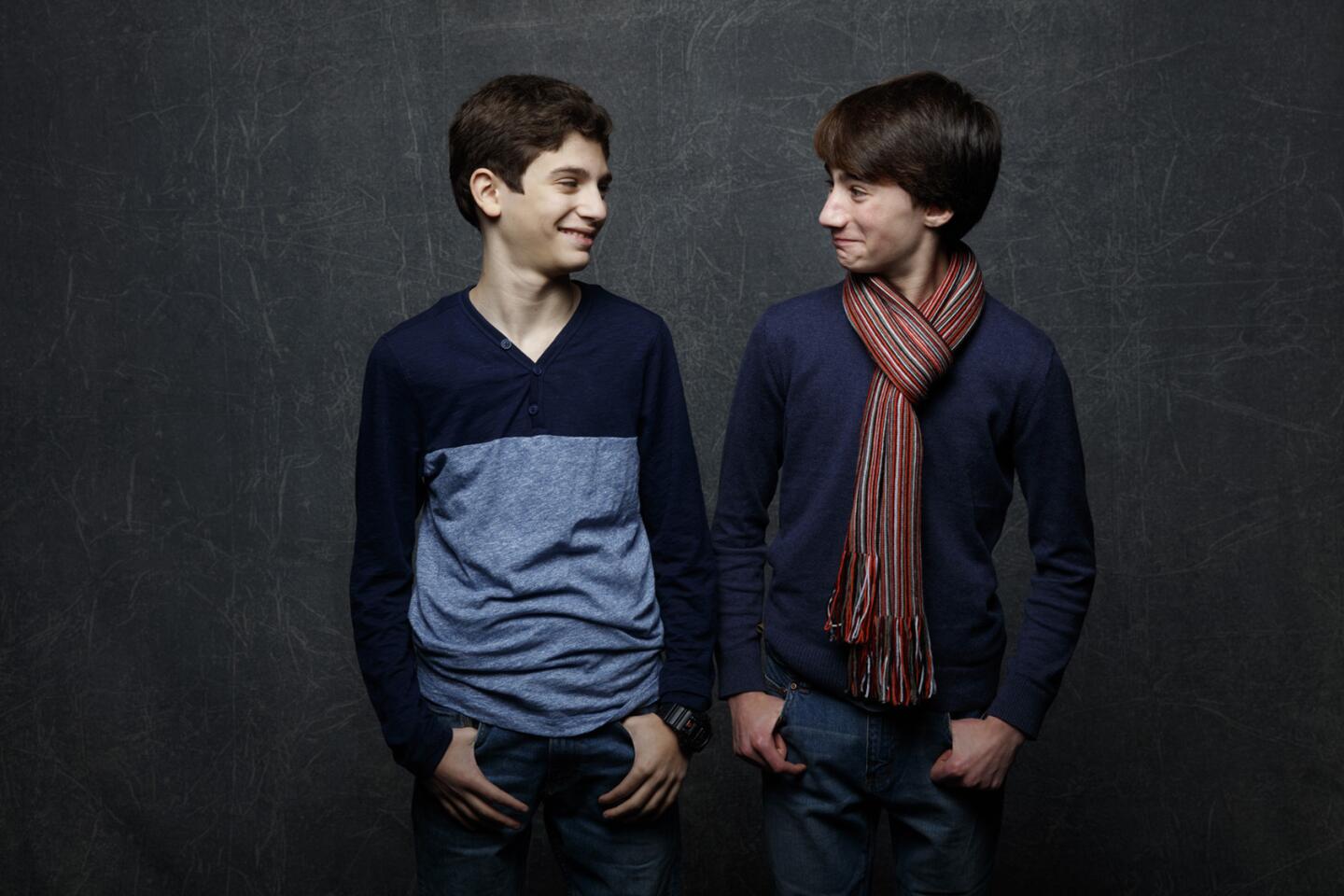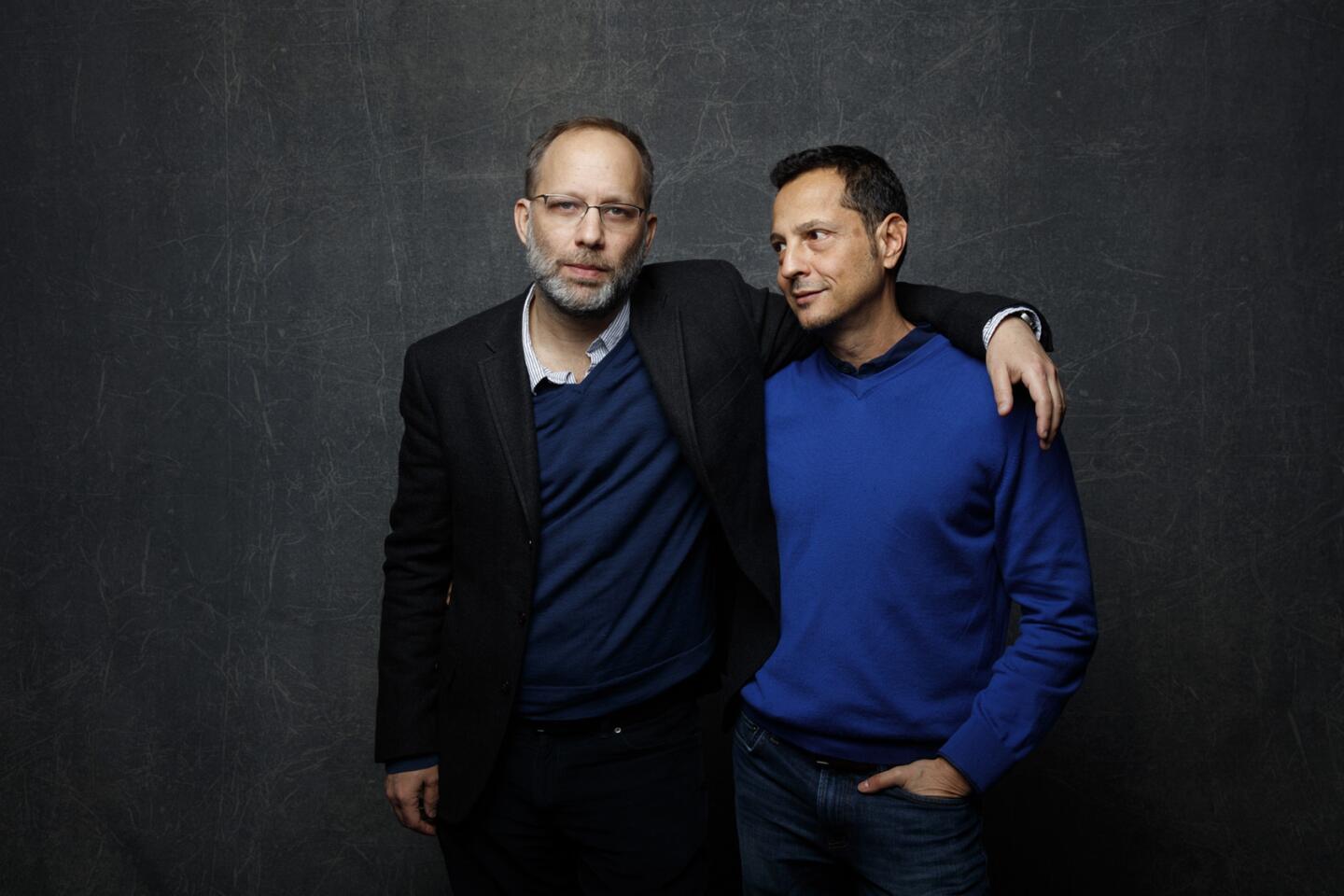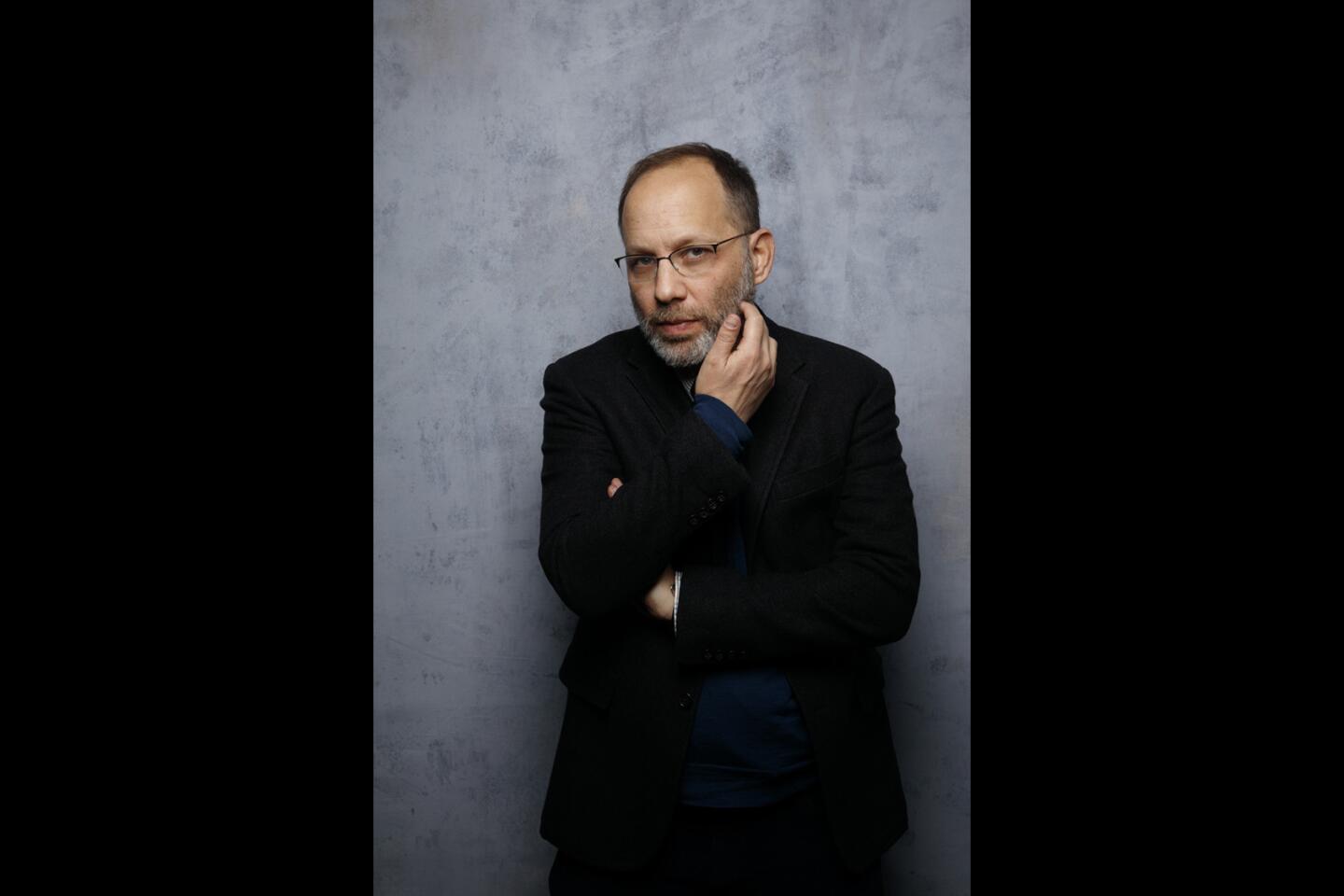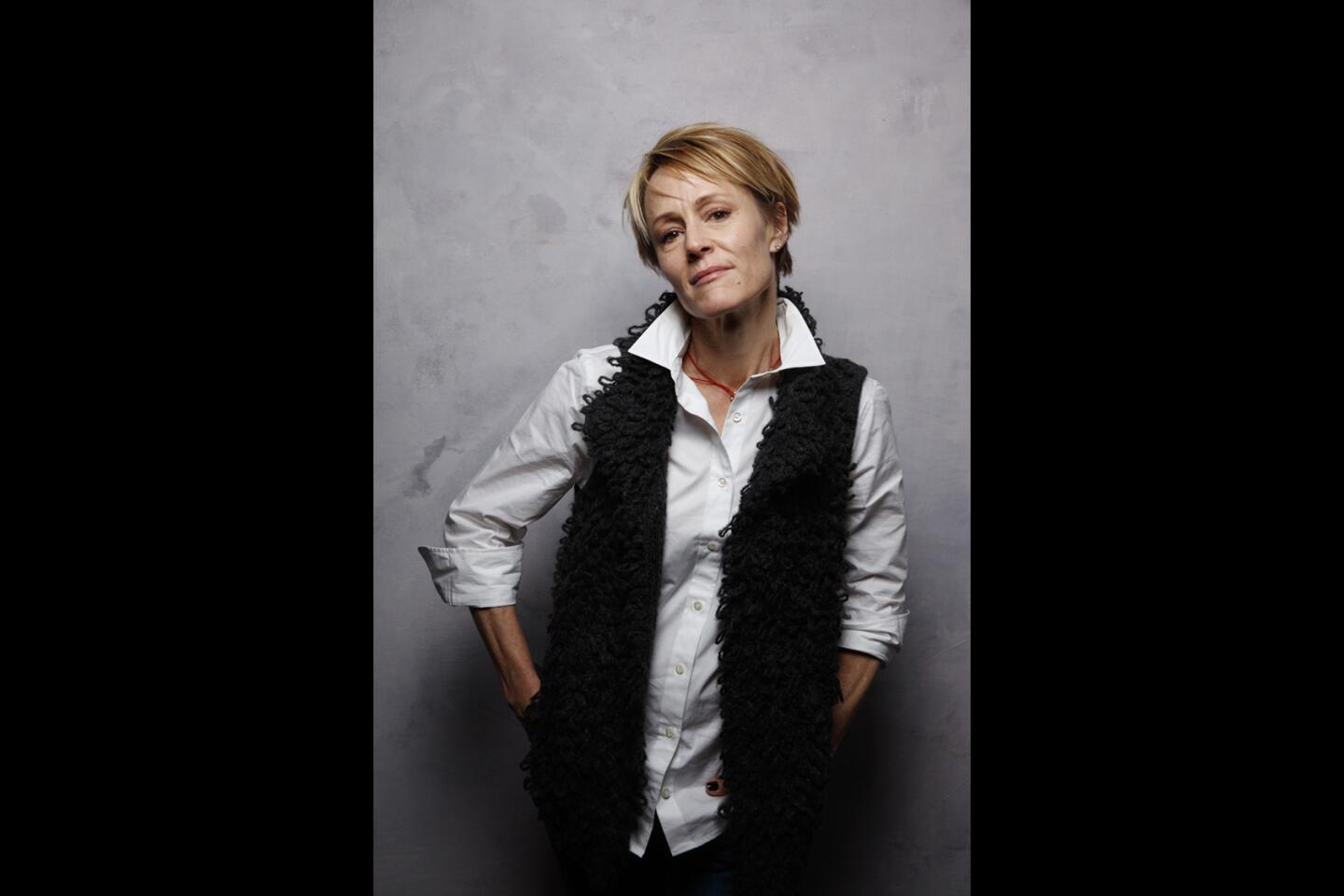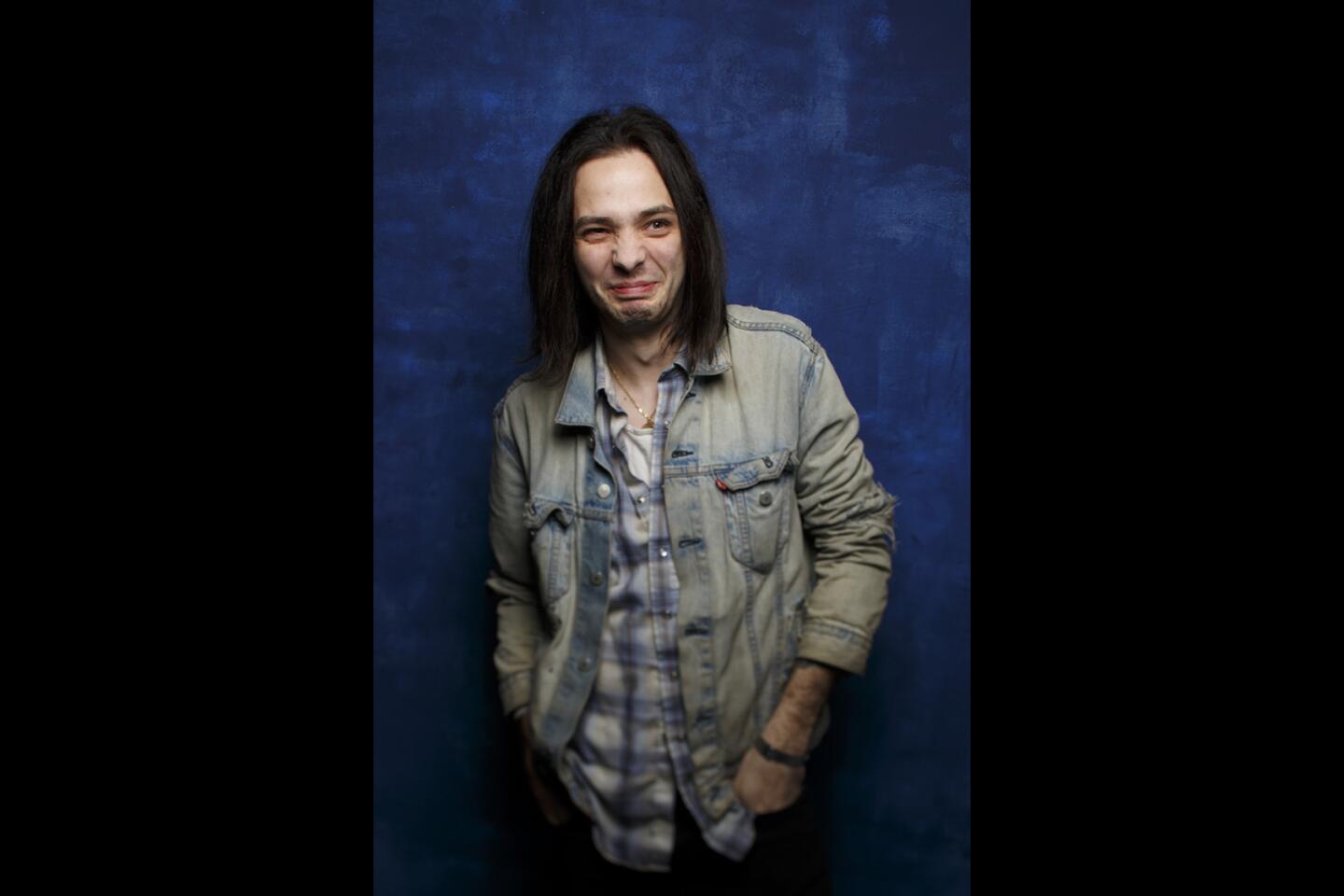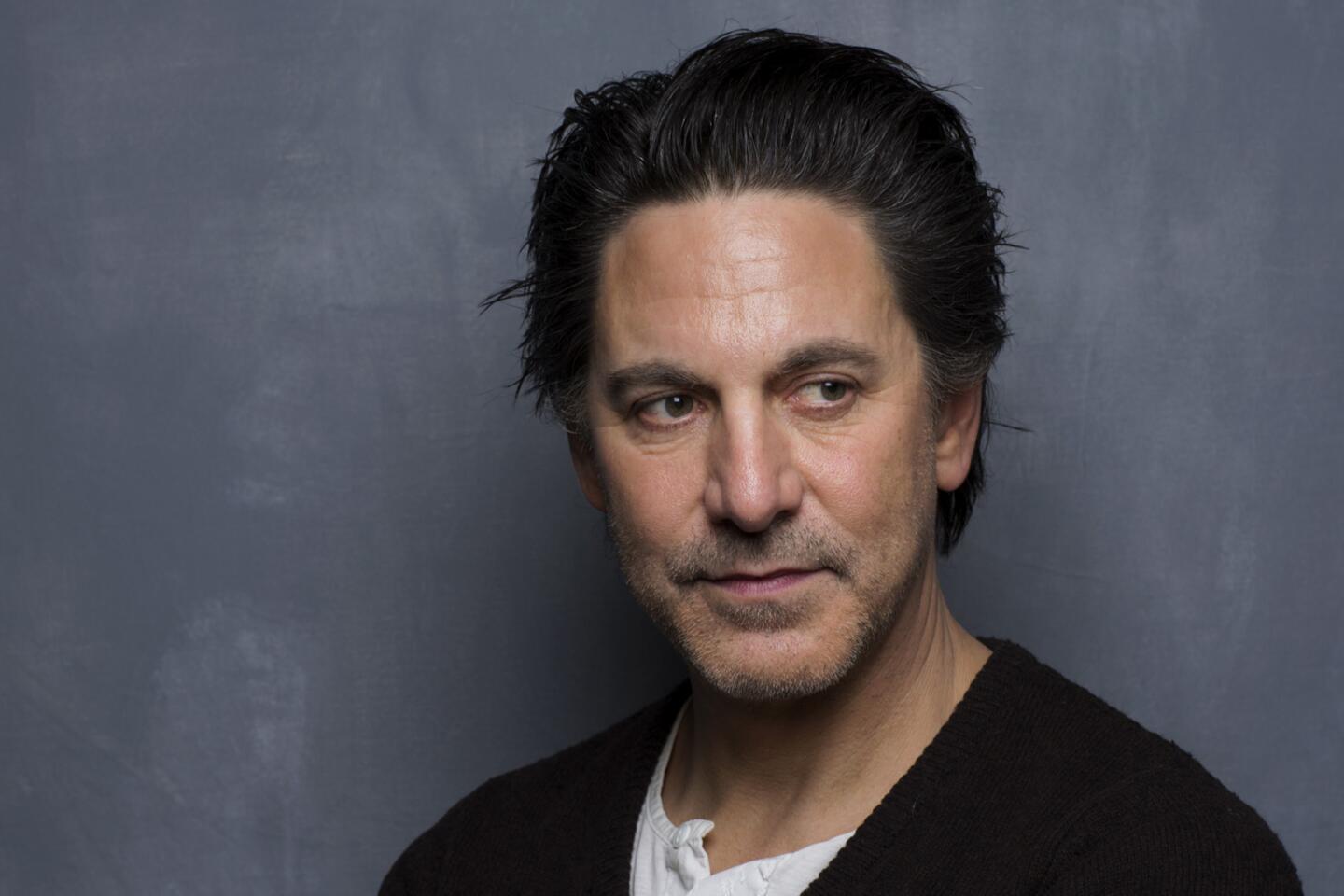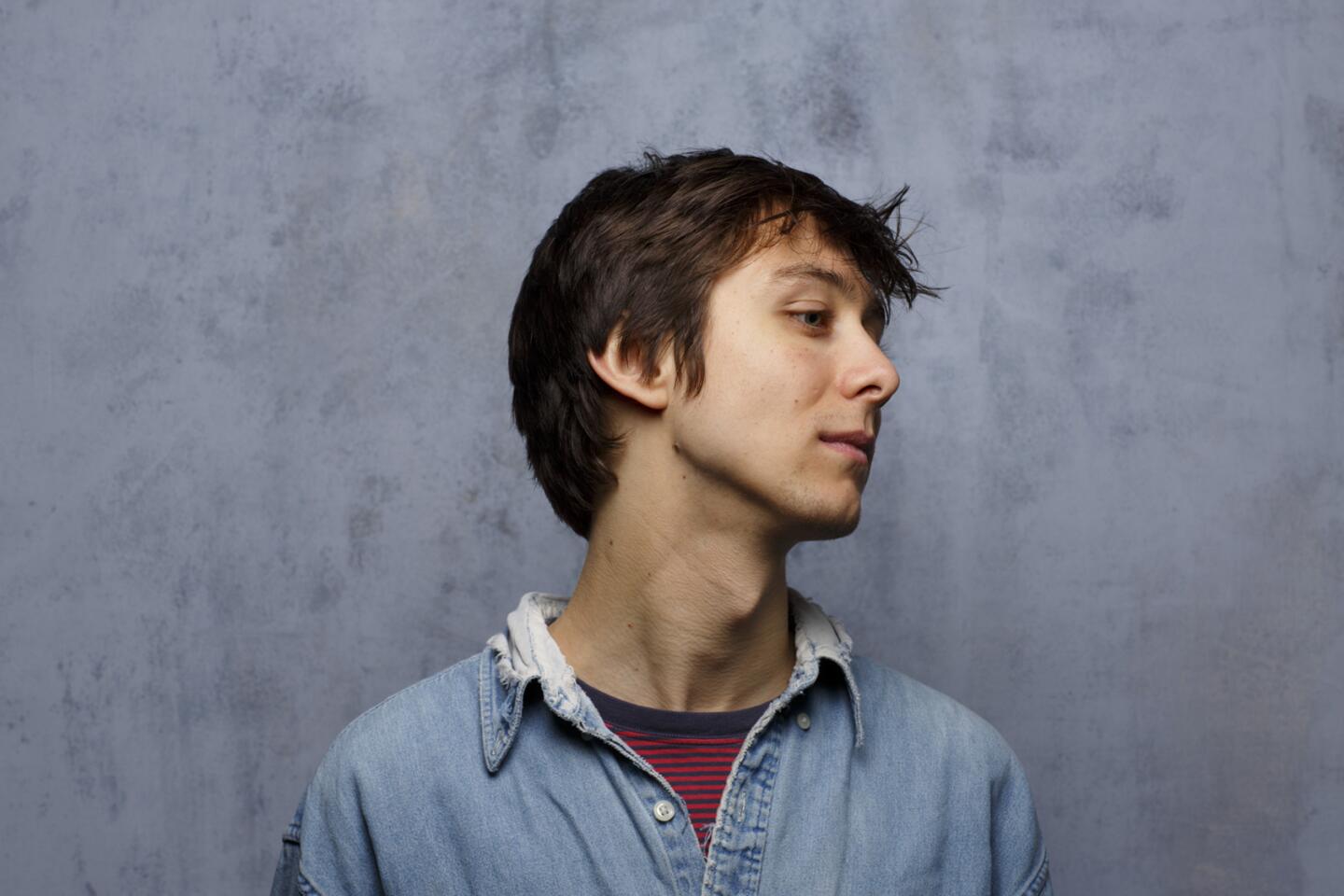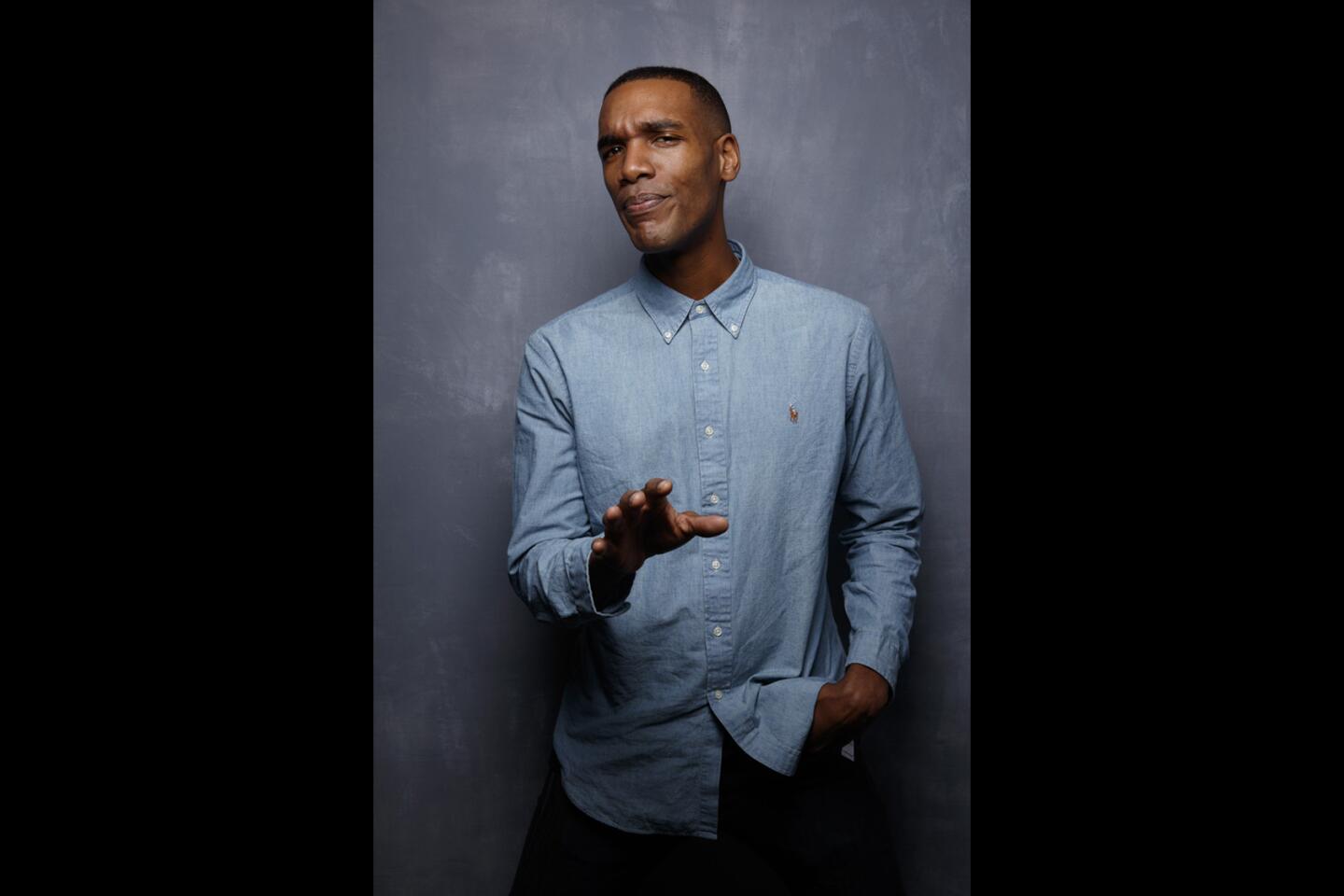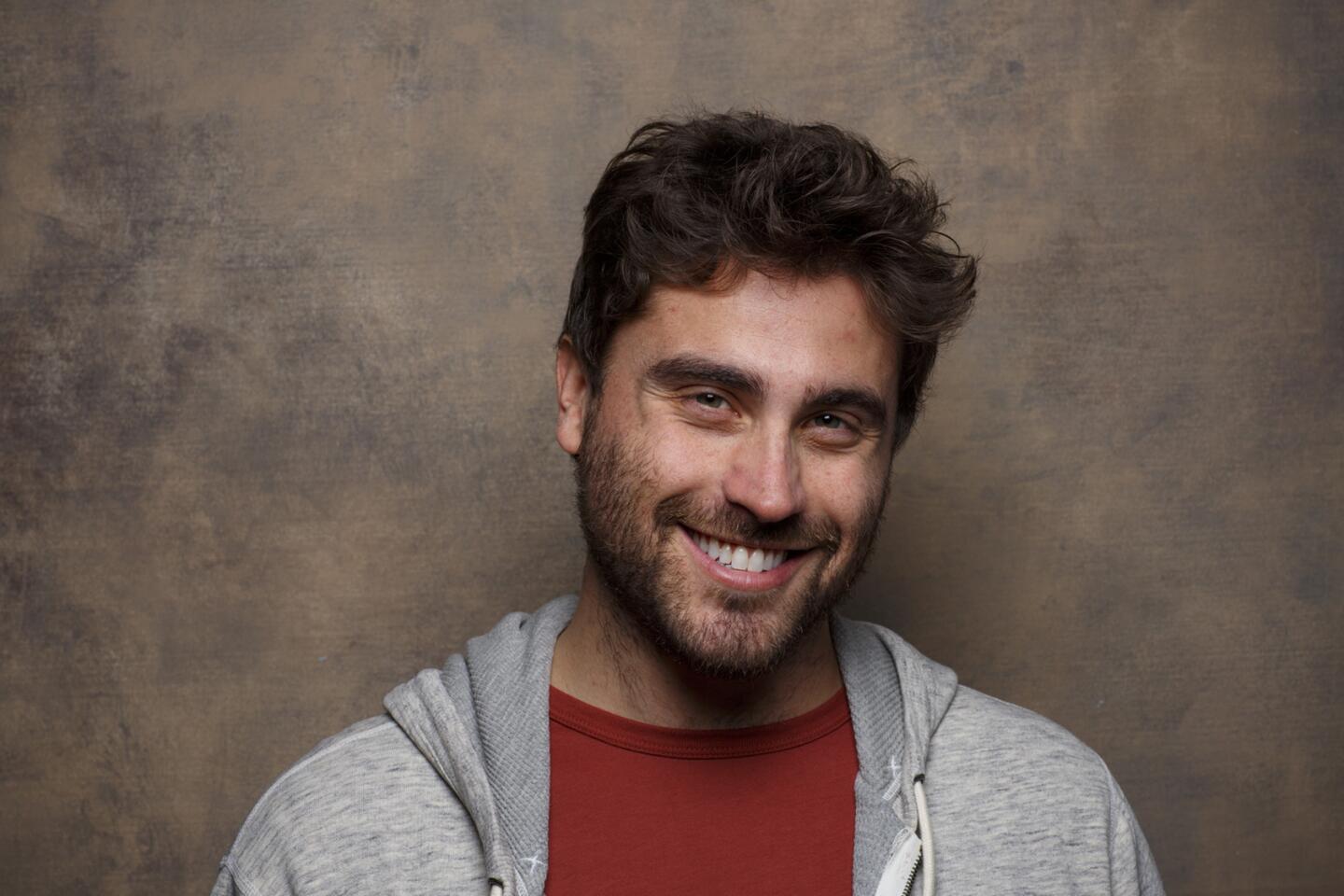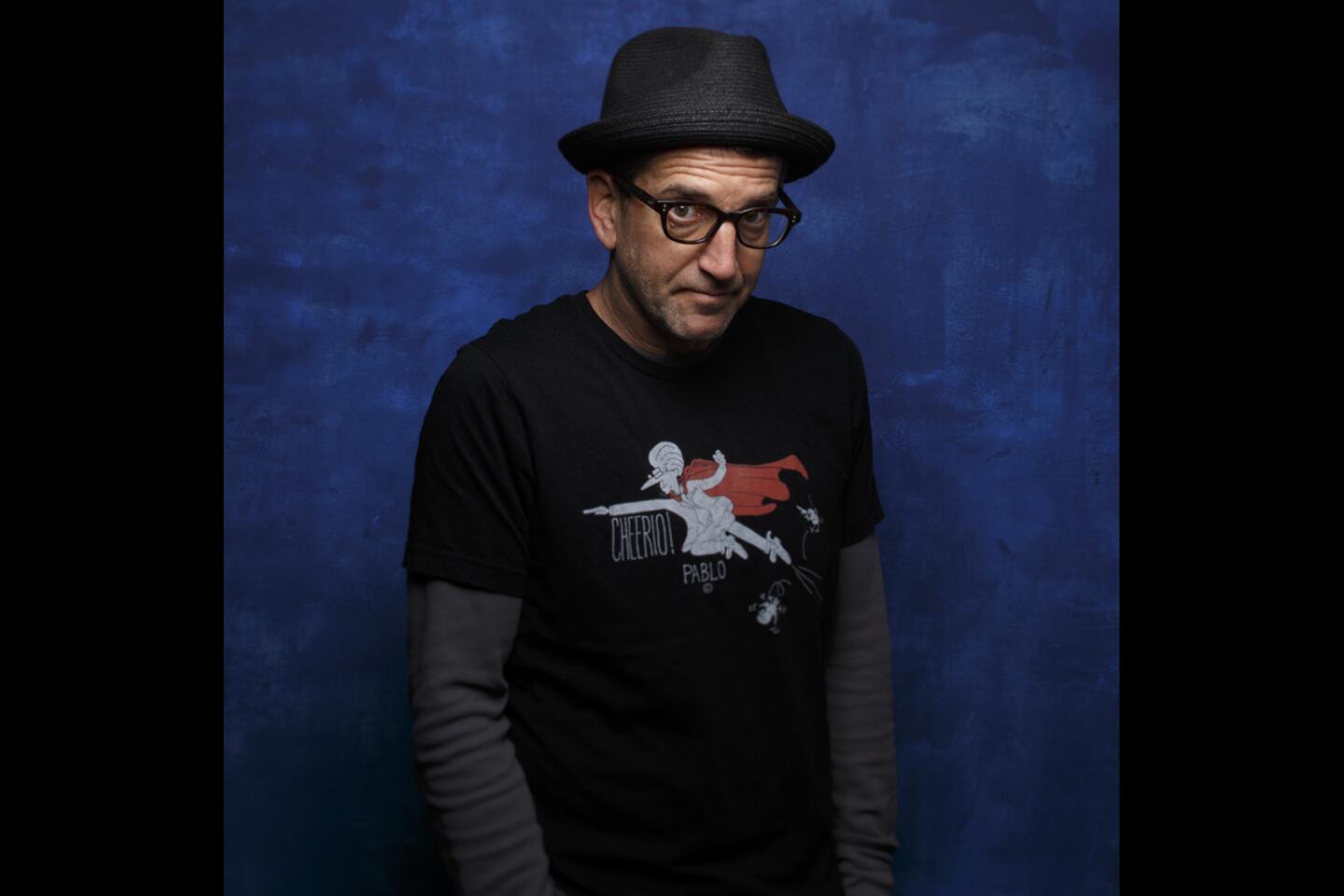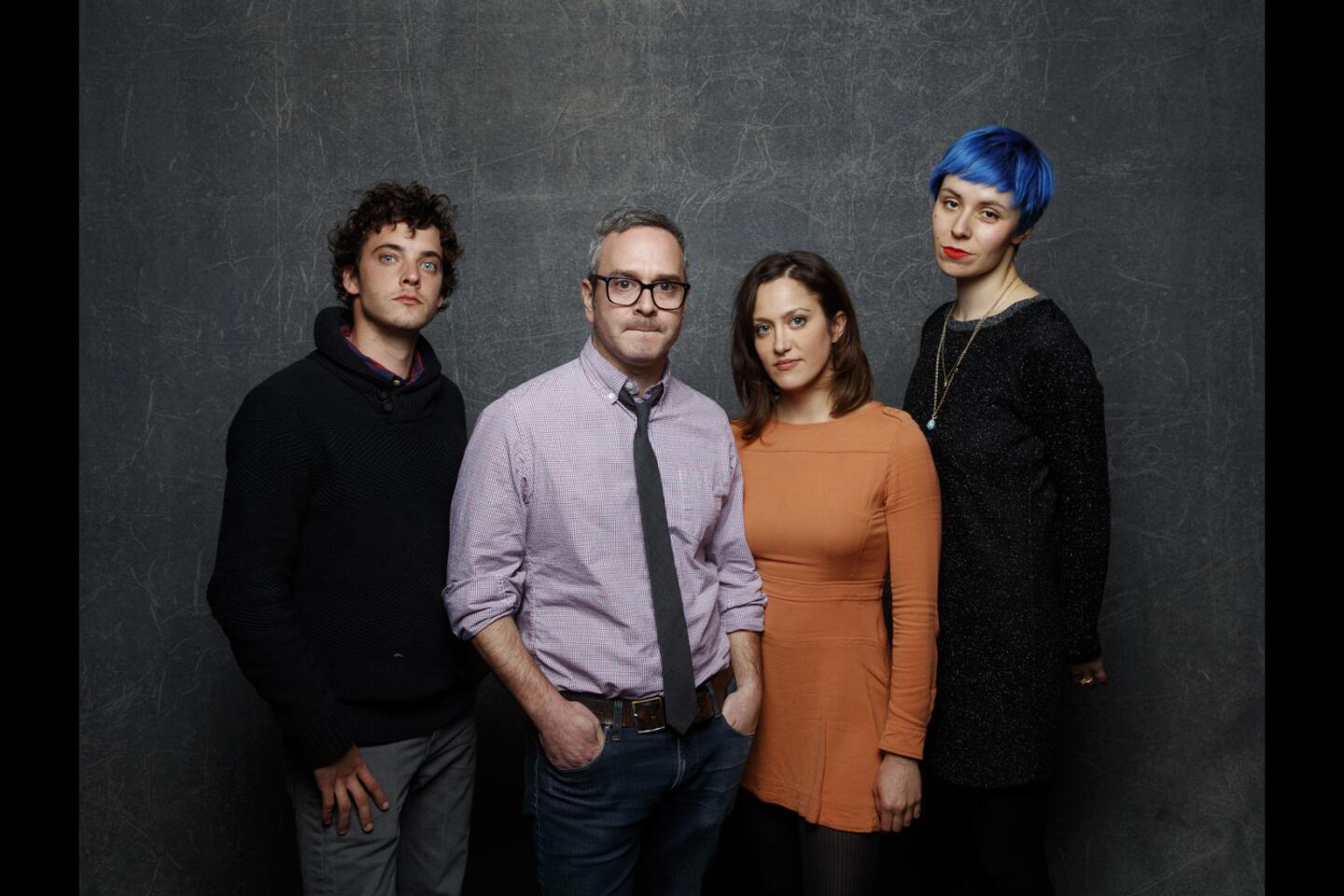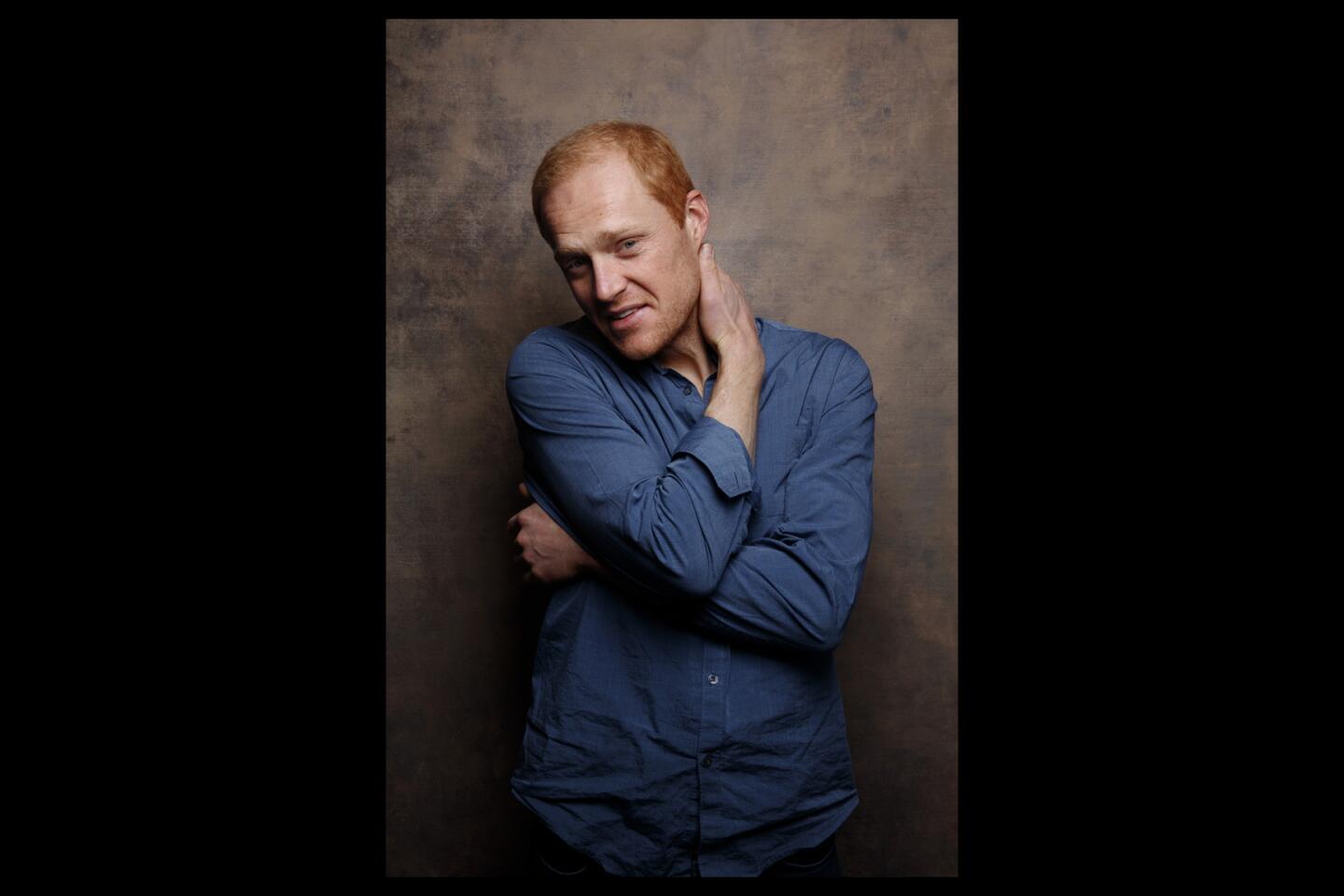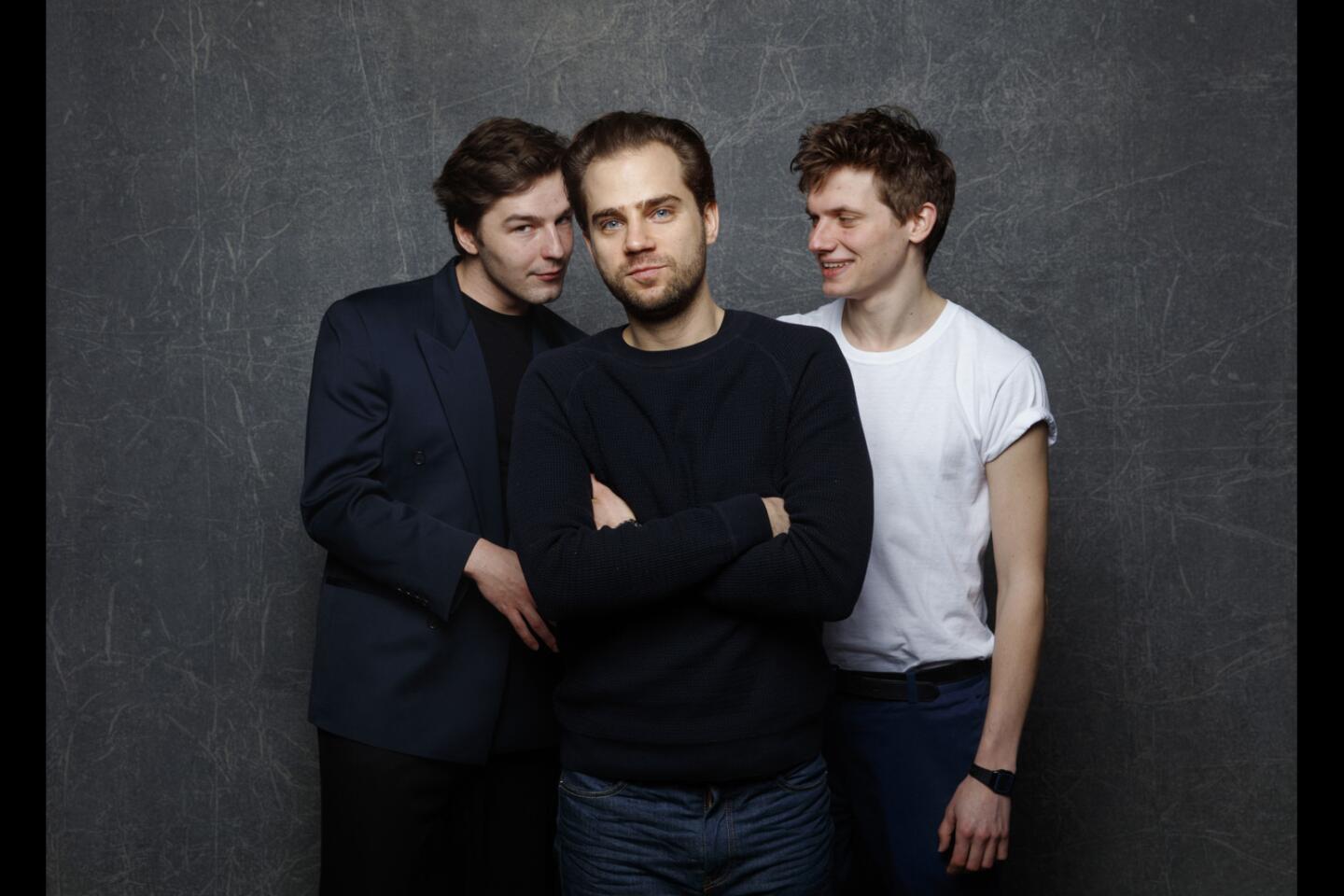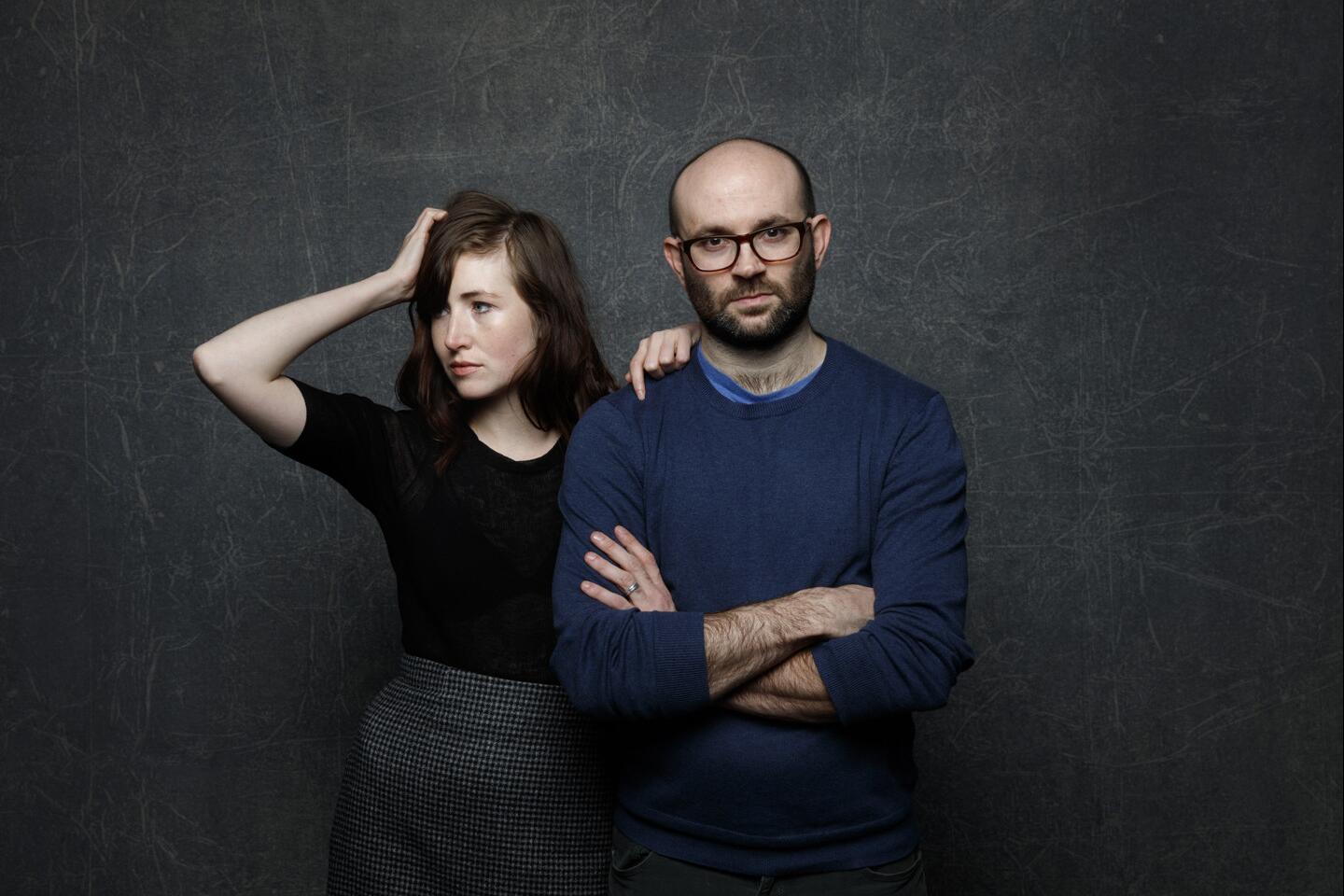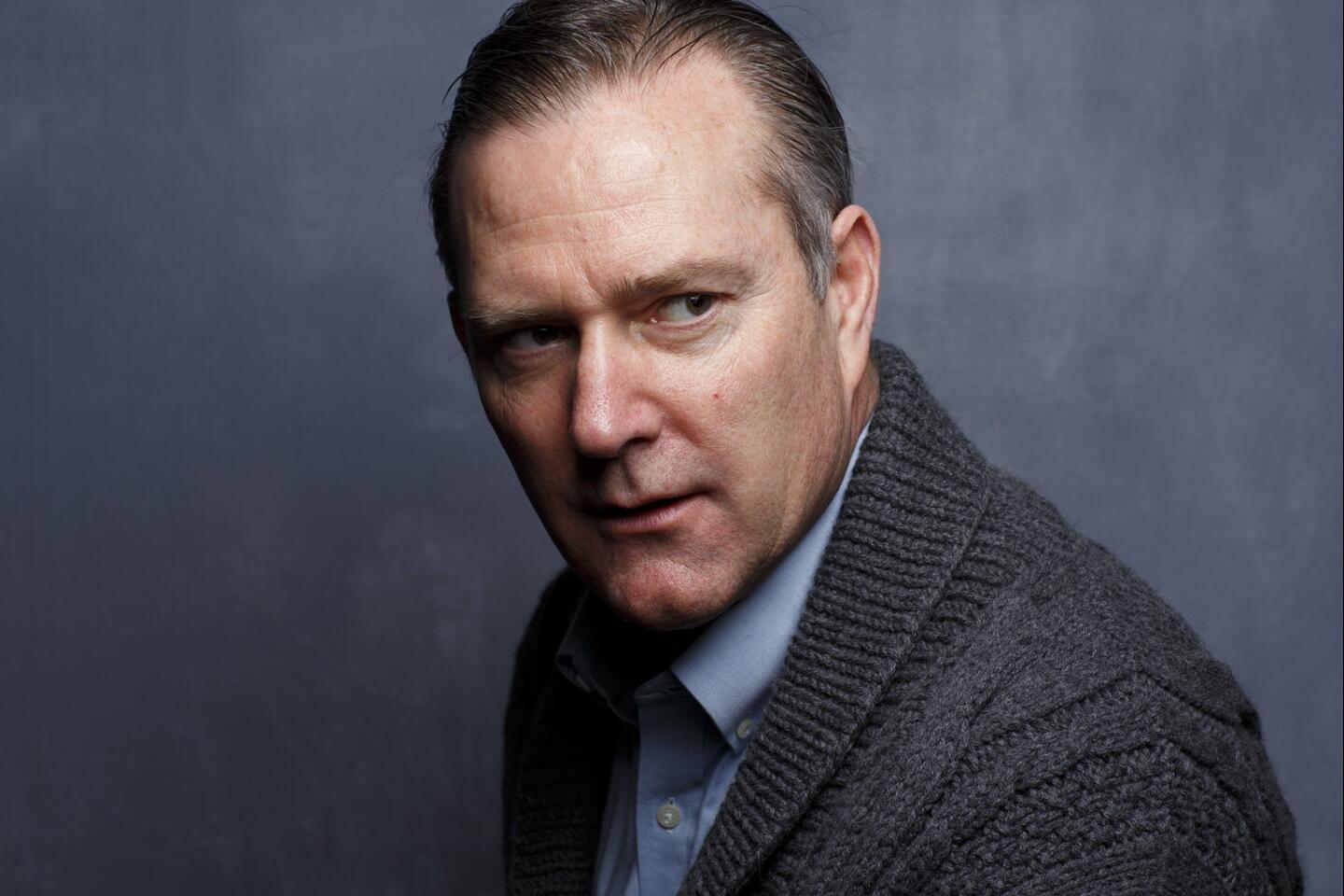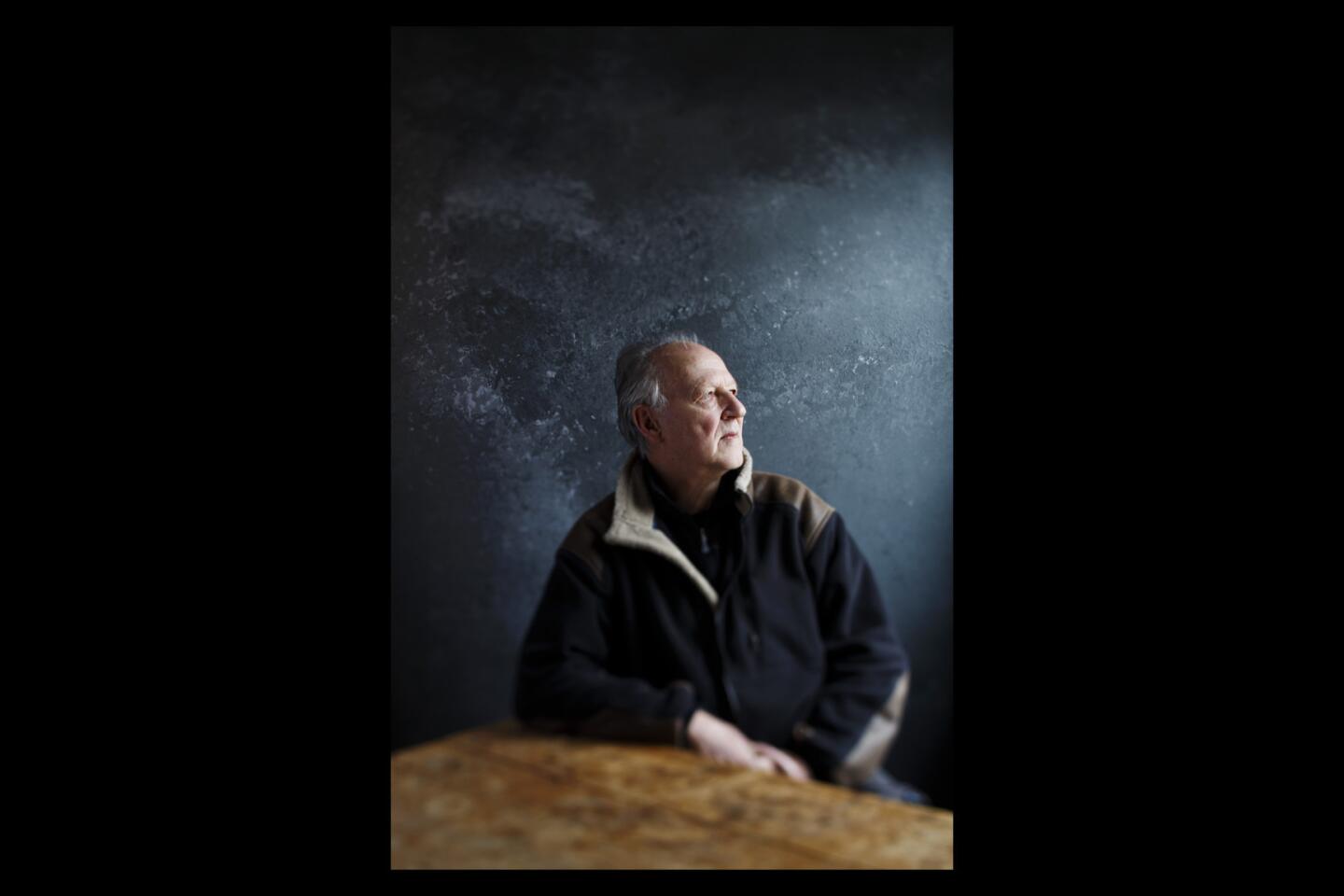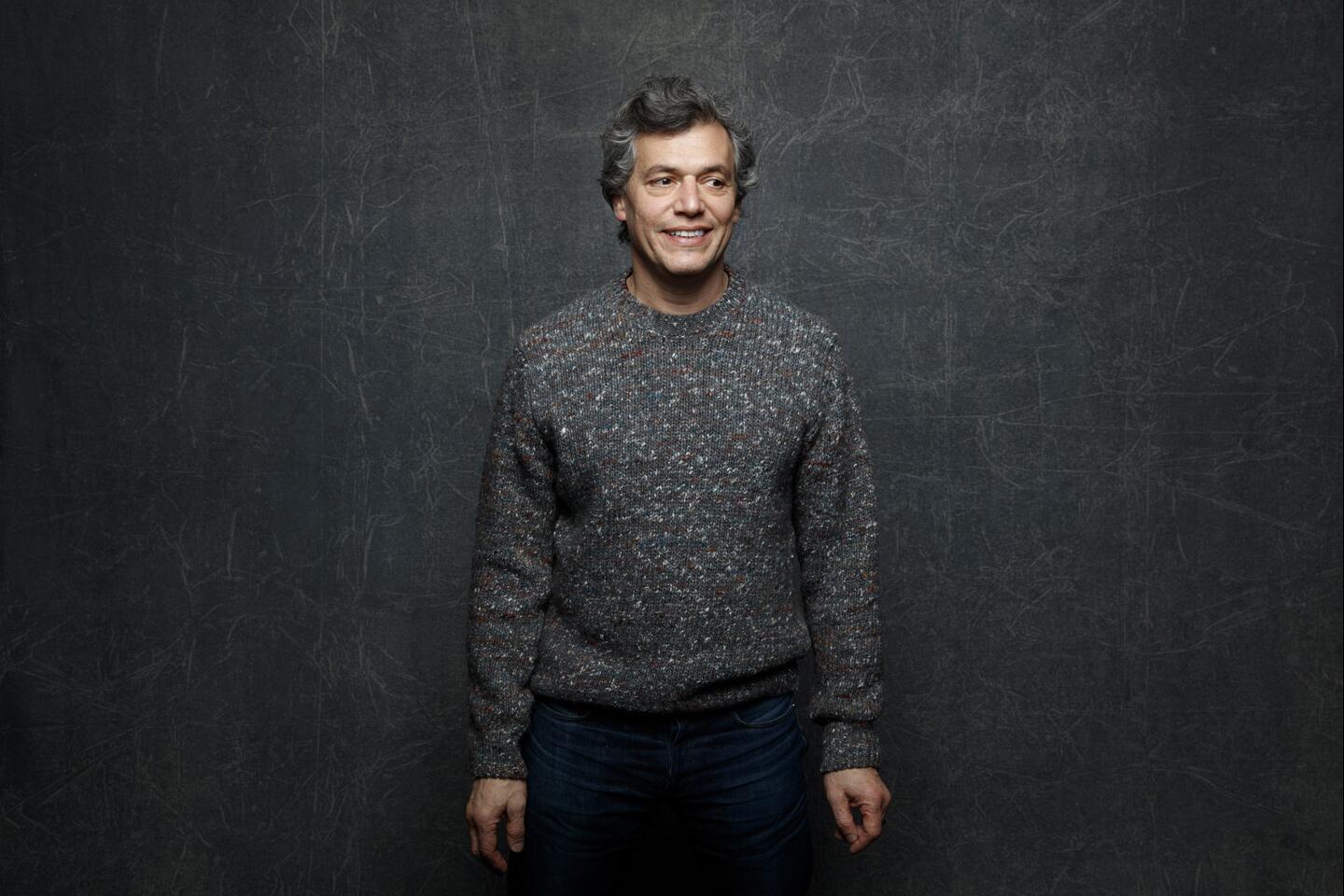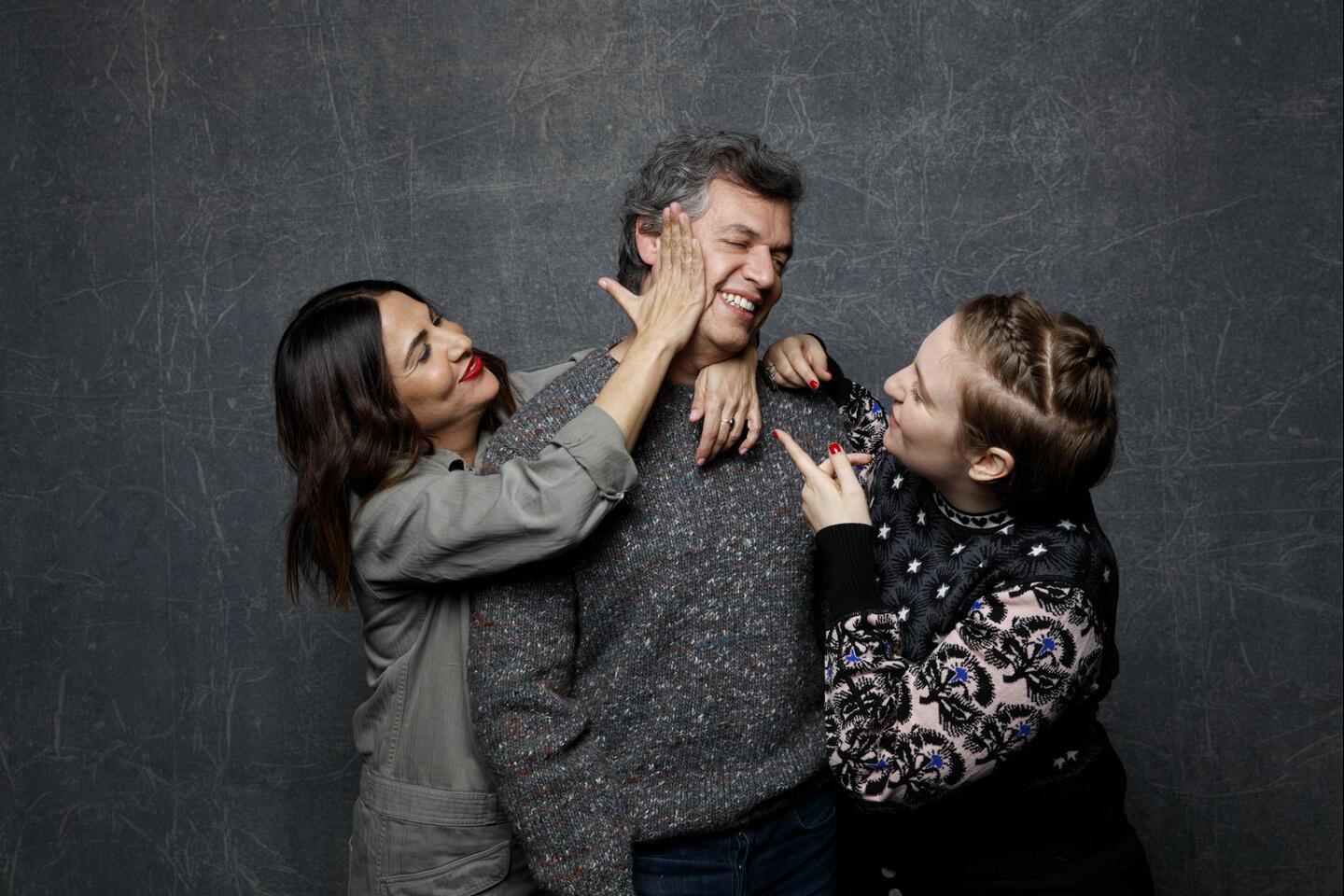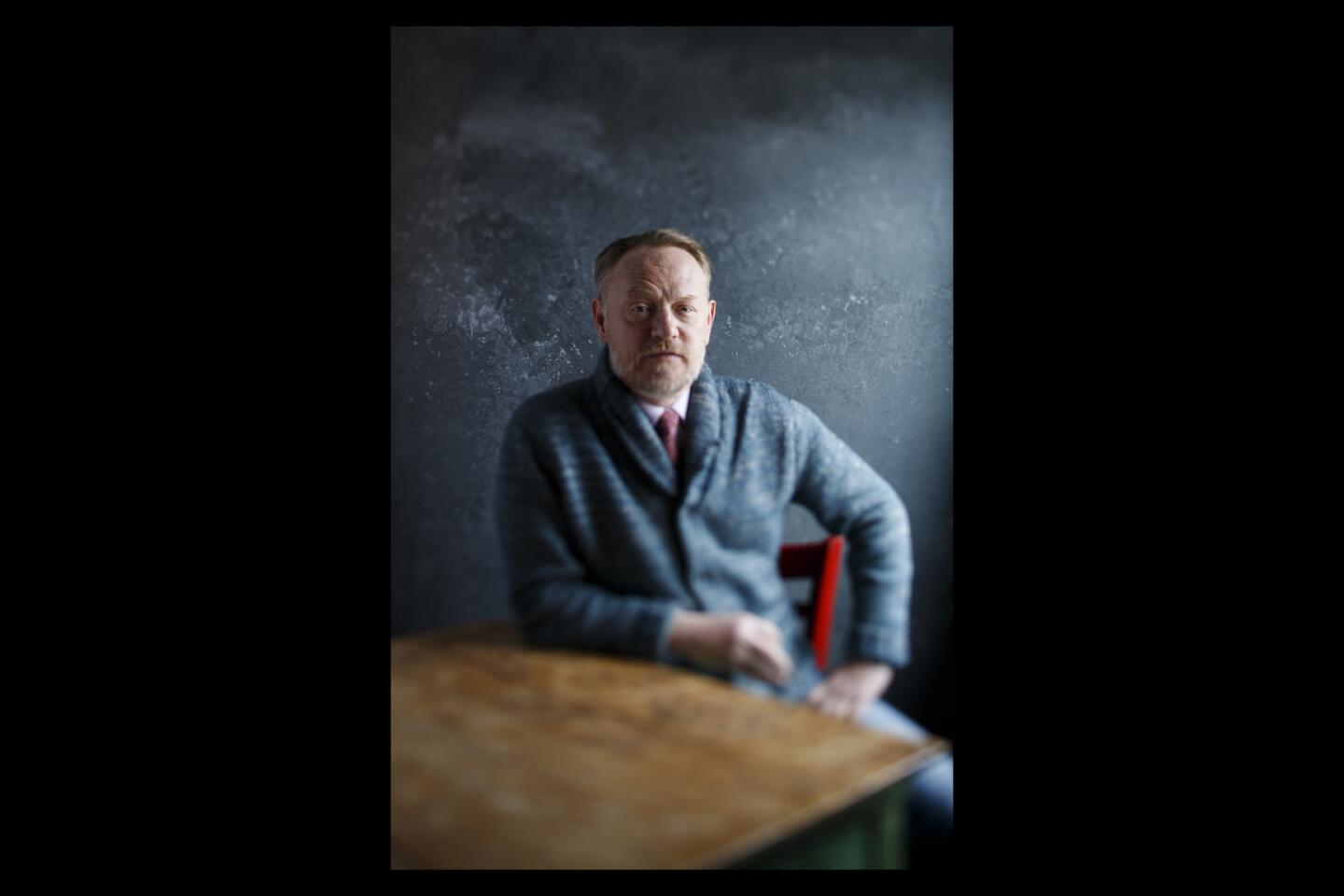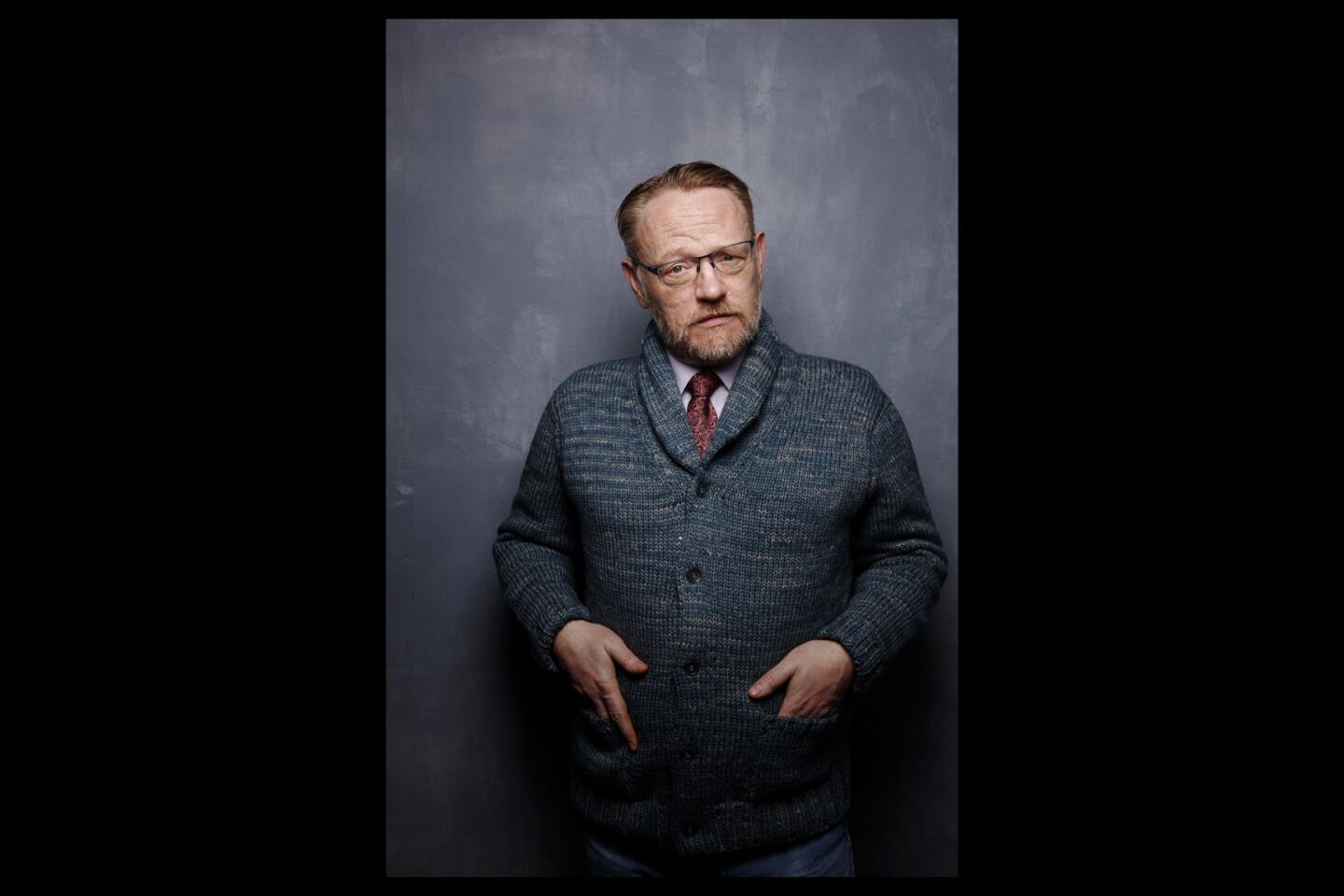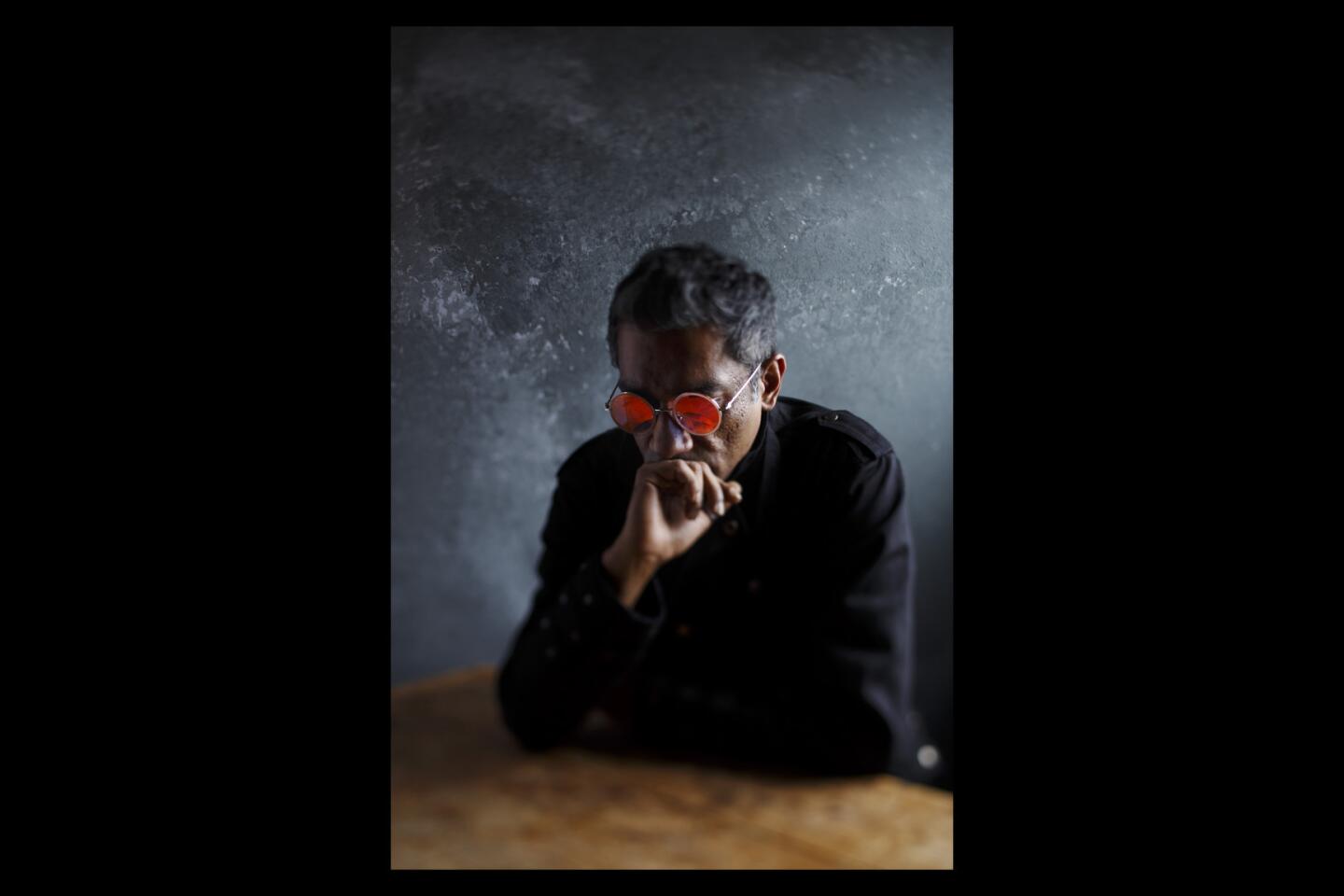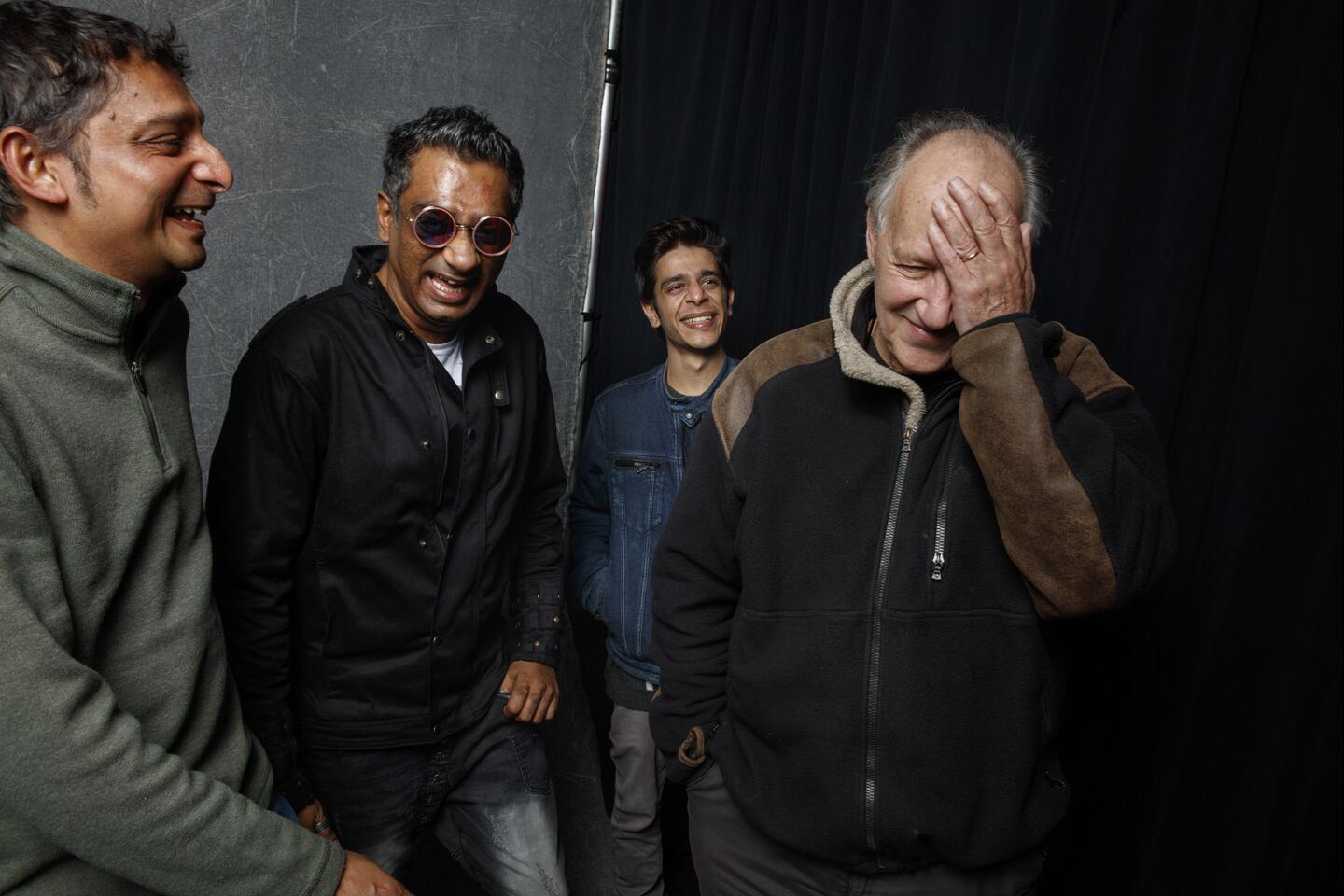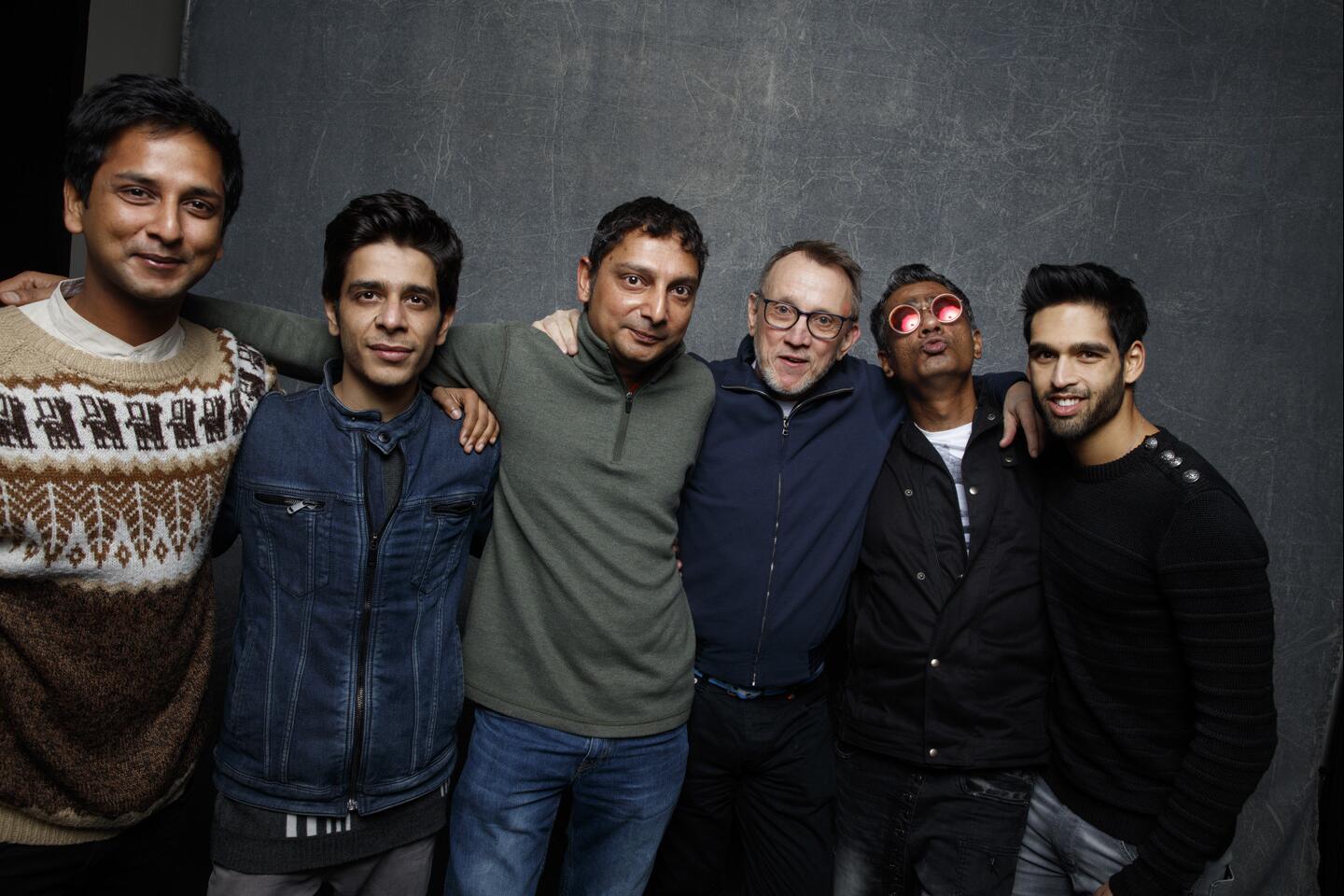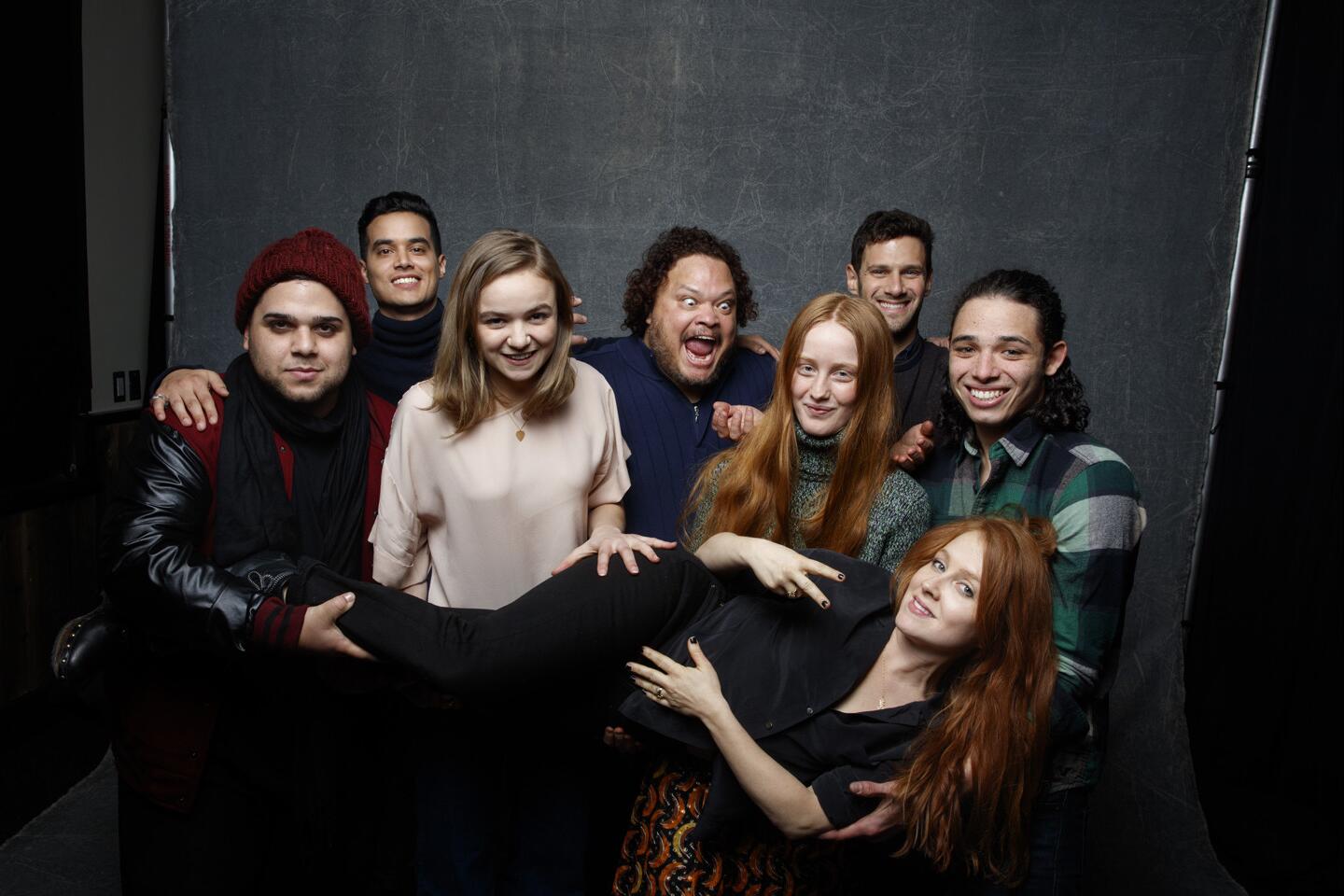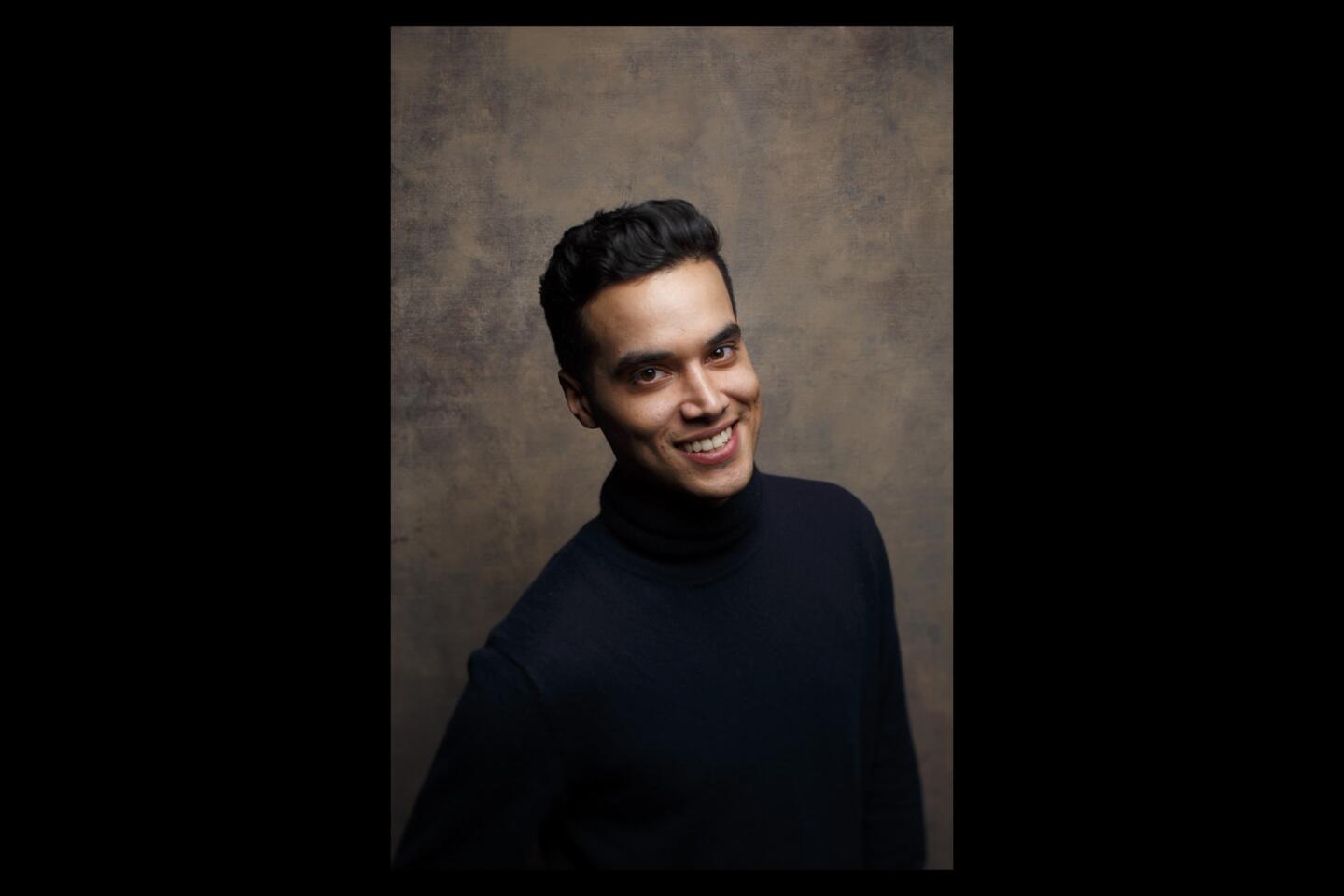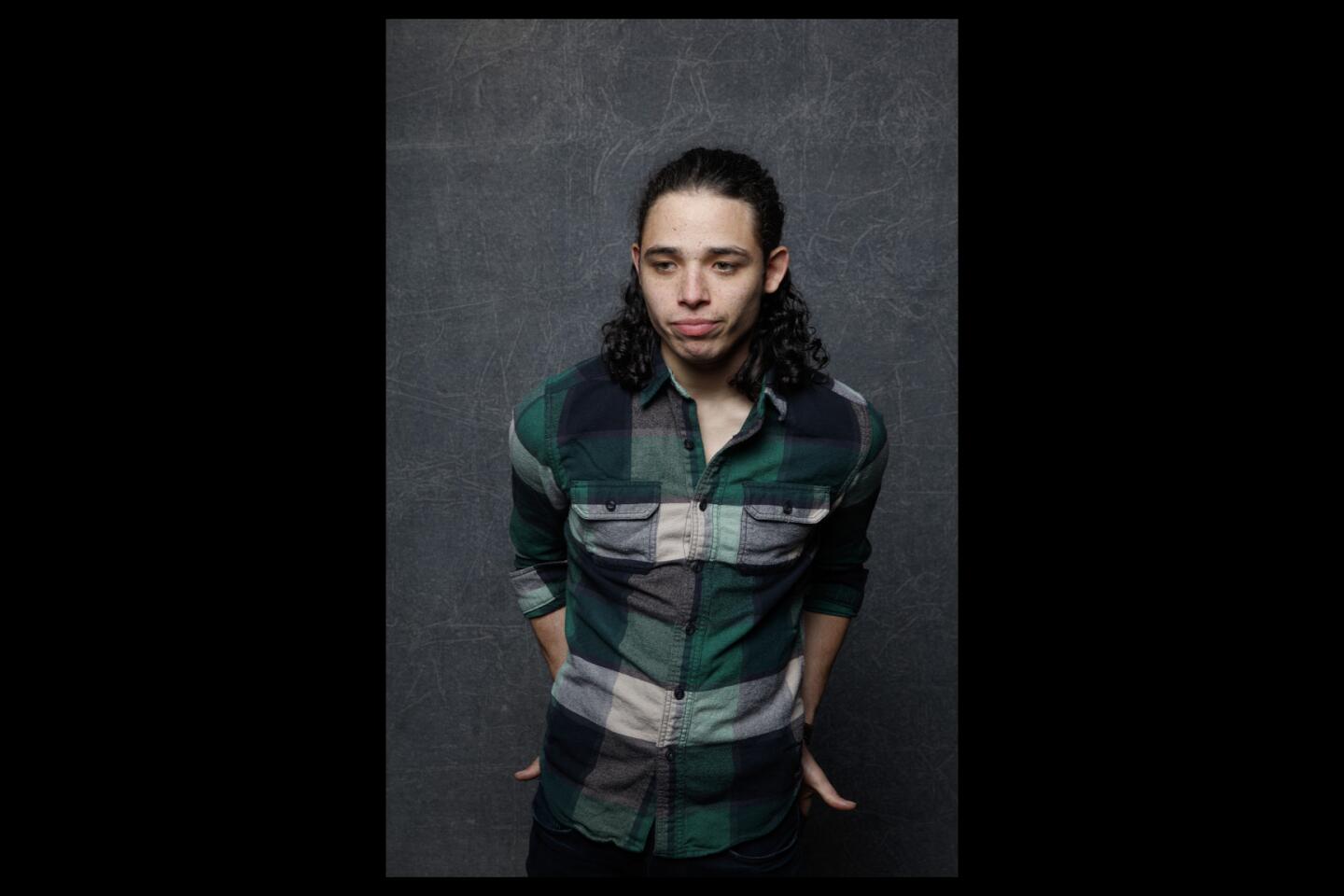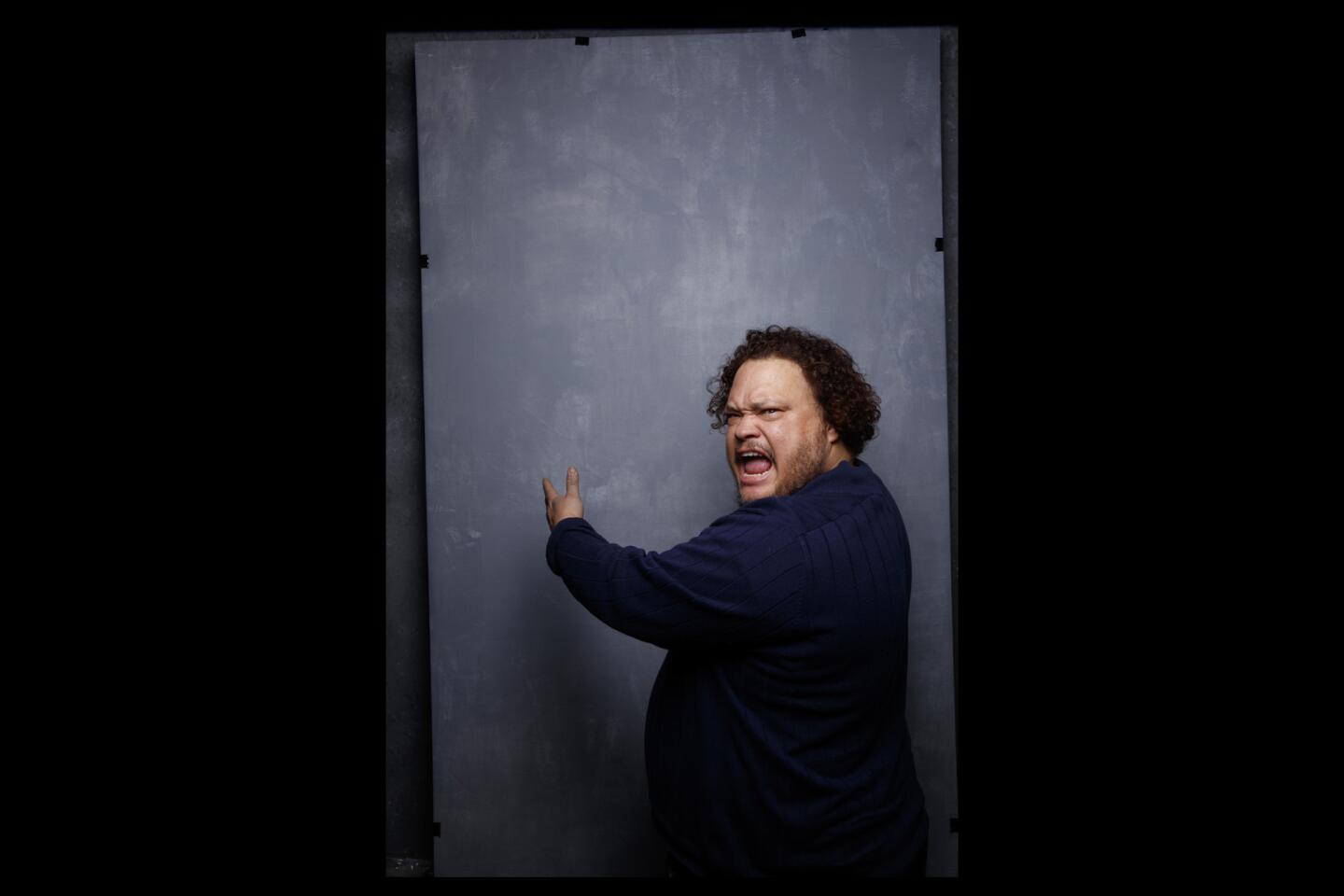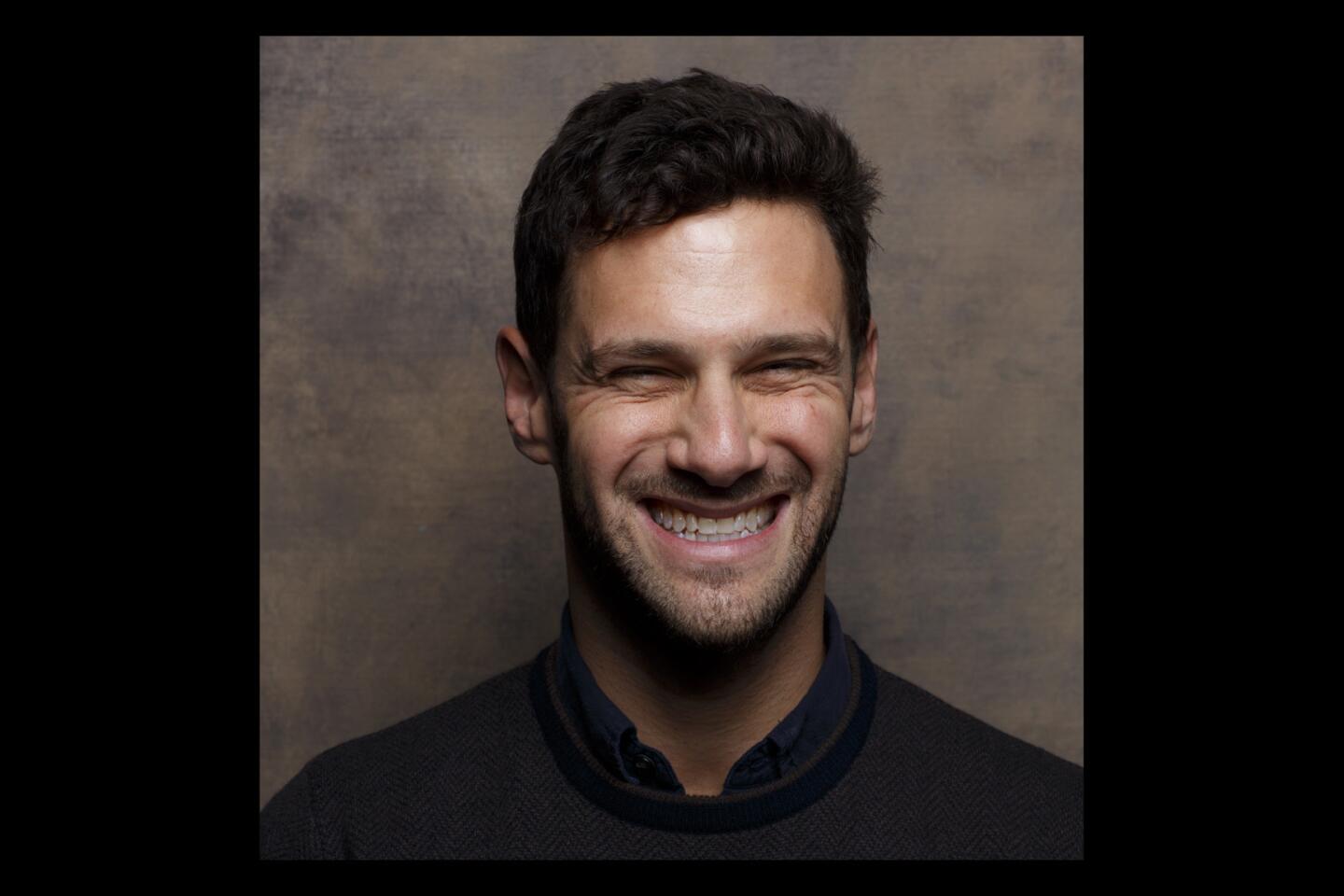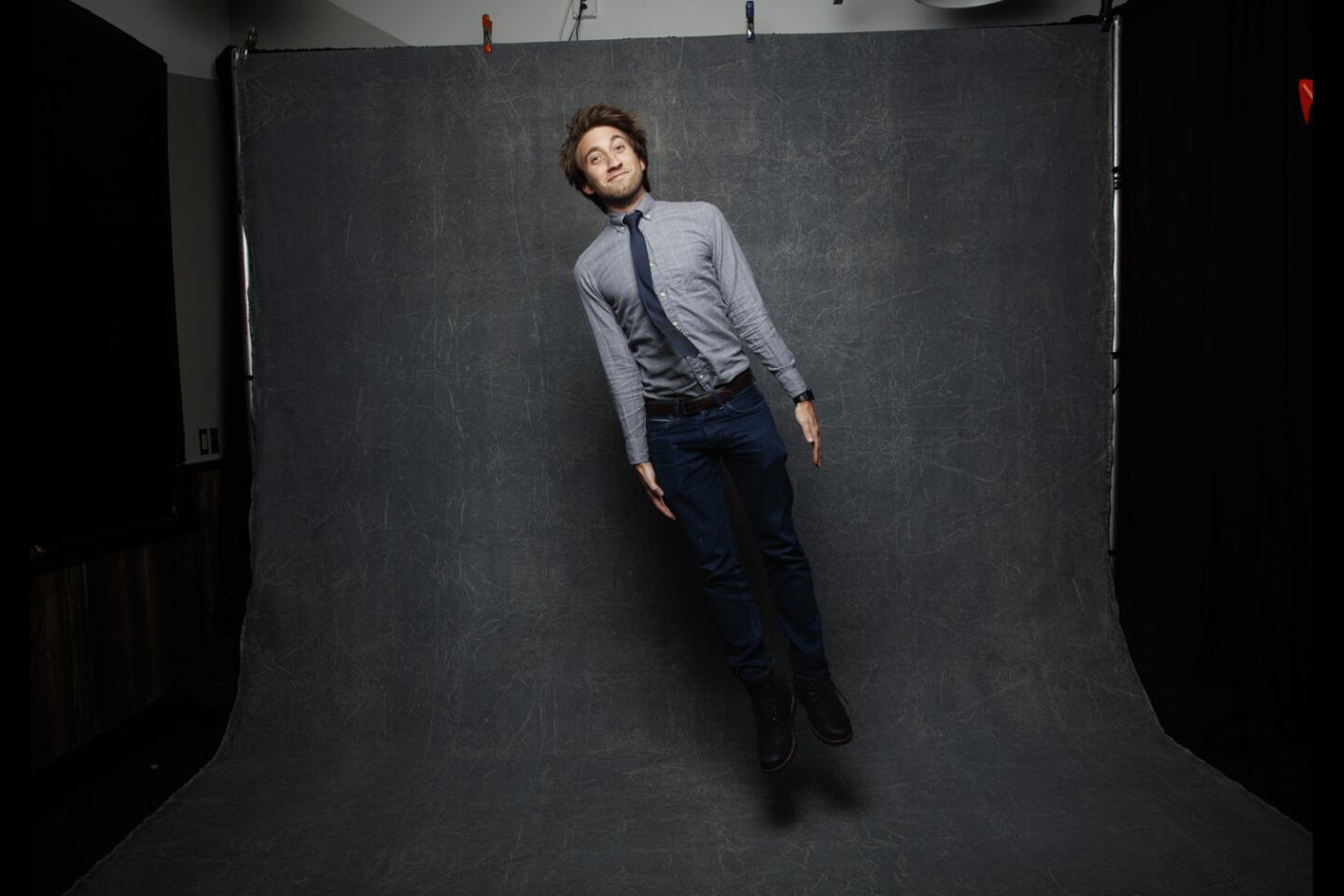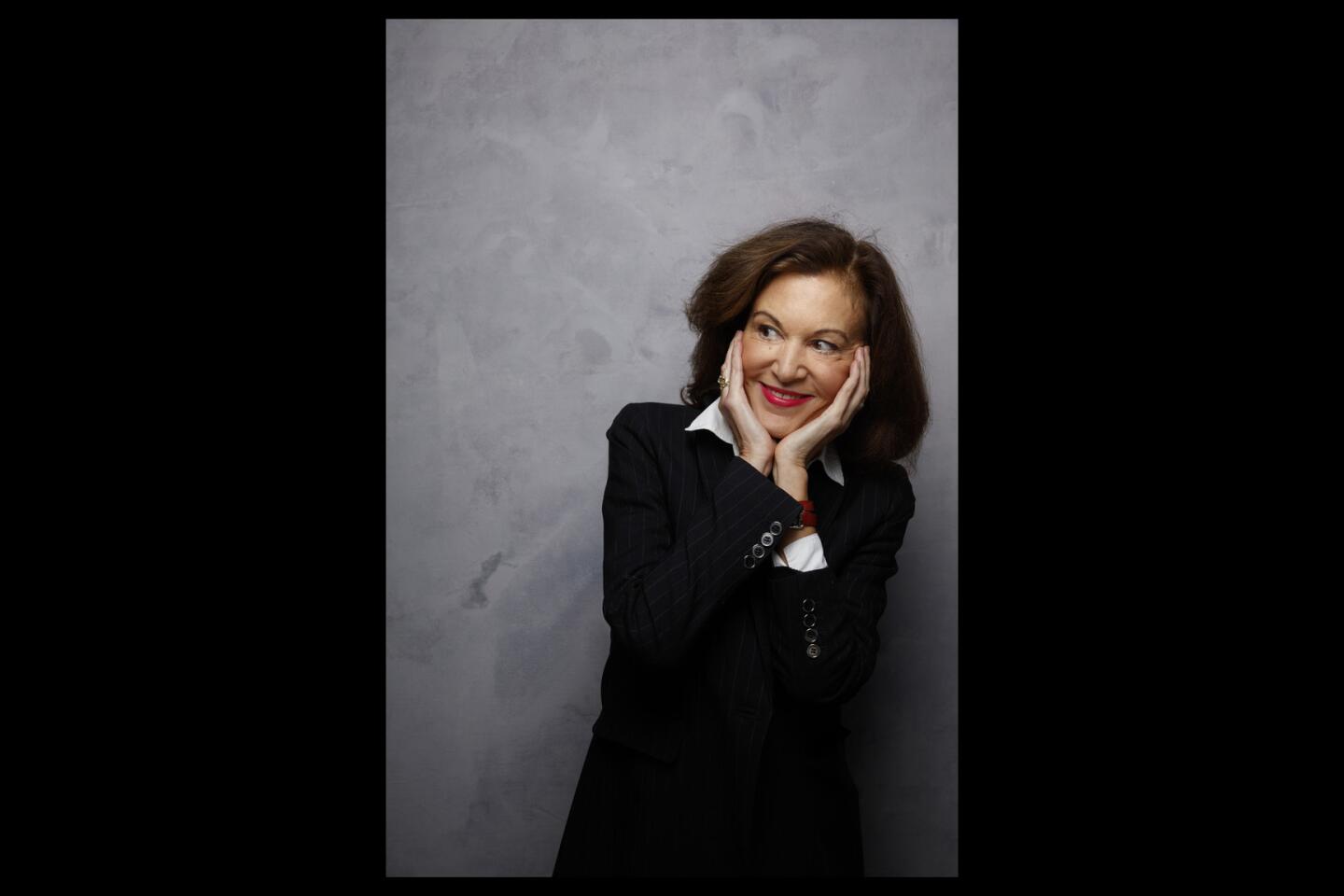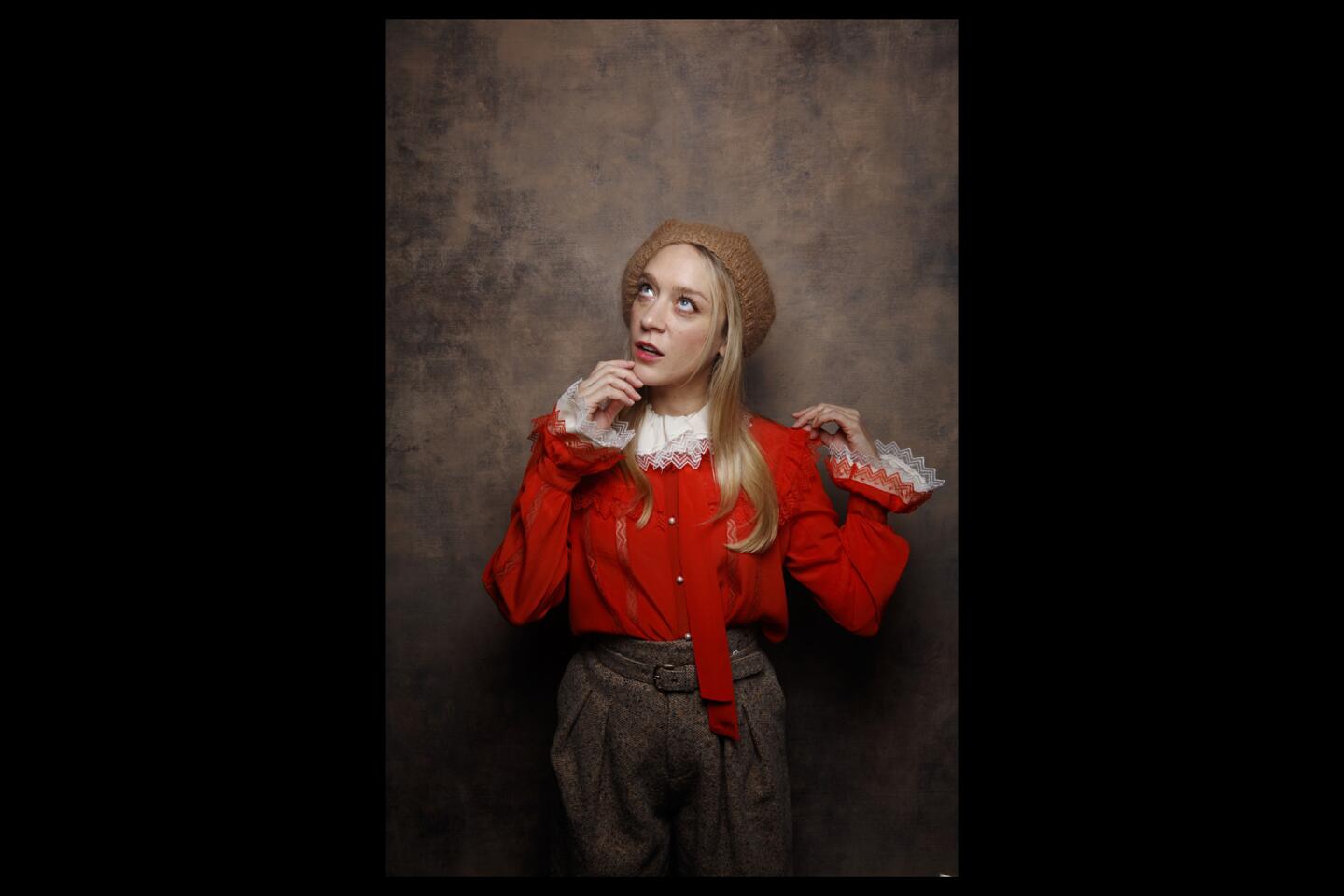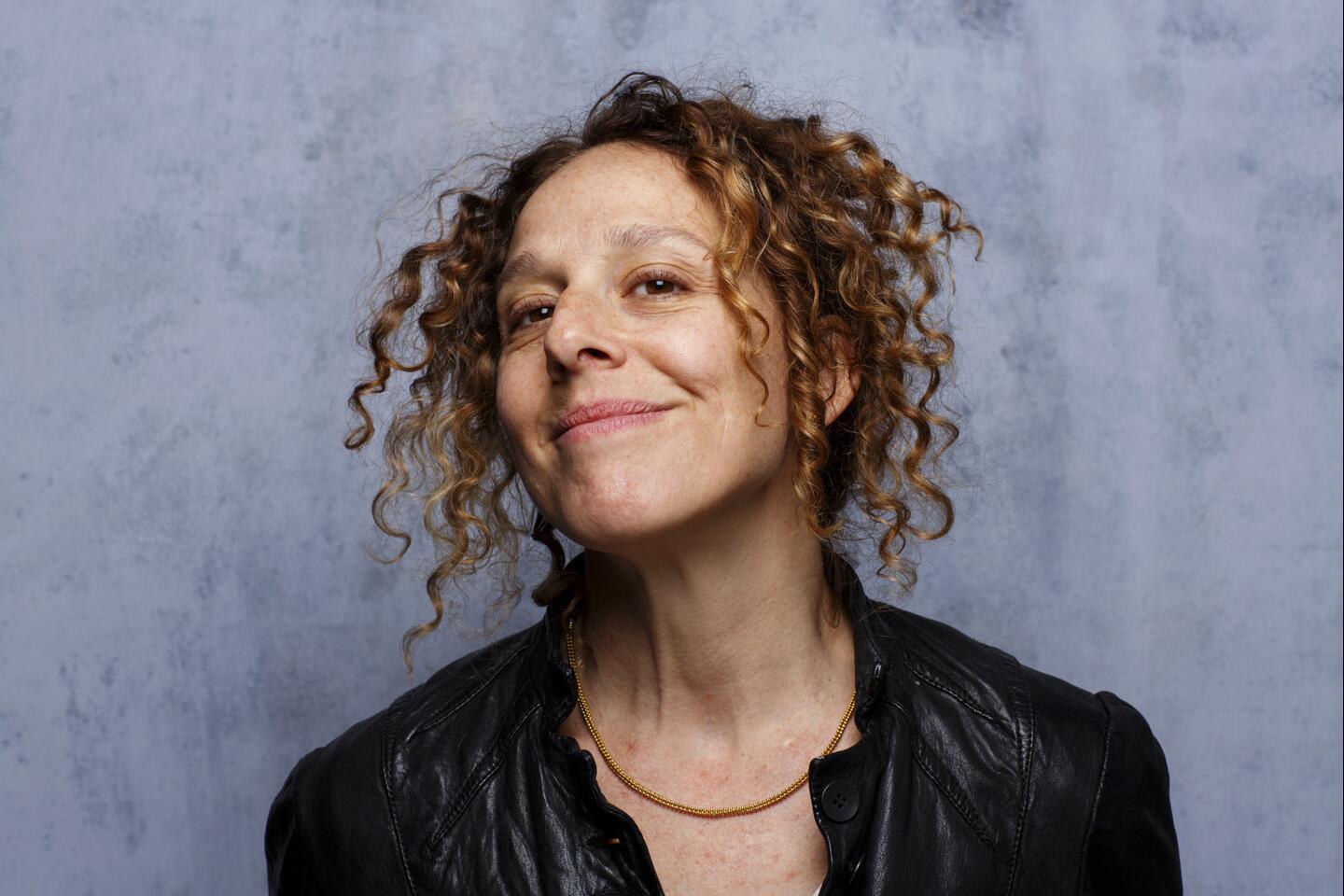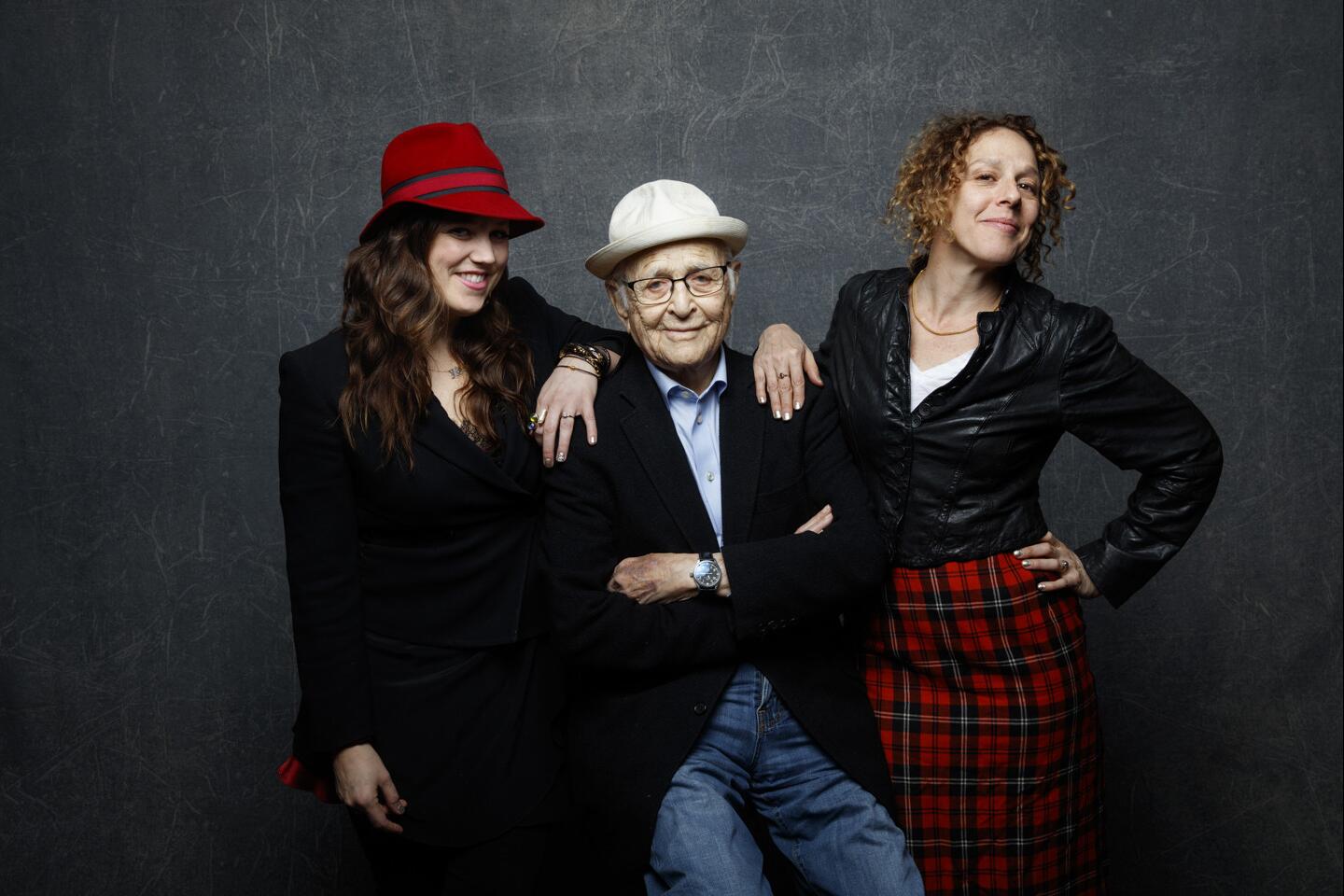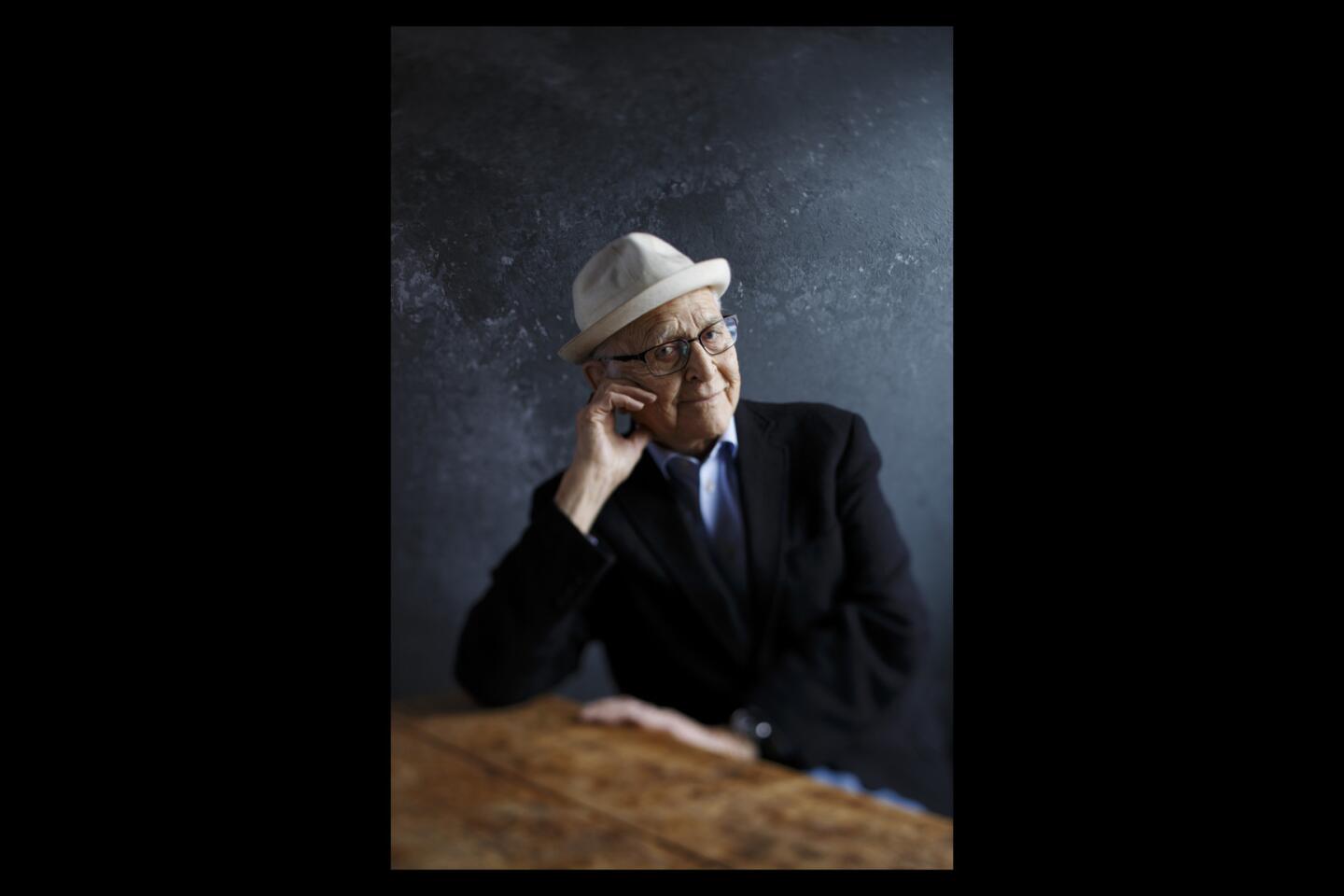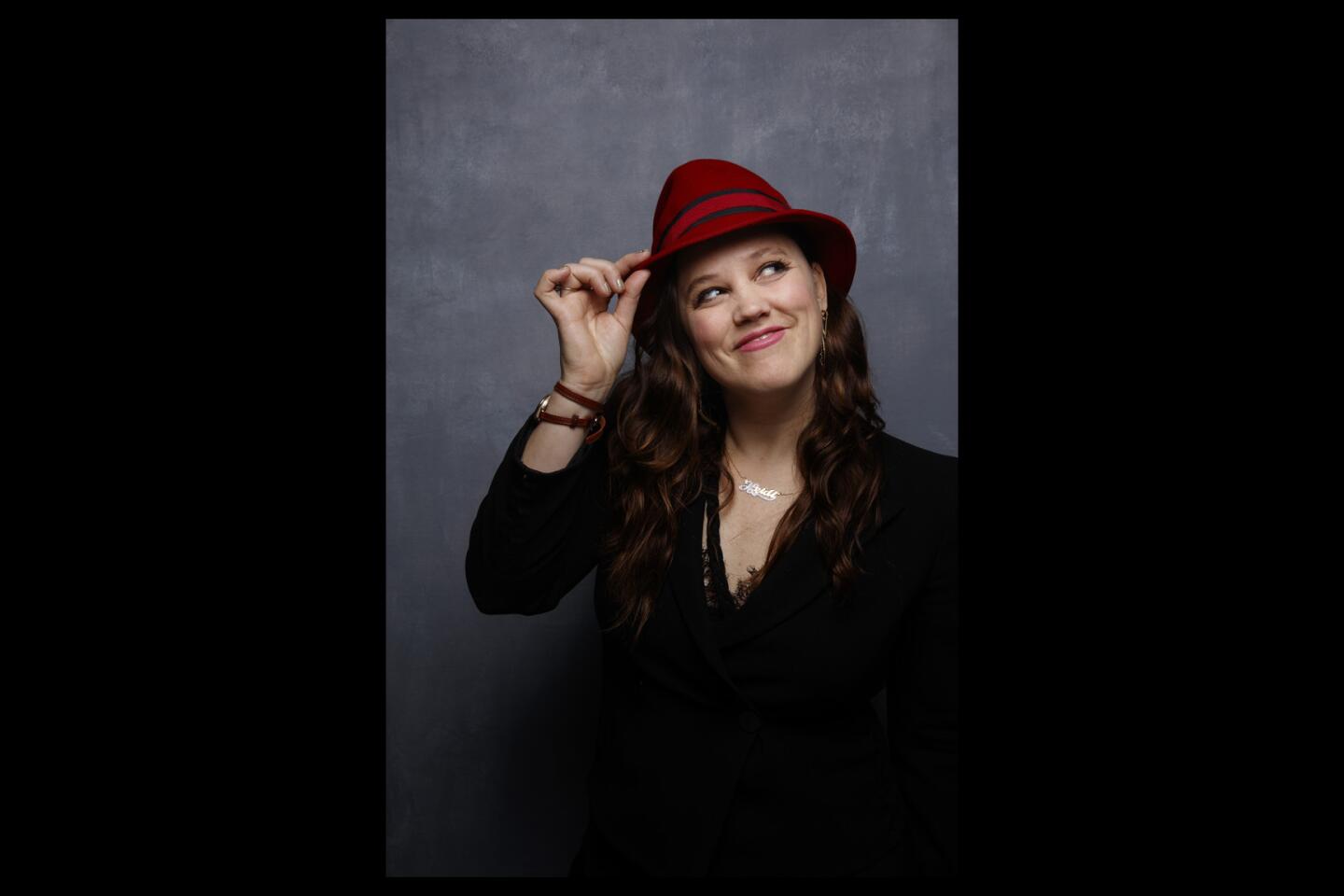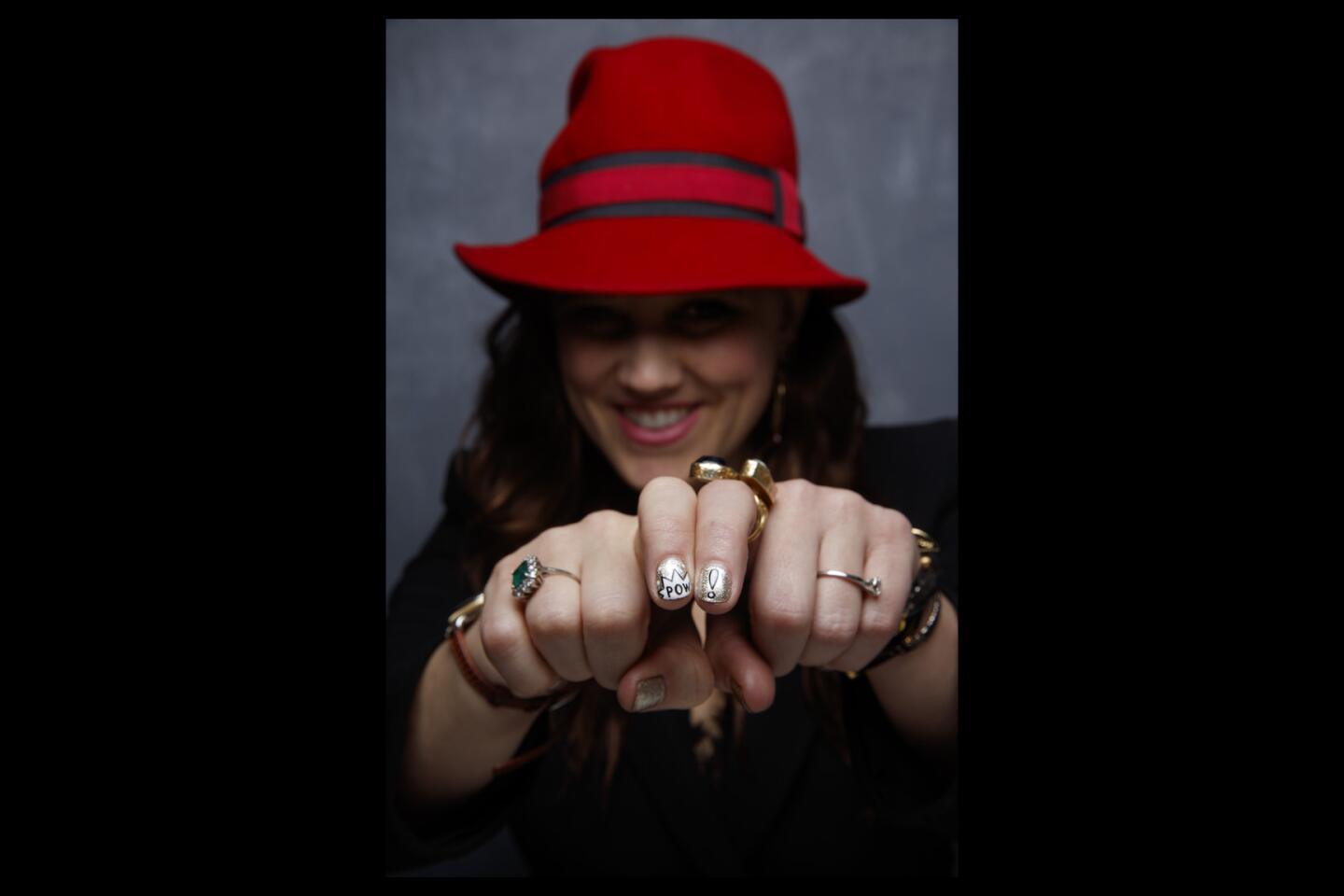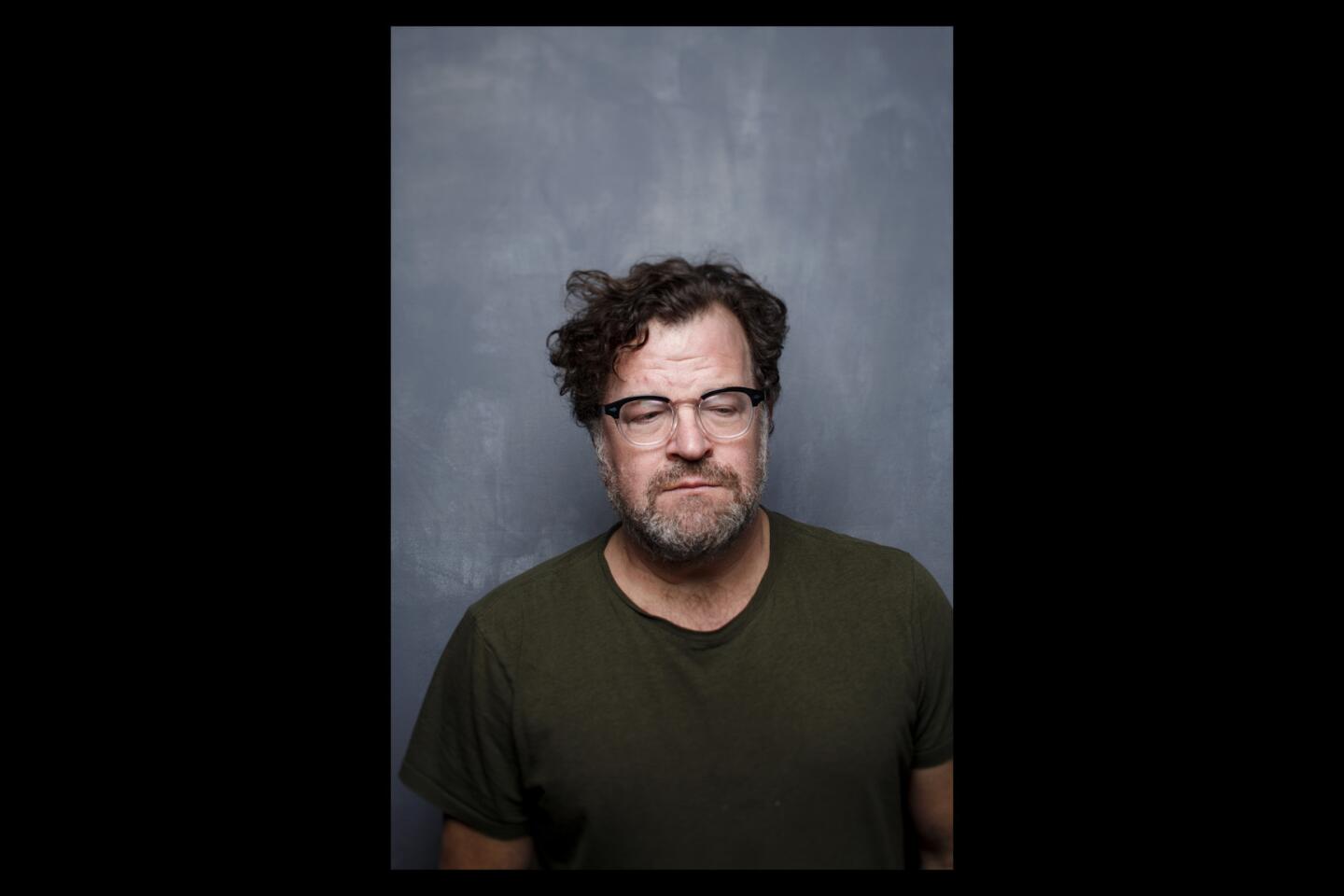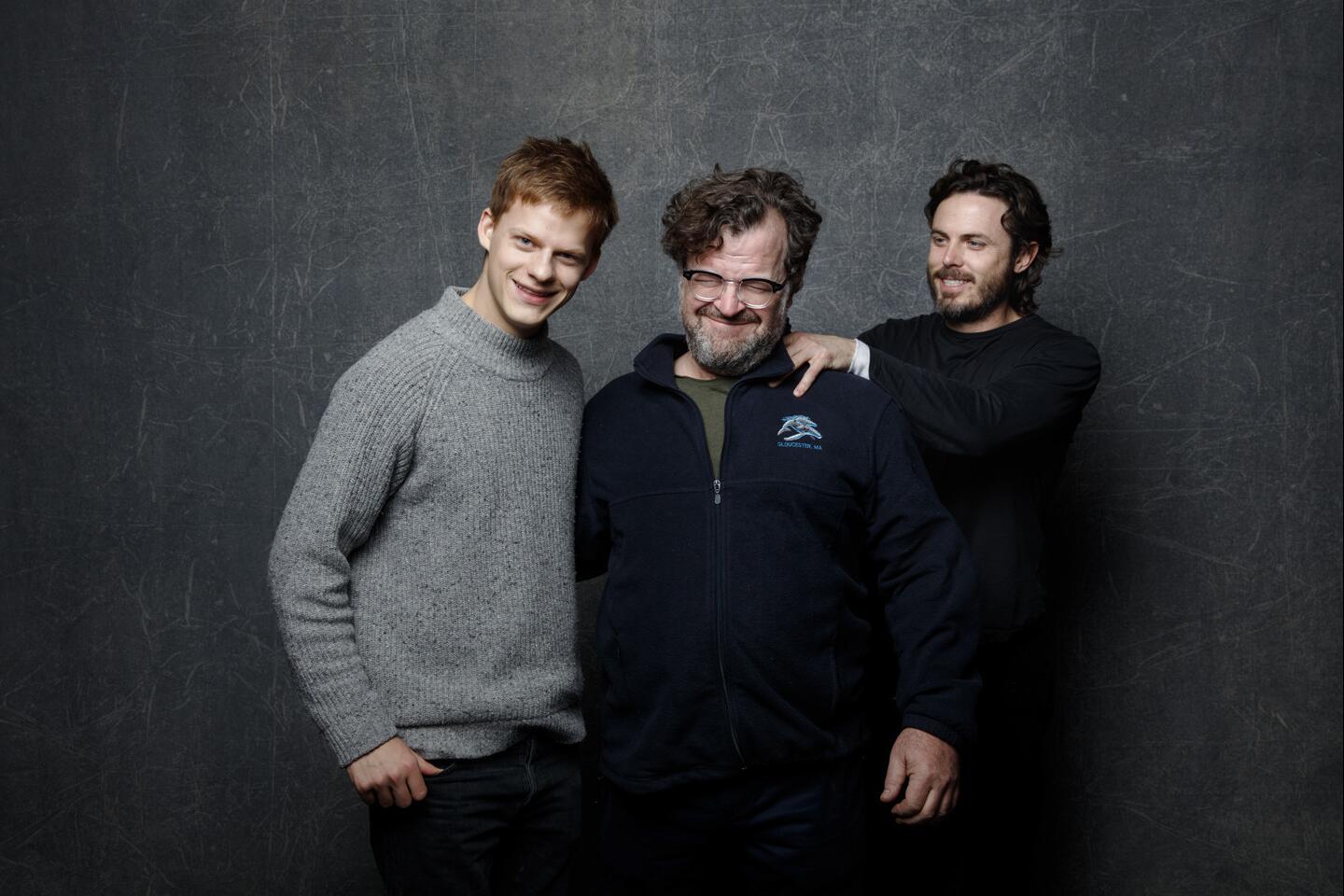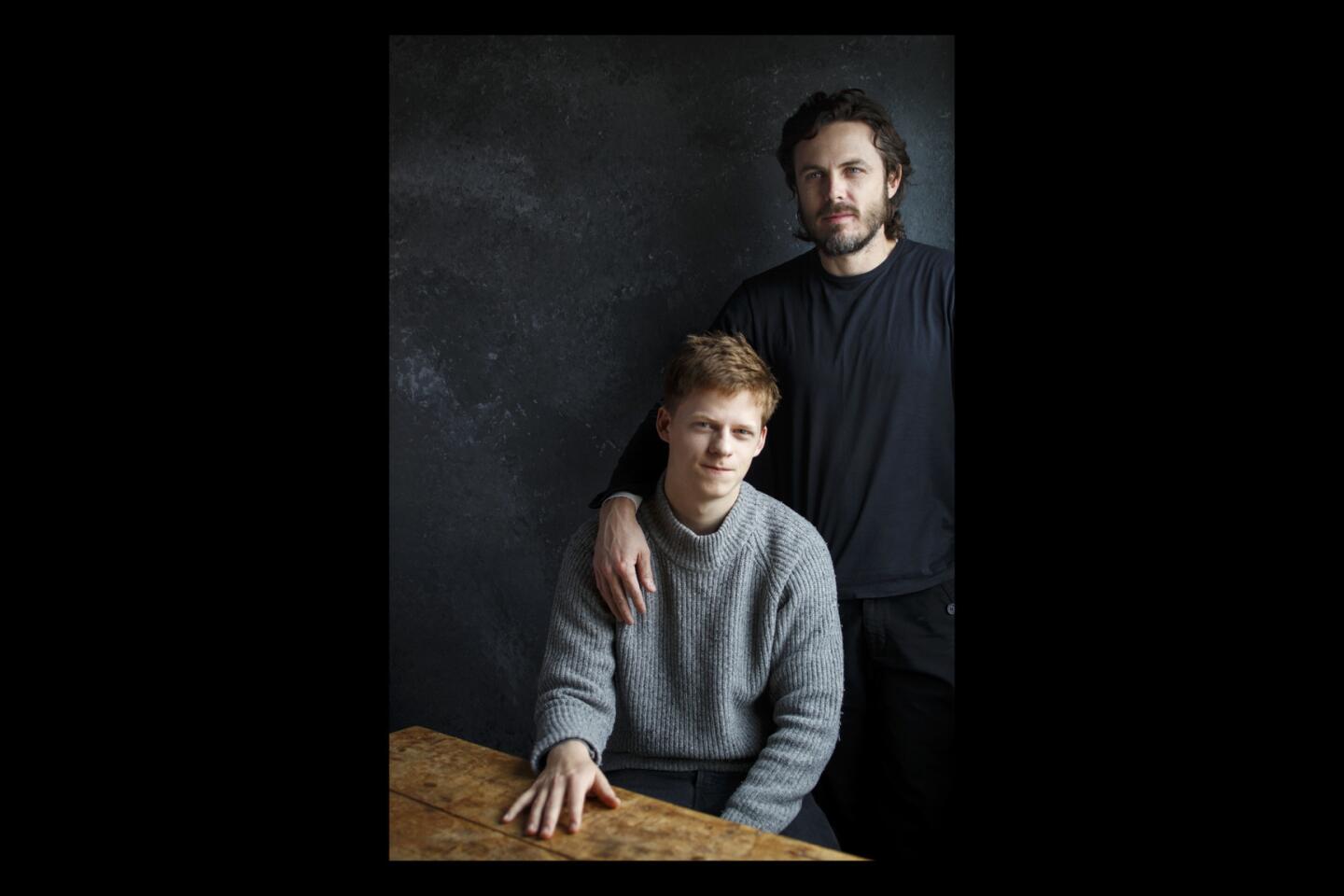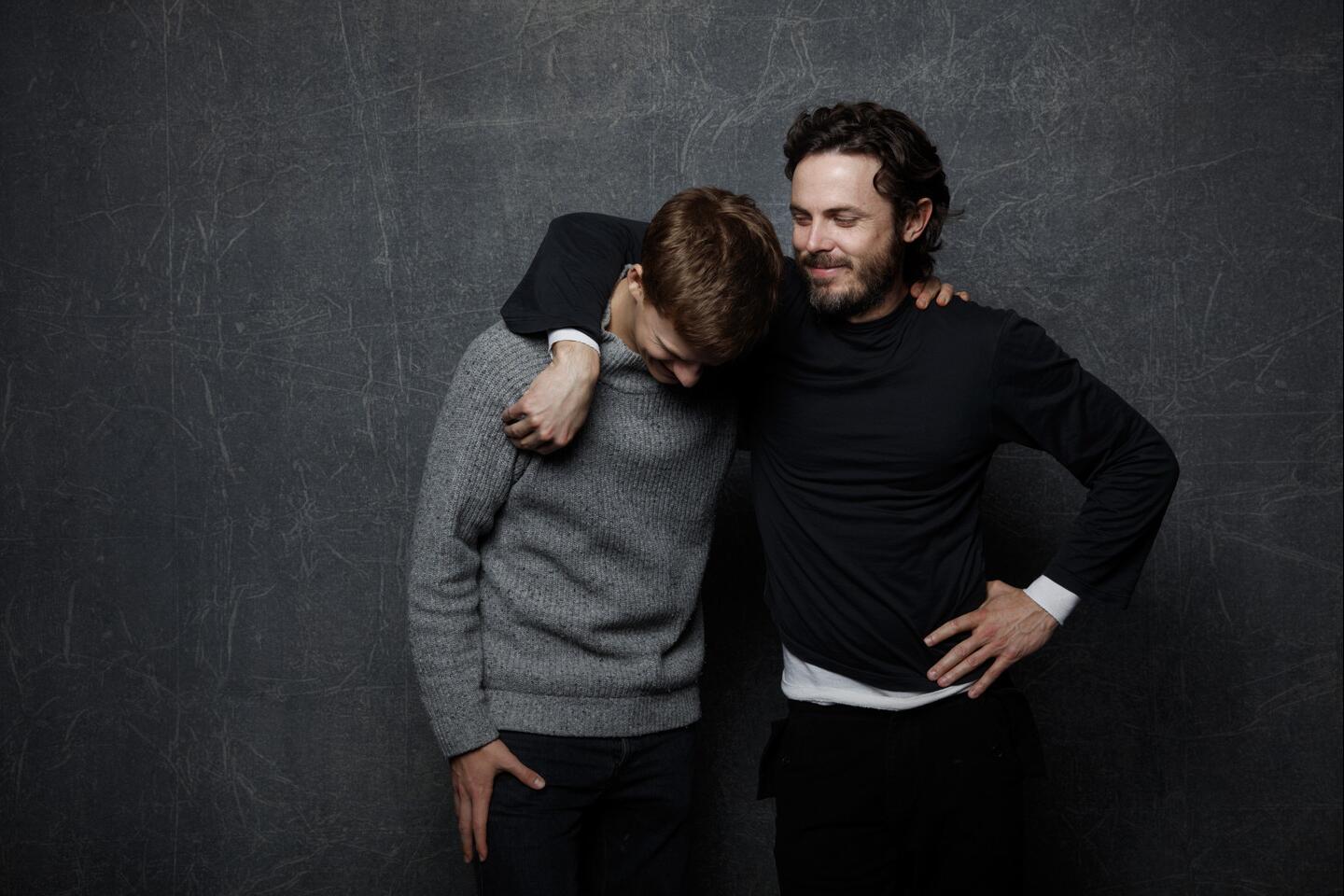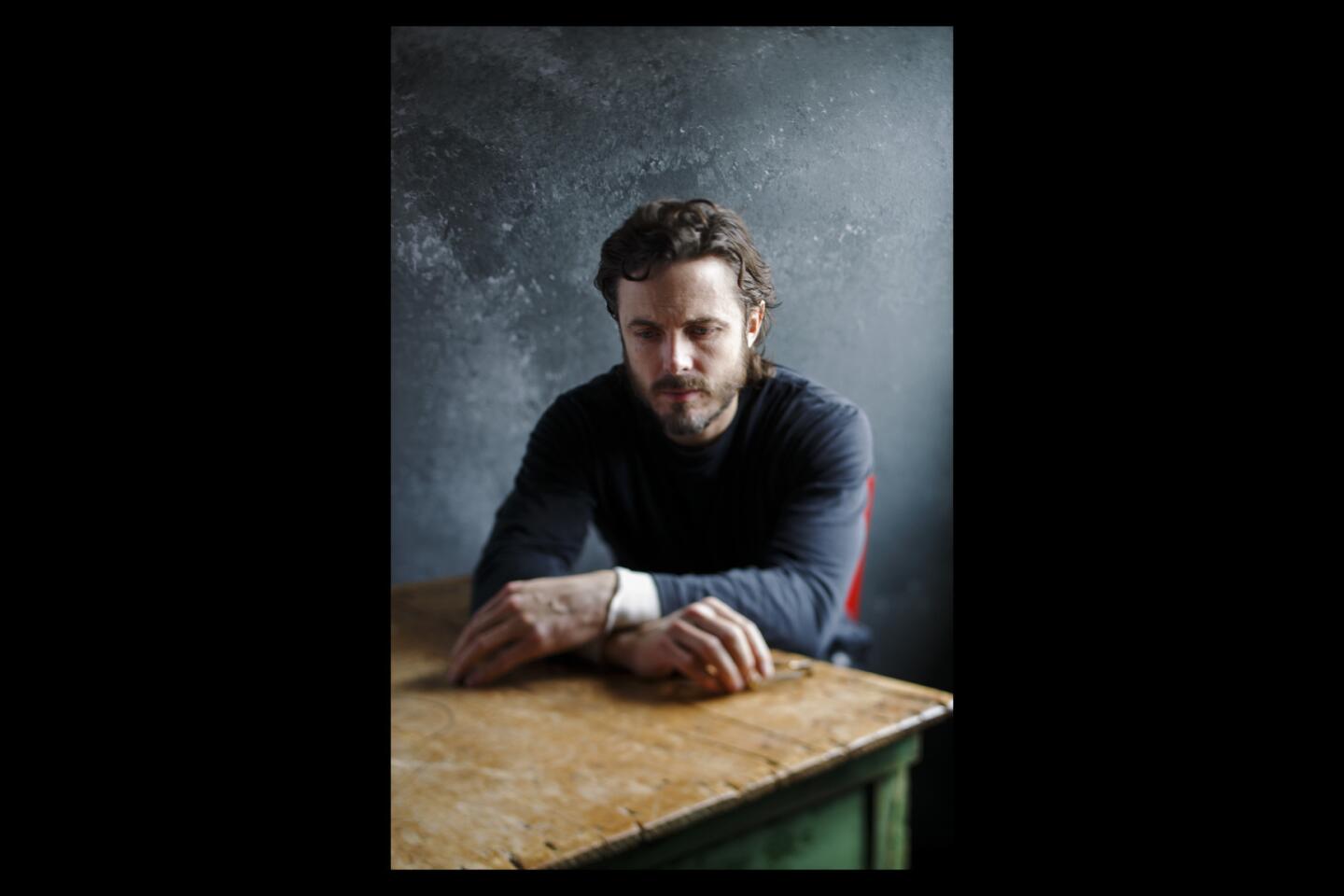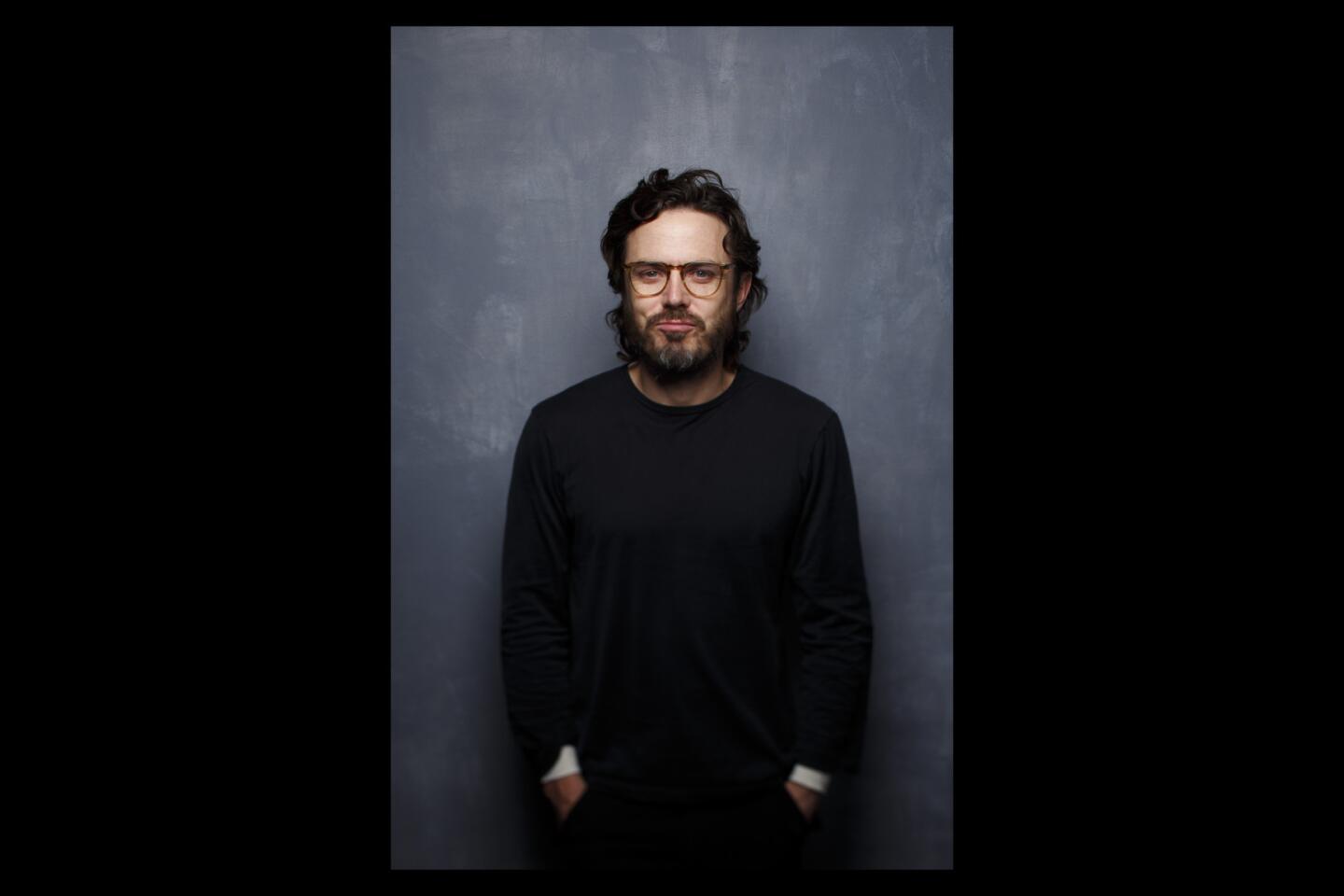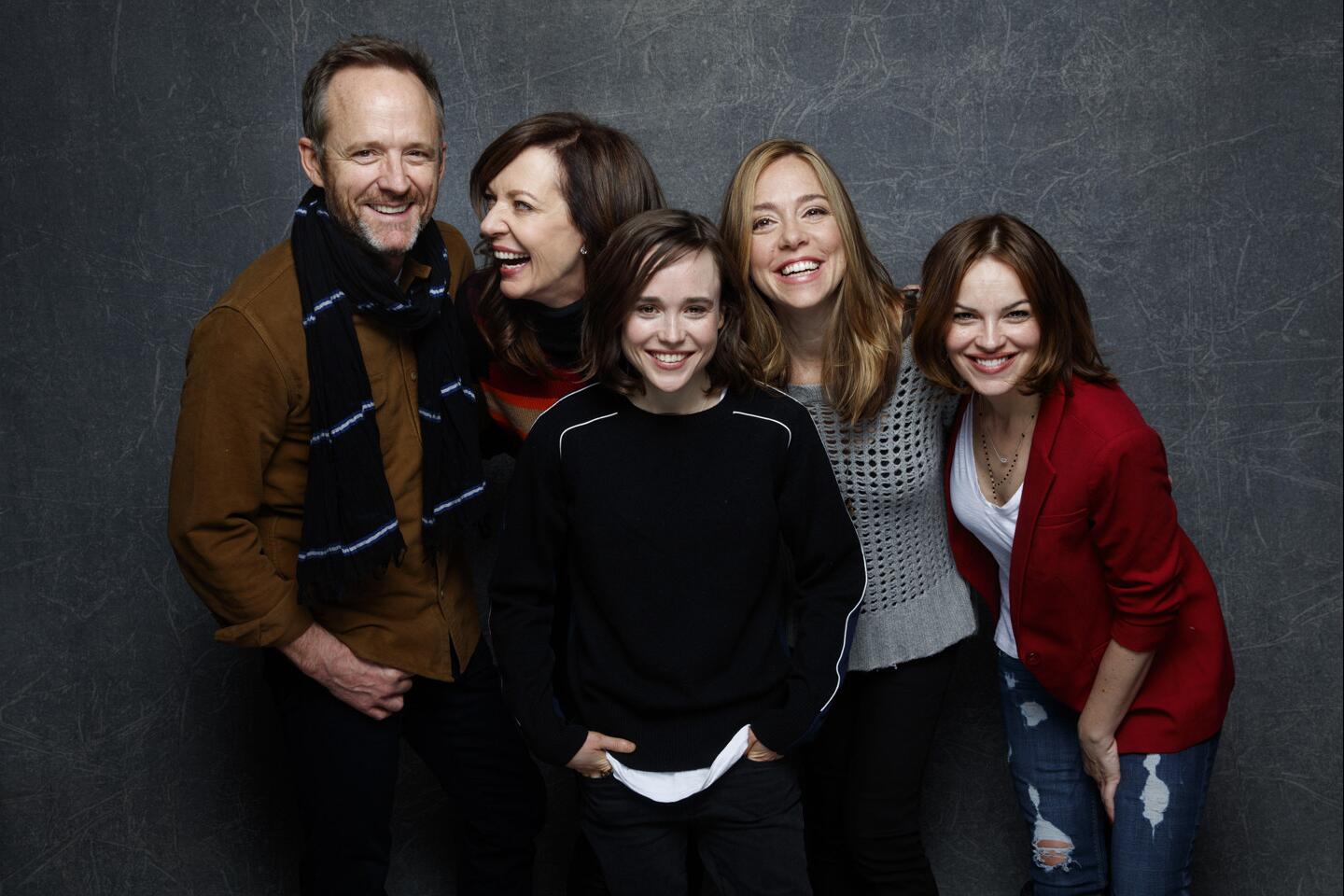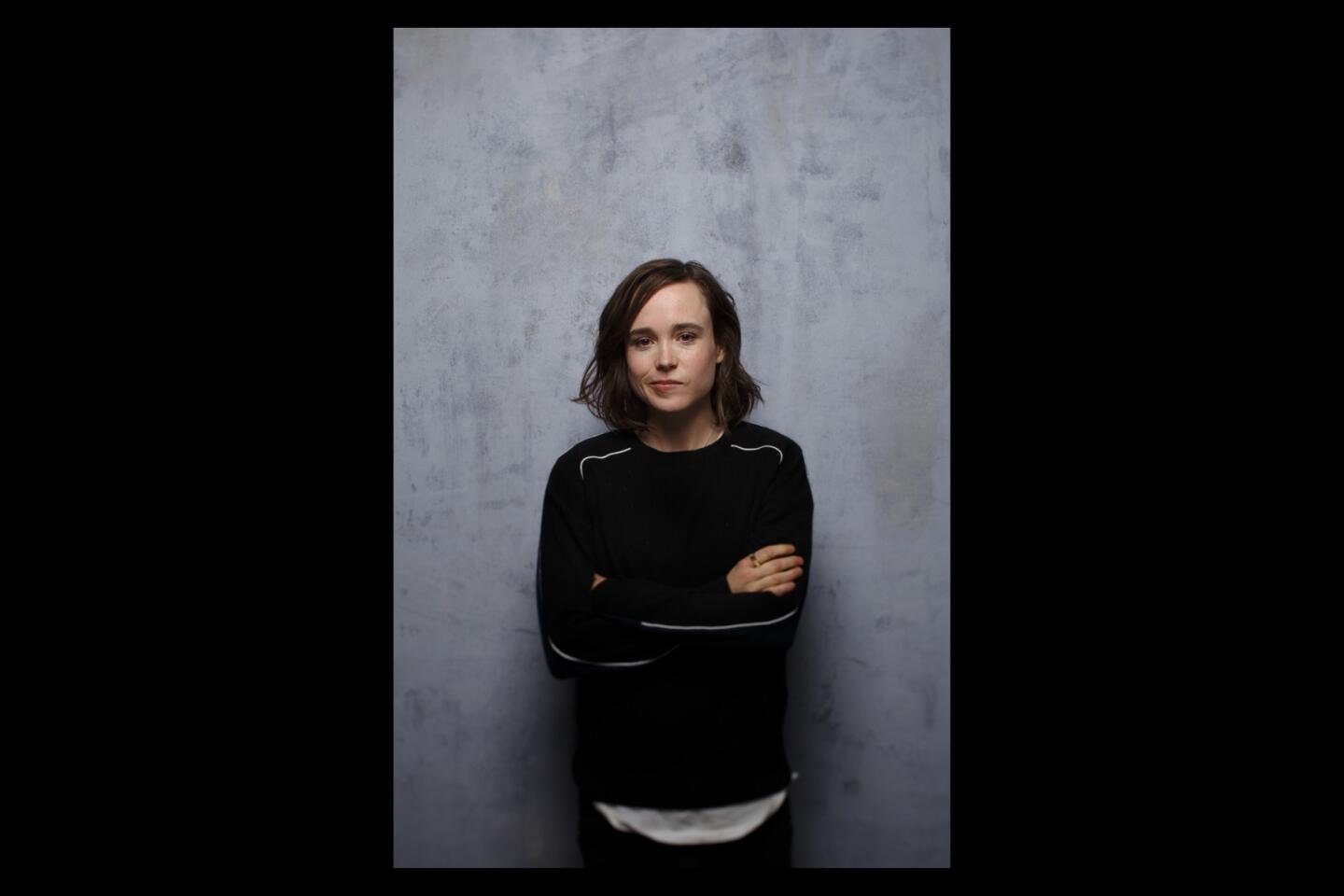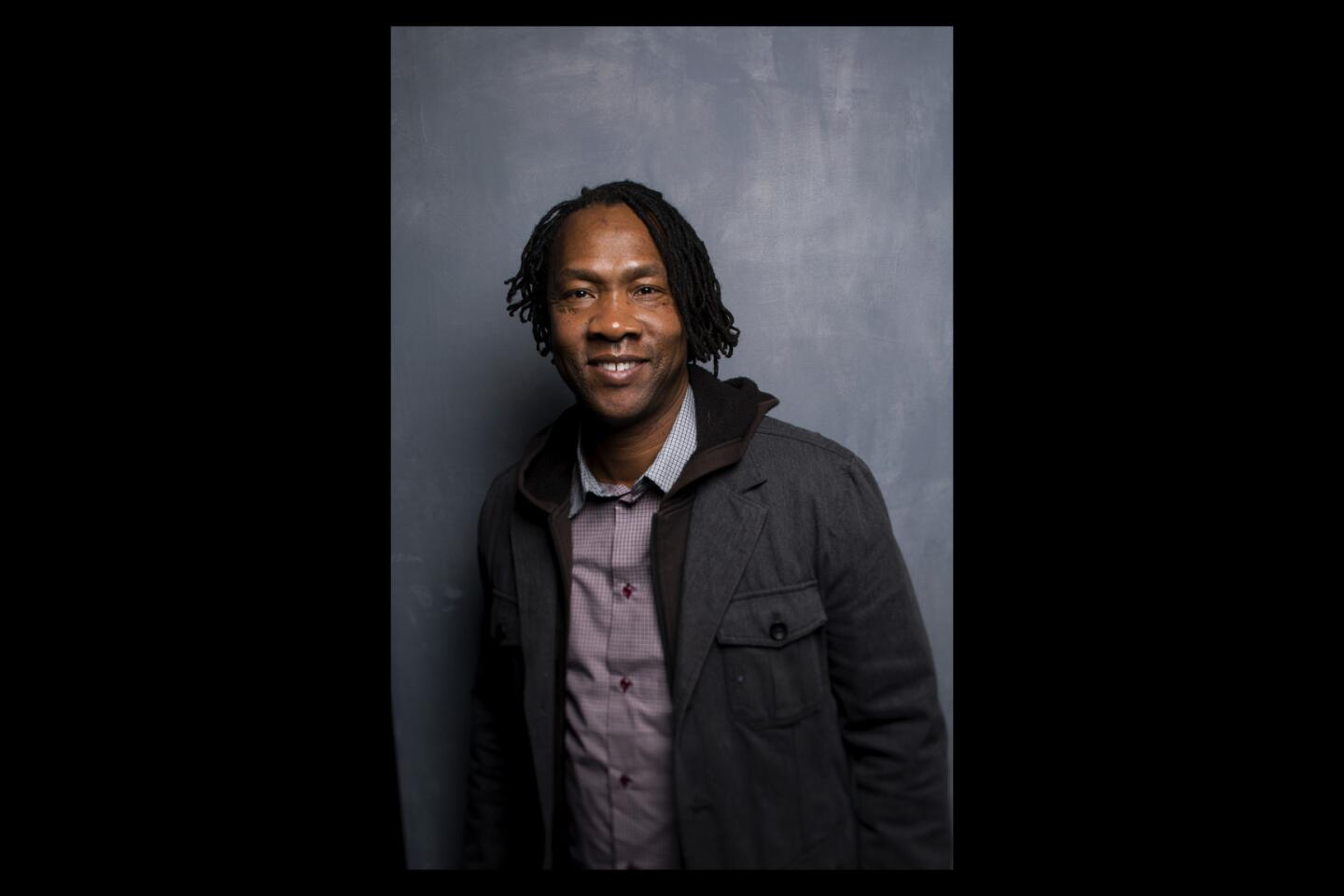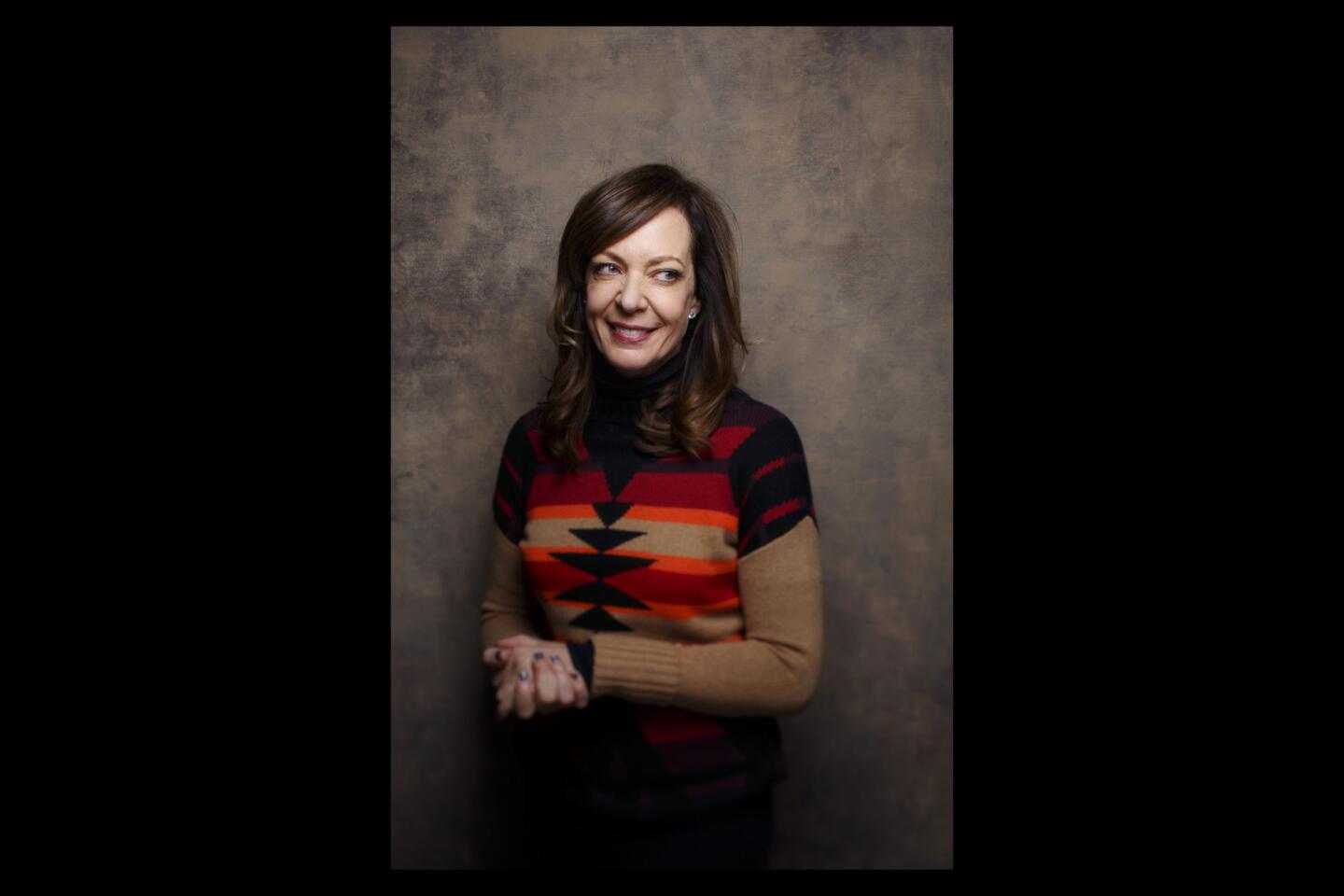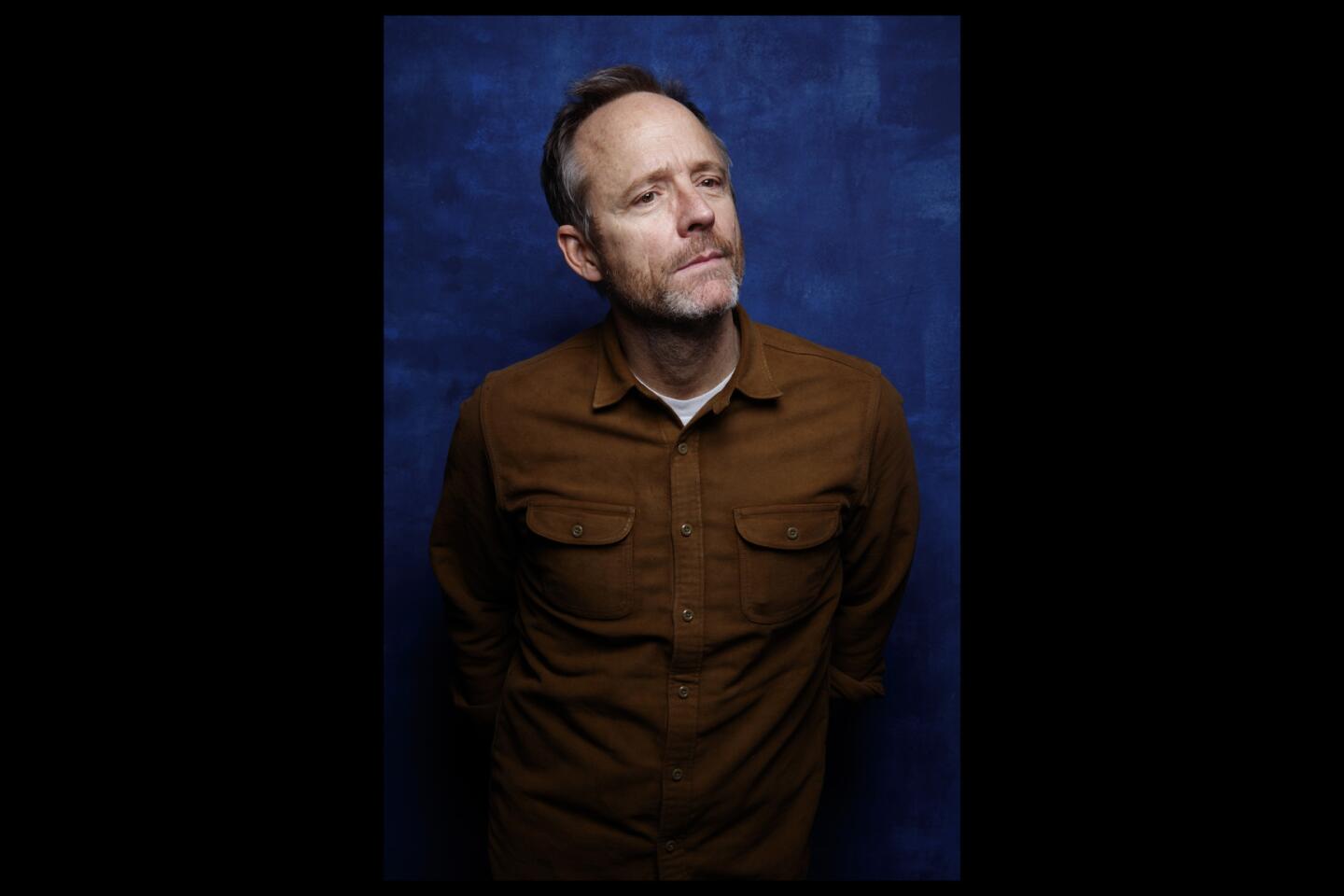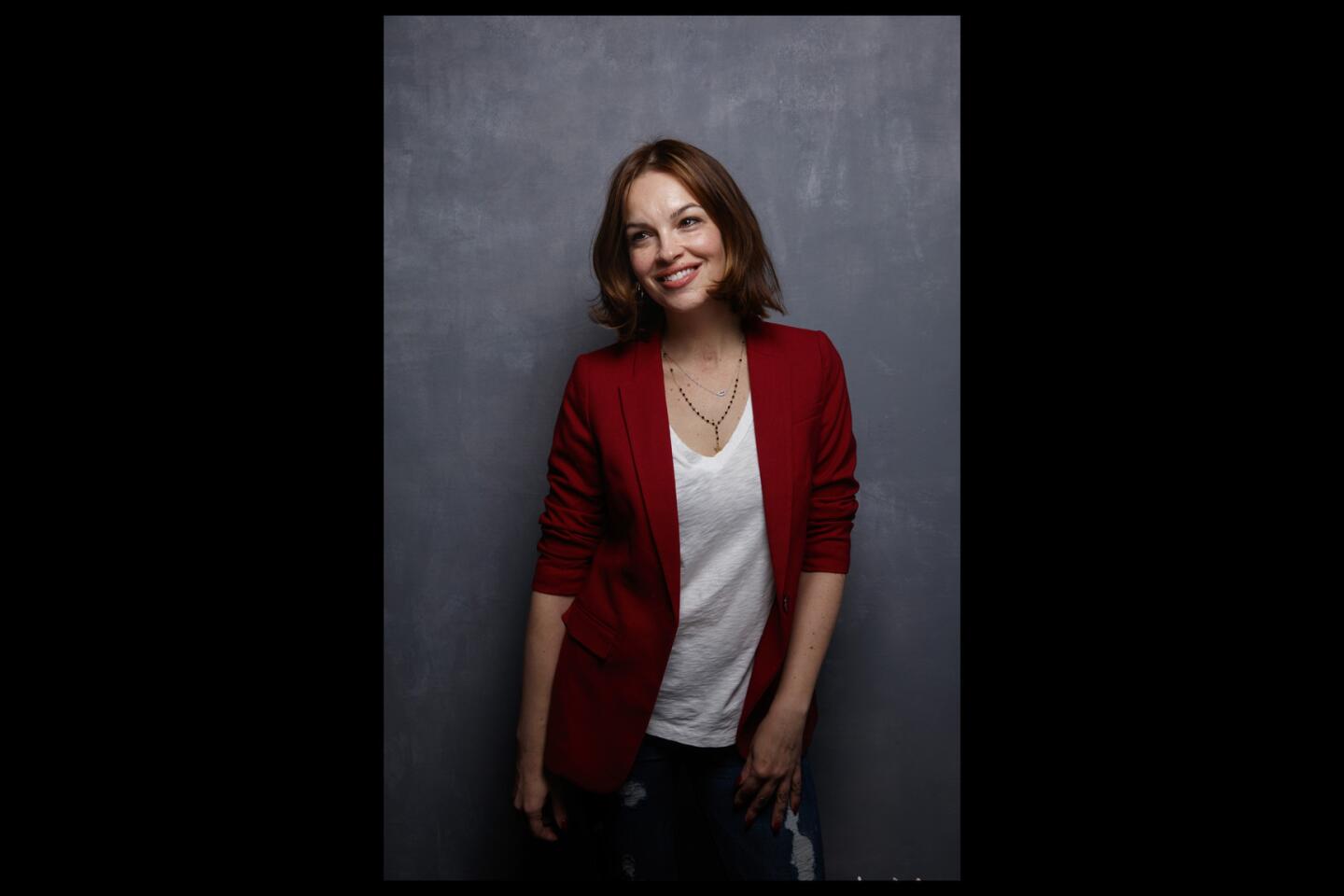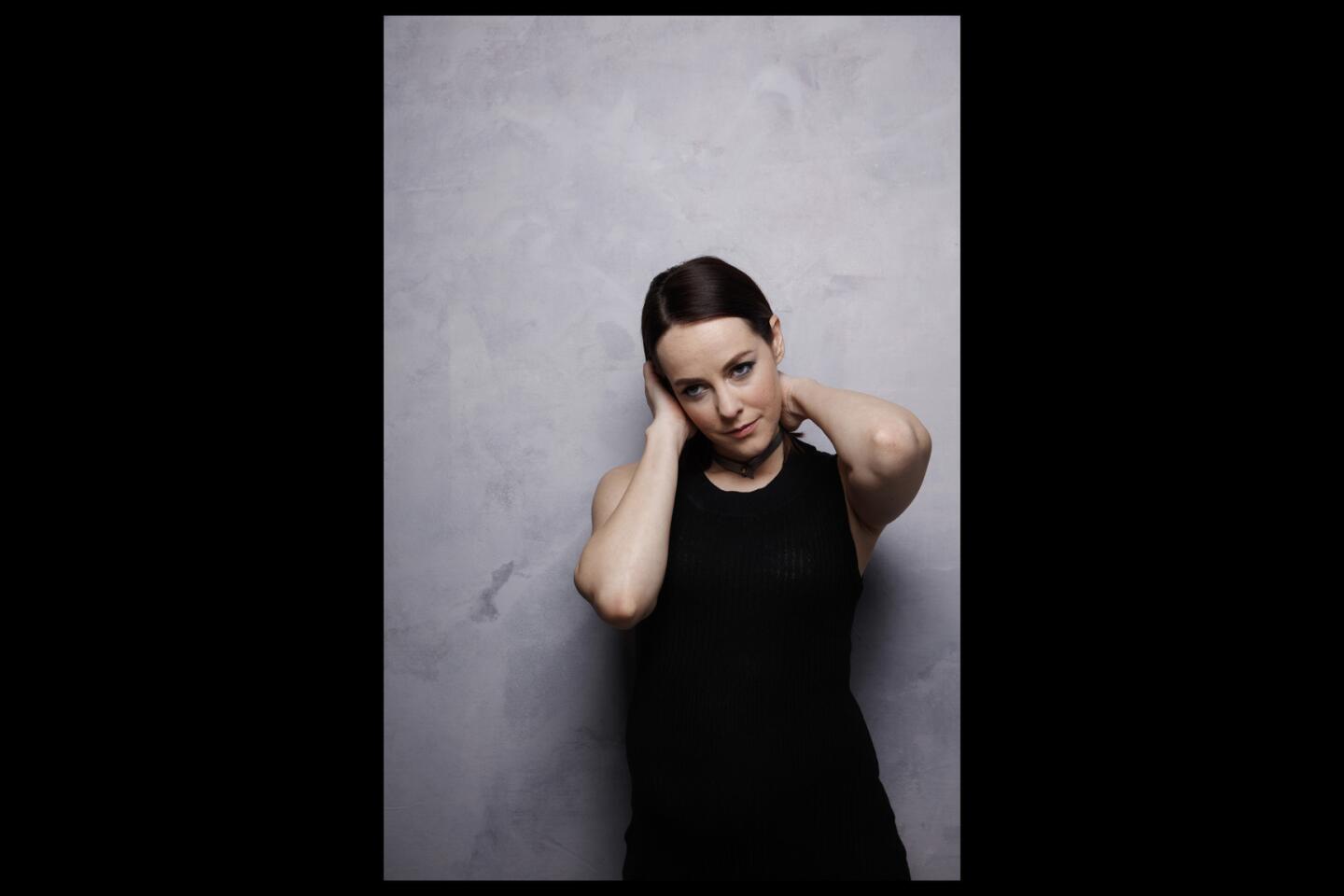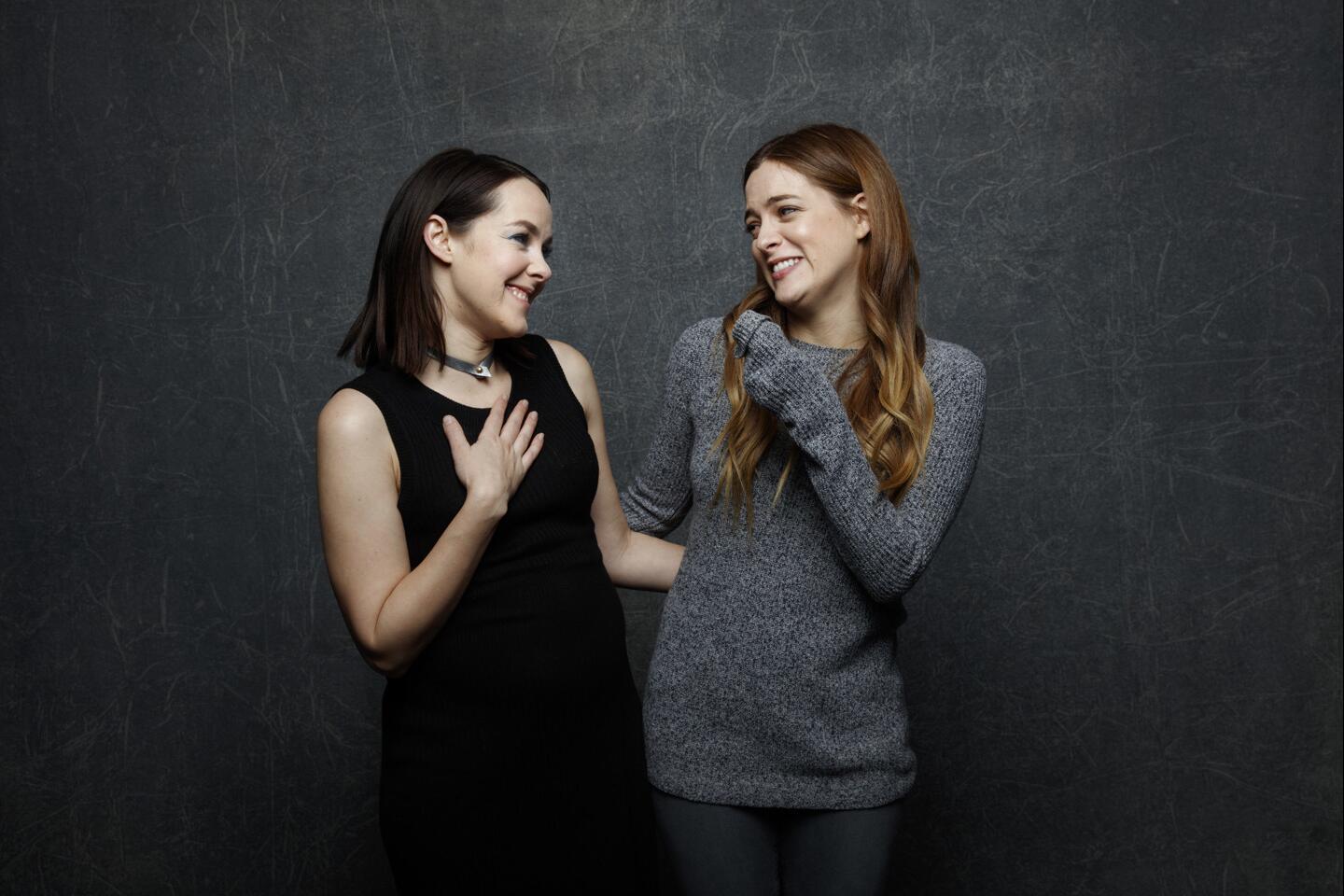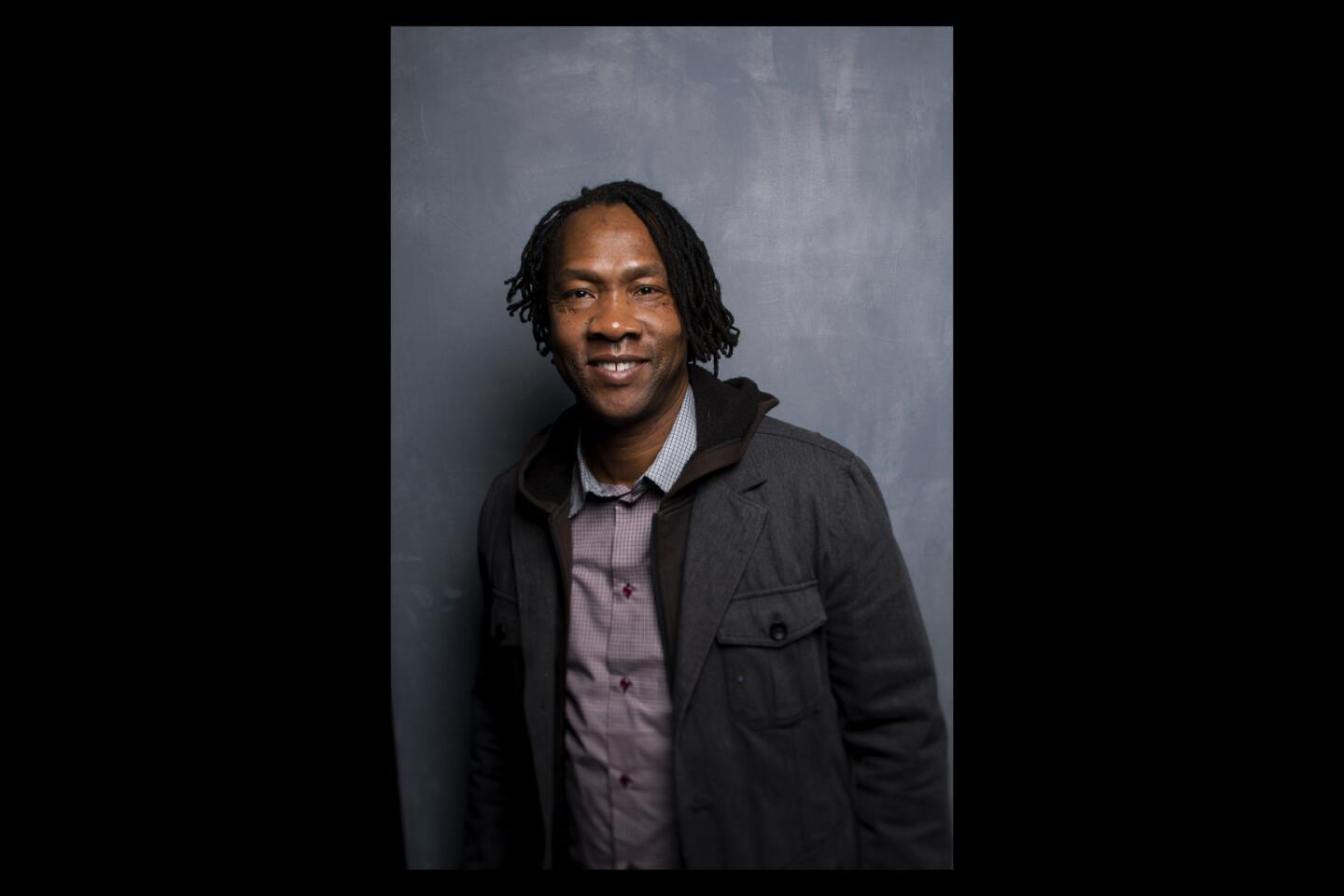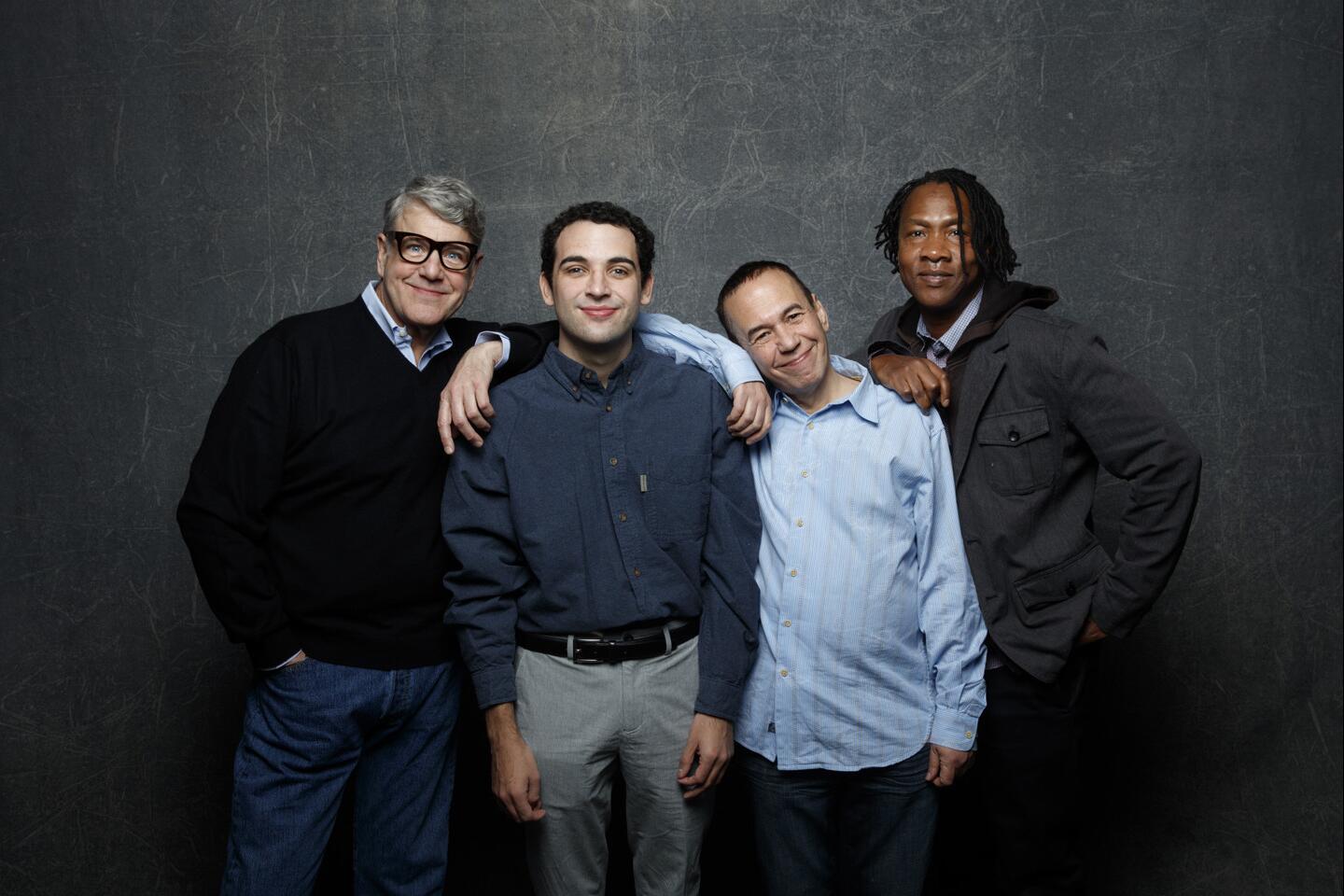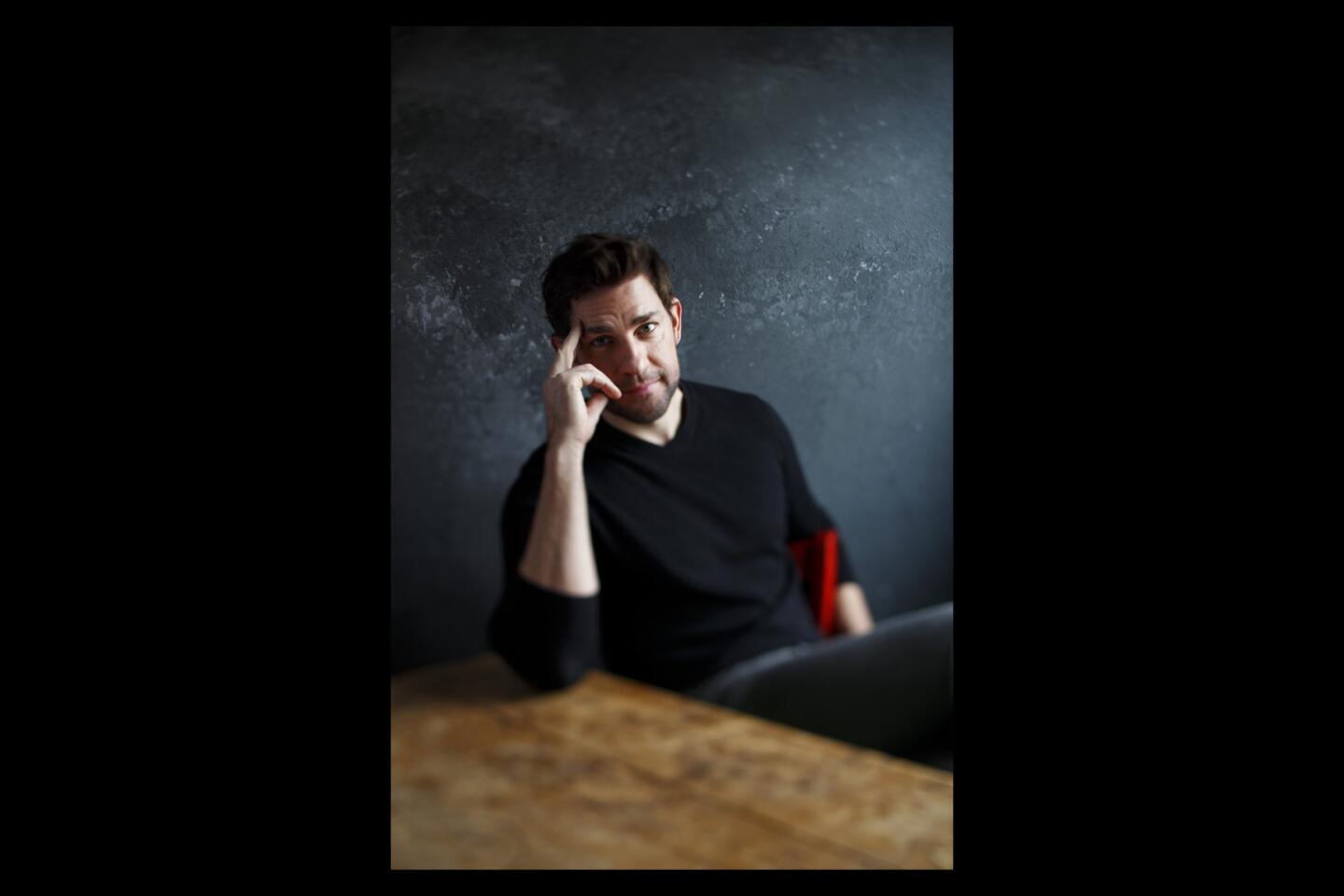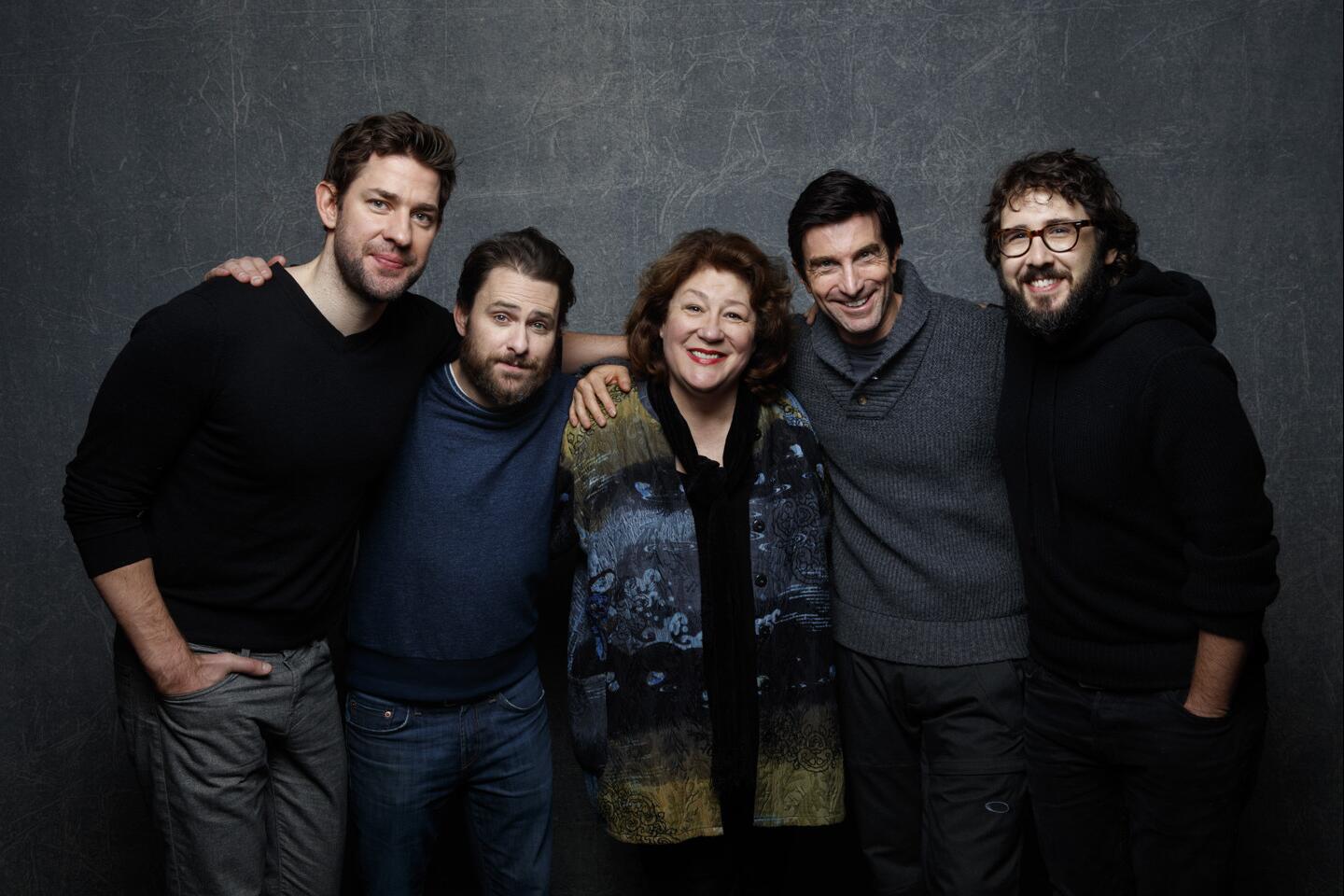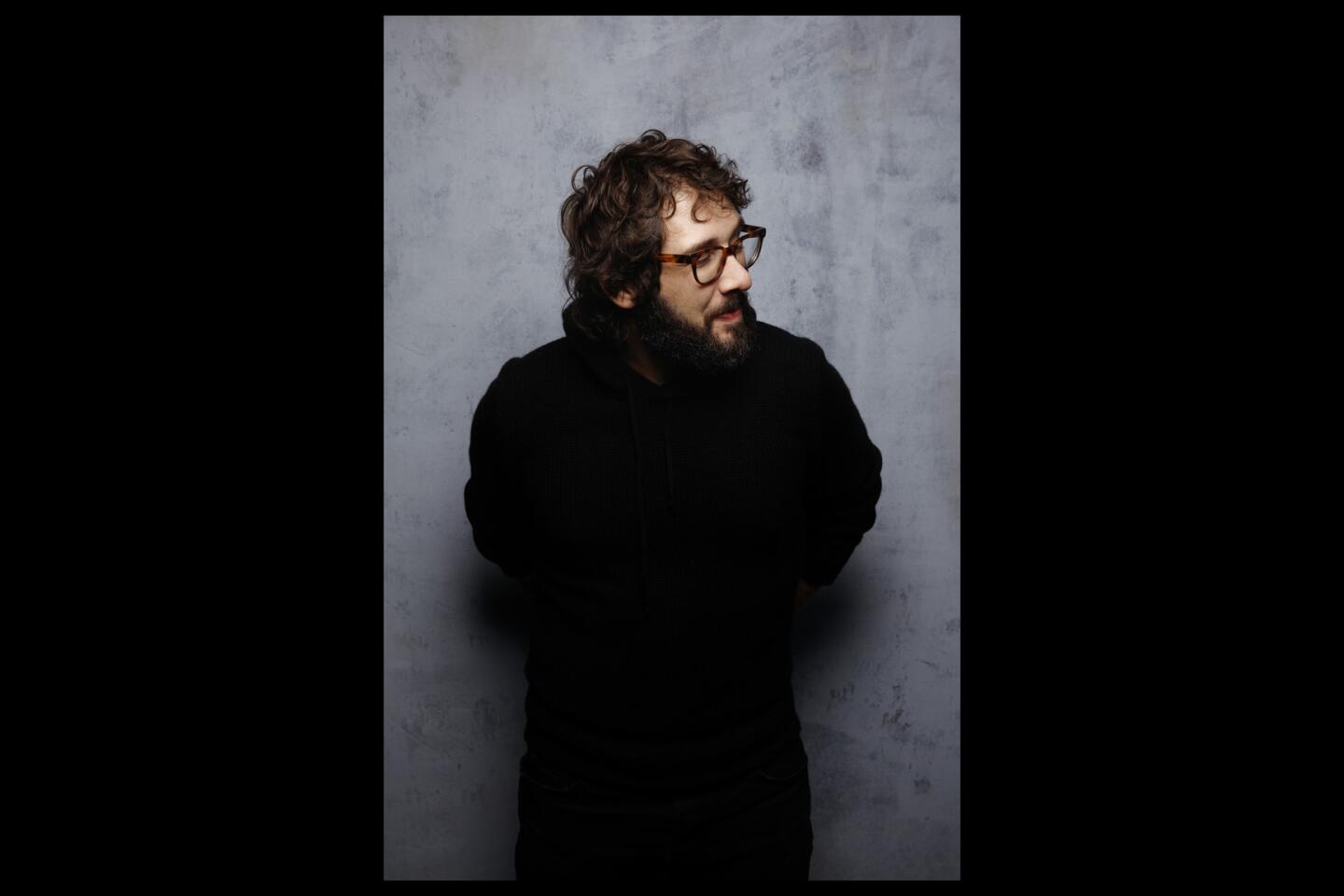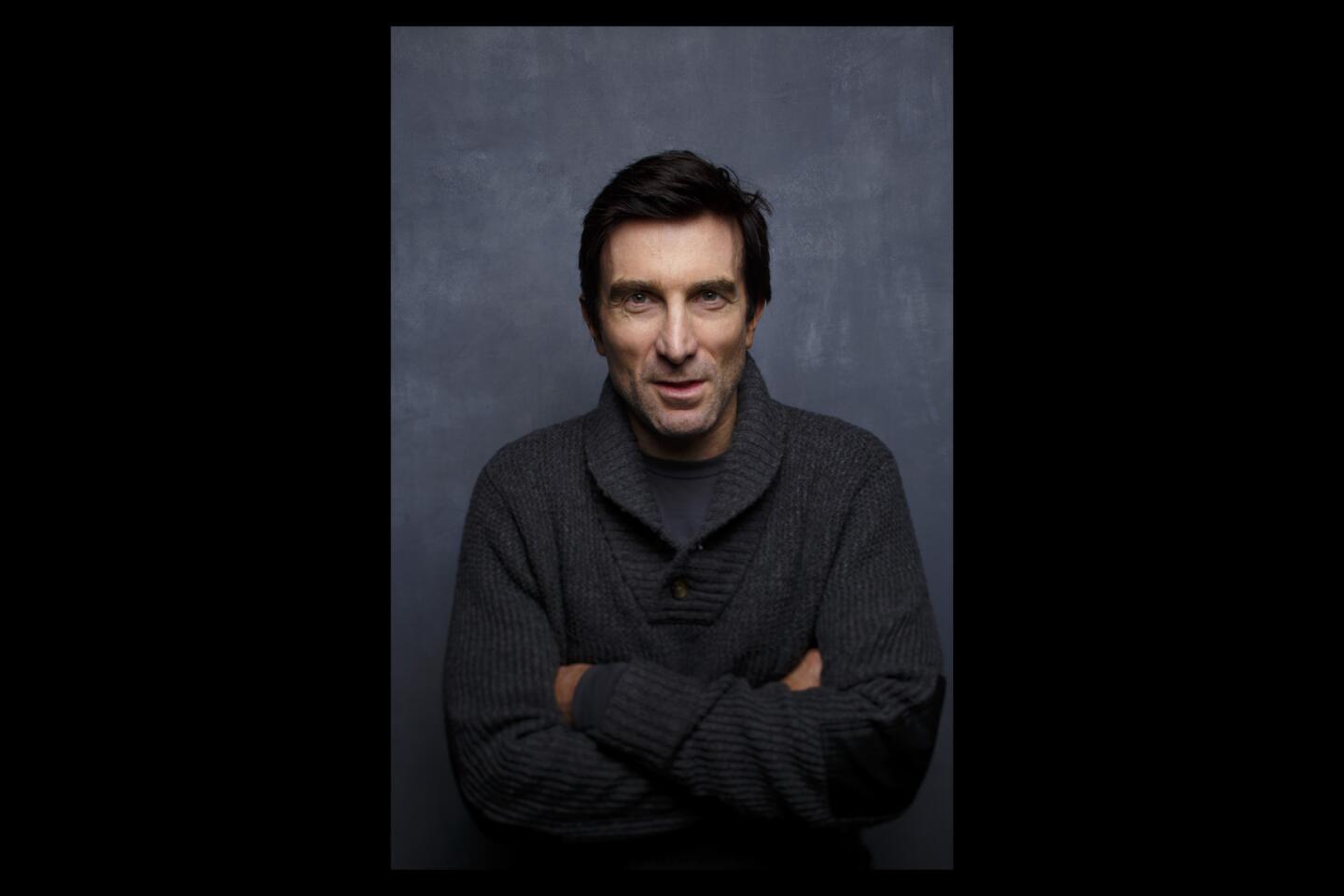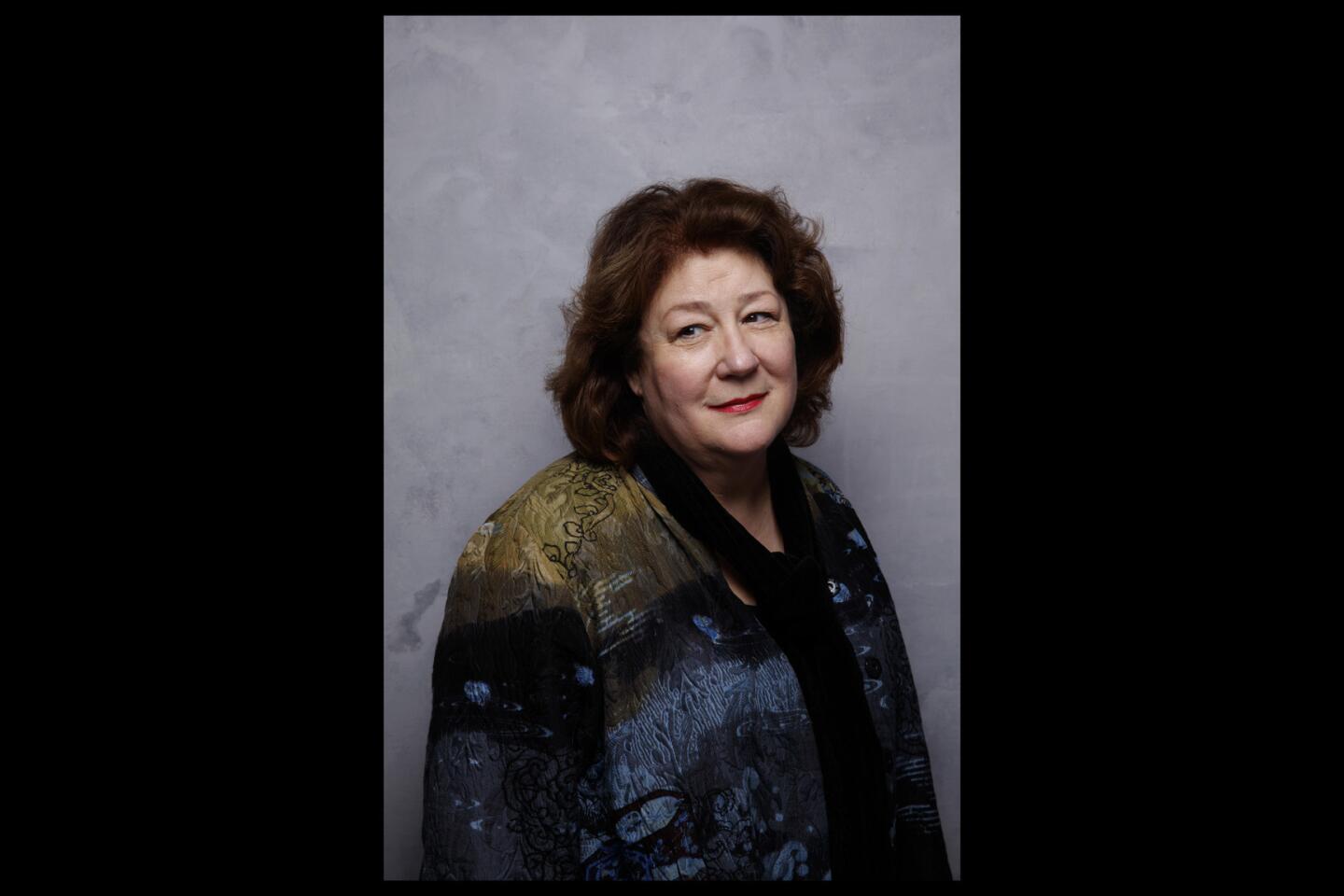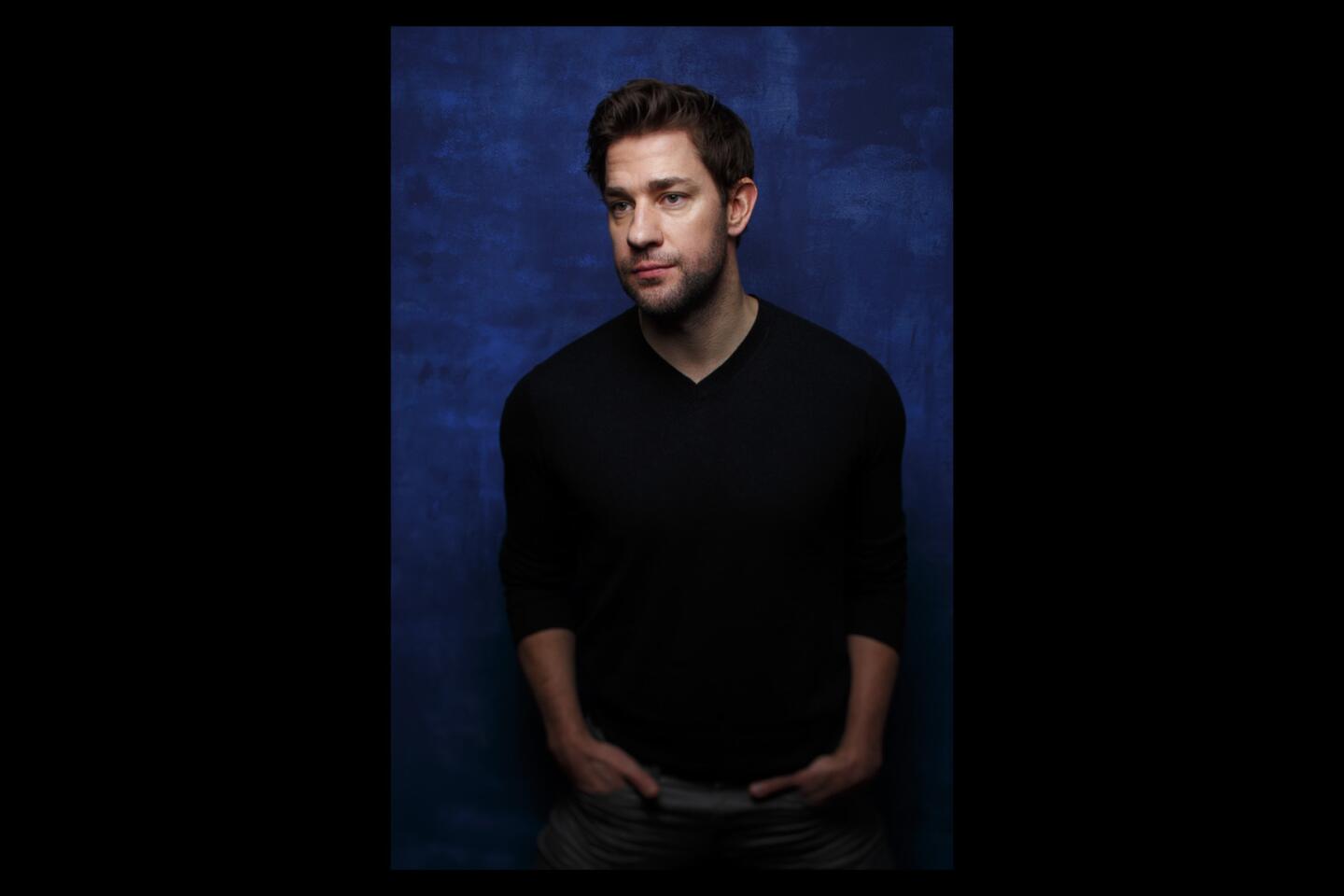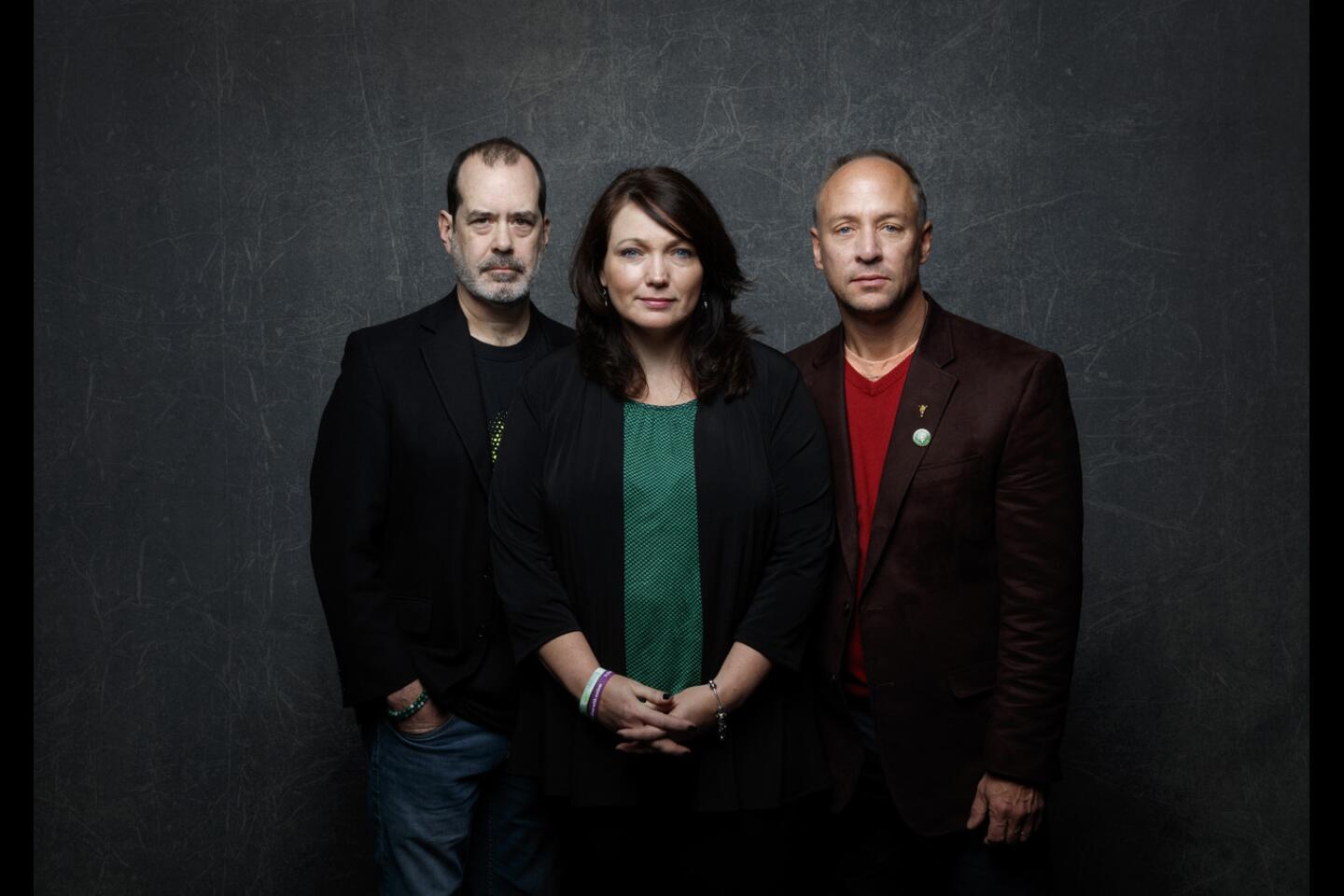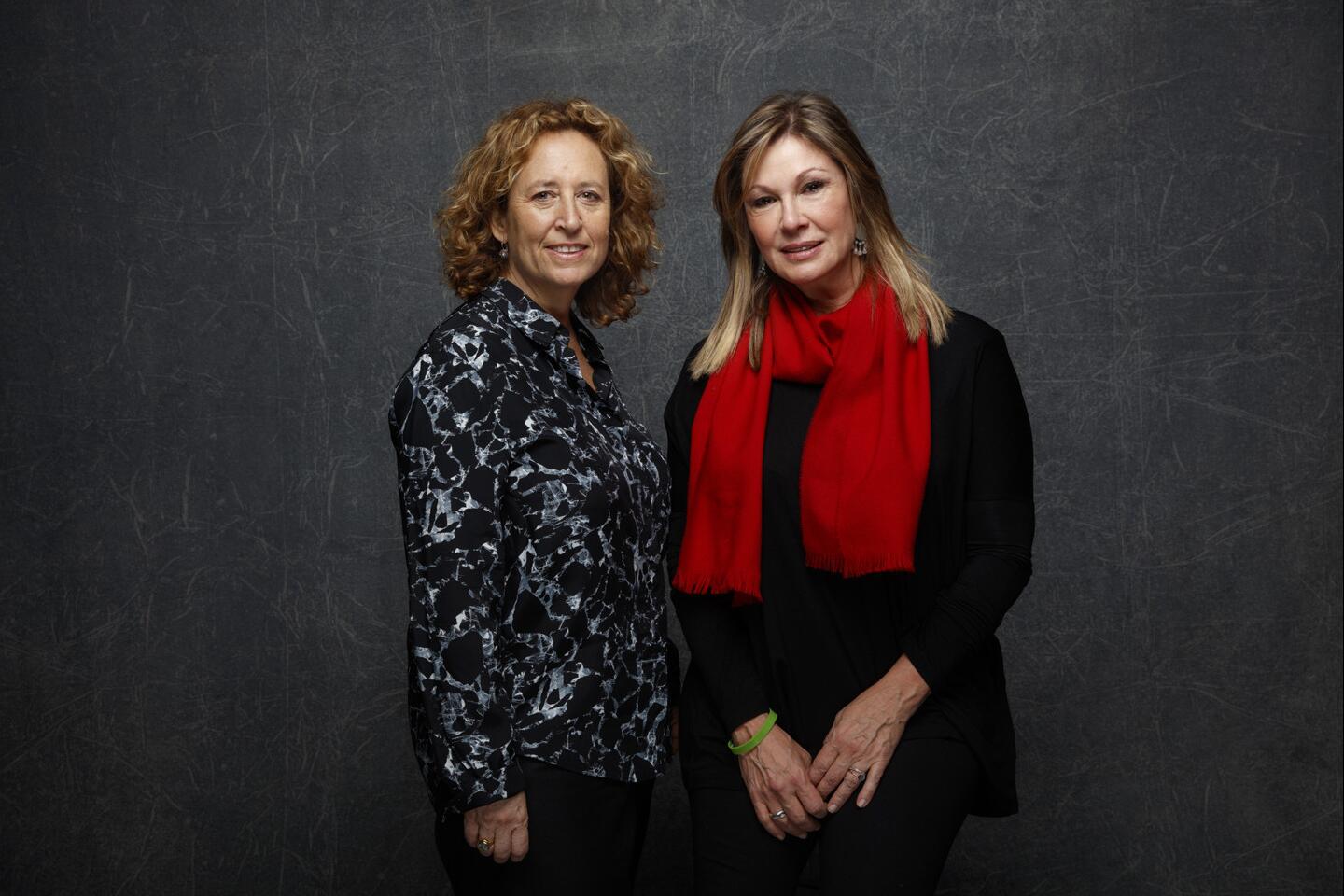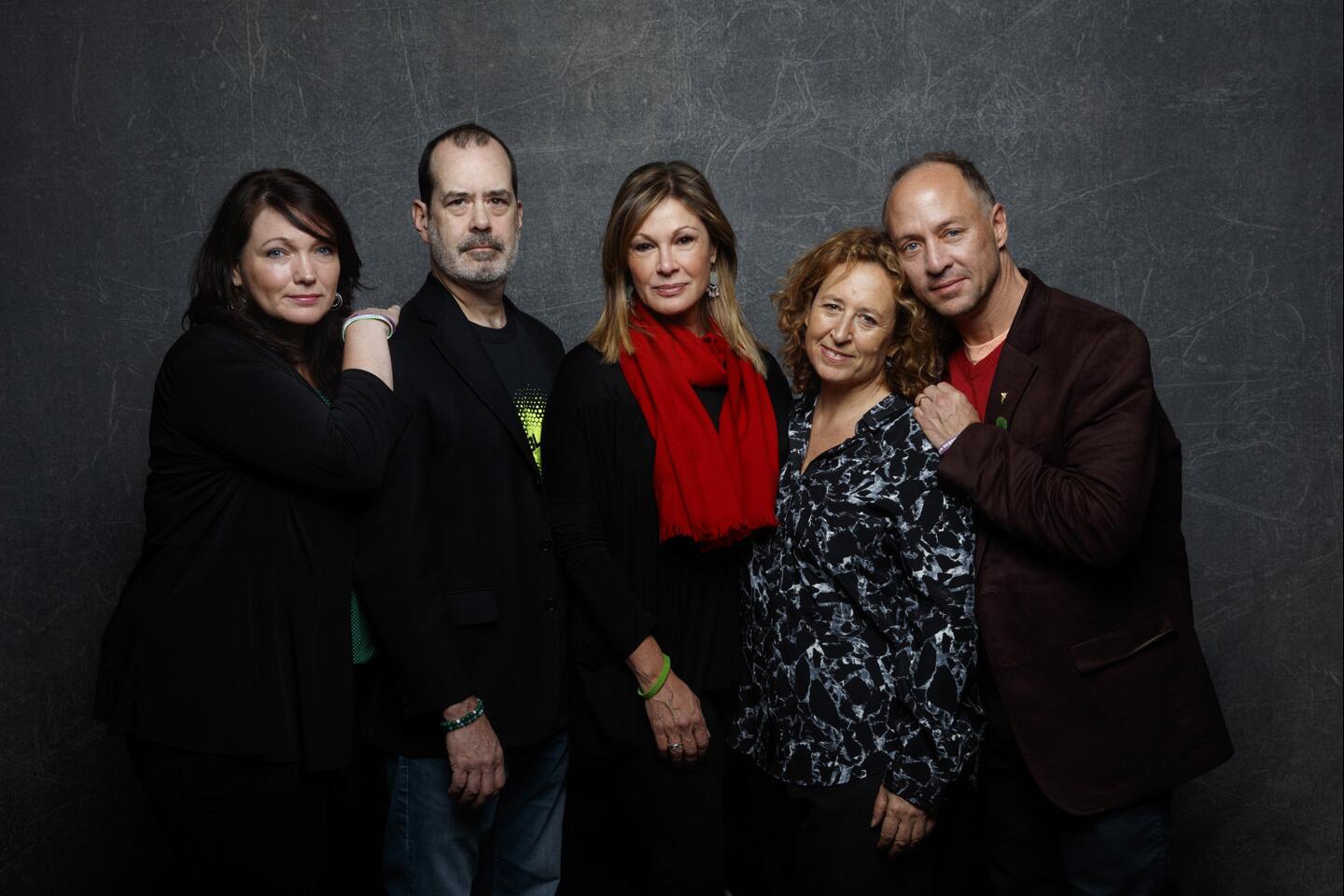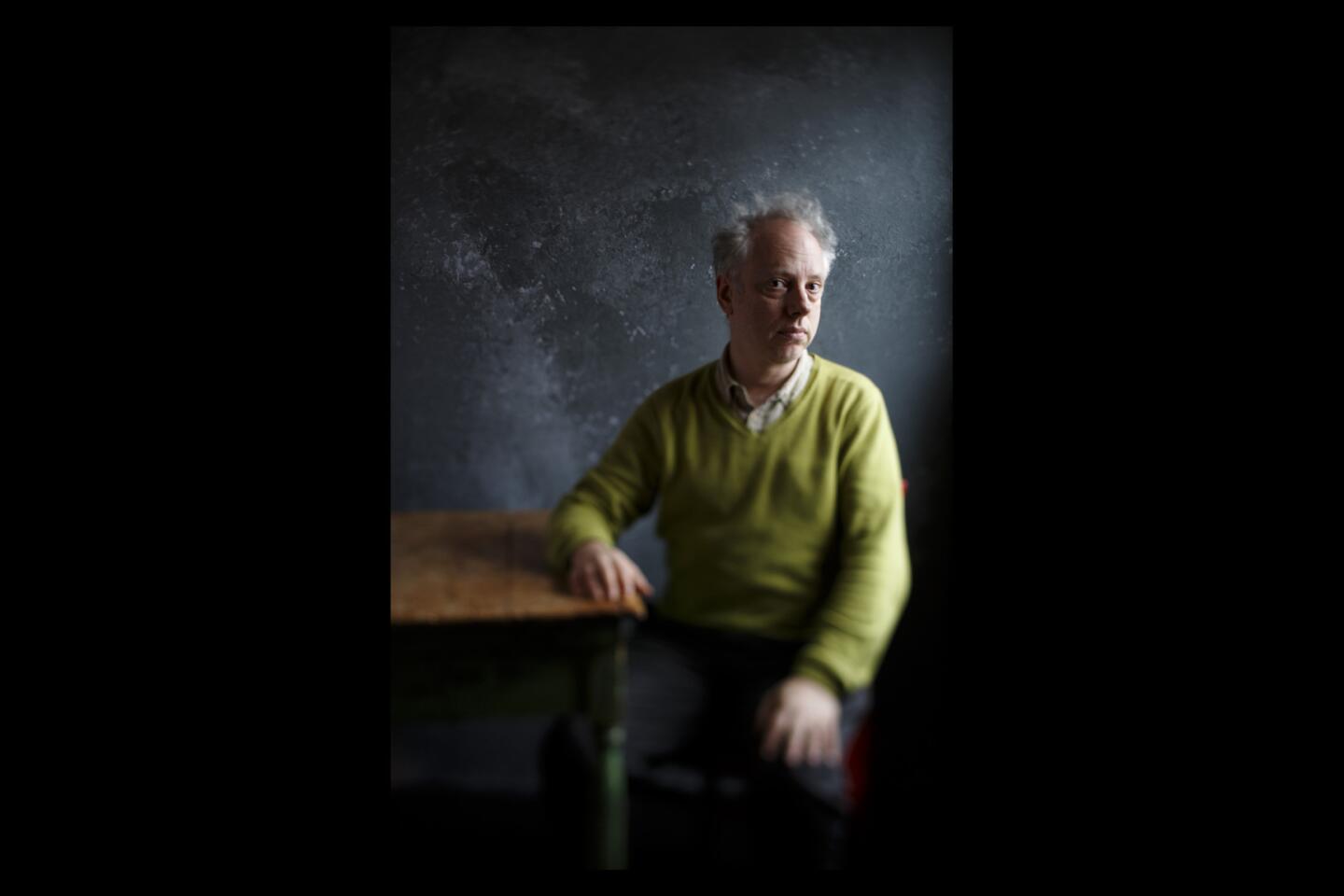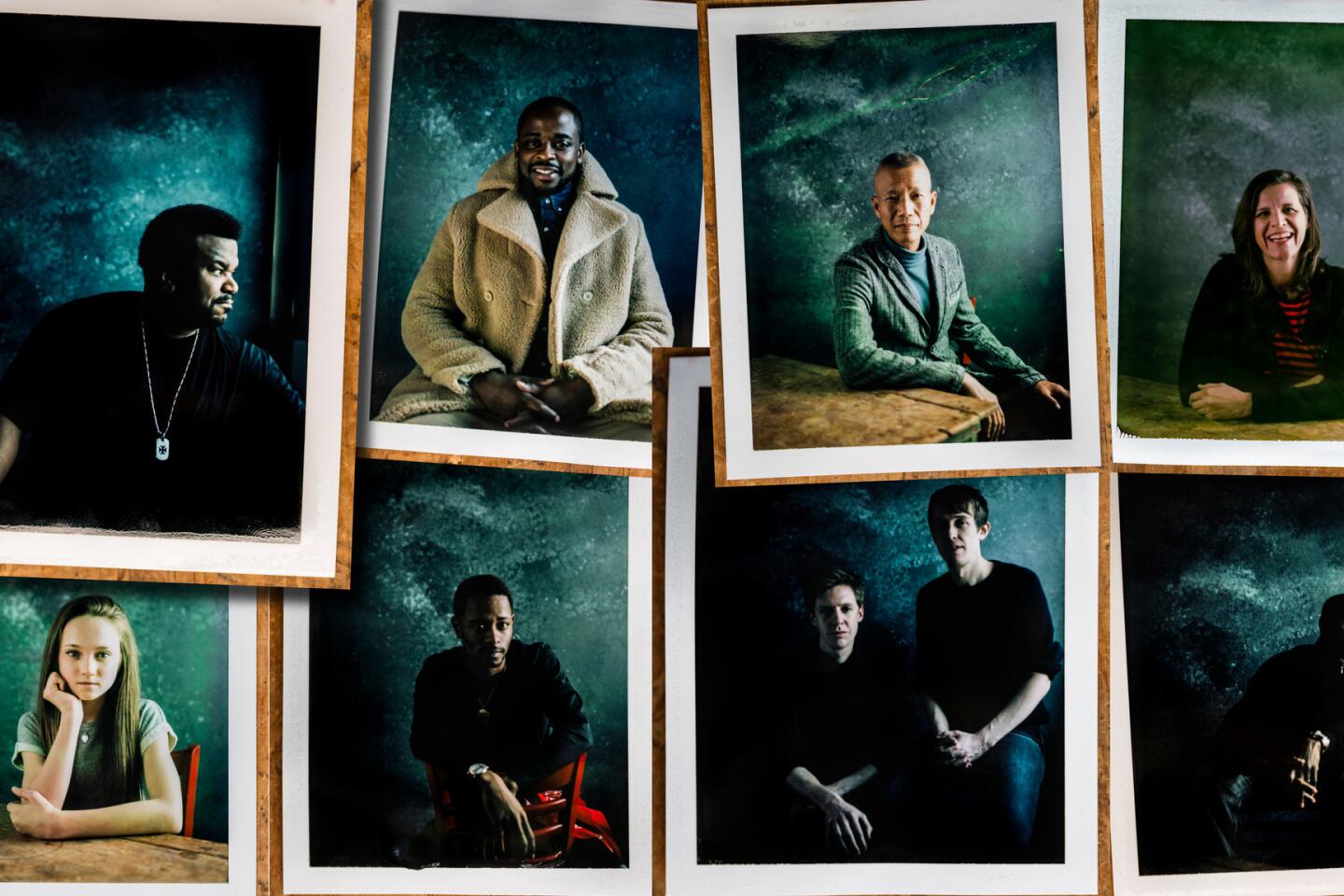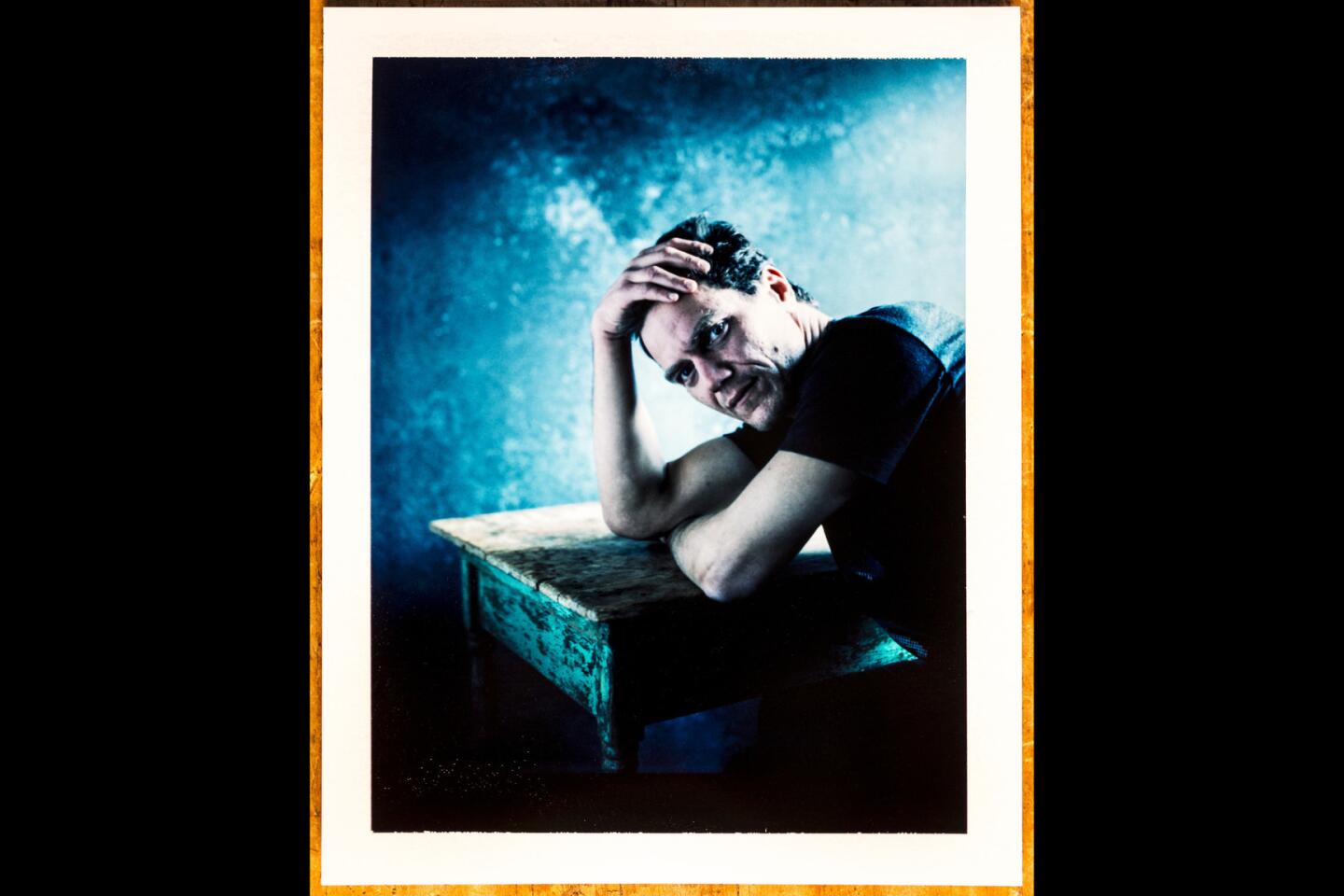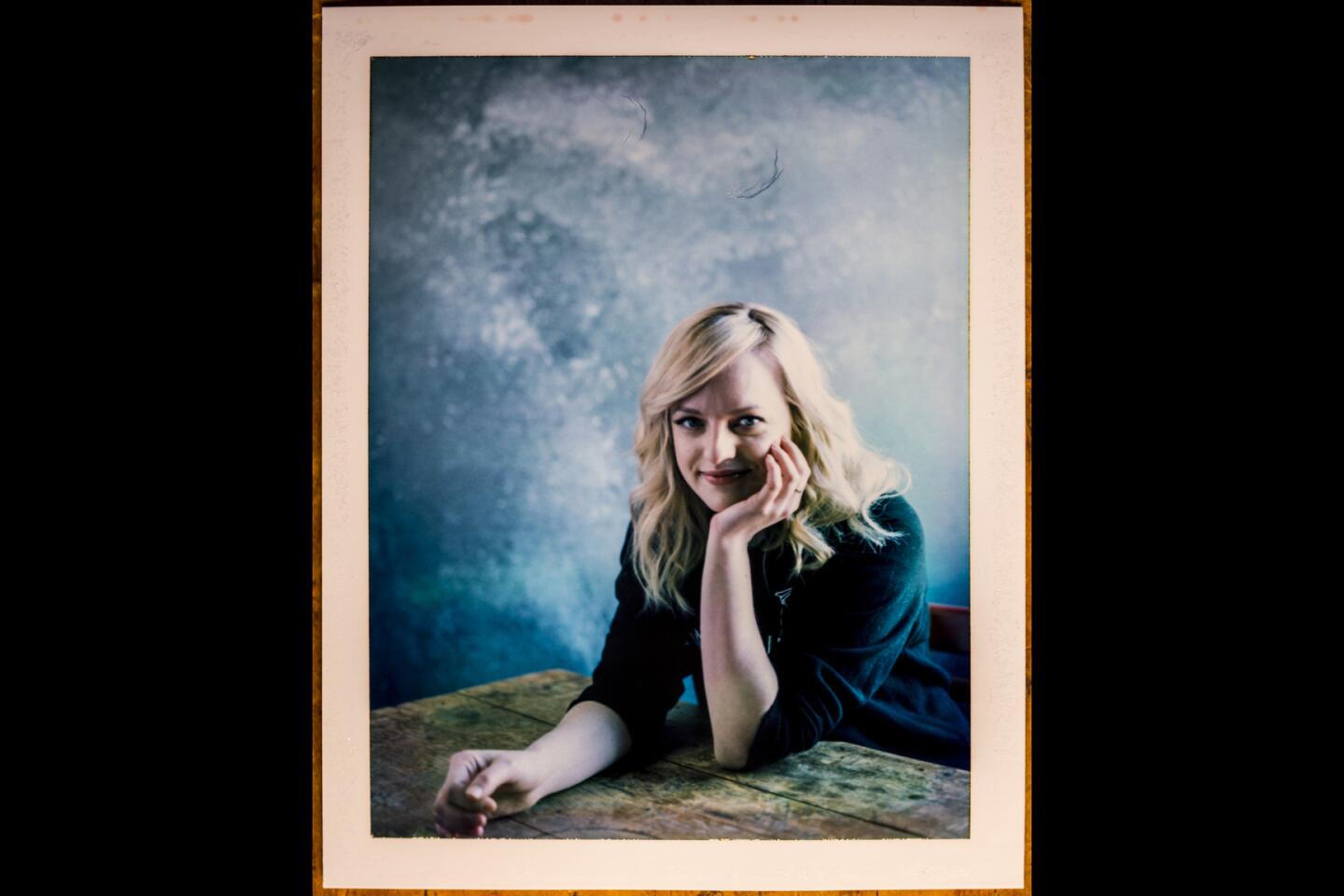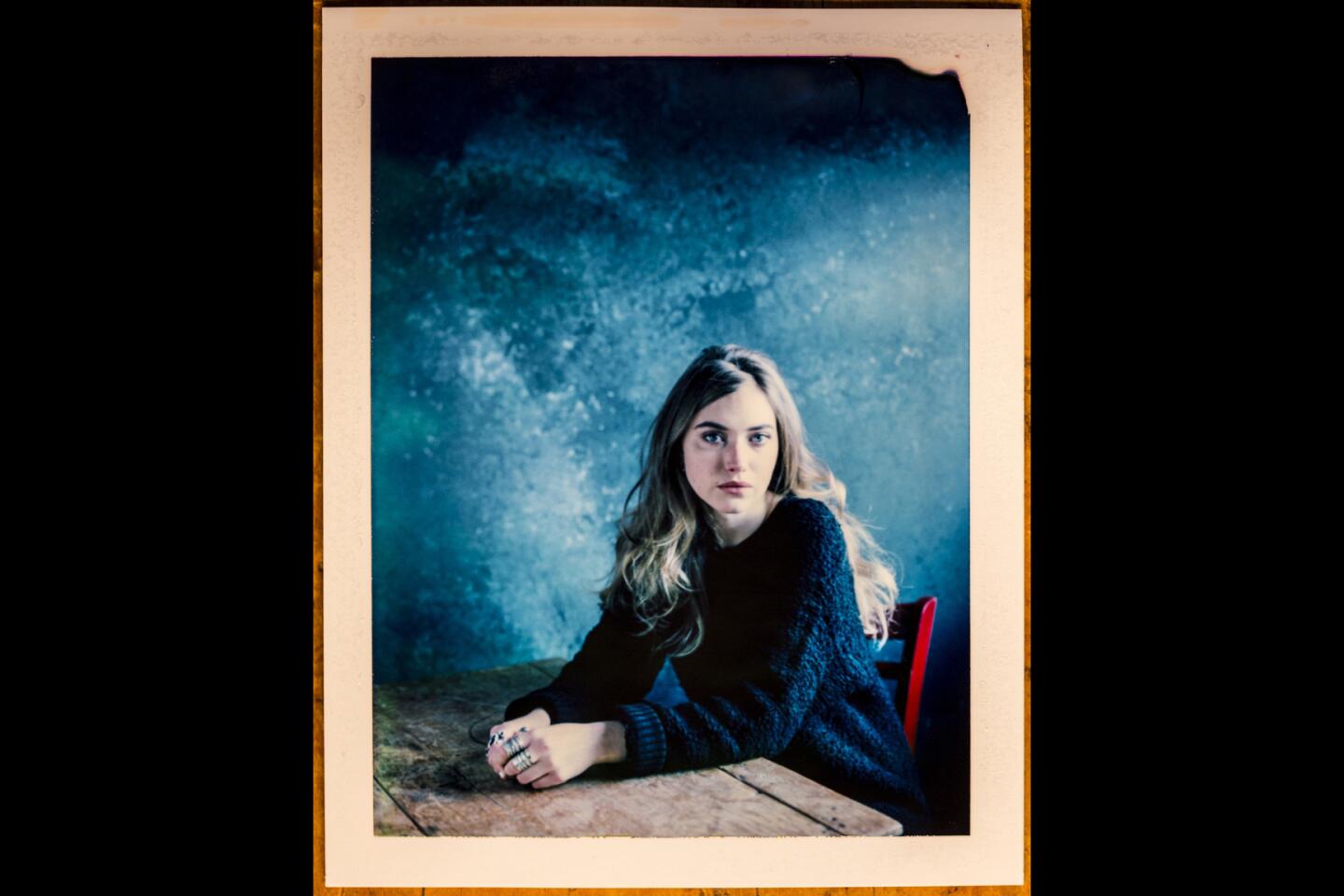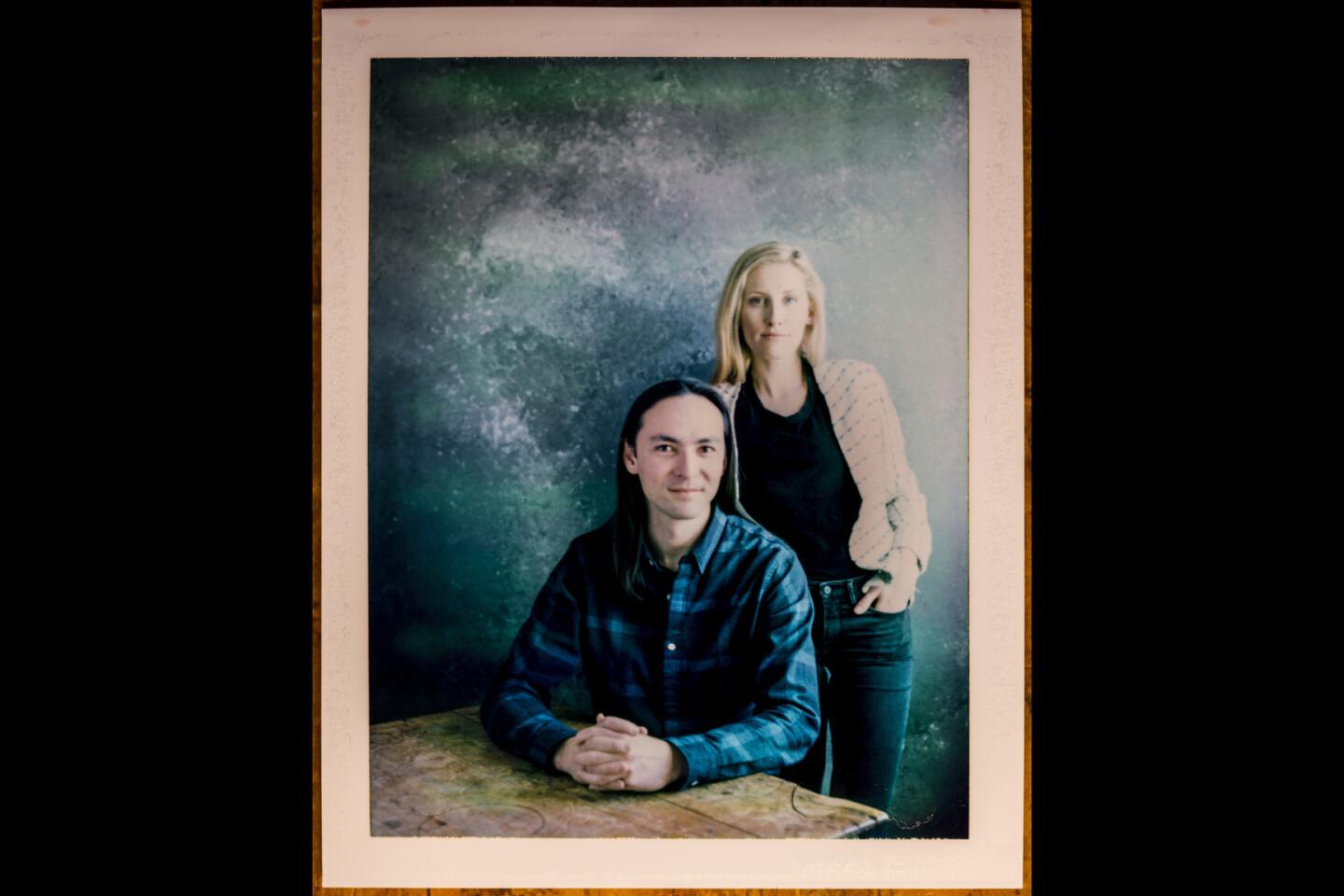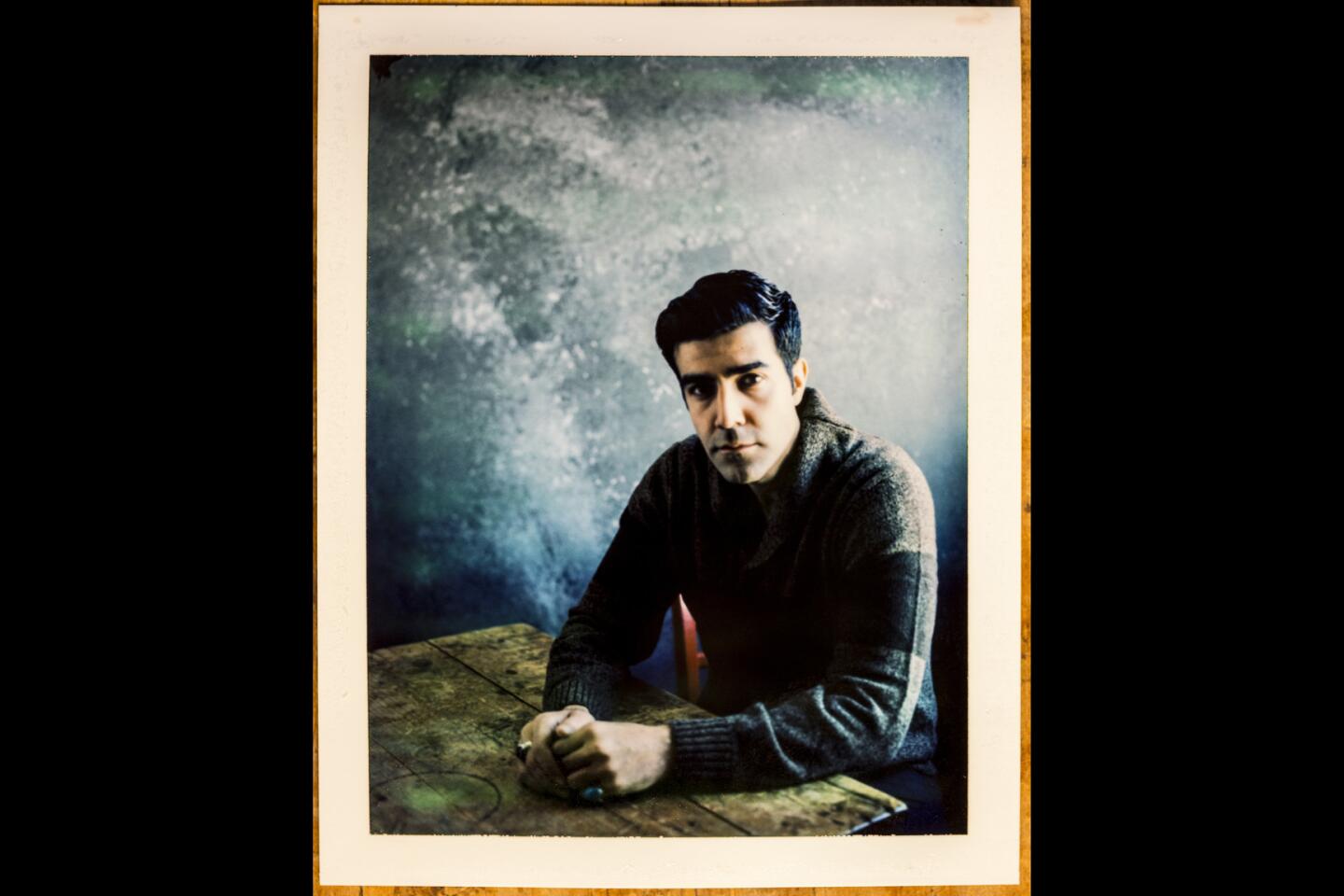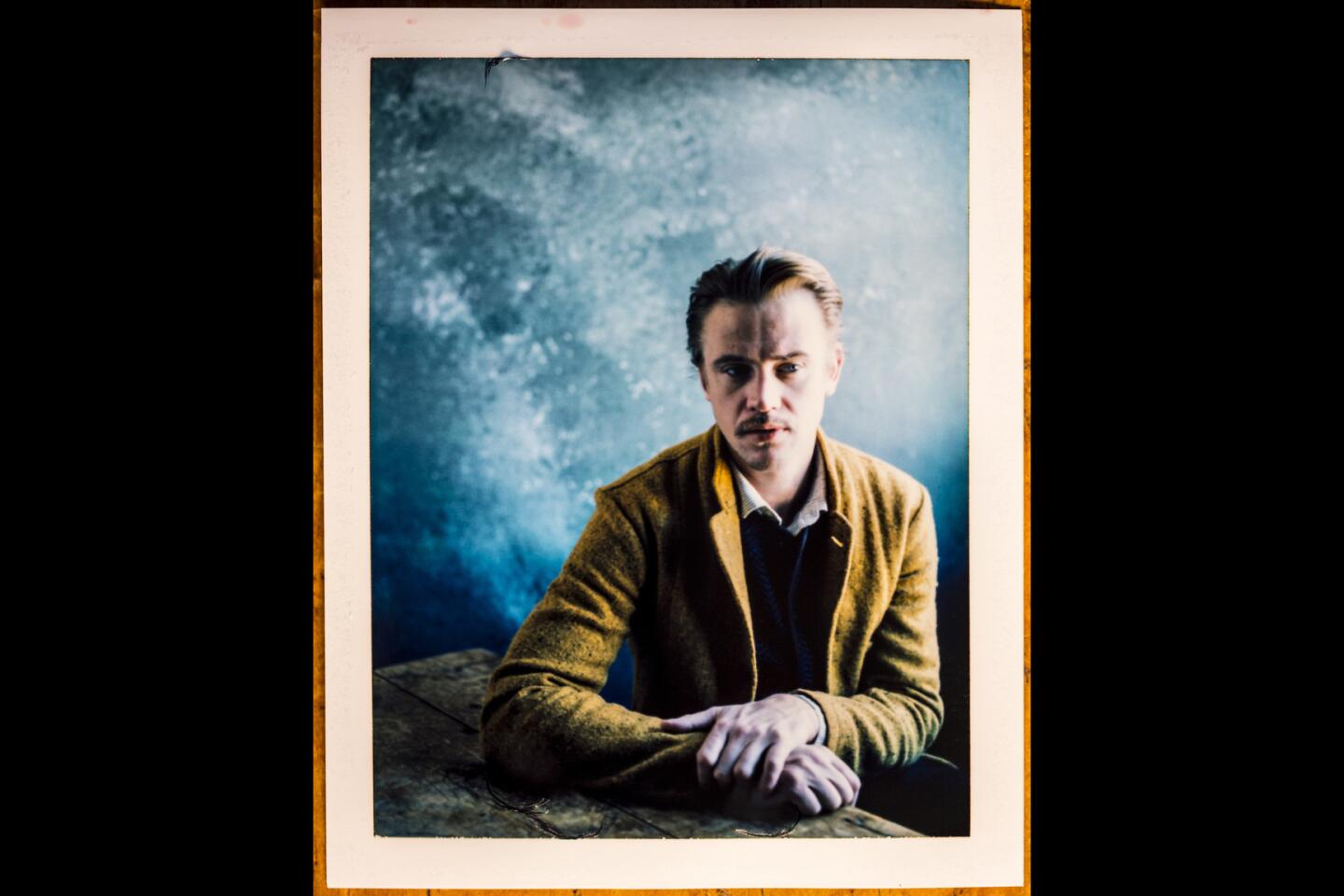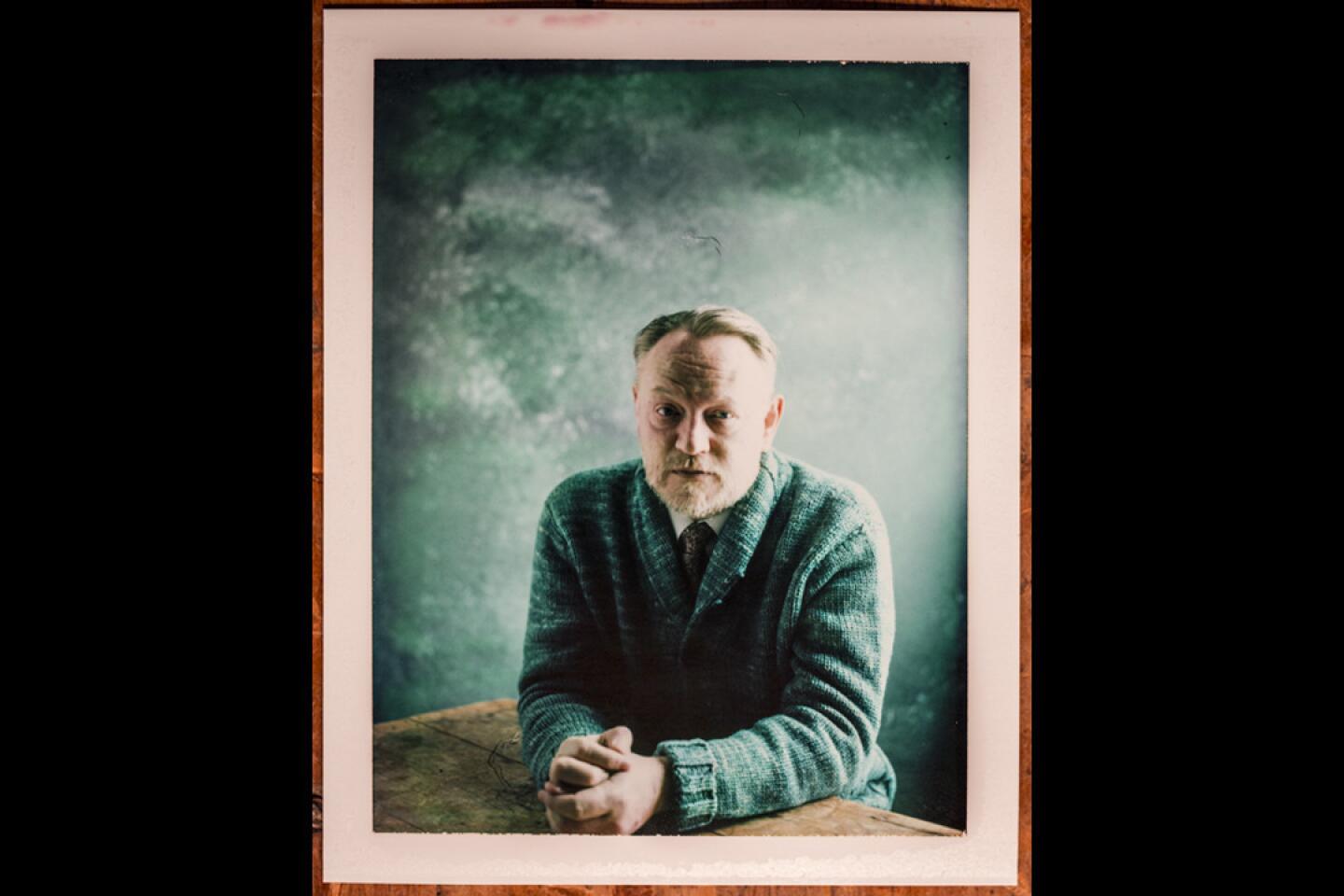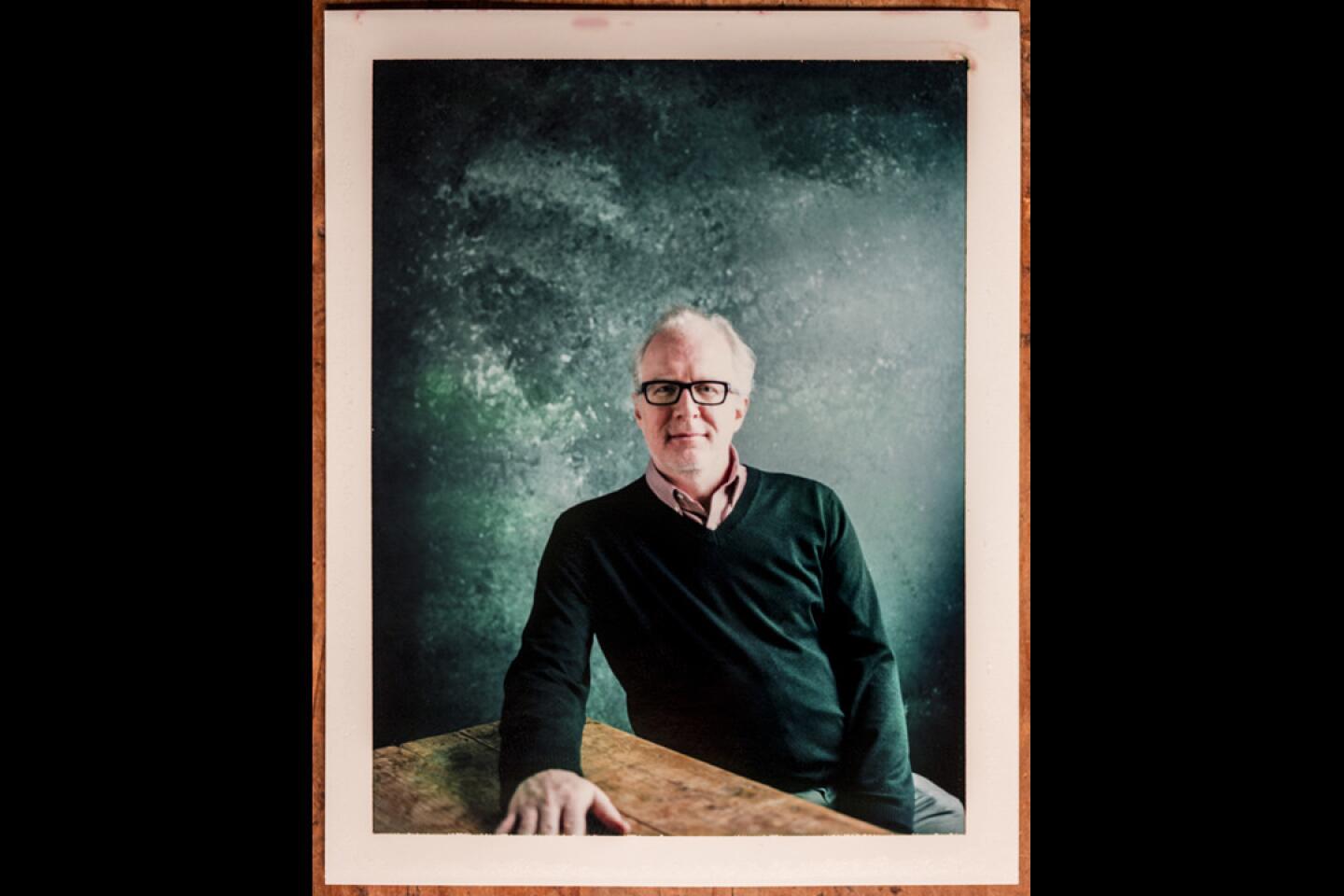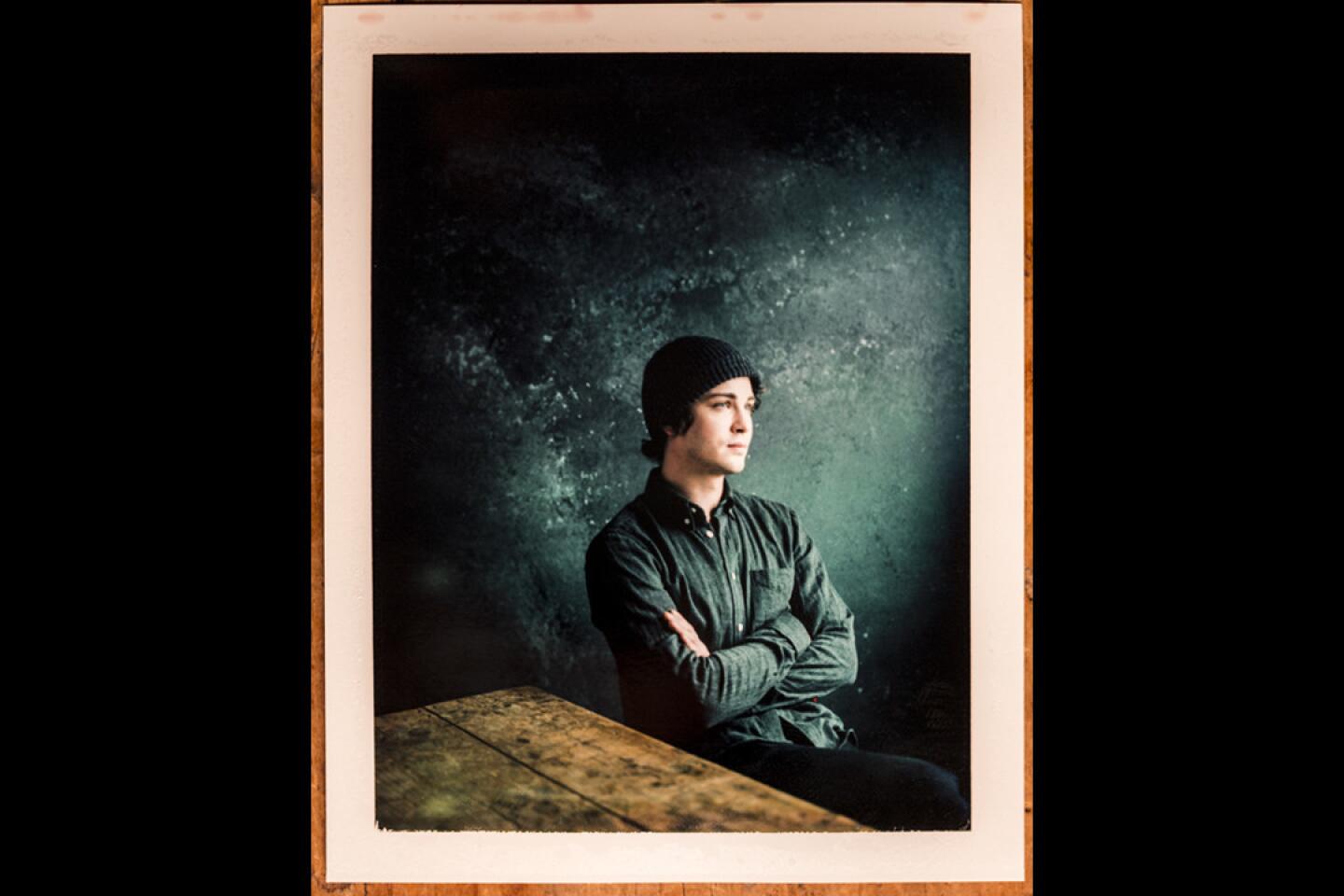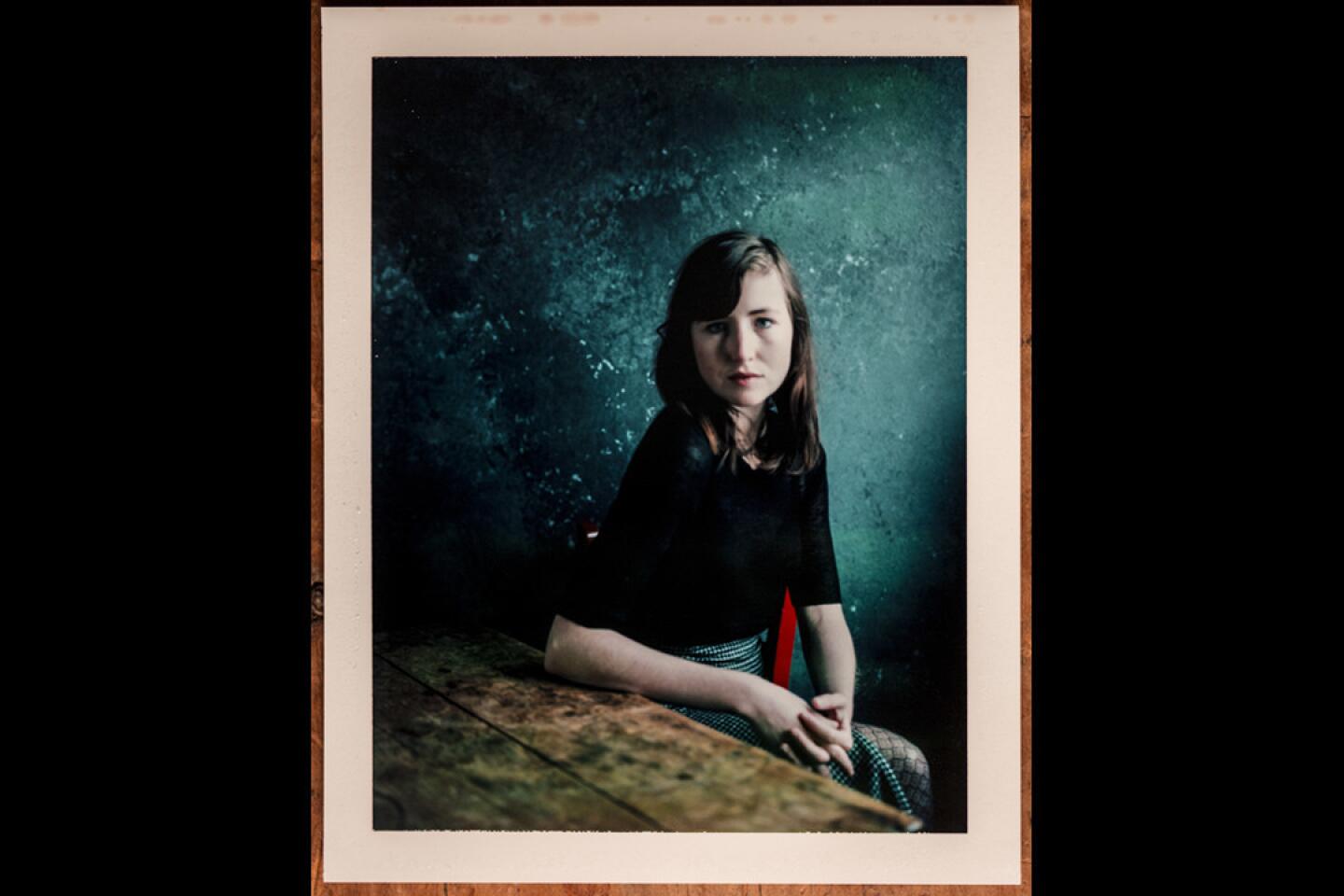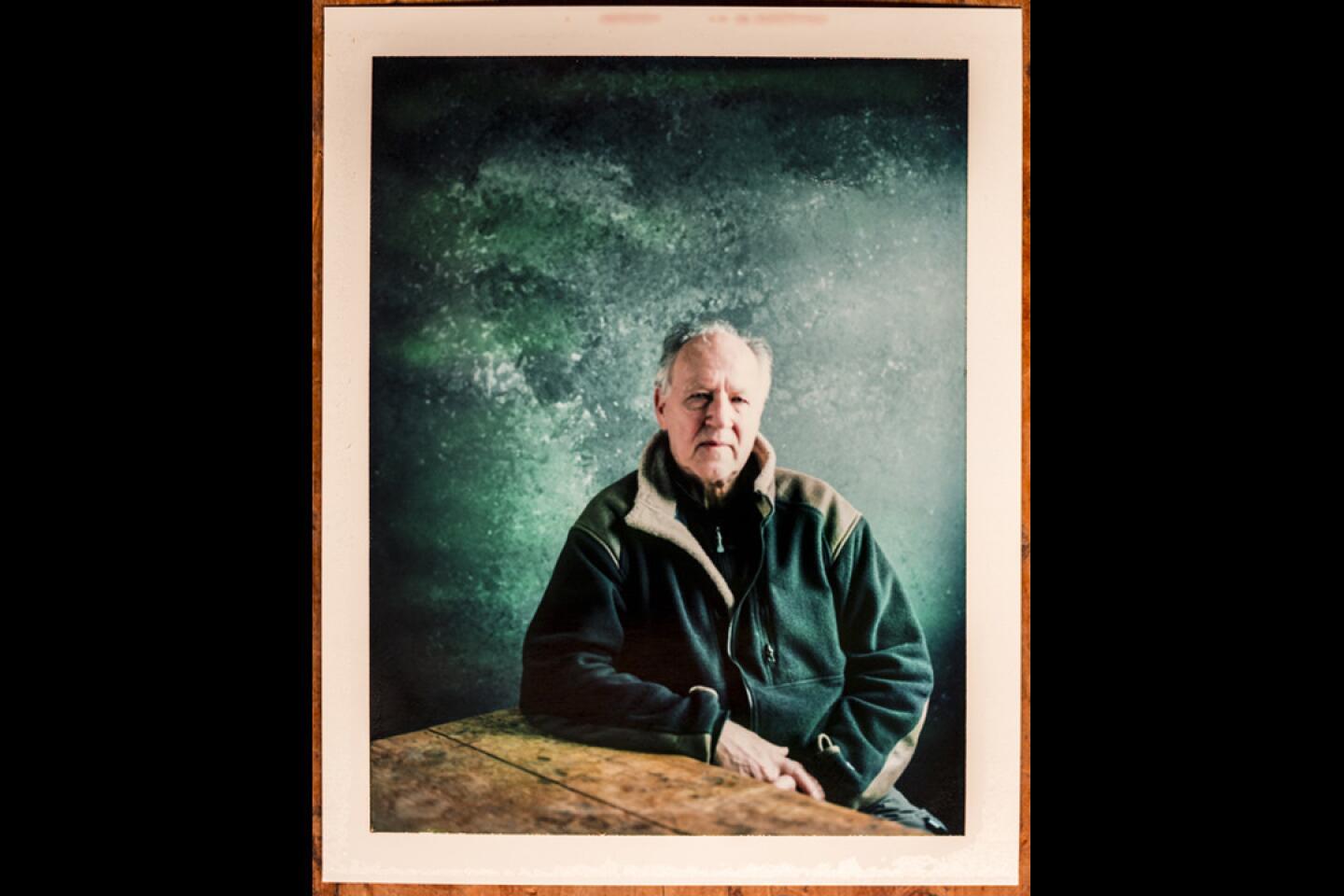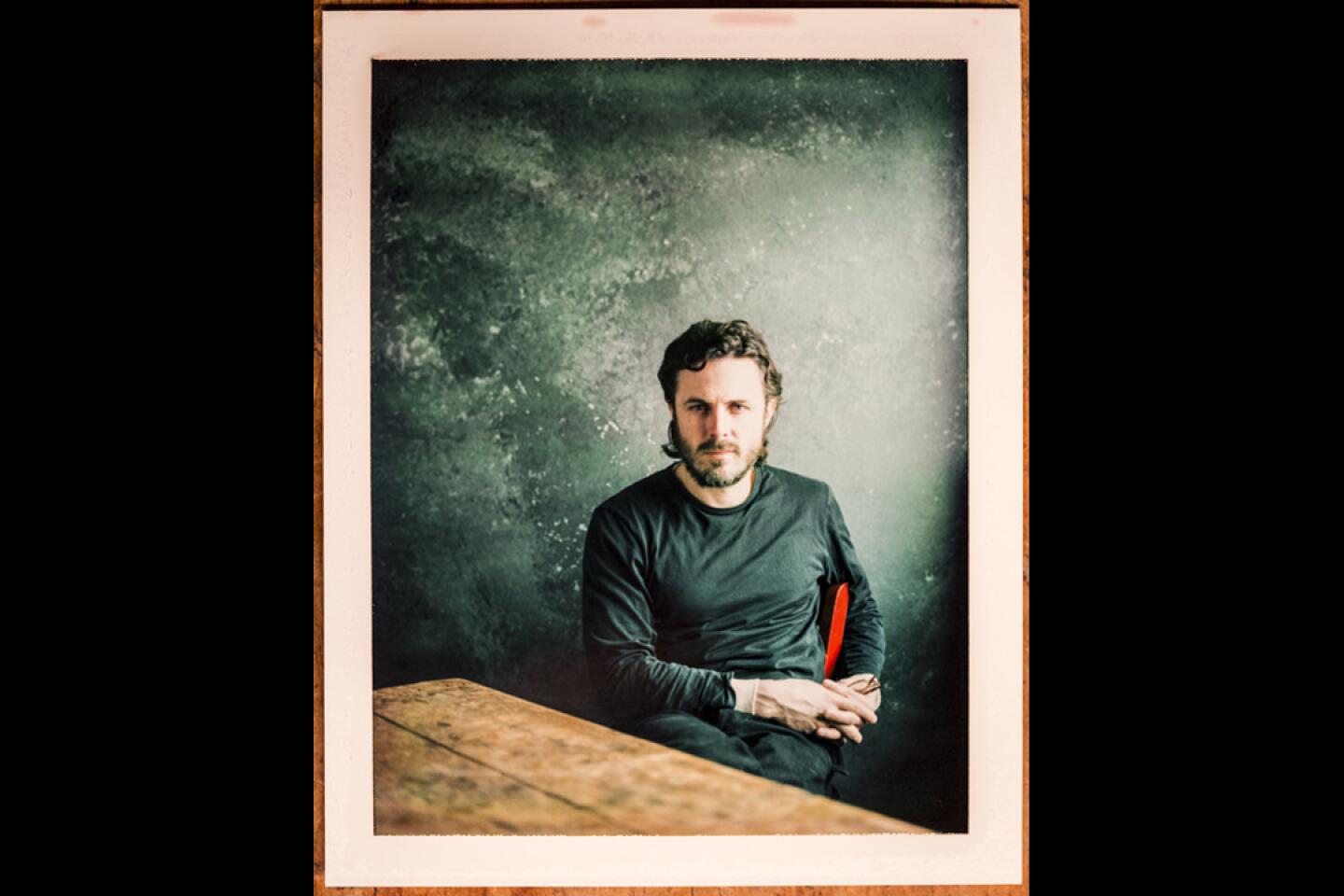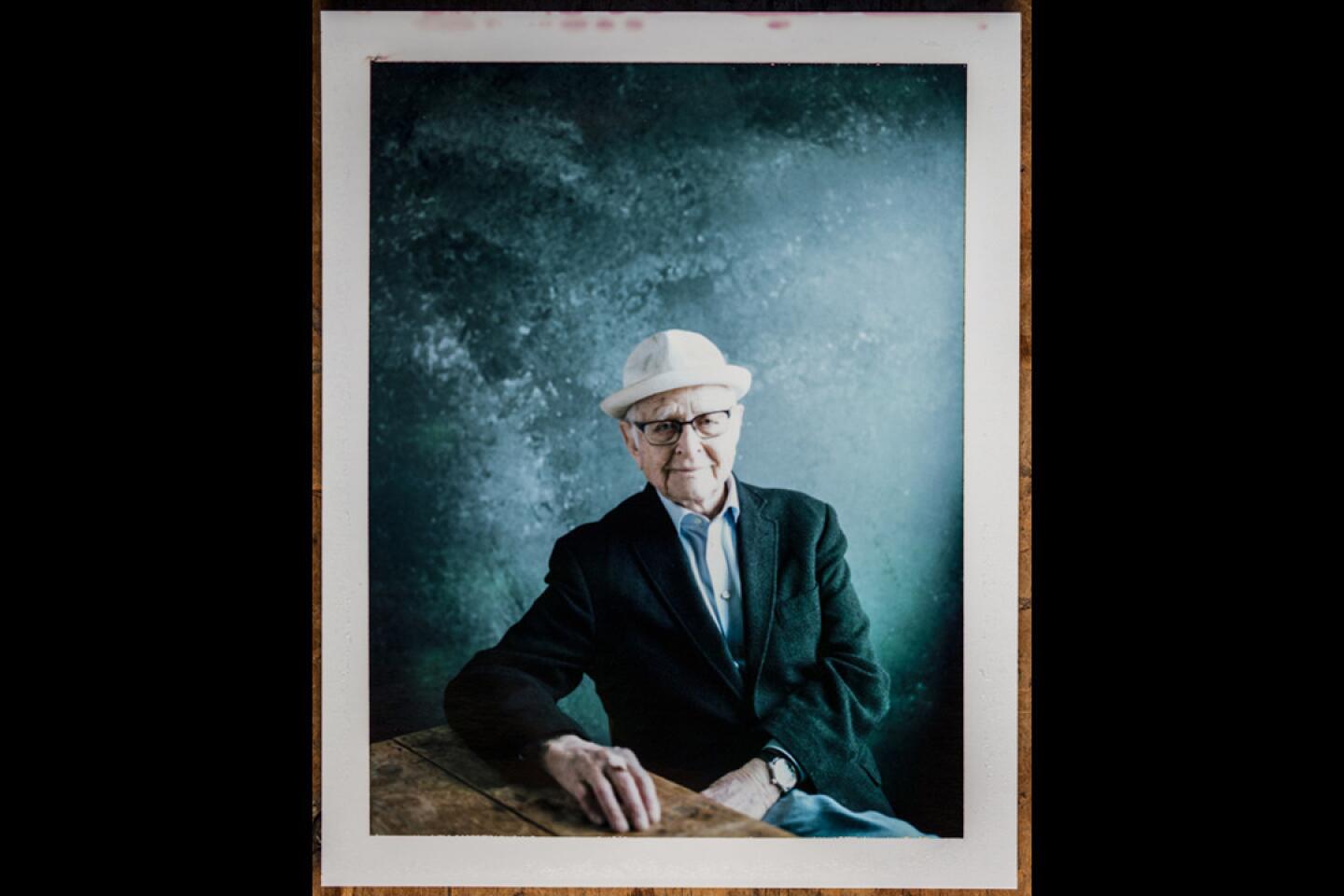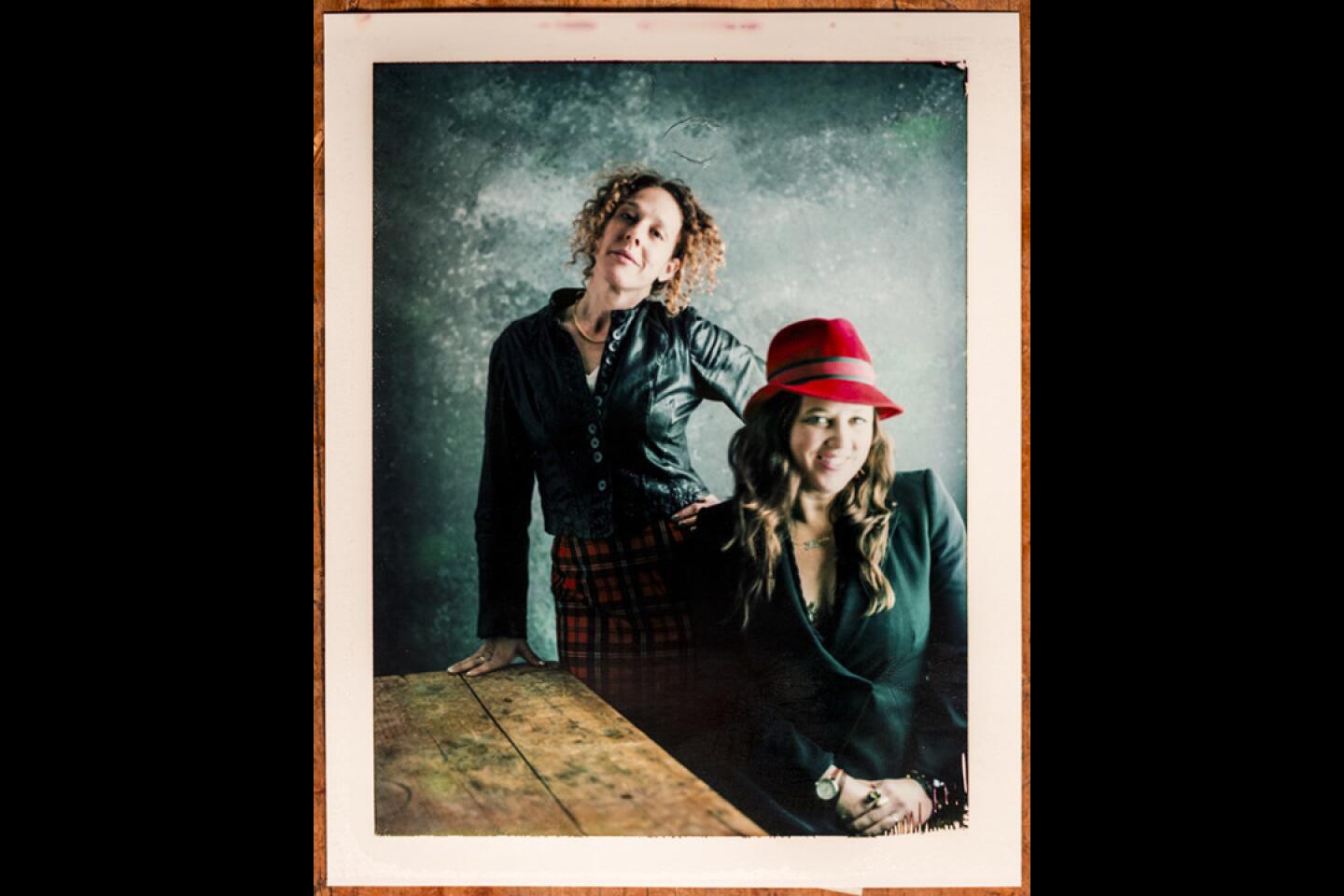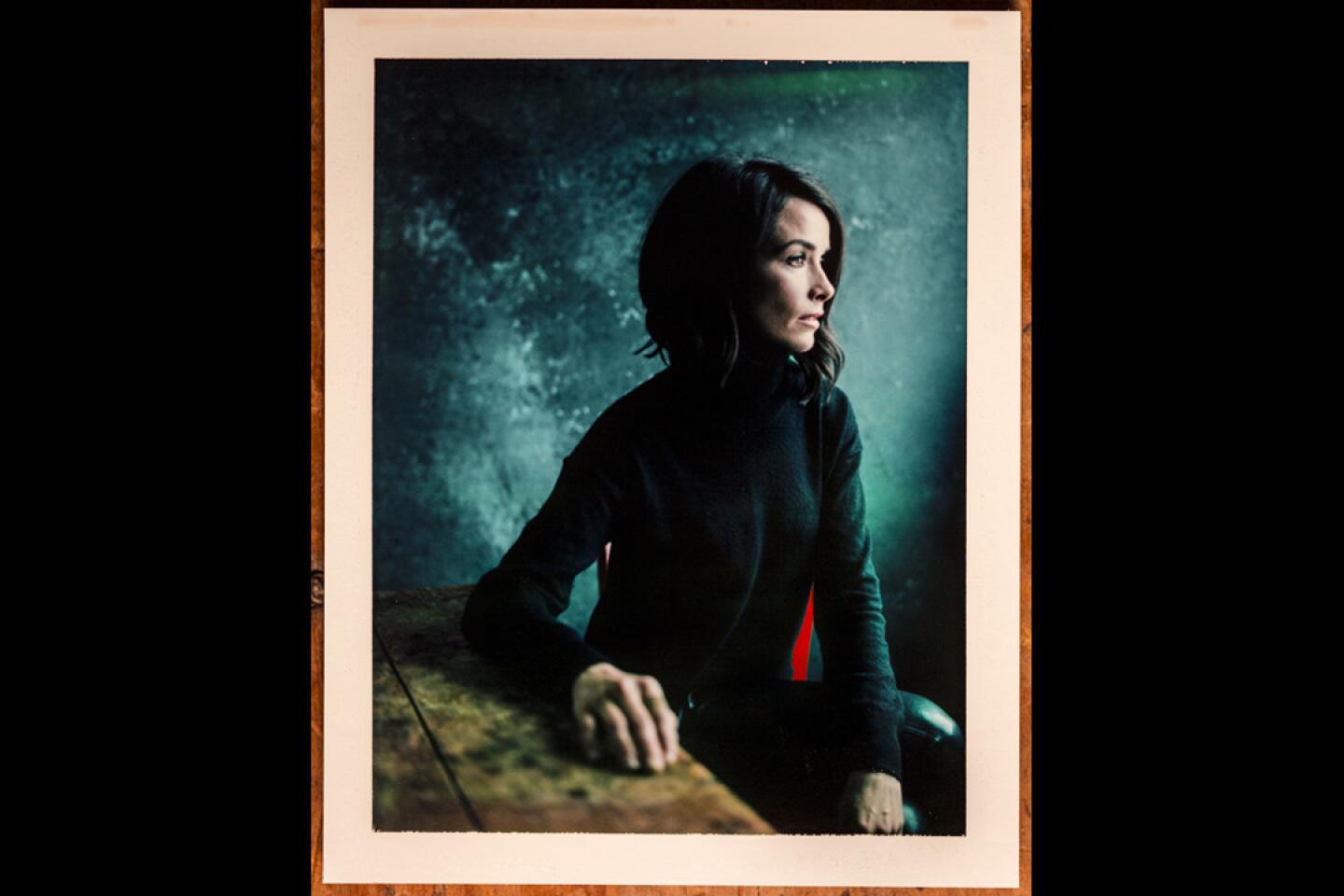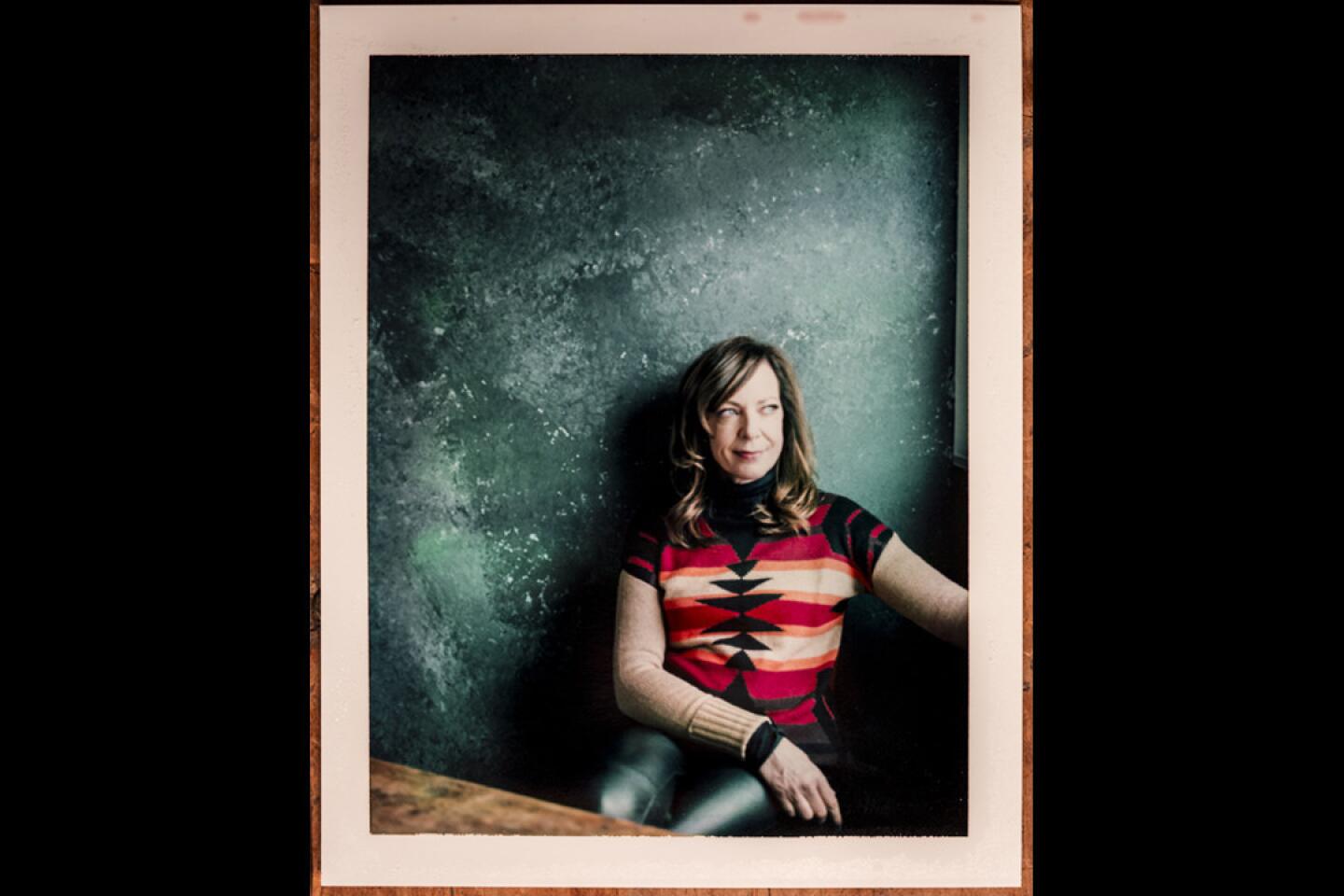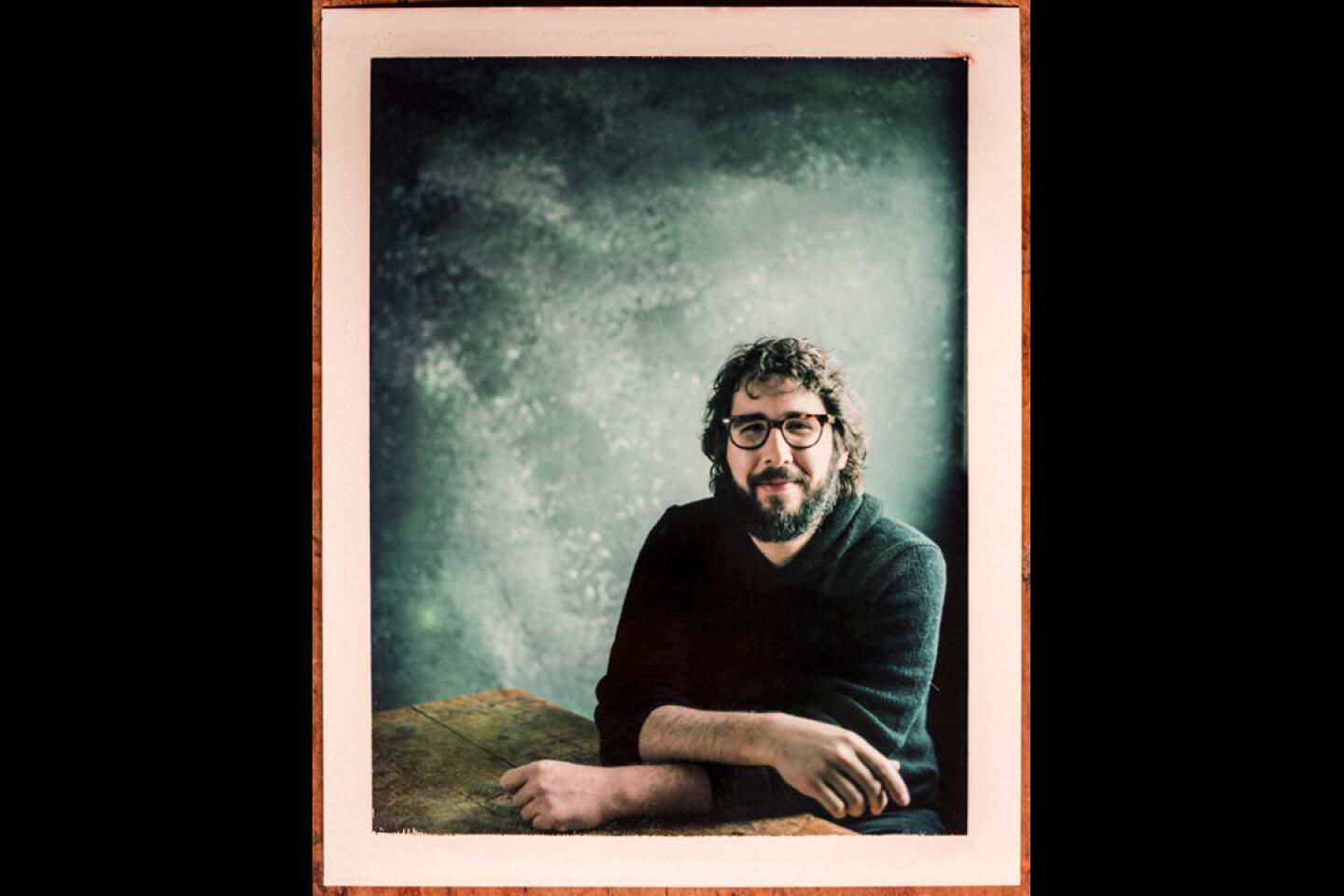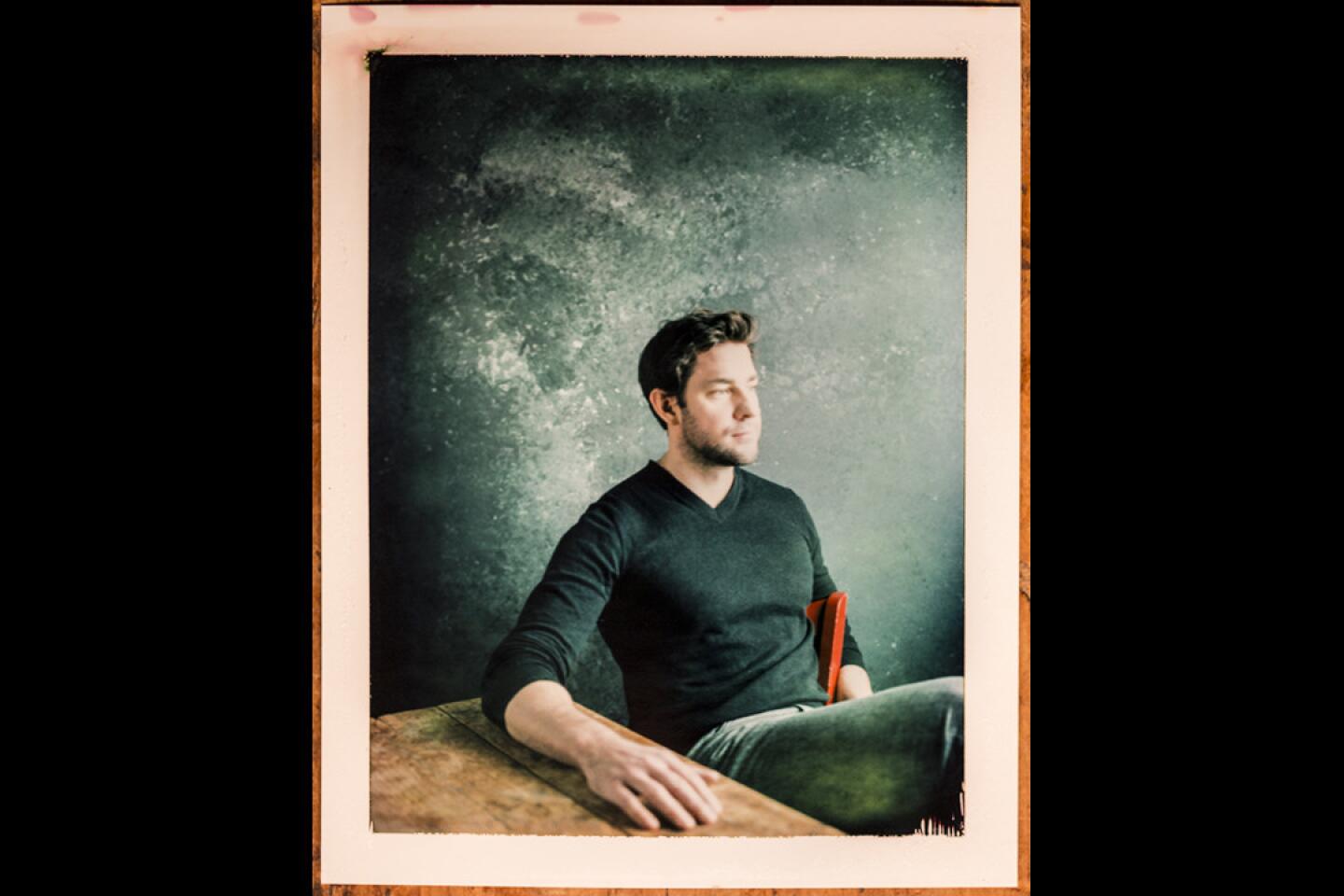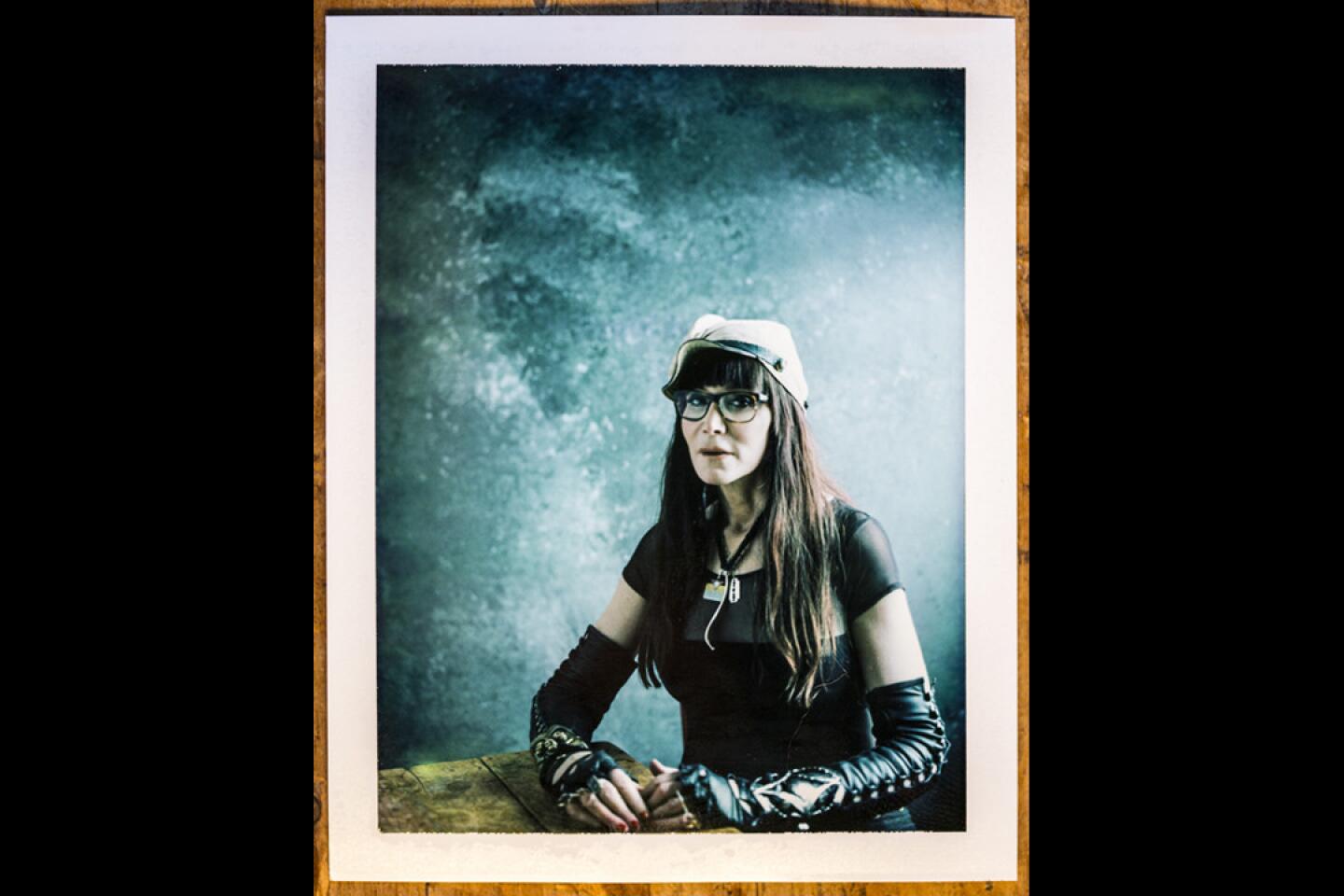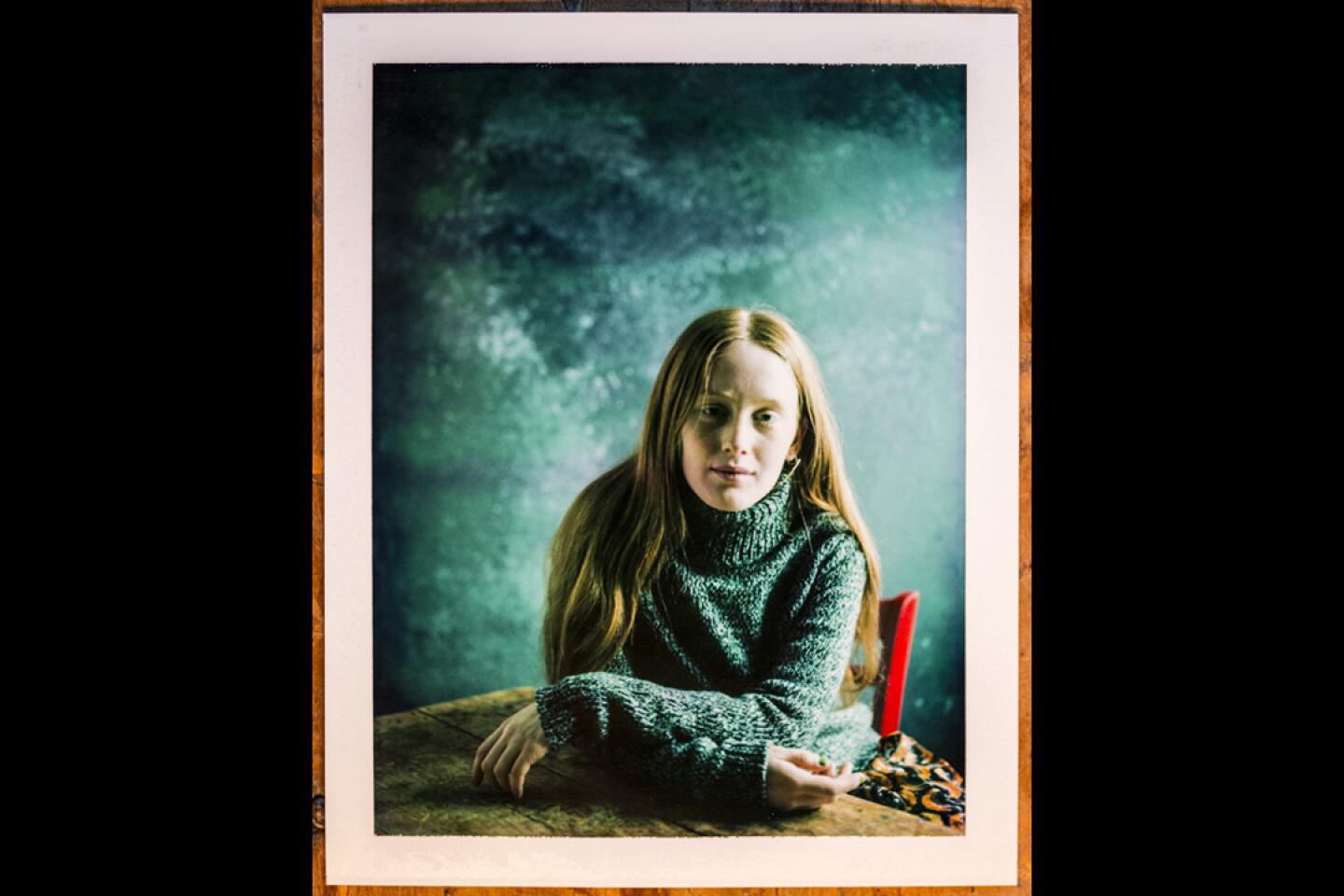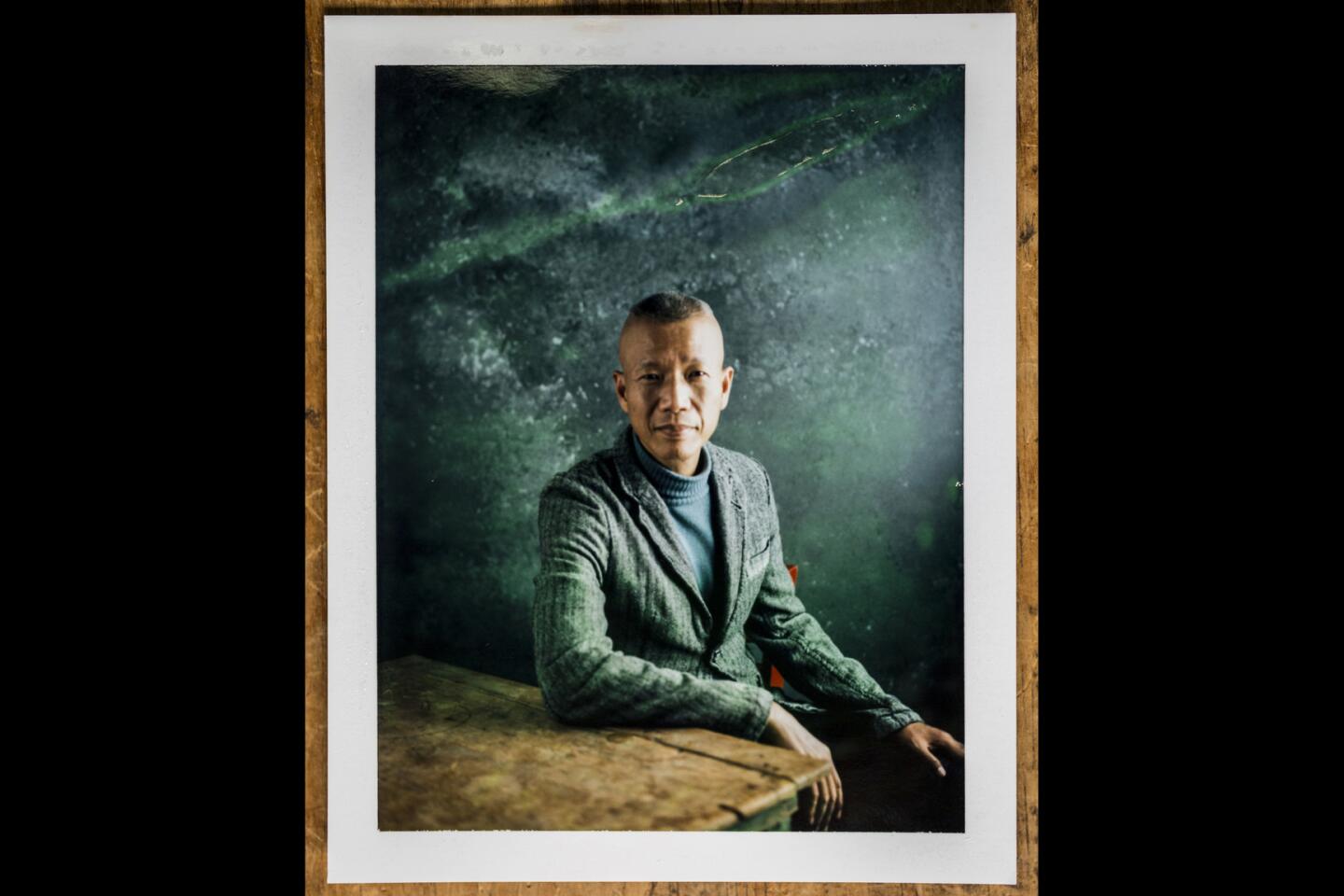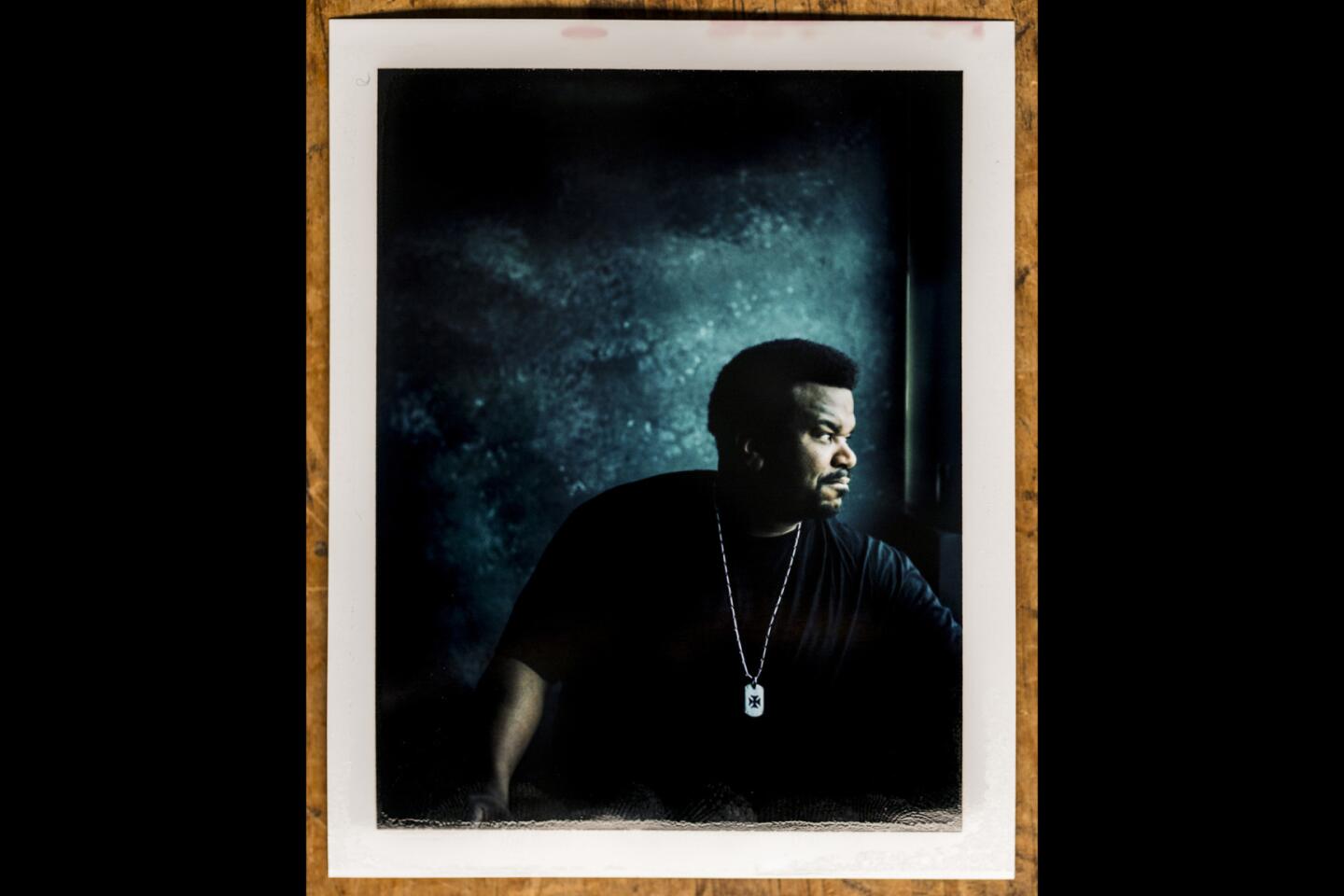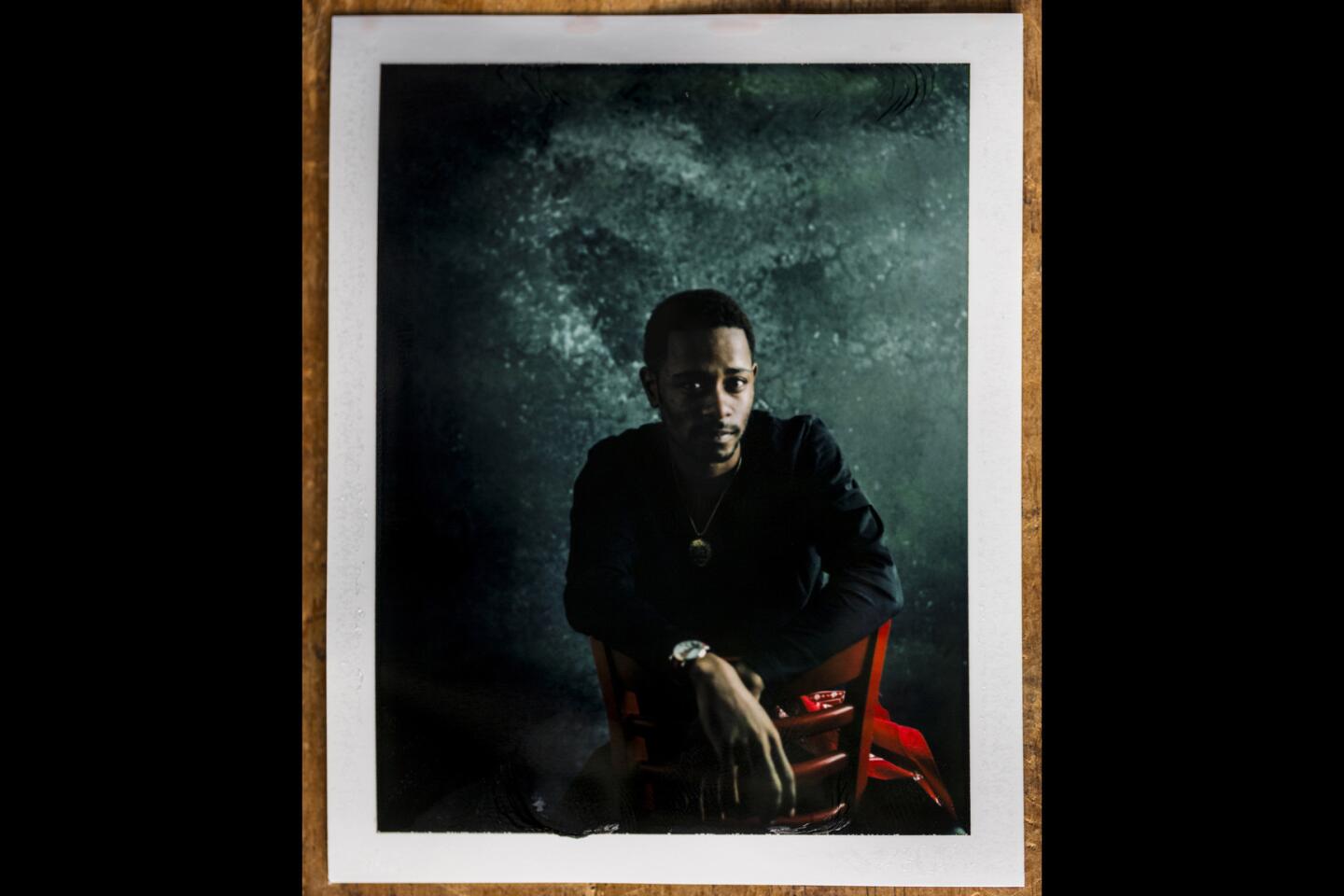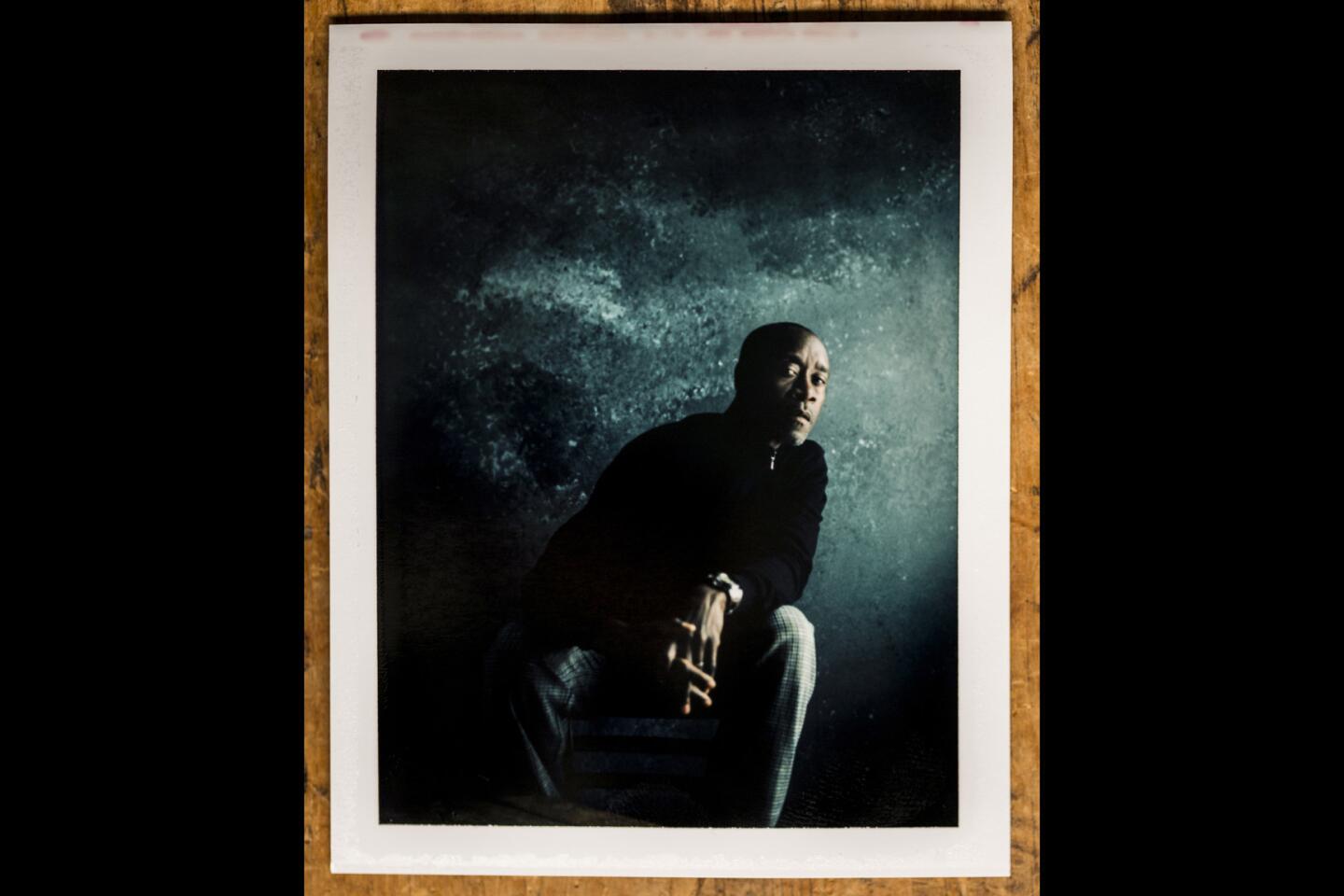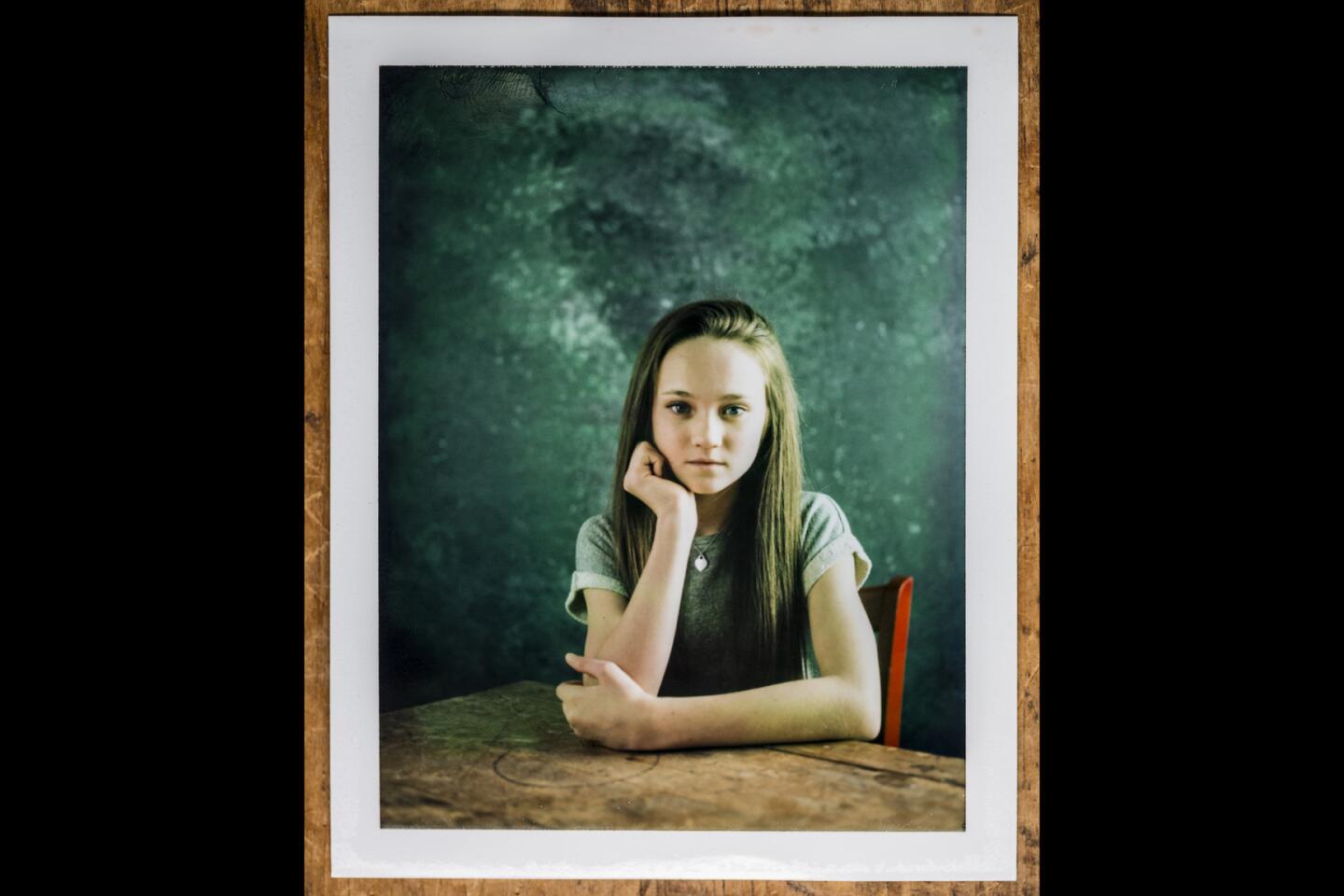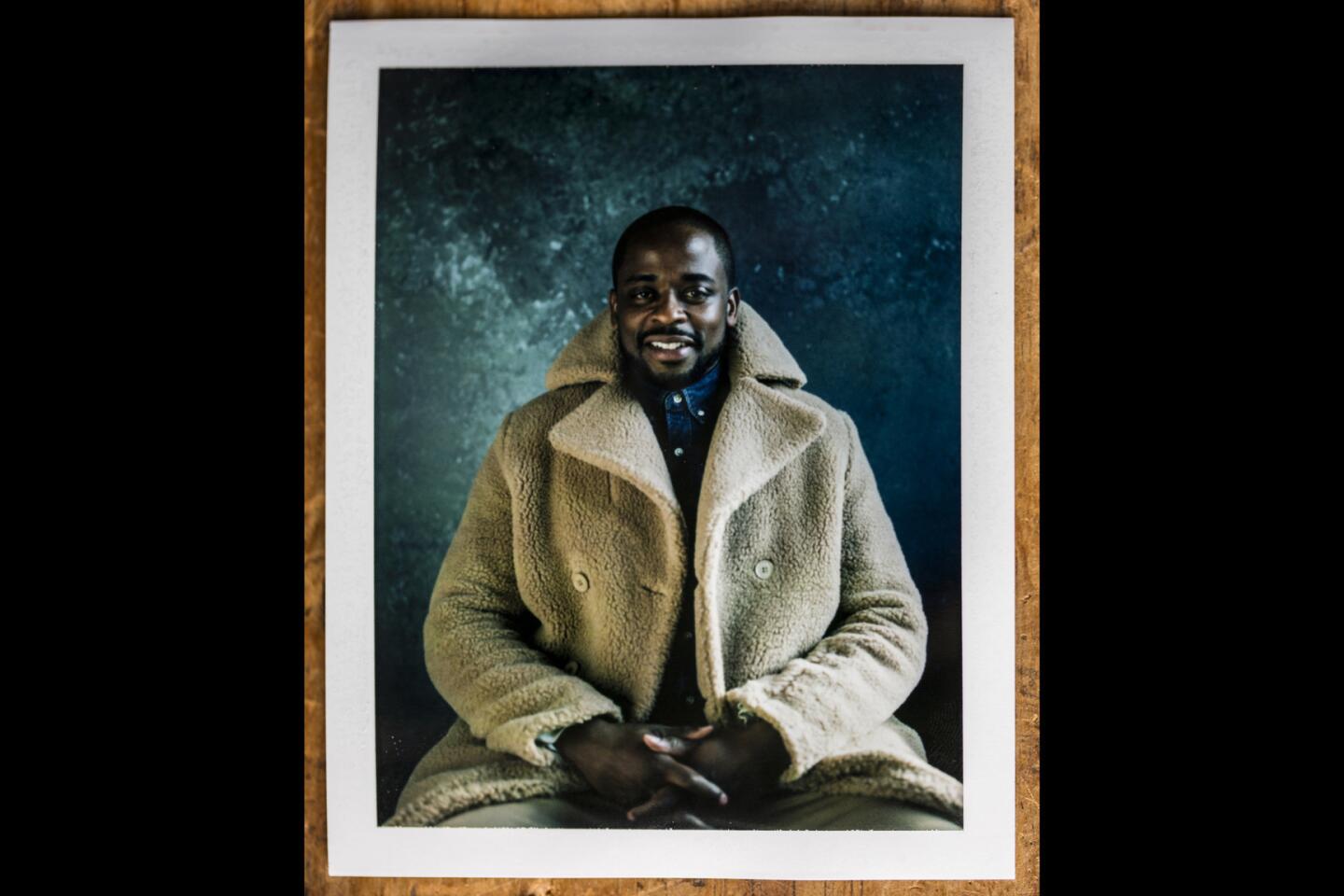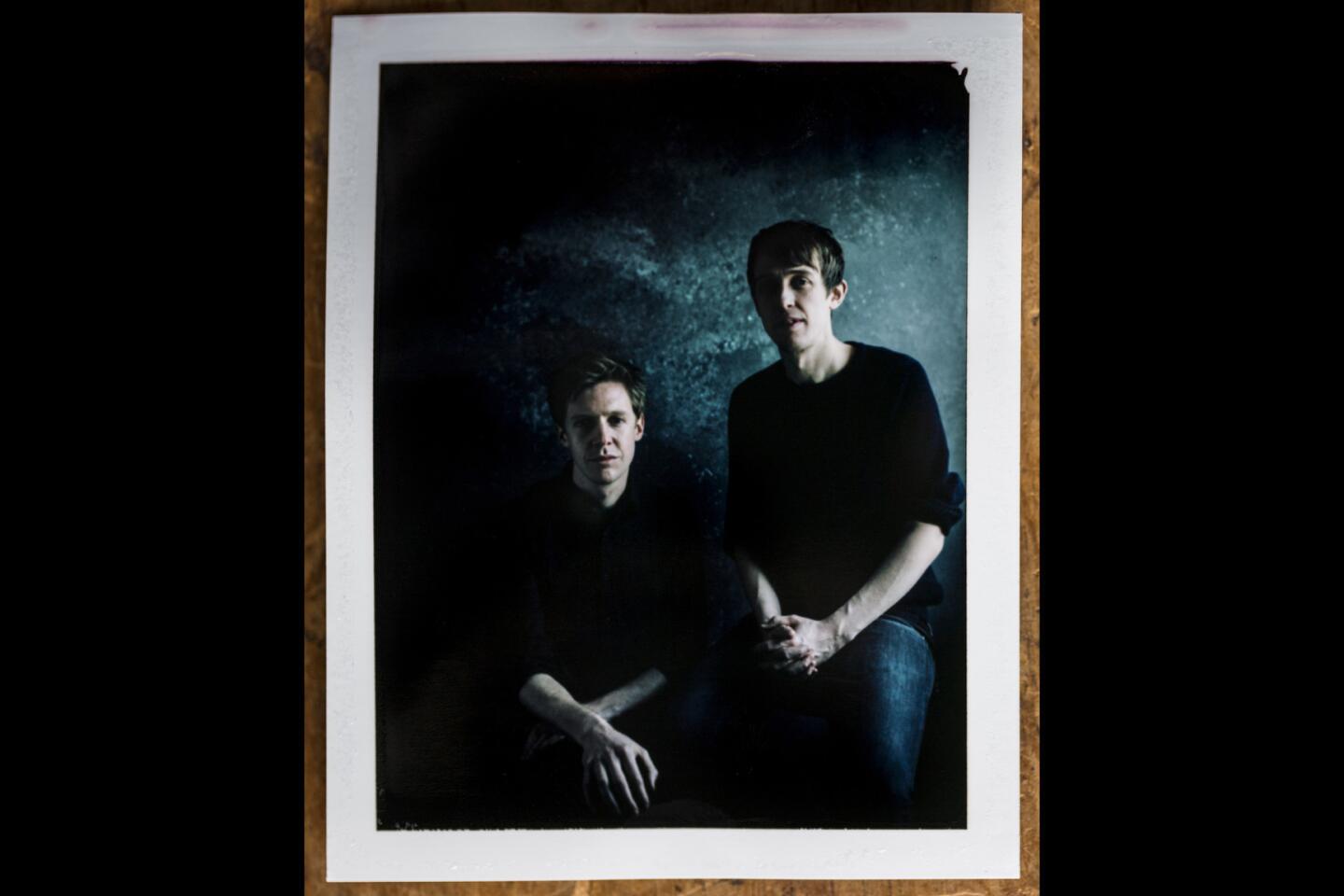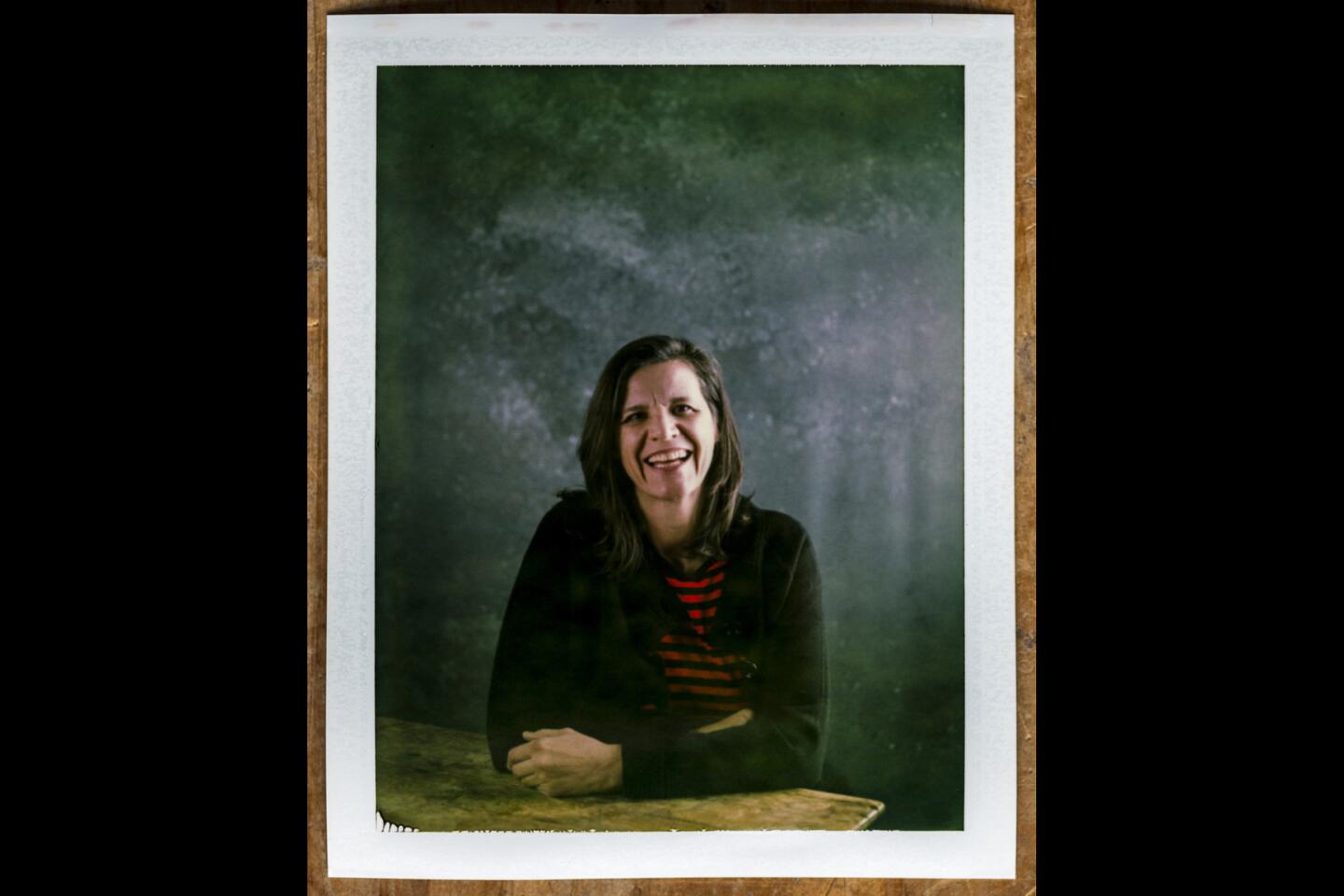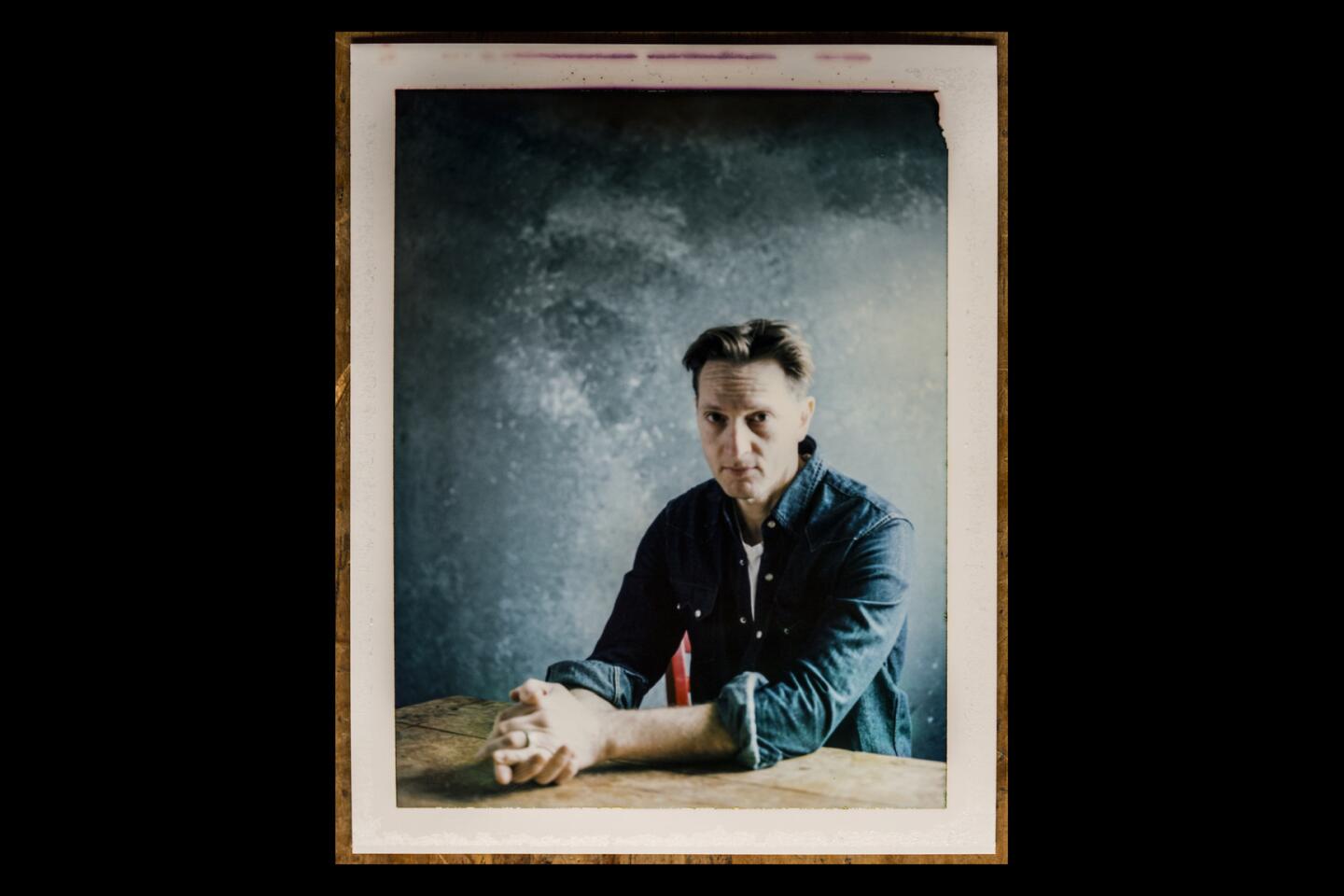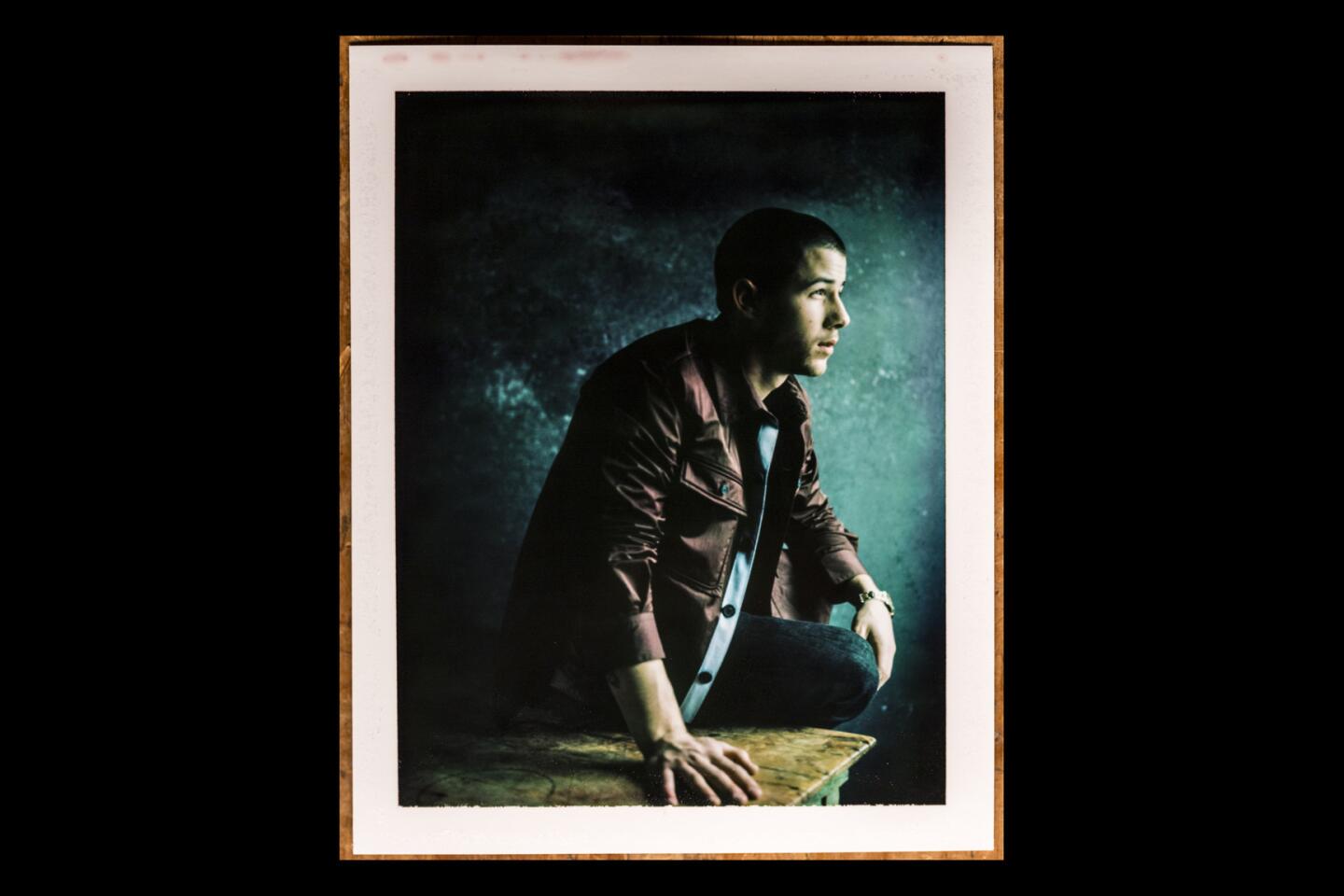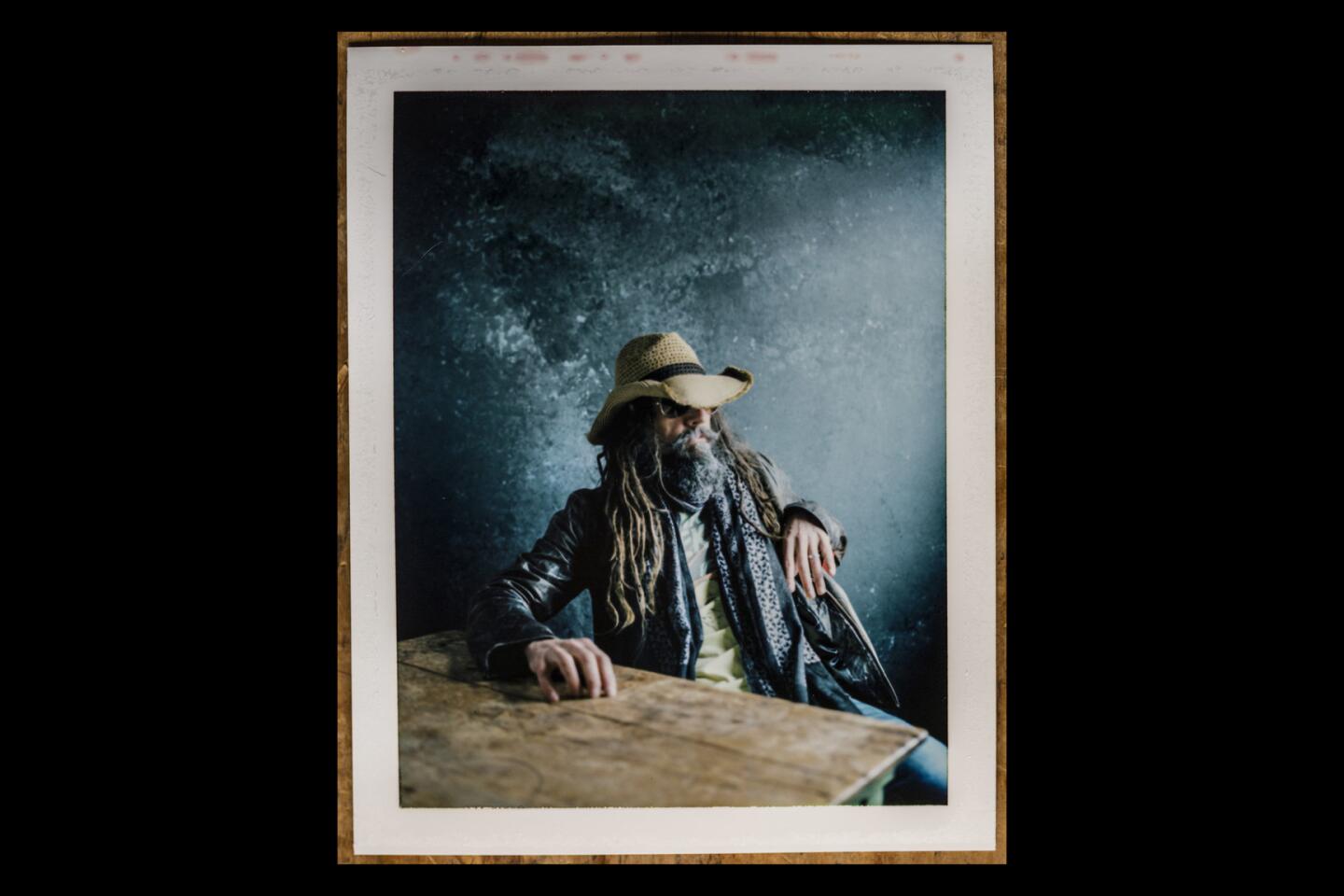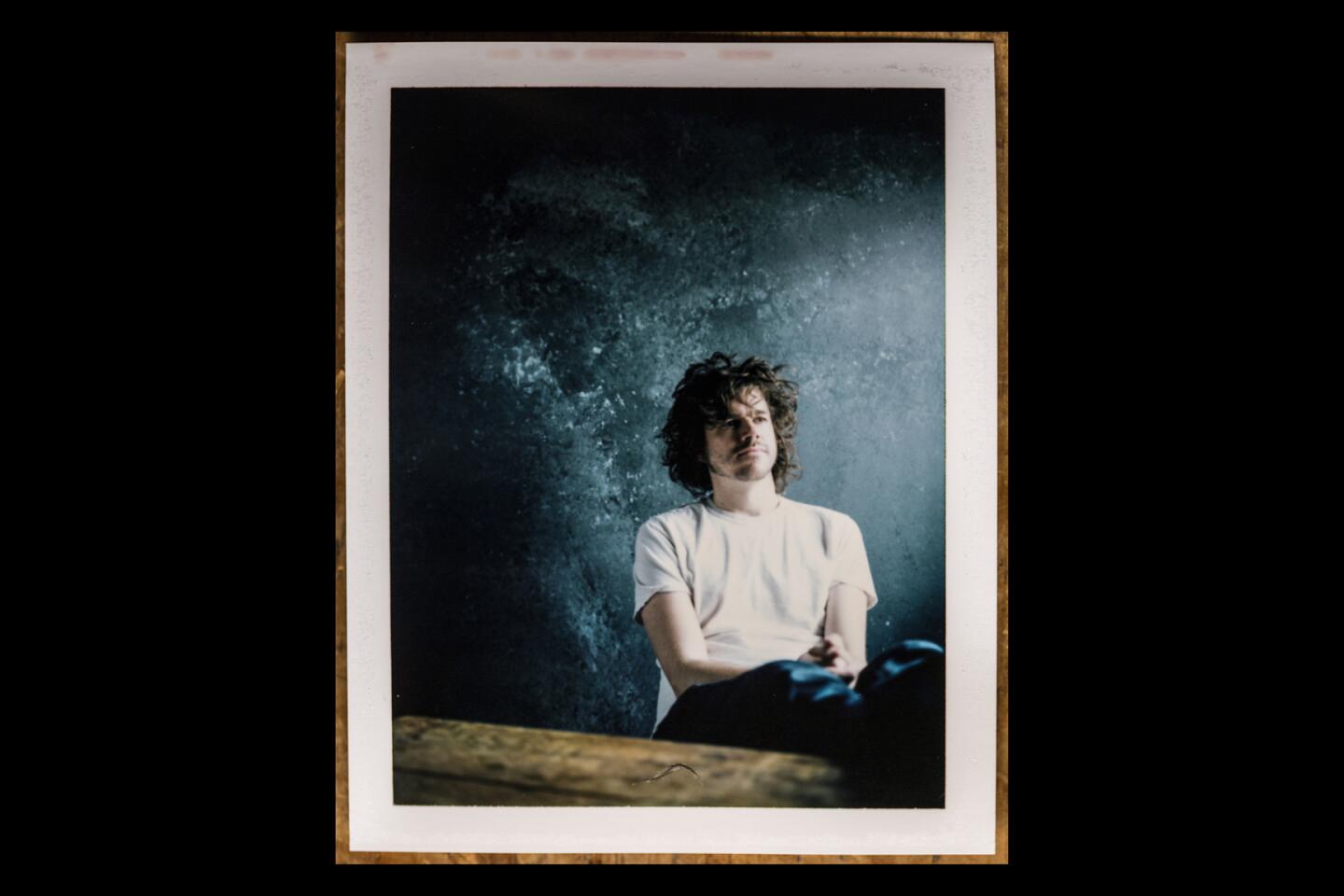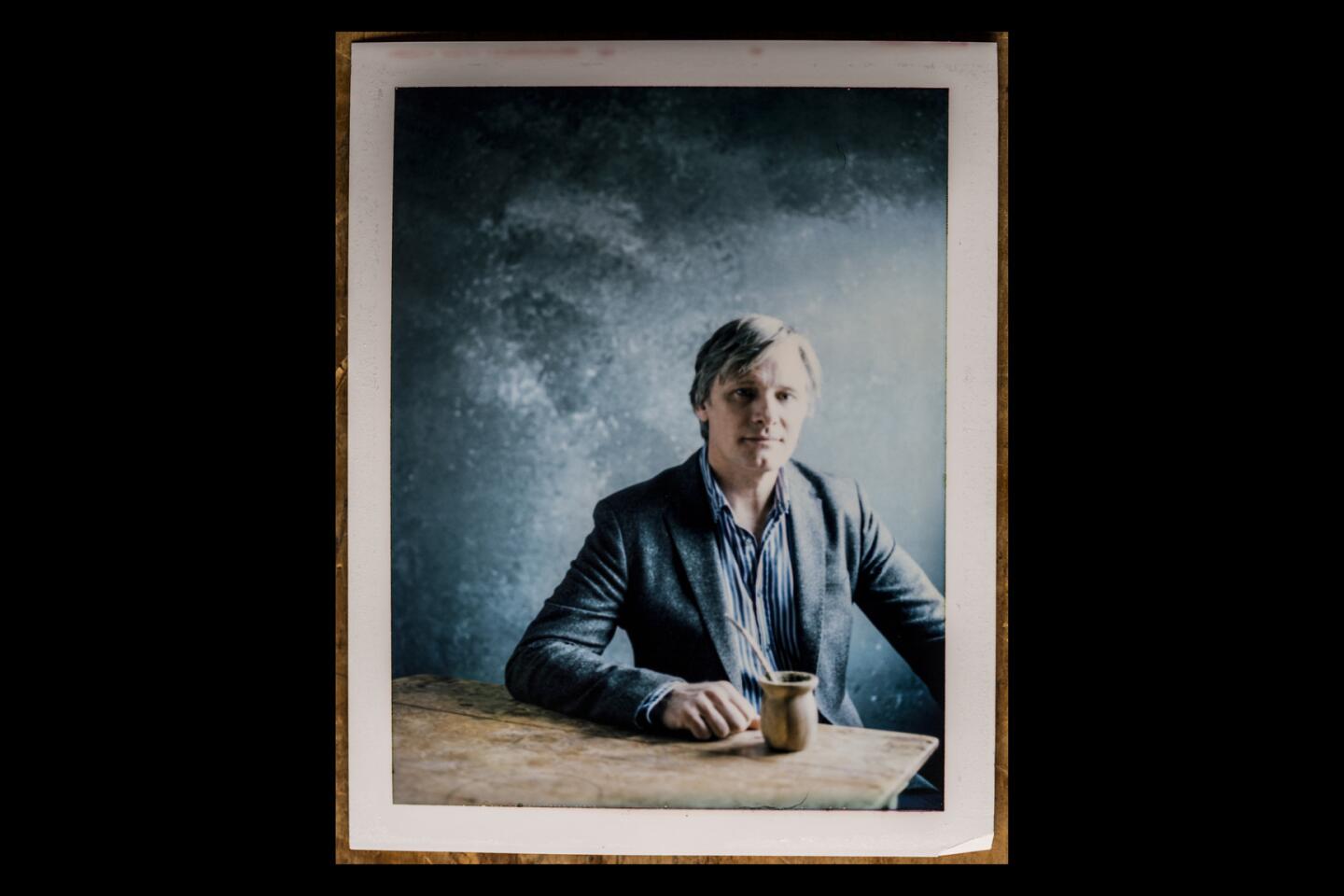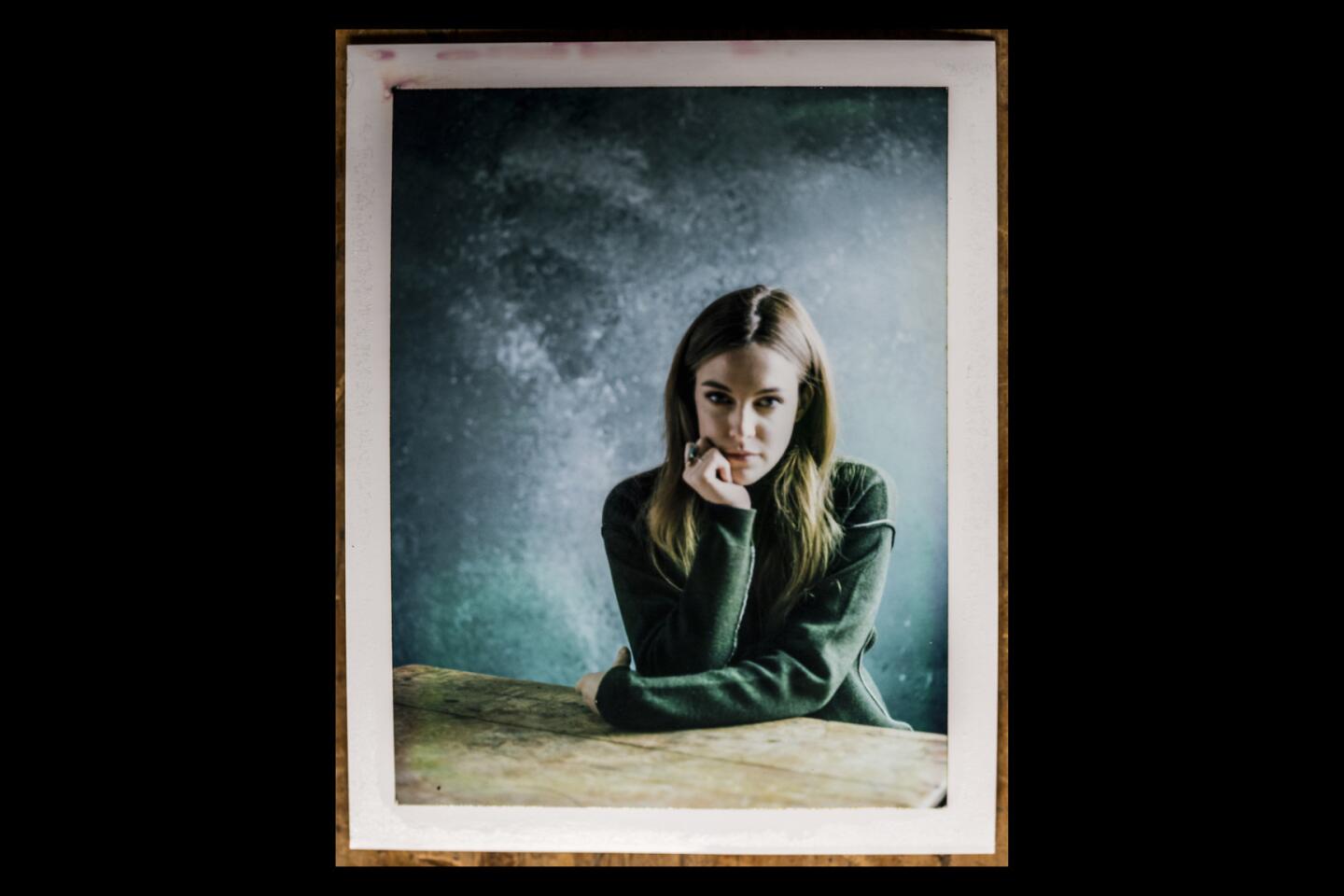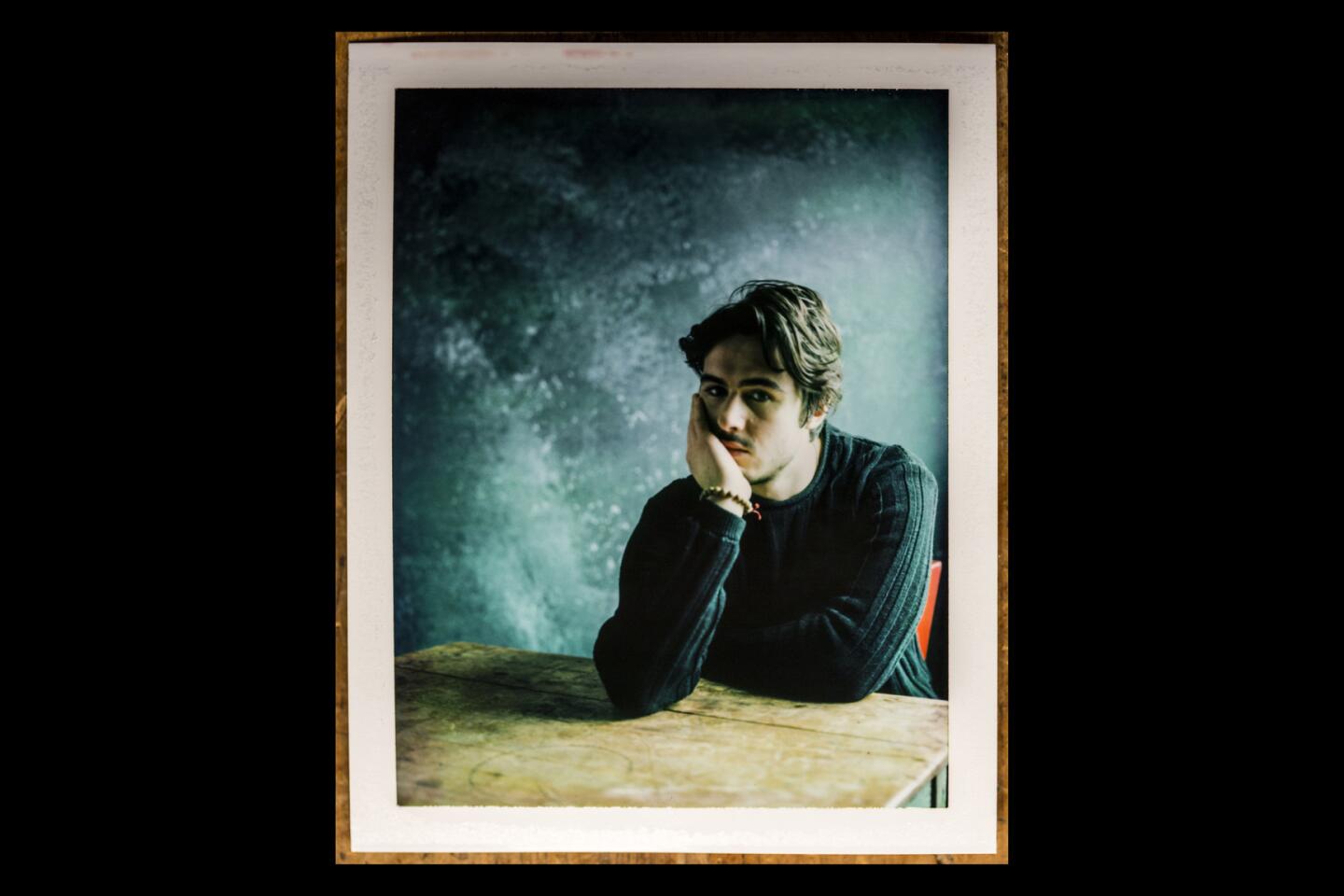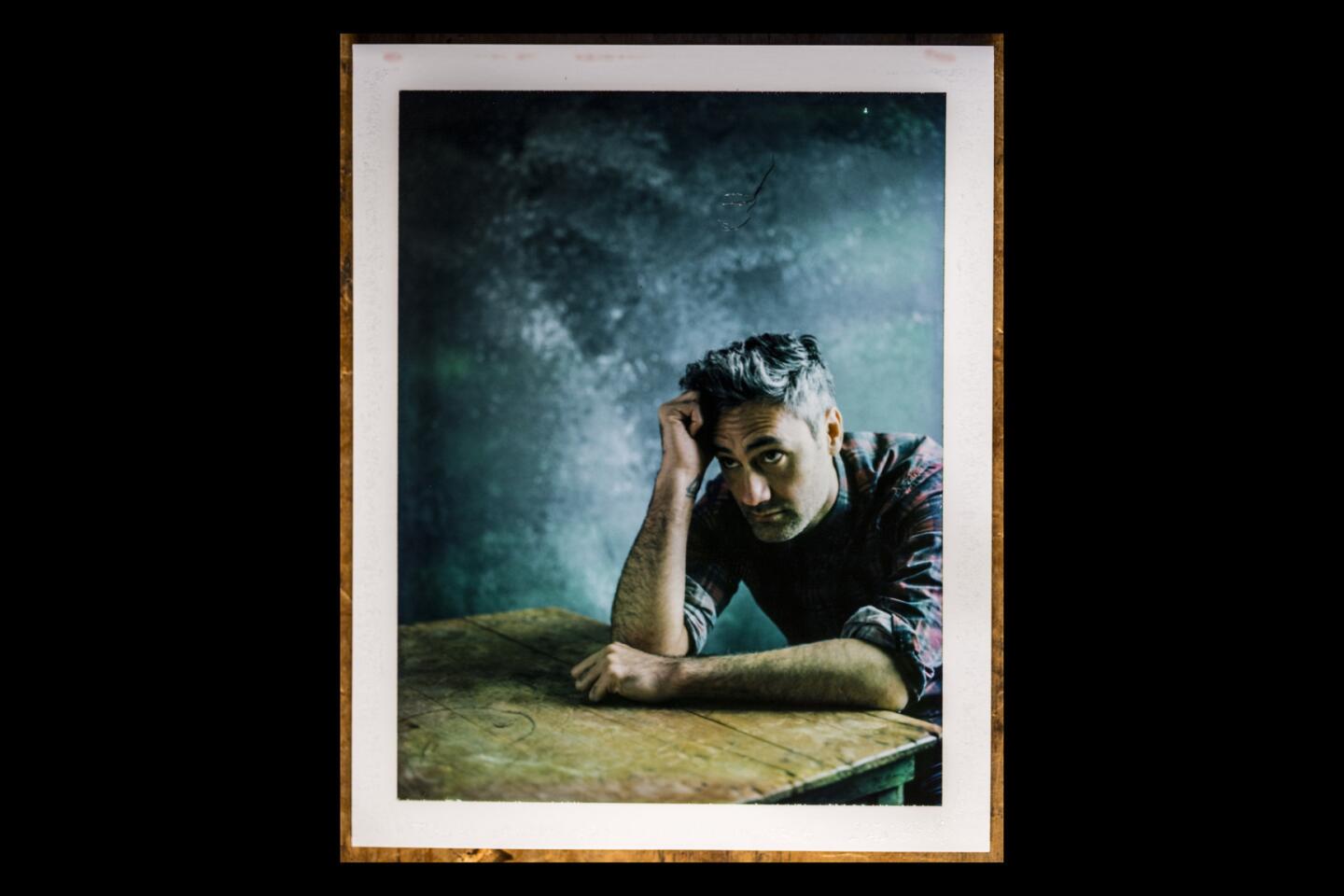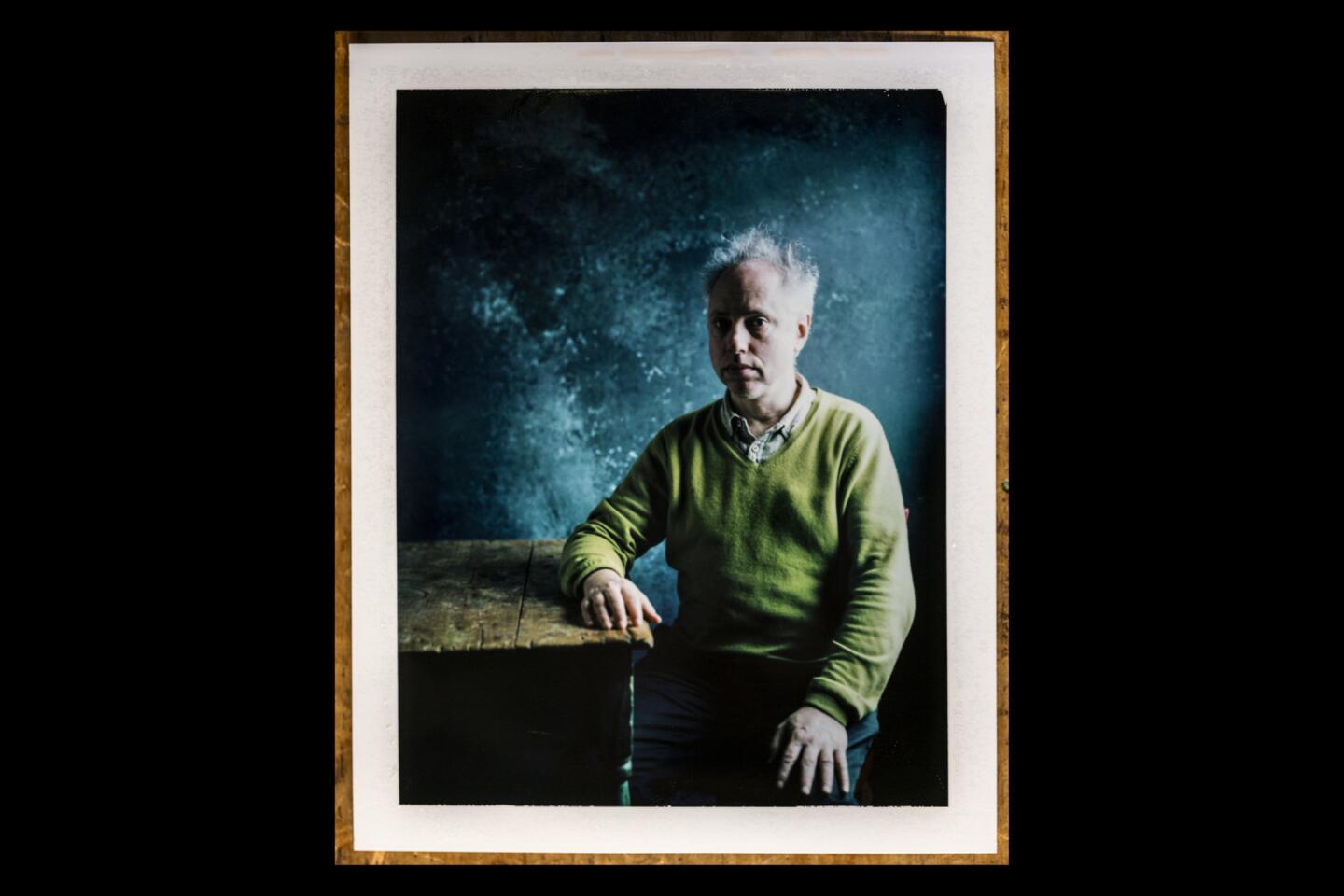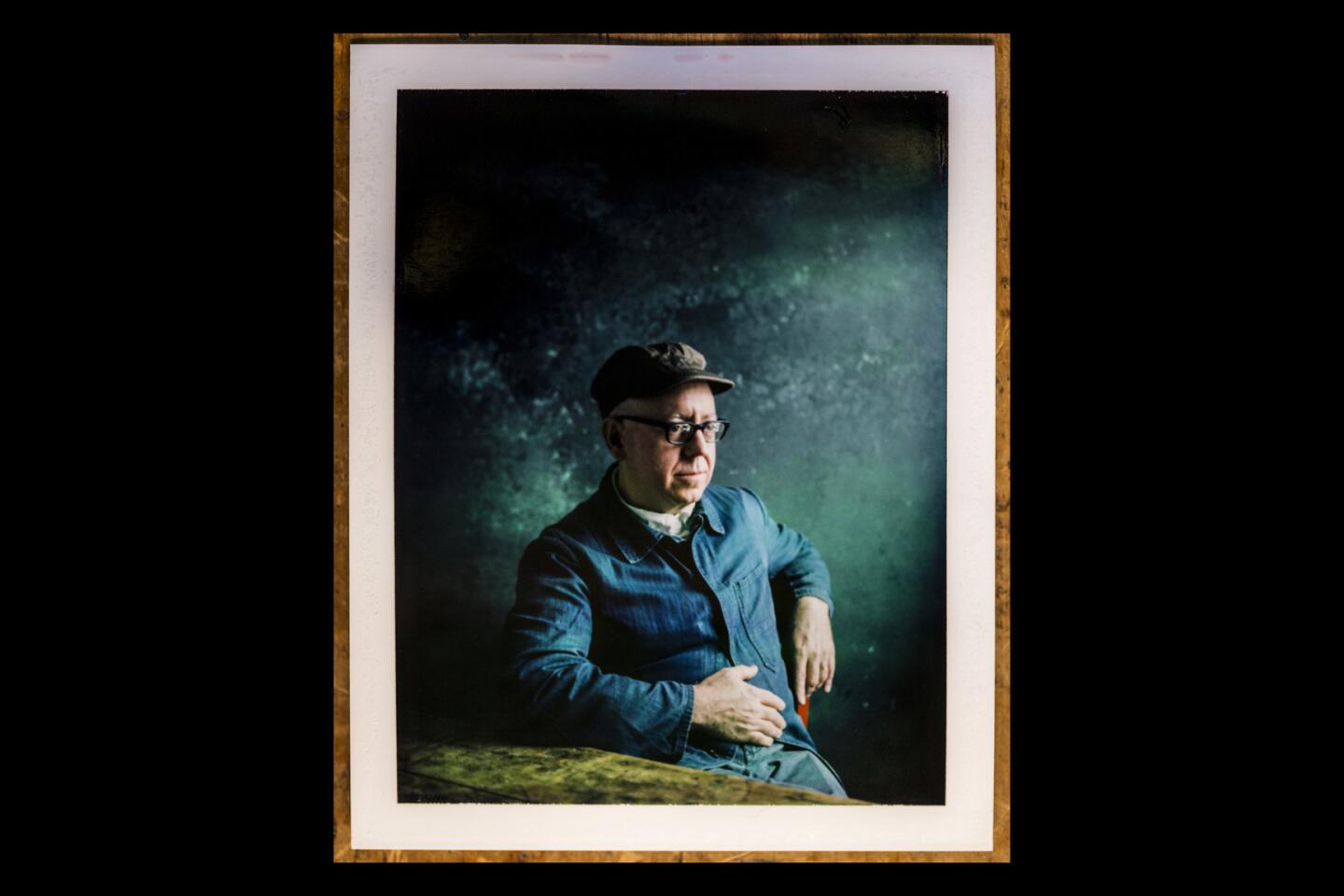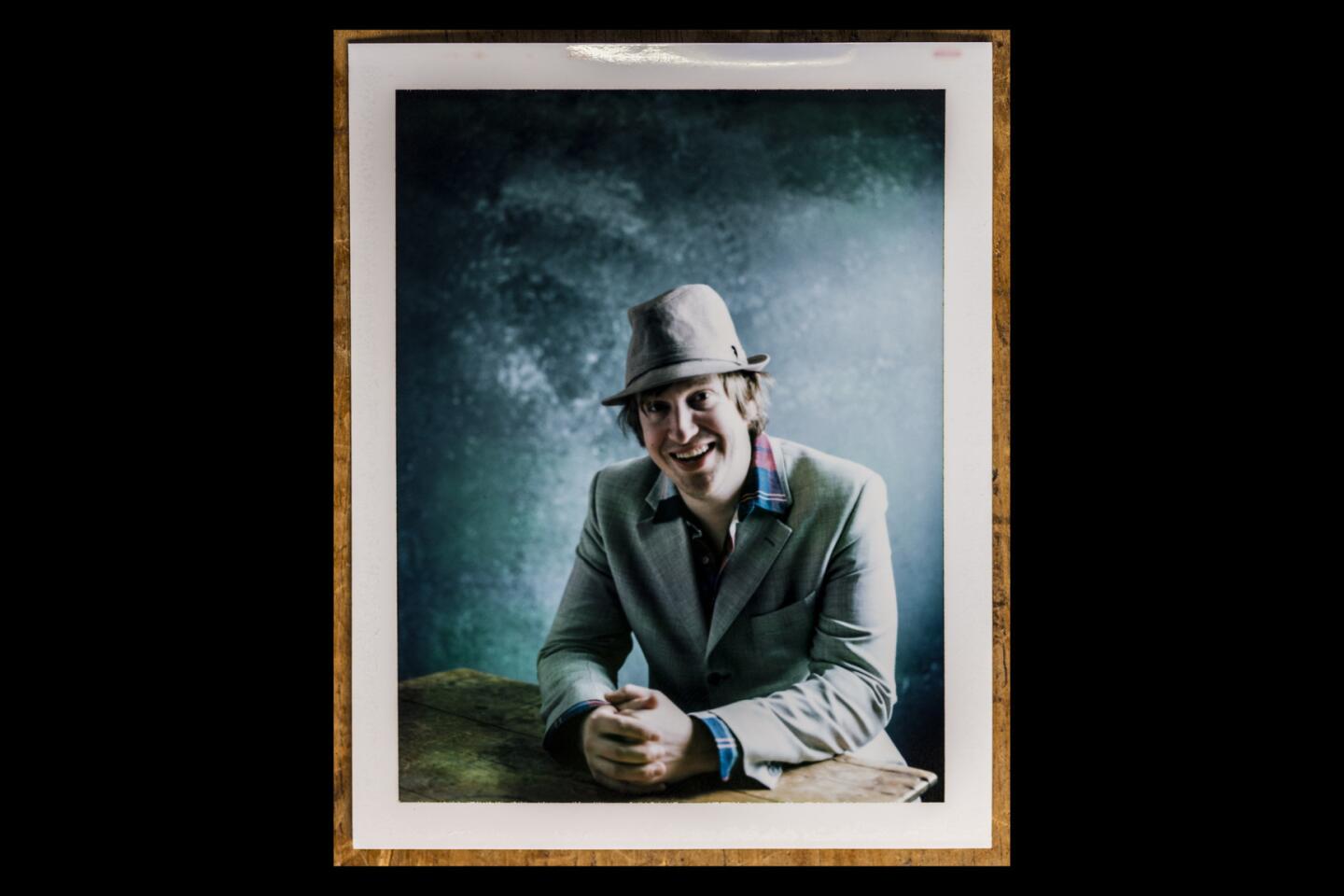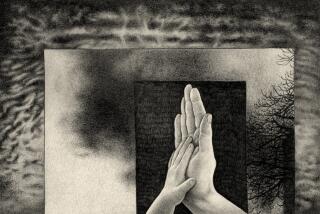PARK CITY, Utah — Josh Fox has gotten bad news. And it’s not that he, like, got a parking ticket or forgot to pay a bill. This is dire stuff: The major cities on the East Coast will likely be underwater in the next few decades. Roughly 40% of the planet’s species are on track to go extinct. Ravaging fires and droughts and floods — they’re all coming.
In the midst of making his latest documentary about climate change, Fox — the filmmaker behind the Oscar-nominated “Gasland” — learns that, basically, we’re in a lot of trouble. Leading scientists tell him that even if society were to make drastic and immediate lifestyle shifts, the Earth’s temperature is already on target to rise 2 degrees. That may not sound like a lot, but it would lead to all of the scary things listed above.
1/196
Imogen Poots, from the film “Frank and Lola,” poses for a portrait in the L.A. Times photo & video studio at the Sundance Film Festival in Park City, Utah.
(Jay L. Clendenin / Los Angeles Times) 2/196
Imogen Poots poses for a portrait at the Sundance Film Festival.
(Jay L. Clendenin / Los Angeles Times) 3/196
Imogen Poots and director Matthew Ross from the film “Frank and Lola” pose for an L.A. Times photo at the Sundance Film Festival.
(Jay L. Clendenin / Los Angeles Times) 4/196
Louis Black and Karen Bernstein, filmmakers from the film “Richard Linklater: Dream Is Destiny,” in a portrait taken at the L.A. Times studio at the Sundance Film Festival in Park City, Utah.
(Jay L. Clendenin / Los Angeles Times) 5/196
Chris Hegedus, left, Steven Wise and D.A. Pennebaker of the film “Unlocking the Cage” pose for a portrait in the L.A. Times studio at the Sundance Film Festival in Park City, Utah.
(Jay L. Clendenin / Los Angeles Times) 6/196
Chris Hegedus, director of “Unlocking the Cage,” in a portrait at the Sundance Film Festival in Park City, Utah.
(Jay L. Clendenin / Los Angeles Times) 7/196
Jon Shenk, left, subject Daisy Coleman and Bonni Cohen, director from the film “Audrie & Daisy,” poses for a portrait in the L.A. Times photo & video studio at the Sundance Film Festival in Park City, Utah.
(Jay L. Clendenin / Los Angeles Times) 8/196
Vincent Piazza from the film “Intervention.”
(Jay L. Clendenin / Los Angeles Times) 9/196
Daisy Coleman, subject from the film “Audrie & Daisy.”
(Jay L. Clendenin / Los Angeles Times) 10/196
Director Clea DuVall from the film “Intervention.”
(Jay L. Clendenin / Los Angeles Times) 11/196
Michael Shannon from the films “Complete Unknown” and “Frank and Lola.”
(Jay L. Clendenin / Los Angeles Times) 12/196
Melanie Lynskey from the film “Intervention.”
(Jay L. Clendenin / Los Angeles Times) 13/196
Michael Shannon from the film “Complete Unknown.”
(Jay L. Clendenin / Los Angeles Times) 14/196
Ben Schwartz from the film “Intervention.”
(Jay L. Clendenin / Los Angeles Times) 15/196
Michael Shannon from the films “Complete Unknown” and “Frank and Lola.”
(Jay L. Clendenin / Los Angeles Times) 16/196
Jason Ritter, left, Ben Schwartz, Natasha Lyonne, Vincent Piazza, Clea DuVall, director, Melanie Lynskey from the film “Intervention.”
(Jay L. Clendenin / Los Angeles Times) 17/196
Ben Schwartz, left, and Jason Ritter from the film “Intervention.”
(Jay L. Clendenin / Los Angeles Times) 18/196
Jason Ritter from the film “Intervention.”
(Jay L. Clendenin / Los Angeles Times) 19/196
Aaron Brookner, director from the film “Uncle Howard.”
(Jay L. Clendenin / Los Angeles Times) 20/196
Executive producer/narrator Katie Couric, right, and filmmaker Stephanie Soechtig from the film “Under The Gun.”
(Jay L. Clendenin / Los Angeles Times) 21/196
Executive producer/narrator Katie Couric from the film “Under The Gun.”
(Jay L. Clendenin / Los Angeles Times) 22/196
Michael Shannon from the films “Complete Unknown” and “Frank and Lola.”
(Jay L. Clendenin / Los Angeles Times) 23/196
Amandla Stenberg from the film “As You Are.”
(Jay L. Clendenin / Los Angeles Times) 24/196
Michael Chernus, left, Michael Shannon and director Joshua Marston from the film “Complete Unknown.”
(Jay L. Clendenin / Los Angeles Times) 25/196
Michael Chernus, left, Michael Shannon and director Joshua Marston from the film “Complete Unknown.”
(Jay L. Clendenin / Los Angeles Times) 26/196
Danfung Dennis, filmmaker, and Casey Brown, producer from the virtual reality experience “Condition One.”
(Jay L. Clendenin / Los Angeles Times) 27/196
Ciro Guerra, writer-director from the film “Embrace of the Serpent.”
(Jay L. Clendenin / Los Angeles Times) 28/196
Josh Fox, director from the film “How to Let Go of the World and Love All the Things Climate Can’t Change.”
(Jay L. Clendenin / Los Angeles Times) 29/196
Christopher Waldorf, left, Chi Chi Mizrahi,, MikeQ, Twiggy Pucci Garçon, co-writer/subject, Sara Jordeno, writer-director, Gia Marie Love, Kenneth “Symba McQueen” Soler-Rios from the film “Kiki.”
(Jay L. Clendenin / Los Angeles Times) 30/196
Kahane Cooperman, showrunner/executive producer from the film “The New Yorker Presents.”
(Jay L. Clendenin / Los Angeles Times) 31/196
Frankie Shaw, director-writer stars in “Too Legit.”
(Jay L. Clendenin / Los Angeles Times) 32/196
Dawn Porter, director from the film “Trapped.”
(Jay L. Clendenin / Los Angeles Times) 33/196
Keith Fulton, director, Lou Pepe, director, Jennifer Coffield and A.J. Wright from the film “Bad Kids.”
(Jay L. Clendenin / Los Angeles Times) 34/196
Lou Pepe, left, and Keith Fulton, directors from the film “Bad Kids.”
(Jay L. Clendenin / Los Angeles Times) 35/196
Jennifer Coffield and A.J. Wright from the film “Bad Kids.”
(Jay L. Clendenin / Los Angeles Times) 36/196
Michael Villar from the film “Carnage Park.”
(Jay L. Clendenin / Los Angeles Times) 37/196
Mickey Keating, director from the film “Carnage Park.”
(Jay L. Clendenin / Los Angeles Times) 38/196
Rebecca Hall from the film “Christine.”
(Jay L. Clendenin / Los Angeles Times) 39/196
Tahir Jetter, director from the film “How to Tell You’re a Douchebag.”
(Jay L. Clendenin / Los Angeles Times) 40/196
Alex Ross Perry from the movie “Joshy.”
(Jay L. Clendenin / Los Angeles Times) 41/196
Jenny Slate from the movie “Joshy.”
(Jay L. Clendenin / Los Angeles Times) 42/196
Thomas Middleditch from the movie “Joshy.”
(Jay L. Clendenin / Los Angeles Times) 43/196
Nick Kroll, left, Brett Gelman, Thomas Middleditch, Adam Pally, Alex Ross Perry, Jenny Slate, Jeff Baena, director, and Lauren Weedman from the movie “Joshy.”
(Jay L. Clendenin / Los Angeles Times) 44/196
Jeff Baena, director, from the movie “Joshy.”
(Jay L. Clendenin / Los Angeles Times) 45/196
Paulina Garcia from the film “Little Men.”
(Jay L. Clendenin / Los Angeles Times) 46/196
Diego Luna, director of “Mr. Pig.”
(Jay L. Clendenin / Los Angeles Times) 47/196
Maya Rudolph, star of “Mr. Pig”
(Jay L. Clendenin / Los Angeles Times) 48/196
Actors Danny Glover, from left, Maya Rudolph and “Mr. Pig” director Diego Luna.
(Jay L. Clendenin / Los Angeles Times) 49/196
Writer-director Richard Tanne, from left, Tika Sumpter and Parker Sawyers, from “Southside With You.”
(Jay L. Clendenin / Los Angeles Times) 50/196
Tika Sumpter from “Southside With You.”
(Jay L. Clendenin / Los Angeles Times) 51/196
Actor Waleed Zuaiter from “The Free World.”
(Jay L. Clendenin / Los Angeles Times) 52/196
Writer-director Jason Lew, from “The Free World.”
(Jay L. Clendenin / Los Angeles Times) 53/196
Boyd Holbrook, from “The Free World.”
(Jay L. Clendenin / Los Angeles Times) 54/196
Elisabeth Moss, from “The Free World.”
(Jay L. Clendenin / Los Angeles Times) 55/196
Elisabeth Moss, from “The Free World.”
(Jay L. Clendenin / Los Angeles Times) 56/196
Boyd Holbrook, from left, Octavia Spencer, writer-director Jason Lew, Elisabeth Moss and Waleed Zuaiter, from “The Free World.”
(Jay L. Clendenin / Los Angeles Times) 57/196
Octavia Spencer, from “The Free World.”
(Jay L. Clendenin / Los Angeles Times) 58/196
Octavia Spencer, from “The Free World.”
(Jay L. Clendenin / Los Angeles Times) 59/196
Bobby Naderi, from “Under the Shadow.”
(Jay L. Clendenin / Los Angeles Times) 60/196
Bobby Nader, from “Under The Shadow.”
(Jay L. Clendenin / Los Angeles Times) 61/196
Jeff Daniels Phillips, right, and Richard Brake from the film “31.”
(Jay L. Clendenin / Los Angeles Times) 62/196
Ashley Bell, left, Pat Healy, Mickey Keating, Michael Villar and James Landry Hébert from the film “Carnage Park.”
(Jay L. Clendenin / Los Angeles Times) 63/196
Ashley Bell from the film “Carnage Park.”
(Jay L. Clendenin / Los Angeles Times) 64/196
Rebecca Hall from the film “Christine.”
(Jay L. Clendenin / Los Angeles Times) 65/196
Rebecca Hall and director Antonio Campos from the film “Christine.”
(Jay L. Clendenin / Los Angeles Times) 66/196
Dylan Gelula from the film “First Girl I Loved.”
(Jay L. Clendenin / Los Angeles Times) 67/196
Writer-director Kerem Sanga from the film “First Girl I Loved.”
(Jay L. Clendenin / Los Angeles Times) 68/196
Brianna Hildebrand, left, Kerem Sanga, writer-director, Brianna Hildebrand, Dylan Gelula and Mateo Arias from the film “First Girl I Loved.”
(Jay L. Clendenin / Los Angeles Times) 69/196
Brianna Hildebrand, left, Kerem Sanga, writer-director, Brianna Hildebrand, Dylan Gelula and Mateo Arias from the film “First Girl I Loved.”
(Jay L. Clendenin / Los Angeles Times) 70/196
Brianna Hildebrand from the film “First Girl I Loved.”
(Jay L. Clendenin / Los Angeles Times) 71/196
Mateo Arias from the film “First Girl I Loved.”
(Jay L. Clendenin / Los Angeles Times) 72/196
Mateo Arias from the film “First Girl I Loved.”
(Jay L. Clendenin / Los Angeles Times) 73/196
Thomas Middleditch from the movie “Joshy.”
(Jay L. Clendenin / Los Angeles Times) 74/196
Lauren Weedman from the movie “Joshy.”
(Jay L. Clendenin / Los Angeles Times) 75/196
Brett Gelman from the movie “Joshy.”
(Jay L. Clendenin / Los Angeles Times) 76/196
Adam Pally from the movie “Joshy.”
(Jay L. Clendenin / Los Angeles Times) 77/196
Nick Kroll from the movie “Joshy.”
(Jay L. Clendenin / Los Angeles Times) 78/196
Maya Rudolph from the film “Mr. Pig.”
(Jay L. Clendenin / Los Angeles Times) 79/196
Maya Rudolph from the film “Mr. Pig.”
(Jay L. Clendenin / Los Angeles Times) 80/196
Danny Glover from the film “Mr. Pig.”
(Jay L. Clendenin / Los Angeles Times) 81/196
Haerry Kim from the film “Spa Night.”
(Jay L. Clendenin / Los Angeles Times) 82/196
Haerry Kim, left, director Andrew Ahn and Joe Seo from the film “Spa Night.”
(Jay L. Clendenin / Los Angeles Times) 83/196
Director Andrew Ahn from the film “Spa Night.”
(Jay L. Clendenin / Los Angeles Times) 84/196
Joe Seo from the film “Spa Night.”
(Jay L. Clendenin / Los Angeles Times) 85/196
Asif Kapadia, filmmaker from “Ali & Nino,” poses for a portrait in the L.A. Times photo & video studio at the Sundance Film Festival in Park City, Utah.
(Jay L. Clendenin / Los Angeles Times) 86/196
Alysia Reiner, left, and Sarah Megan Thomas from the film “Equity.”
(Jay L. Clendenin / Los Angeles Times) 87/196
Alysia Reiner from the film “Equity.”
(Jay L. Clendenin / Los Angeles Times) 88/196
Sarah Megan Thomas from the film “Equity.”
(Jay L. Clendenin / Los Angeles Times) 89/196
Steven Caple Jr., writer and director for the film “The Land.”
(Jay L. Clendenin / Los Angeles Times) 90/196
Jorge Lendeborg Jr. from the film “The Land.”
(Jay L. Clendenin / Los Angeles Times) 91/196
Moises Arias from the film “The Land.”
(Jay L. Clendenin / Los Angeles Times) 92/196
Rafi Gavron, left, Ezri Walker, Steven Caple Jr., Moises Arias and Jorge Lendeborg Jr. from the film “The Land.”
(Jay L. Clendenin / Los Angeles Times) 93/196
Ezri Walker from the film “The Land.”
(Jay L. Clendenin / Los Angeles Times) 94/196
Moises Arias from the film “The Land.”
(Jay L. Clendenin / Los Angeles Times) 95/196
Yoshiki from the film “We are X.”
(Jay L. Clendenin / Los Angeles Times) 96/196
Stephen Kijak, left, and Yoshiki from the film “We are X.”
(Jay L. Clendenin / Los Angeles Times) 97/196
Co-directors Josh Kriegman and Elyse Steinberg from the film “Weiner.”
(Jay L. Clendenin / Los Angeles Times) 98/196
Penelope Ann Miller from the film “The Birth of A Nation.”
(Jay L. Clendenin / Los Angeles Times) 99/196
Armie Hammer from the film “The Birth of A Nation.”
(Jay L. Clendenin / Los Angeles Times) 100/196
Gabrielle Union from the film “The Birth of A Nation.”
(Jay L. Clendenin / Los Angeles Times) 101/196
Gabrielle Union, left, Aja Naomi King, Armie Hammer, Nate Parker, director, Penelope Ann Miller and Jackie Earle Haley from the film “The Birth of A Nation.”
(Jay L. Clendenin / Los Angeles Times) 102/196
Nate Parker, director from the film “The Birth of A Nation.”
(Jay L. Clendenin / Los Angeles Times) 103/196
Jackie Earle Haley from the film “The Birth of A Nation.”
(Jay L. Clendenin / Los Angeles Times) 104/196
Aja Naomi King from the film “The Birth of A Nation.”
(Jay L. Clendenin / Los Angeles Times) 105/196
Jessie Kahnweiler, star-director-producer, from the film “The Skinny.”
(Jay L. Clendenin / Los Angeles Times) 106/196
Illeana Douglas, star-producer, left, Jill Soloway, executive producer, Rebecca Odes, executive producer, Jessie Kahnweiler, star-director-producer, and Andrea Sperling, producer, from the film “The Skinny.”
(Jay L. Clendenin / Los Angeles Times) 107/196
Jill Soloway, executive producer from the film “The Skinny.”
(Jay L. Clendenin / Los Angeles Times) 108/196
Jessie Kahnweiler from the film “The Skinny.”
(Jay L. Clendenin / Los Angeles Times) 109/196
Rebecca Odes, executive producer from the film “The Skinny.”
(Jay L. Clendenin / Los Angeles Times) 110/196
Illeana Douglas from the film “The Skinny.”
(Jay L. Clendenin / Los Angeles Times) 111/196
Illeana Douglas from the film “The Skinny.”
(Jay L. Clendenin / Los Angeles Times) 112/196
Andrea Sperling, producer from the film “The Skinny.”
(Jay L. Clendenin / Los Angeles Times) 113/196
DeWanda Wise from the film “How to Tell You’re a Douchebag.”
(Jay L. Clendenin / Los Angeles Times) 114/196
Jenna Williams, from the film “How to Tell You’re a Douchebag.”
(Jay L. Clendenin / Los Angeles Times) 115/196
Alano Miller, left, DeWanda Wise, Tahir Jetter, Charles Brice and producers Julius Pryor IV and Marttise Hill from the film “How to Tell You’re a Douchebag.”
(Jay L. Clendenin / Los Angeles Times) 116/196
Jennifer Ehle, from the film “Little Men.”
(Jay L. Clendenin / Los Angeles Times) 117/196
Jennifer Ehle, left, Michael Barbieri, Mauricio Zacharias, Paulina Garcia, Ira Sachs, director, Theo Taplitz and Greg Kinnear, from the film “Little Men.”
(Jay L. Clendenin / Los Angeles Times) 118/196
Greg Kinnear from the film “Little Men.”
(Jay L. Clendenin / Los Angeles Times) 119/196
Michael Barbieri, left, and Theo Taplitz from the film “Little Men.”
(Jay L. Clendenin / Los Angeles Times) 120/196
Director and co-writer Ira Sachs, left, and co-writer Mauricio Zacharias from the film “Little Men.”
(Jay L. Clendenin / Los Angeles Times) 121/196
Ira Sachs, director/co-writer from the film, “Little Men.”
(Jay L. Clendenin / Los Angeles Times) 122/196
Mary Stuart Masterson from the film “As You Are.”
(Jay L. Clendenin / Los Angeles Times) 123/196
Miles Joris-Peyrafitte from the film “As You Are.”
(Jay L. Clendenin / Los Angeles Times) 124/196
Amandla Stenberg from the film “As You Are.”
(Jay L. Clendenin / Los Angeles Times) 125/196
Scott Cohen from the film “As You Are.”
(Jay L. Clendenin / Los Angeles Times) 126/196
Owen Campbell from the film “As You Are.”
(Jay L. Clendenin / Los Angeles Times) 127/196
Parker Sawyers from the film “Southside With You.”
(Jay L. Clendenin / Los Angeles Times) 128/196
Tika Sumpter from the film “Southside With You.”
(Jay L. Clendenin / Los Angeles Times) 129/196
Richard Tanne, writer-director from the film “Southside With You.”
(Jay L. Clendenin / Los Angeles Times) 130/196
Jeff Feuerzig, director from the film “The JT Leroy Story.”
(Jay L. Clendenin / Los Angeles Times) 131/196
Robert Jumper, left, director Tim Sutton, Anna Rose and Maica Armata from the film “Dark Night” in the L.A. Times photo & video studio at the Sundance Film Festival in Park City, Utah.
( Jay L. Clendenin / Los Angeles Times) 132/196
Director Pieter-Jan De Pue from the film “The Land of the Enlightened.”
( Jay L. Clendenin / Los Angeles Times) 133/196
Michal Huszcza, left, Michal Marczak, director, and Kris Baganski from the film “All These Sleepless Nights” get cozy.
( Jay L. Clendenin / Los Angeles Times) 134/196
Abigail Spencer from the series “Rectify.”
( Jay L. Clendenin / Los Angeles Times) 135/196
Director Robert Greene and actress Kate Lyn Sheil from the film “Kate Plays Christine.”
( Jay L. Clendenin / Los Angeles Times) 136/196
Actress Kate Lyn Sheil from the film “Kate Plays Christine.”
( Jay L. Clendenin / Los Angeles Times) 137/196
Executive Producer Jim McNiel from the film “Lo and Behold: Reveries of the Connected World.”
( L. Clendenin / Los Angeles Times) 138/196
Werner Herzog, director of the film “Lo and Behold: Reveries of the Connected World.”
( L. Clendenin / Los Angeles Times) 139/196
Laura Albert from the film “The JT Leroy Story.”
( Jay L. Clendenin / Los Angeles Times) 140/196
Jeff Feuerzig and subject Laura Albert from the film “The JT Leroy Story.”
( Jay L. Clendenin / Los Angeles Times) 141/196
Jason Benjamin, director from the film “Suited.”
( Jay L. Clendenin / Los Angeles Times) 142/196
Jenni Konner, producer, left, Jason Benjamin, director, and Lena Dunham, producer, from the film “Suited.”
( Jay L. Clendenin / Los Angeles Times) 143/196
Jared Harris from the film “Certain Women.”
( Jay L. Clendenin / Los Angeles Times) 144/196
Jared Harris from the film “Certain Women.”
( Jay L. Clendenin / Los Angeles Times) 145/196
Q., director of the film “Brahman Naman.”
( Jay L. Clendenin / Los Angeles Times) 146/196
Q., director of the film “Brahman Naman.”
( Jay L. Clendenin / Los Angeles Times) 147/196
Naman Ramachandran, left, Q., and Shashank Arora with Werner Herzog.
( Jay L. Clendenin / Los Angeles Times) 148/196
Tanmay Dhanania, left, Shashank Arora, Naman Ramachandran, Steve Barron, producer, Q., director, Sid Mallya, screenwriter, from the film “Brahman Naman.”
( Jay L. Clendenin / Los Angeles Times) 149/196
Ralph Rodriguez, left, Brian “Sene” Marc, Morgan Saylor, Adrian Martinez, India Menuez, Justin Bartha, Elizabeth Wood, filmmaker, and Anthony Ramos from the film “White Girl.”
( Jay L. Clendenin / Los Angeles Times) 150/196
Brian “Sene” Marc from the film “White Girl.”
( Jay L. Clendenin / Los Angeles Times) 151/196
Morgan Saylor from the film “White Girl.”
( Jay L. Clendenin / Los Angeles Times) 152/196
Anthony Ramos from the film “White Girl.”
( Jay L. Clendenin / Los Angeles Times) 153/196
Adrian Martinez from the film “White Girl.”
( Jay L. Clendenin / Los Angeles Times) 154/196
India Menuez from the film “White Girl.”
( Jay L. Clendenin / Los Angeles Times) 155/196
Justin Bartha from the film “White Girl.”
( Jay L. Clendenin / Los Angeles Times) 156/196
Elizabeth Wood from the film “White Girl.”
( Jay L. Clendenin / Los Angeles Times) 157/196
Gavin Free for Lazer Team levitates.
( Jay L. Clendenin / Los Angeles Times) 158/196
Anne Fontaine, director from the film “Agnus Dei.”
(Jay L. Clendenin / Los Angeles Times) 159/196
Chloe Sevigny, left, Danny Perez and Natasha Lyonne from the film “Antibirth.”
( Jay L. Clendenin / Los Angeles Times) 160/196
Chloe Sevigny from the film “Antibirth.”
(Jay L. Clendenin / Los Angeles Times) 161/196
Chloe Sevigny from the film “Antibirth.”
(Jay L. Clendenin / Los Angeles Times) 162/196
Natasha Lyonne from the film “Antibirth.”
( Jay L. Clendenin / Los Angeles Times) 163/196
Rachel Grady, co-director from the film “Norman Lear: Just Another Version of You.”
( Jay L. Clendenin / Los Angeles Times) 164/196
Heidi Ewing, co-director, Norman Lear, Rachel Grady, co-director, from the film “Norman Lear: Just Another Version of You.”
(Jay L. Clendenin / Los Angeles Times) 165/196
Norman Lear from the film “Norman Lear: Just Another Version of You.”
(Jay L. Clendenin / Los Angeles Times) 166/196
Heidi Ewing, co-director from the film “Norman Lear: Just Another Version of You.”
(Jay L. Clendenin / Los Angeles Times) 167/196
Heidi Ewing, co-director from the film “Norman Lear: Just Another Version of You.”
(Jay L. Clendenin / Los Angeles Times) 168/196
Kenneth Lonergan, director from the film “Manchester by the Sea.”
(Jay L. Clendenin / Los Angeles Times) 169/196
Lucas Hedges, left, Kenneth Lonergan, director, and Casey Affleck from the film “Manchester by the Sea.”
(Jay L. Clendenin / Los Angeles Times) 170/196
Lucas Hedges, left, and Casey Affleck from the film “Manchester by the Sea.”
(Jay L. Clendenin / Los Angeles Times) 171/196
Lucas Hedges, left, and Casey Affleck from the film “Manchester by the Sea.”
( Jay L. Clendenin / Los Angeles Times) 172/196
Lucas Hedges from the film “Manchester by the Sea.”
( Jay L. Clendenin / Los Angeles Times) 173/196
Casey Affleck from the film “Manchester by the Sea.”
( Jay L. Clendenin / Los Angeles Times) 174/196
Casey Affleck from the film “Manchester by the Sea.”
( Jay L. Clendenin / Los Angeles Times) 175/196
Writer-director Sian Heder from the film “Talullah.”
( Jay L. Clendenin / Los Angeles Times) 176/196
John Benjamin Hickey, left, Allison Janney, Ellen Page, Sian Heder, writer-director, and Tammy Blanchard from the film “Talullah.”
( Jay L. Clendenin / Los Angeles Times) 177/196
Ellen Page from the film “Talullah.”
(Jay L. Clendenin / Los Angeles Times) 178/196
Director Roger Ross Williams from the film “Life Animated.”
(Jay L. Clendenin / Los Angeles Times) 179/196
Allison Janney from the film “Talullah.”
(Jay L. Clendenin / Los Angeles Times) 180/196
John Benjamin Hickey from the film “Talullah.”
( Jay L. Clendenin / Los Angeles Times) 181/196
Tammy Blanchard from the film “Talullah.”
( Jay L. Clendenin / Los Angeles Times) 182/196
Brooklyn Decker from the film “Lovesong.”
(Jay L. Clendenin / Los Angeles Times) 183/196
Jena Malone from the film “Lovesong.”
( Jay L. Clendenin / Los Angeles Times) 184/196
Jena Malone, left, and Riley Keough from the film “Lovesong.”
(Jay L. Clendenin / Los Angeles Times) 185/196
Director Roger Ross Williams from the film “Life Animated.”
(Jay L. Clendenin / Los Angeles Times) 186/196
Jonathan Freeman, left, Owen Suskind, Gilbert Gottfried and director Roger Ross Williams from the film “Life Animated.”
( Jay L. Clendenin / Los Angeles Times) 187/196
John Krasinski from the film, “The Hollars,” poses for a portrait in the L.A. Times photo & video studio at the Sundance Film Festival, in Park City, Utah. (Jay L. Clendenin / Los Angeles Times)
188/196
John Krasinski, left, Charlie Day, Margo Martindale, Sharlto Copley and Josh Groban from the film “The Hollars.”
( Jay L. Clendenin / Los Angeles Times) 189/196
Josh Groban from the film, “The Hollars,” in the L.A. Times photo & video studio at the Sundance Film Festival, in Park City, Utah. ( Jay L. Clendenin / Los Angeles Times)
190/196
Sharlto Copley from the film, “The Hollars,” in the L.A. Times photo & video studio at the Sundance Film Festival, in Park City, Utah. (Jay L. Clendenin / Los Angeles Times)
191/196
Margo Martindale, from the film, “The Hollars,” in the L.A. Times photo & video studio at the Sundance Film Festival, in Park City, Utah. ( Jay L. Clendenin / Los Angeles Times)
192/196
John Krasinski from the film, “The Hollars,” poses for a portrait in the L.A. Times photo & video studio at the Sundance Film Festival, in Park City, Utah. (Jay L. Clendenin / Los Angeles Times)
193/196
David Wheeler, left, Nicole Hockley, Mark Barden from the film “Newtown.”
(Jay L. Clendenin / Los Angeles Times) 194/196
Kim Snyder, left, director, and Maria Cuomo Cole, producer, from the film “Newtown.”
(Jay L. Clendenin / Los Angeles Times) 195/196
Nicole Hockley, David Wheeler, Maria Cuomo Cole, producer, Kim Snyder, director, and Mark Barden from the film “Newtown.”
(Jay L. Clendenin / Los Angeles Times) 196/196
Todd Solondz, director of the film “Wiener-Dog,” poses for a portrait in the L.A. Times photo & video studio at the Sundance Film Festival in Park City, Utah.
( Jay L. Clendenin / Los Angeles Times) “I just felt like giving up. Walking away,” Fox says in the film, “How to Let Go of the World and Love All the Things Climate Can’t Change,” which premiered last week at the just-concluded Sundance Film Festival. “Quitting this mission. Becoming just another dot on the landscape. Insignificant. Unable to do anything. Just let it all go.”
Sundance Film Festival 2016: Full coverage
It’s a sentiment, no doubt, that filmgoers here often experience after watching harrowing documentaries. Over the past decade at this Utah festival, viewers have seen how challenging it is to get legal abortions (“After Tiller”), be married as a gay couple (“The Case Against 8”) or infiltrate the drug war (“Cartel Land”). Nonfiction films often deal in heavy subject matter like this, and they can leave viewers feeling paralyzed — like things are so bad that we’re all just powerless to make a difference.
And yet many of the documentaries that have premiered at Sundance have gone on to inspire real change, and often those films tend to center on the environment. In 2013, “Blackfish,” a film about the plight of killer whales in captivity, enraged audiences. And just two years later, SeaWorld saw its stocks tumble and announced that it would phase out orca performances at its theme parks.
In 2009, “The Cove” revealed how thousands of dolphins were killed in an annual Japanese slaughter. Today, dolphin killings have dropped from 23,000 to 6,000, according to the film’s director, Louie Psihoyos.
And in 2010, Fox’s first film, “Gasland,” showed the connection between natural-gas drilling — commonly referred to as fracking — and the pollution of our water sources. Since then, fracking has been banned in New York state, France and Scotland.
------------
For the Record
Feb. 1, 12 p.m.: An earlier version of this article said that fracking had been banned in Los Angeles after the 2010 release of the film “Gasland.” Hydraulic fracturing is legal in California, but state lawmakers approved stricter regulations on that oil extraction practice in 2013.
------------
“With fracking, we were not dealing with some abstract issue. This was, literally, are you going to be able to continue to live in your home? Will it have any value? Will your kids be safe?” recalled Fox, 43, sporting his trademark hipster glasses and Yankees cap. “When you have that dawning consciousness, there is no choice. There is no freedom possible without a clean environment.”
In “How to Let Go of the World,” which will debut on HBO in July, Fox grapples with his own despair over climate change. Though he admits he’s tempted to hide out at his home on the Delaware River Basin, watching cat videos on YouTube, he decides to travel around the world to see how those faced with imminent environmental disaster are reacting.
It’s a journey that takes him from the Amazon, where locals are cleaning up an oil spill in the heart of the rain forest, to Beijing, where air pollution is so bad that children have to bring inhalers with them to the playground. Ultimately, the film tries to get viewers to move past the overwhelming facts and find comfort in the things climate can’t change — values like innovation, creativity, love and community.
“These are the virtues we must base our society on going forward if we’re not going to have total chaos,” said Fox. “Inside of human beings, there’s a crisis management impulse that can be extraordinarily virtuous. We have to start to exercise that. We are going to be navigating through the most intense period of change that humanity has ever seen. But there’s more to fight for because of that.”
Fox is trying to raise $100,000 on Kickstarter to go on tour to get the word out about these issues — the kind of grass roots campaign he engaged in after “Gasland” came out, when he screened the film in 350 cities. And is perhaps another reason why documentaries about the environment inspire action — their filmmakers become activists.
1/44
Stars of the 2016 Sundance Film Festival are photographed in the L.A. Times’ photo and video studio on site in Park City, Utah. The festival runs through Jan. 31.
(Jay L. Clendenin / Los Angeles Times) 2/44
Michael Shannon is a stars of “Complete Unknown” and “Frank and Lola.”
(Jay L. Clendenin / Los Angeles Times) 3/44
“Mad Men” veteran Elisabeth Moss is at Sundance with her new film, “The Free World.”
(Jay L. Clendenin / Los Angeles Times) 4/44
Imogen Poots is the Lola of “Frank and Lola,” in which she stars opposite Michael Shannon.
(Jay L. Clendenin / Los Angeles Times) 5/44
Danfung Dennis, seated, and Casey Brown are behind the virtual reality experience “Condition One.”
(Jay L. Clendenin / Los Angeles Times) 6/44
Bobby Naderi is one of the stars of “Under The Shadow.”
(Jay L. Clendenin / Los Angeles Times) 7/44
Boyd Holbrook is a star of “The Free World.”
(Jay L. Clendenin / Los Angeles Times) 8/44
Chloe Sevigny from the film “Antibirth” poses for a portrait in the L.A. Times photo and video studio at the Sundance Film Festival in Park City, Utah.
(Jay L. Clendenin / Los Angeles Times) 9/44
Jared Harris of “Certain Women” poses for a portrait in the L.A. Times photo and video studio at the Sundance Film Festival in Park City, Utah.
(Jay L. Clendenin / Los Angeles Times) 10/44
Tracy Letts of “Indignation” poses for a portrait in the L.A. Times photo and video studio at the Sundance Film Festival in Park City, Utah.
(Jay L. Clendenin / Los Angeles Times) 11/44
Logan Lerman of “Indignation” poses for a portrait in the L.A. Times photo and video studio at the Sundance Film Festival in Park City, Utah.
(Jay L. Clendenin / Los Angeles Times) 12/44
Kate Lyn Sheil from the film “Kate Plays Christine” poses for a portrait in the L.A. Times photo and video studio at the Sundance Film Festival in Park City, Utah.
(Jay L. Clendenin / Los Angeles Times) 13/44
Werner Herzog, director of “Lo and Behold: Reveries of the Connected World,” poses for a portrait in the L.A. Times photo and video studio at the Sundance Film Festival in Park City, Utah.
(Jay L. Clendenin / Los Angeles Times) 14/44
Brooklyn Decker from the film “Lovesong” poses for a portrait in the L.A. Times photo and video studio at the Sundance Film Festival in Park City, Utah.
(Jay L. Clendenin / Los Angeles Times) 15/44
Casey Affleck of “Manchester by the Sea” poses for a portrait in the L.A. Times photo and video studio at the Sundance Film Festival in Park City, Utah.
(Jay L. Clendenin / Los Angeles Times) 16/44
Norman Lear, subject of the film “Norman Lear: Just Another Version of You,” poses for a portrait in the L.A. Times photo and video studio at the Sundance Film Festival in Park City, Utah.
(Jay L. Clendenin / Los Angeles Times) 17/44
Rachel Grady, left and Heidi Ewing, co-directors of “Norman Lear: Just Another Version of You,” pose for a portrait in the L.A. Times photo and video studio at the Sundance Film Festival in Park City, Utah.
(Jay L. Clendenin / Los Angeles Times) 18/44
Abigail Spencer of the series “Rectify” poses for a portrait in the L.A. Times photo and video studio at the Sundance Film Festival in Park City, Utah.
(Jay L. Clendenin / Los Angeles Times) 19/44
Ellen Page, starring in “Talullah,” poses for a portrait in the L.A. Times photo and video studio at the Sundance Film Festival in Park City, Utah.
(Jay L. Clendenin / Los Angeles Times) 20/44
Allison Janney of “Talullah” poses for a portrait in the L.A. Times photo and video studio at the Sundance Film Festival in Park City, Utah.
(Jay L. Clendenin / Los Angeles Times) 21/44
Josh Groban, from the film “The Hollars,” poses for a portrait in the L.A. Times photo and video studio at the Sundance Film Festival in Park City, Utah.
(Jay L. Clendenin / Los Angeles Times) 22/44
John Krasinski of “The Hollars” poses for a portrait in the L.A. Times photo and video studio at the Sundance Film Festival in Park City, Utah.
(Jay L. Clendenin / Los Angeles Times) 23/44
Laura Albert, from the film “The JT Leroy Story,” poses for a portrait in the L.A. Times photo and video studio at the Sundance Film Festival in Park City, Utah.
(Jay L. Clendenin / Los Angeles Times) 24/44
India Menuez, from the film “White Girl,’ poses for a portrait in the L.A. Times photo and video studio at the Sundance Film Festival, in Park City, Utah.
(Jay L. Clendenin / Los Angeles Times) 25/44
Artist Cai Guo-Qiang is the subject of the documentary “Sky Ladder.”
(Jay L. Clendenin / Los Angeles Times) 26/44
Craig Robinson is a star of the film “Morris From America.”
(Jay L. Clendenin / Los Angeles Times) 27/44
Keith Stanfield is an actor in Don Cheadle’s Miles Davis biopic, “Miles Ahead.”
(Jay L. Clendenin / Los Angeles Times) 28/44
Don Cheadle is the star and director of the Miles Davis biopic “Miles Ahead.”
(Jay L. Clendenin / Los Angeles Times) 29/44
Isabelle Allen is an actress from the film “Let’s Be Evil.”
(Jay L. Clendenin / Los Angeles Times) 30/44
Actor Dulé Hill from the film “Sleight.”
(Jay L. Clendenin / Los Angeles Times) 31/44
James Spinney, left, and Pete Middleton are the writers and directors of the film “Notes on Blindness.”
(Jay L. Clendenin / Los Angeles Times) 32/44
Kirsten Johnson is the director of the film “Cameraperson,” a memoir of her work as a documentary cinematographer.
(Jay L. Clendenin / Los Angeles Times) 33/44
Director Matt Ross from the film “Captain Fantastic.”
( Jay L. Clendenin / Los Angeles Times) 34/44
Nick Jonas from the film “Goat.”
( Jay L. Clendenin / Los Angeles Times) 35/44
Rob Zombie, director of the film “31.”
( Jay L. Clendenin / Los Angeles Times) 36/44
Andre Hyland, director and screenwriter from the film “The 4th.”
( Jay L. Clendenin / Los Angeles Times) 37/44
Viggo Mortensen from the film “Captain Fantastic.”
( Jay L. Clendenin / Los Angeles Times) 38/44
Riley Keough from “The Girlfriend Experience.”
( Jay L. Clendenin / Los Angeles Times) 39/44
Ben Schnetzer from the film “Goat.”
( Jay L. Clendenin / Los Angeles Times) 40/44
Kate Beckinsale from the film “Love and Friendship.”
( Jay L. Clendenin / Los Angeles Times) 41/44
Taika Waititi, writer and director from the film “Hunt for the Wilderpeople.”
( Jay L. Clendenin / Los Angeles Times) 42/44
Todd Solondz, director from the film “Weiner Dog.”
( Jay L. Clendenin / Los Angeles Times) 43/44
James Schamus, director for the film “Indignation.”
( Jay L. Clendenin / Los Angeles Times) 44/44
Matt Johnson, director and star of the film “Operation Avalanche.”
( Jay L. Clendenin / Los Angeles Times) Screening your social-action film at Sundance means “you’re only halfway there,” said “The Cove’s” Psihoyos on a panel last week, where he sat alongside Fox and husband and wife Beverly and Dereck Joubert, the filmmaking team behind “The Last Lions.”
“It’s not just the film, it’s the campaign, and I think filmmakers are becoming more savvy to that,” Fox agreed. “The spotlight is put on you, so you become a leader and you have to go on Twitter or Facebook, you organize rallies — or at least you show up to speak at them. That responsibility is thrust on you to go out there and make it happen.”
After “The Cove” was released — and went on to win an Oscar for documentary — Psihoyos and his team sent the film to Japanese embassies, investment firms and consulates. People must hear about an issue six or seven times before it registers, he said, adding that at least 10% of the public has to know about an issue “until it becomes part of the lore.”
Of course, “The Cove” also hit theaters at a time when public attitude toward animals was shifting. At Sundance this year, there was even a documentary about a lawyer arguing that animals should be considered people so that they have legal rights — “Unlocking the Cage.” It was one of three environmental docs at the fest, including “When Two Worlds Collide,” about the clash between then-Peruvian President Alan Garcia and an indigenous Amazonian tribe trying to protect its land from being pilfered for oil, minerals and gas.
“When I started working on behalf of animals in 1980, people thought of animal lovers as little old ladies with tennis shoes who would fill their house with cats,” said Steven Wise, the lawyer at the center “Unlocking the Cage,” which will also air on HBO this summer. “Now, there’s a lot of scientists studying animal minds and cognition, so we begin to have a huge amount of scientific evidence that backs up the idea that they’re really smart, autonomous, and can feel. So it’s become more legitimate to express our compassion for animals.”
[email protected]
Twitter: @AmyKinLA
MORE:
Sundance: the breakout stars, the parties, the photos
Climate-change documentary seeks to make a difference
Sundance 2016: Nine new VR pieces you need to know
Nate Parker hopes ‘The Birth of a Nation’ challenges ‘privilege and comfort’
Fox Searchlight makes big buy for ‘The Birth of a Nation’; next year’s Oscars may not be so white
Breakout film: Nate Parker’s ‘The Birth of a Nation’ injects itself into diversity debate



